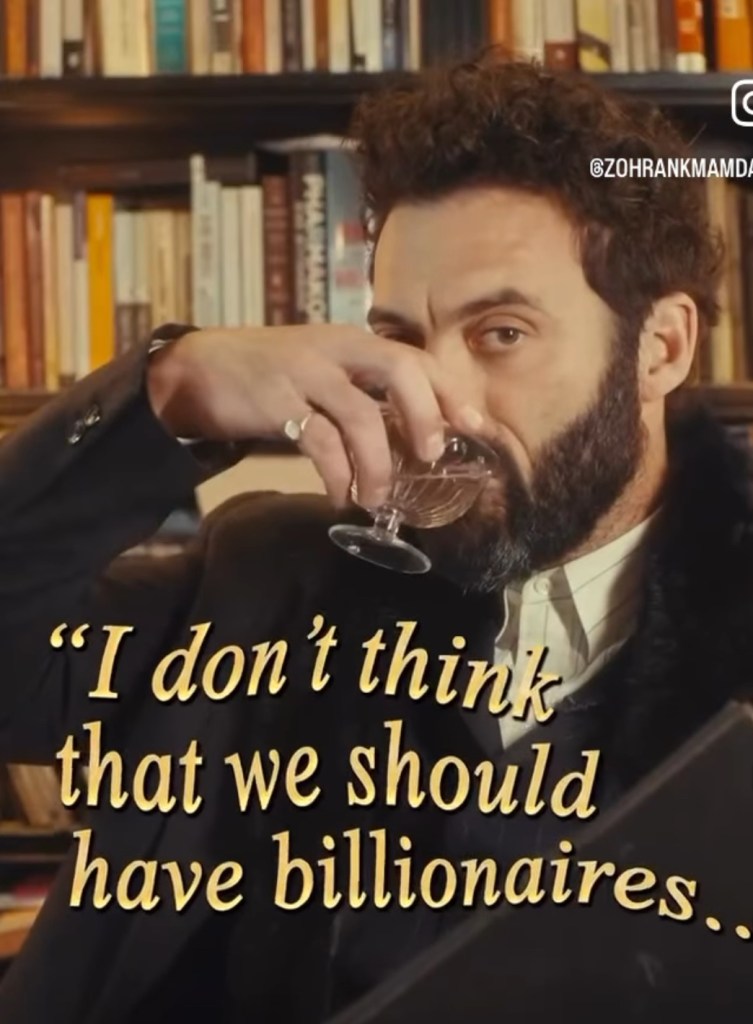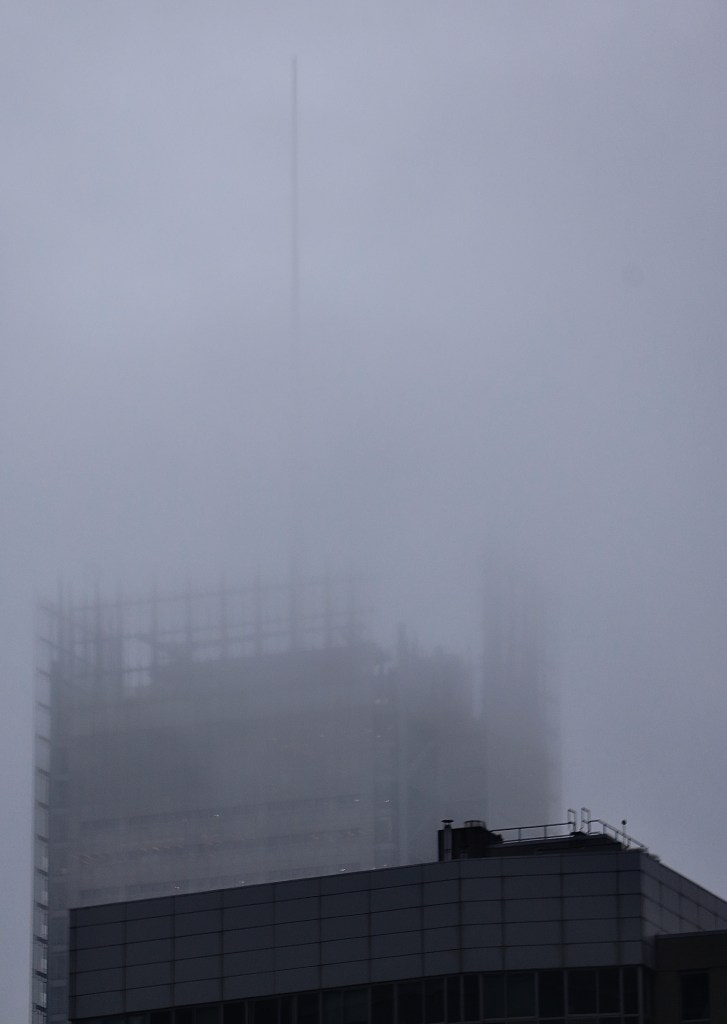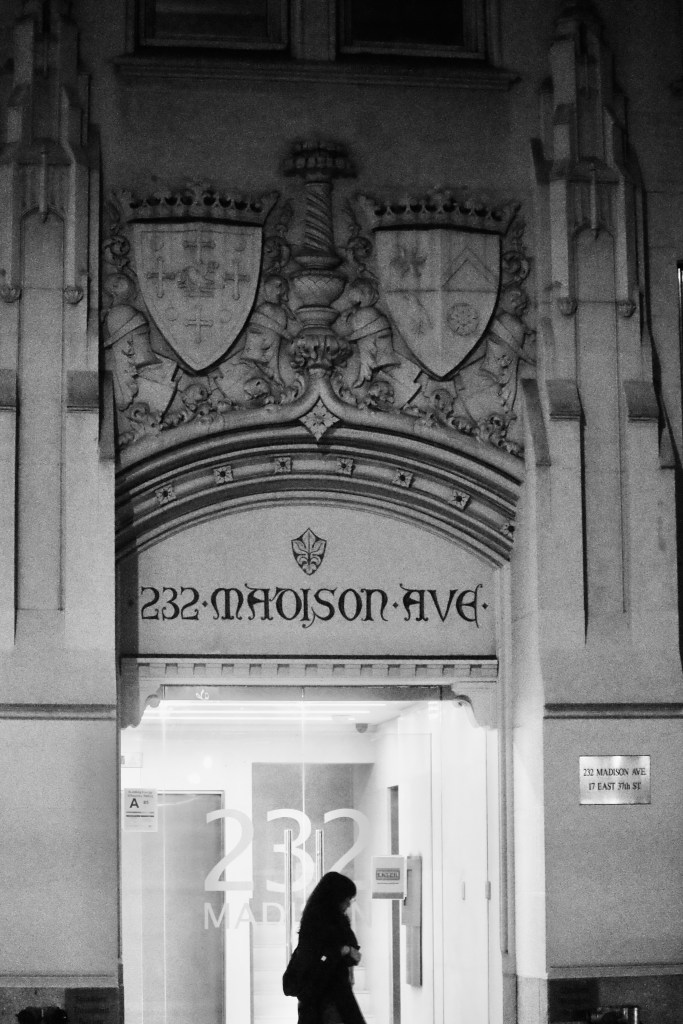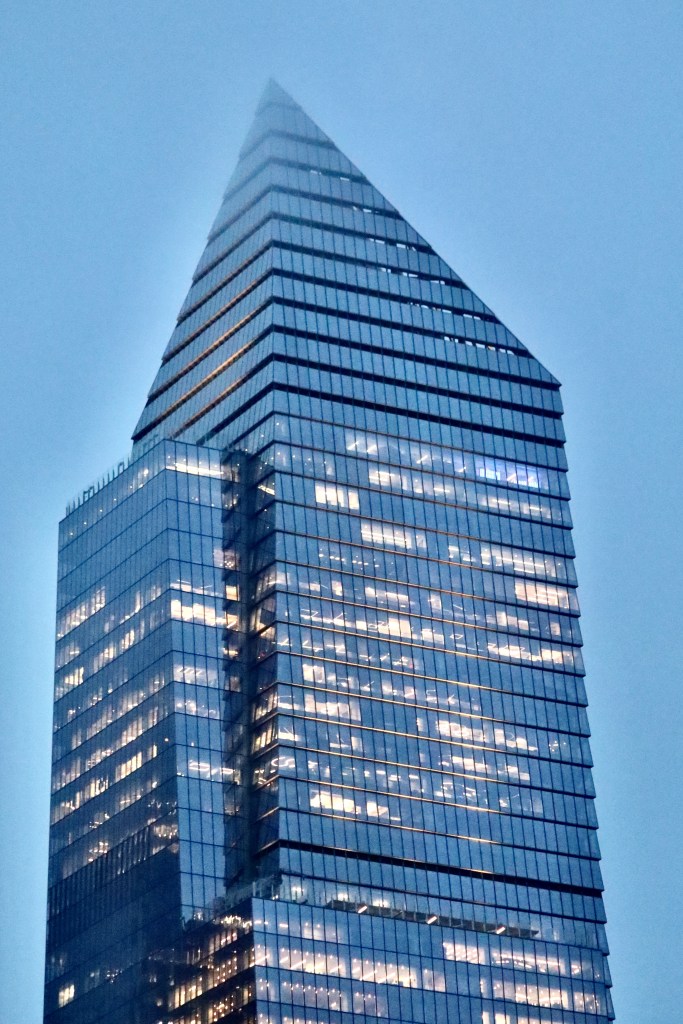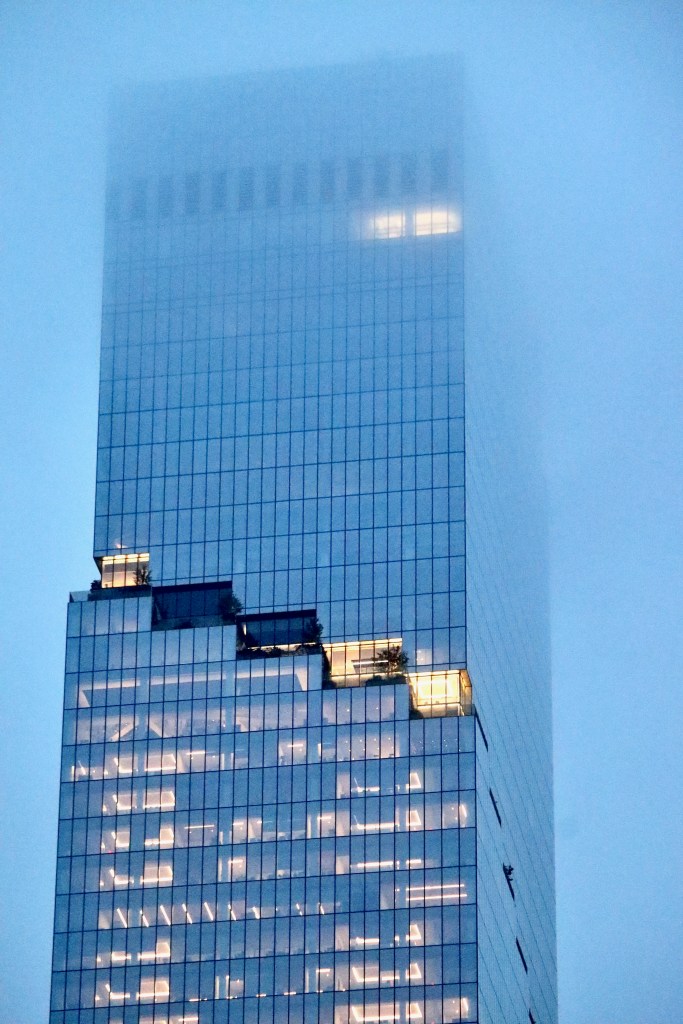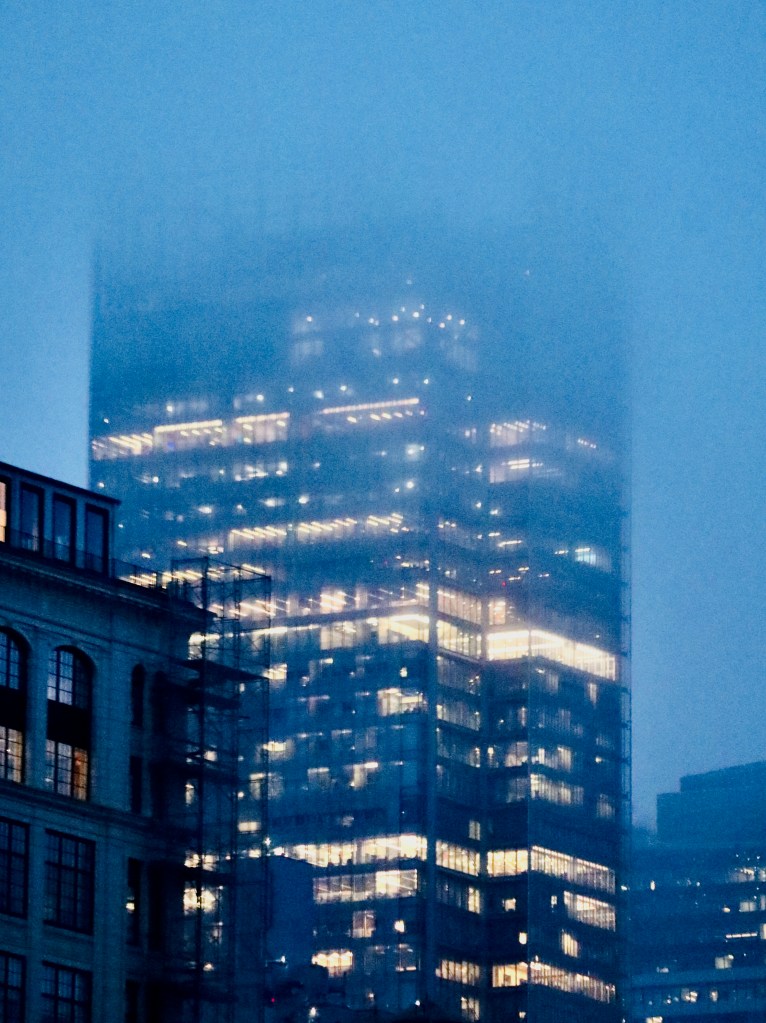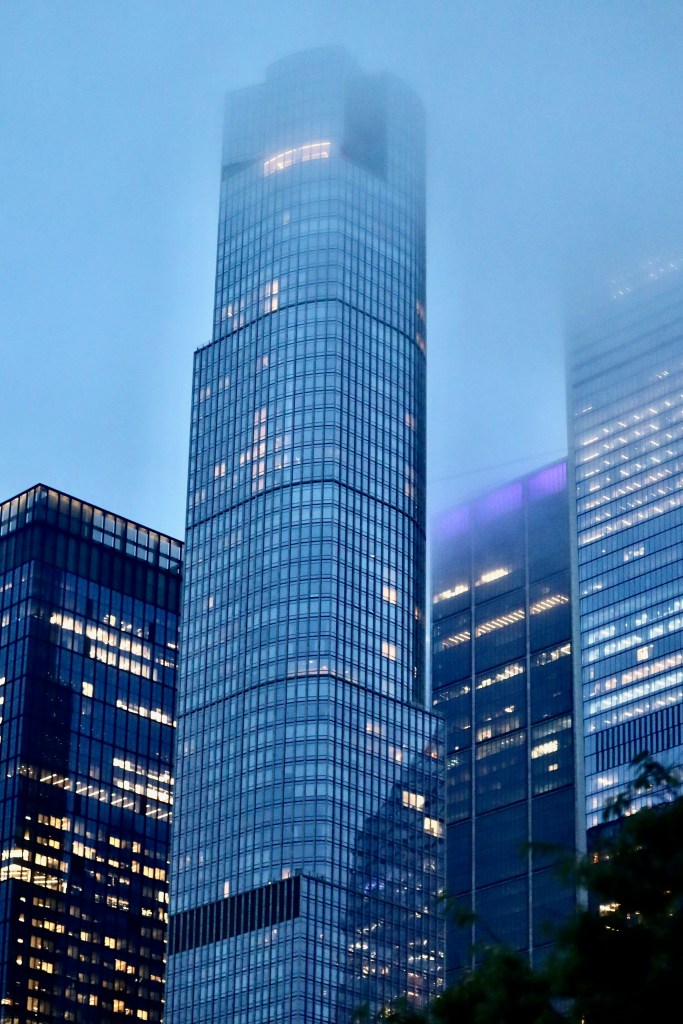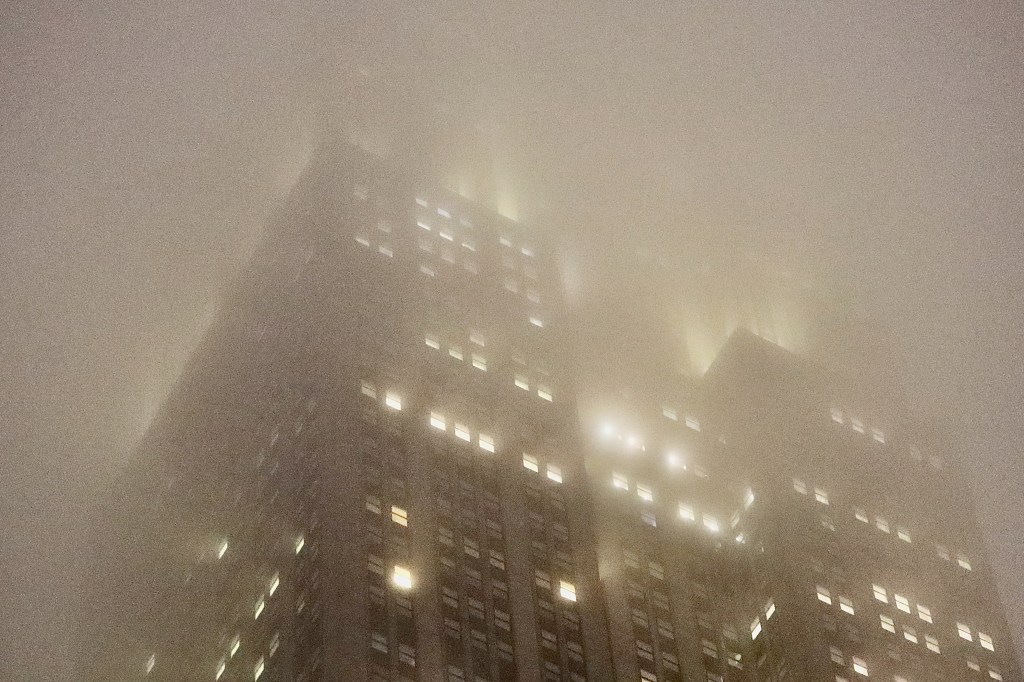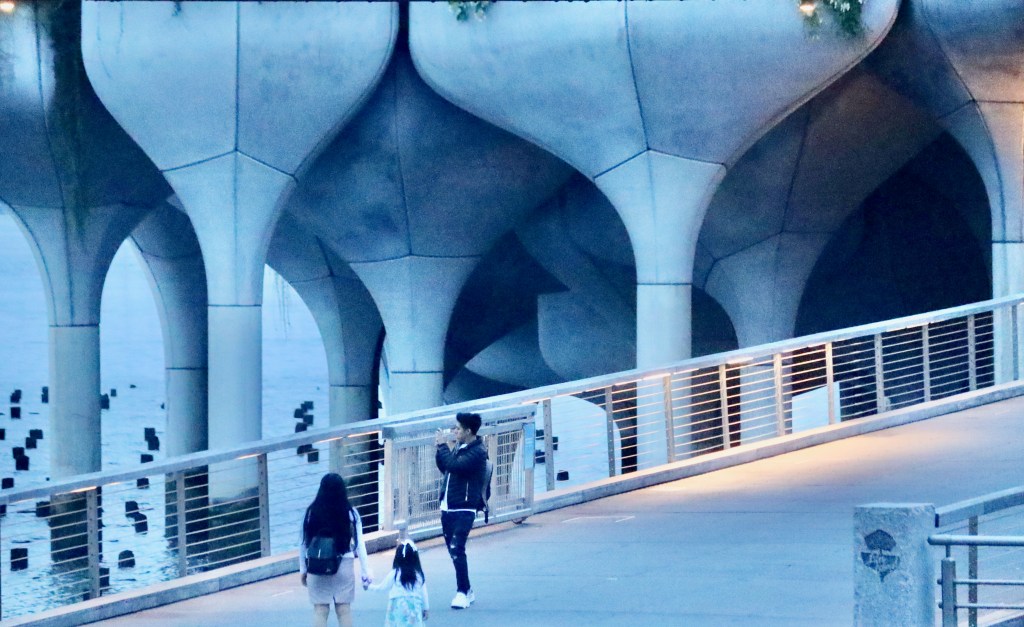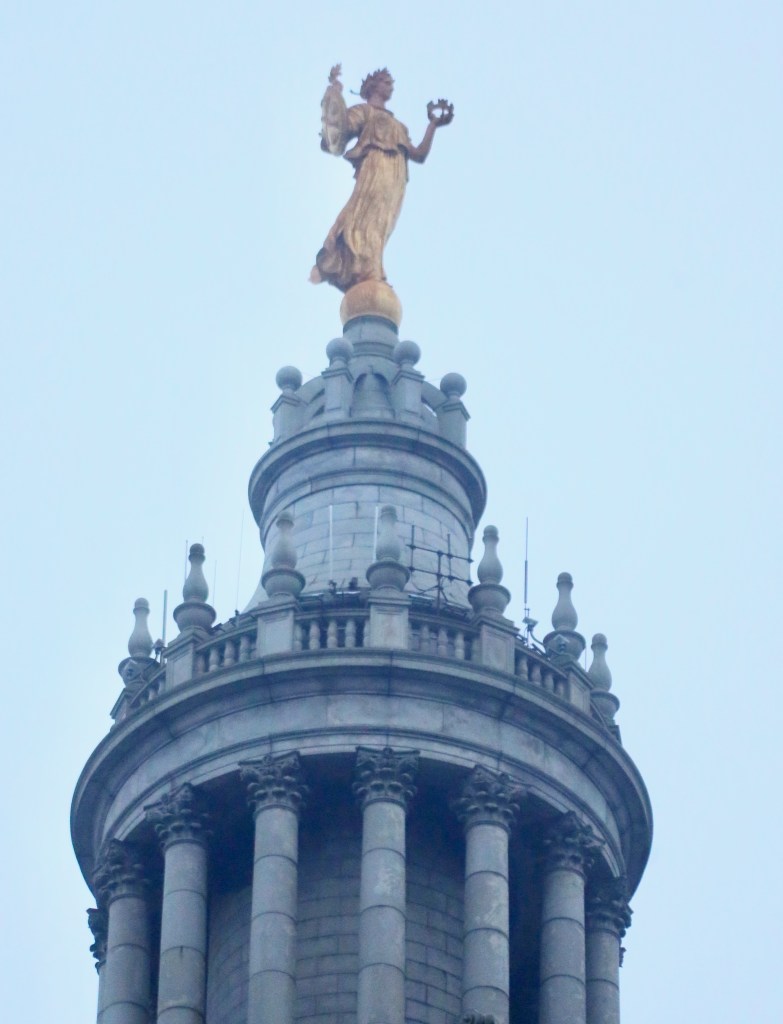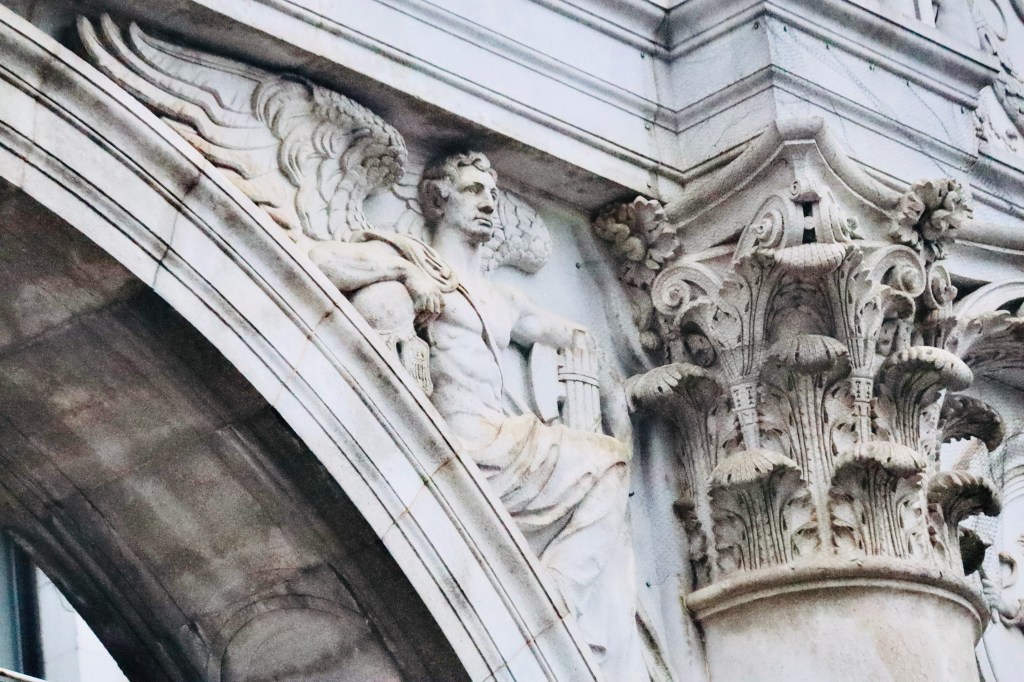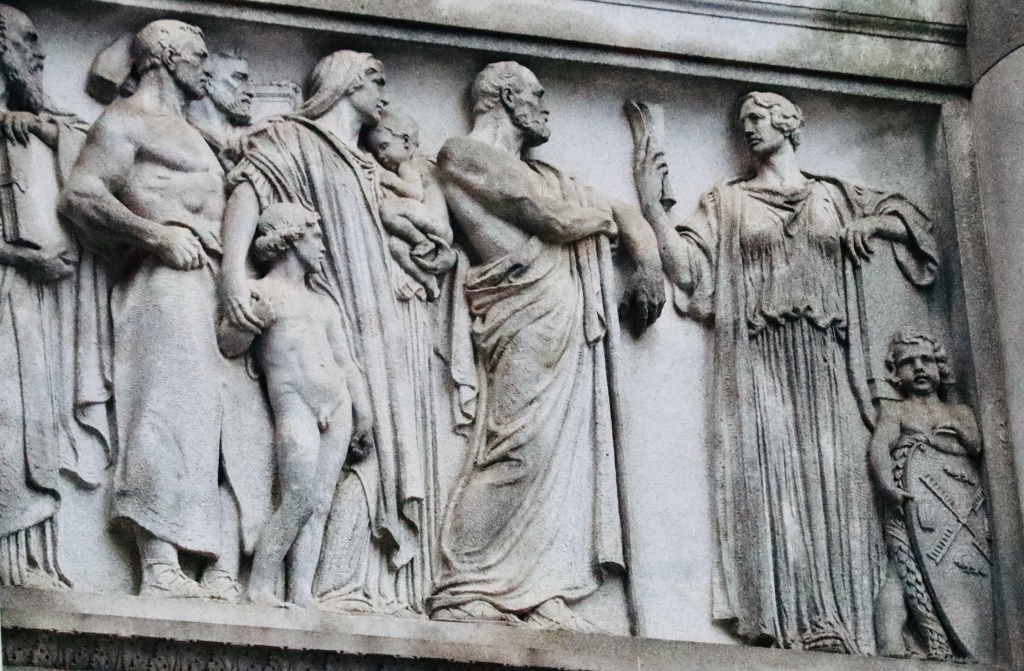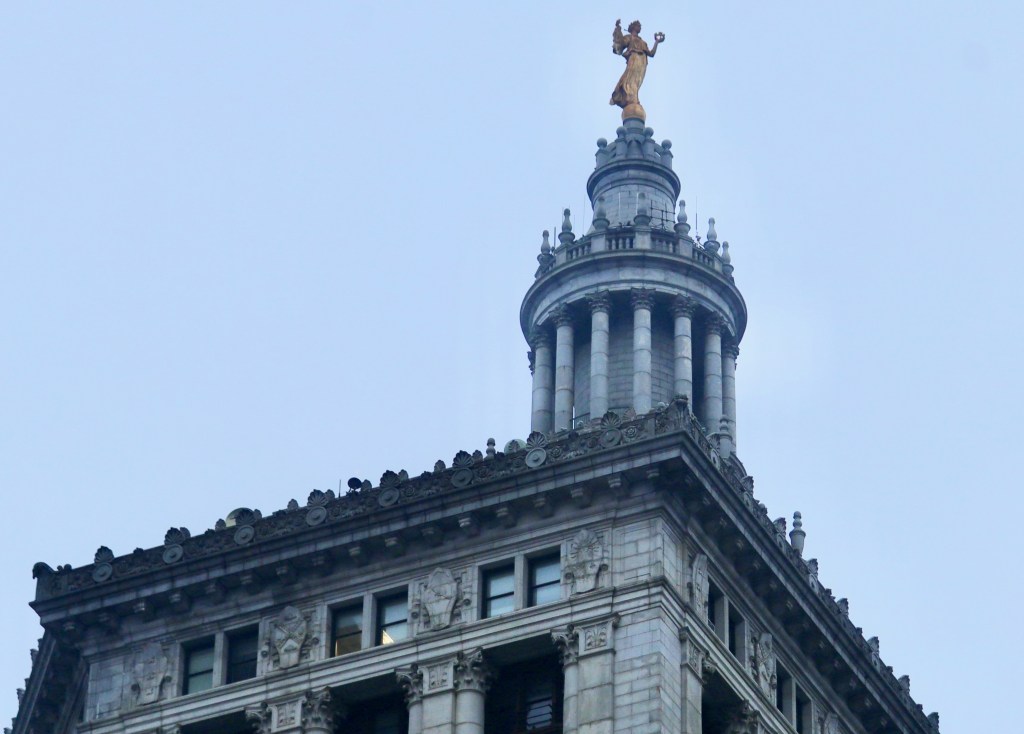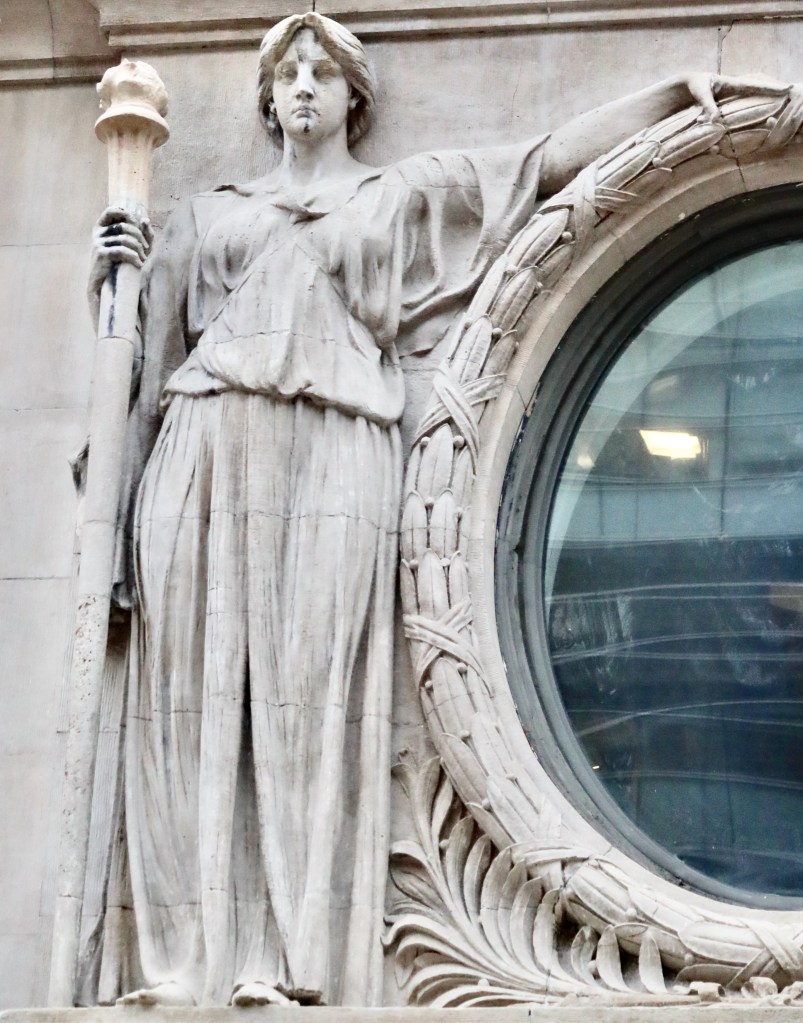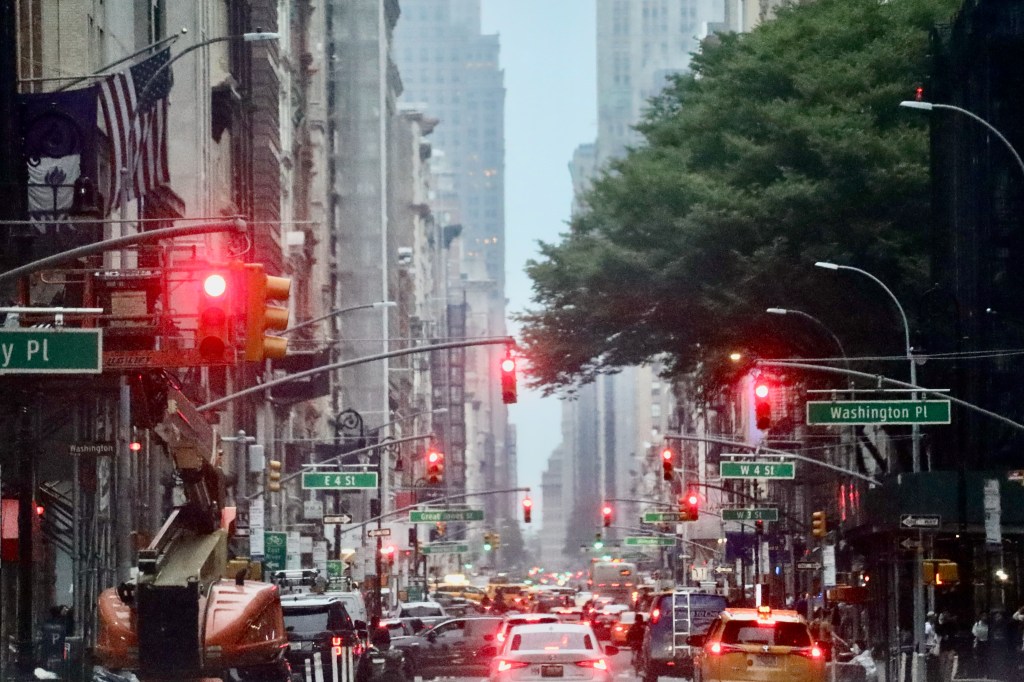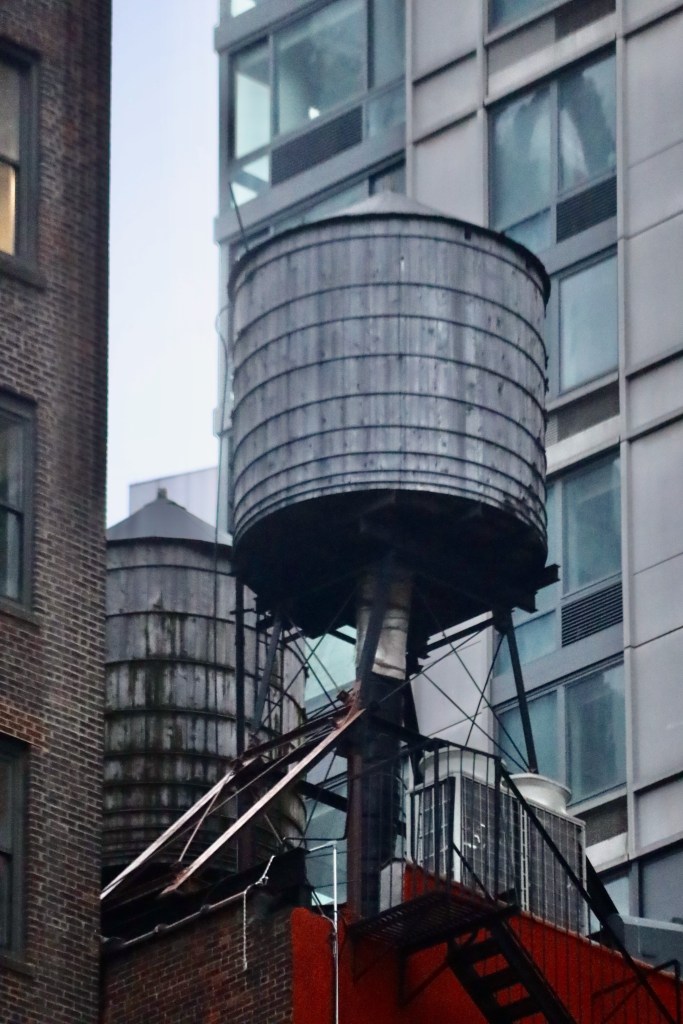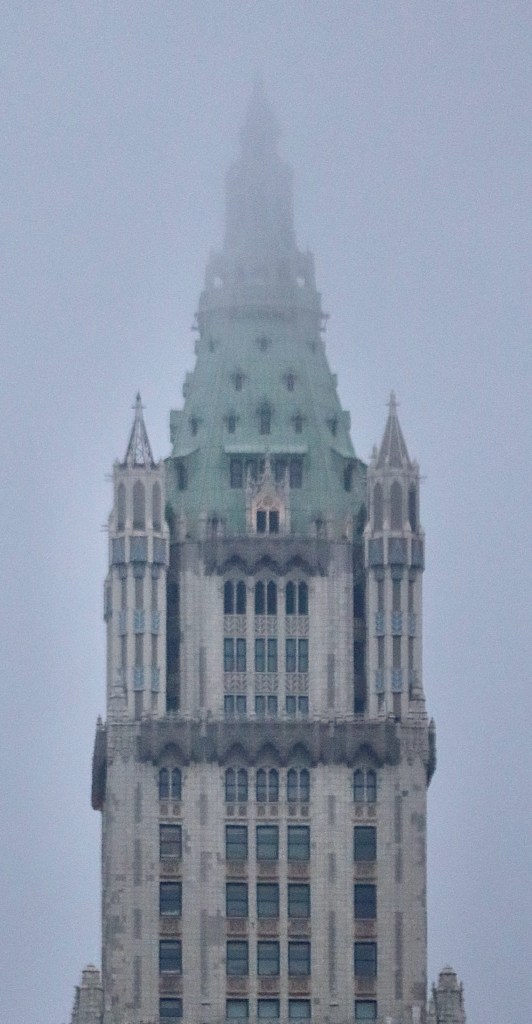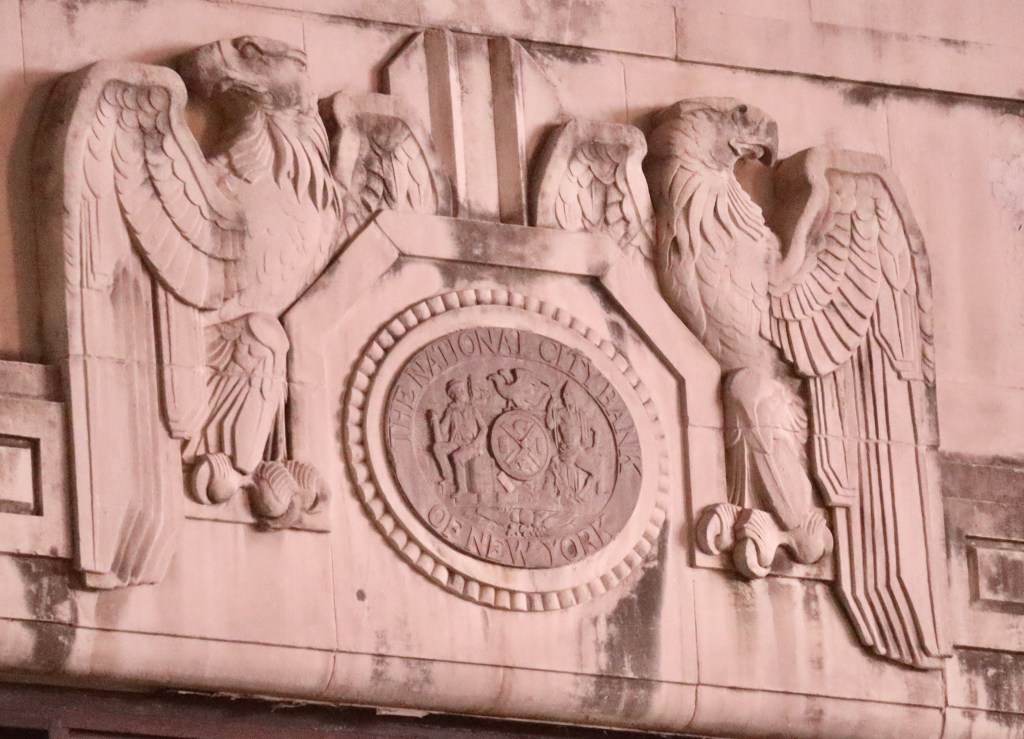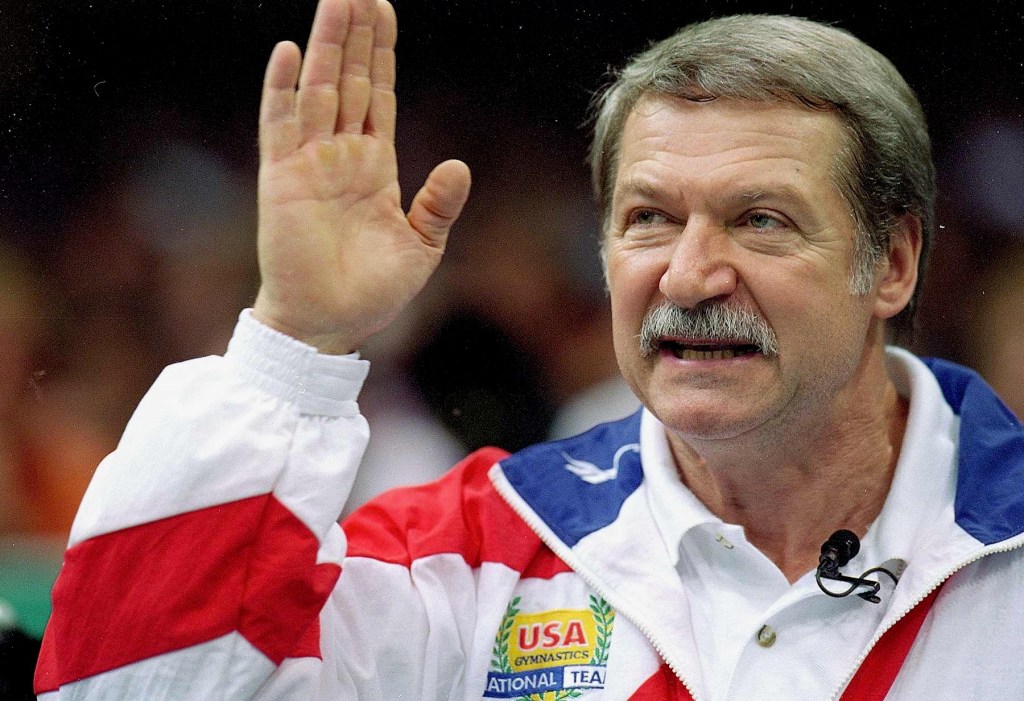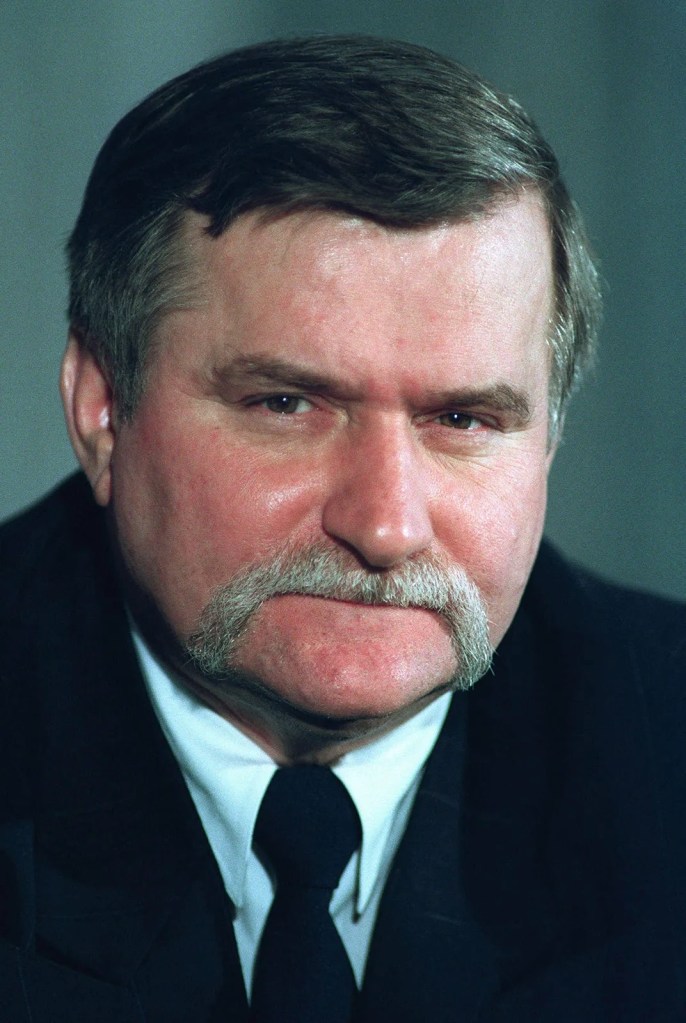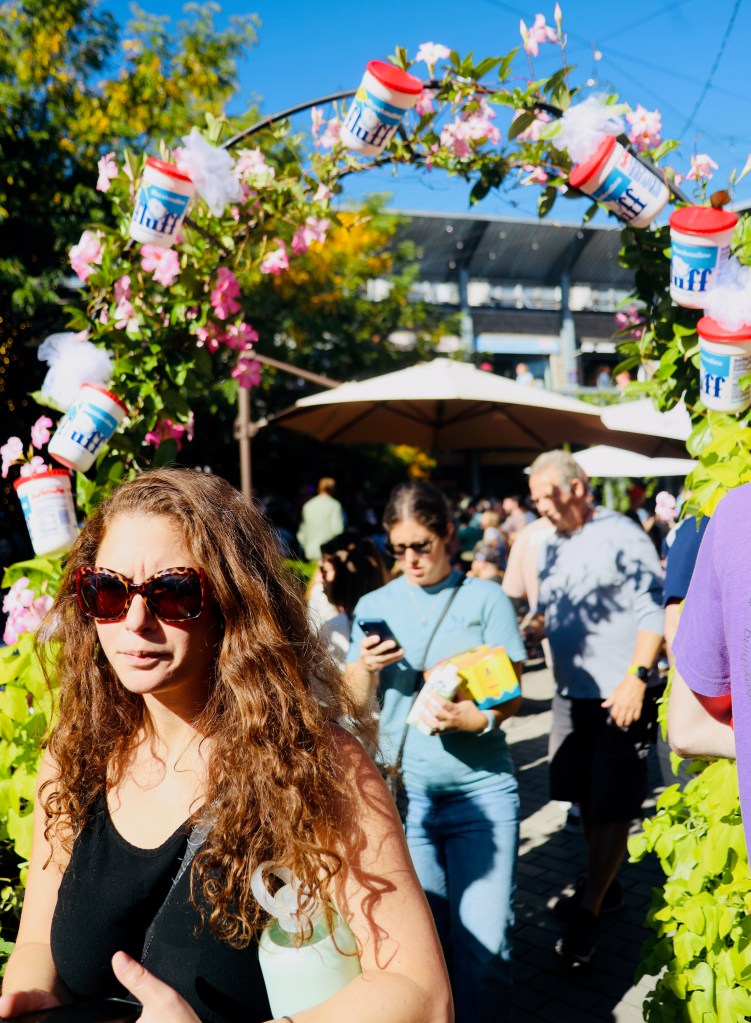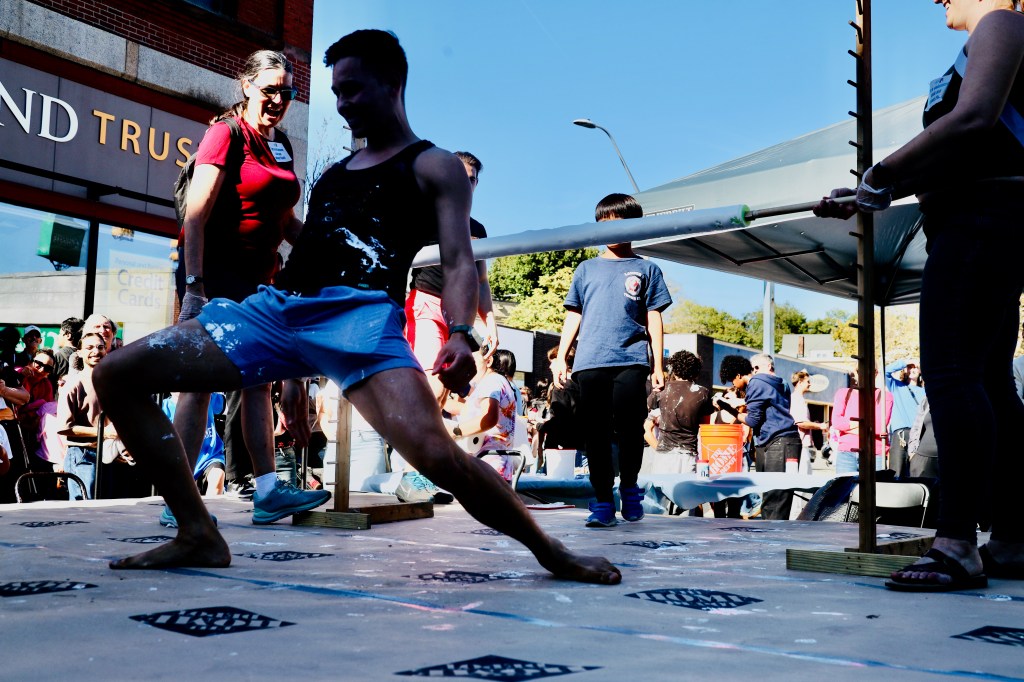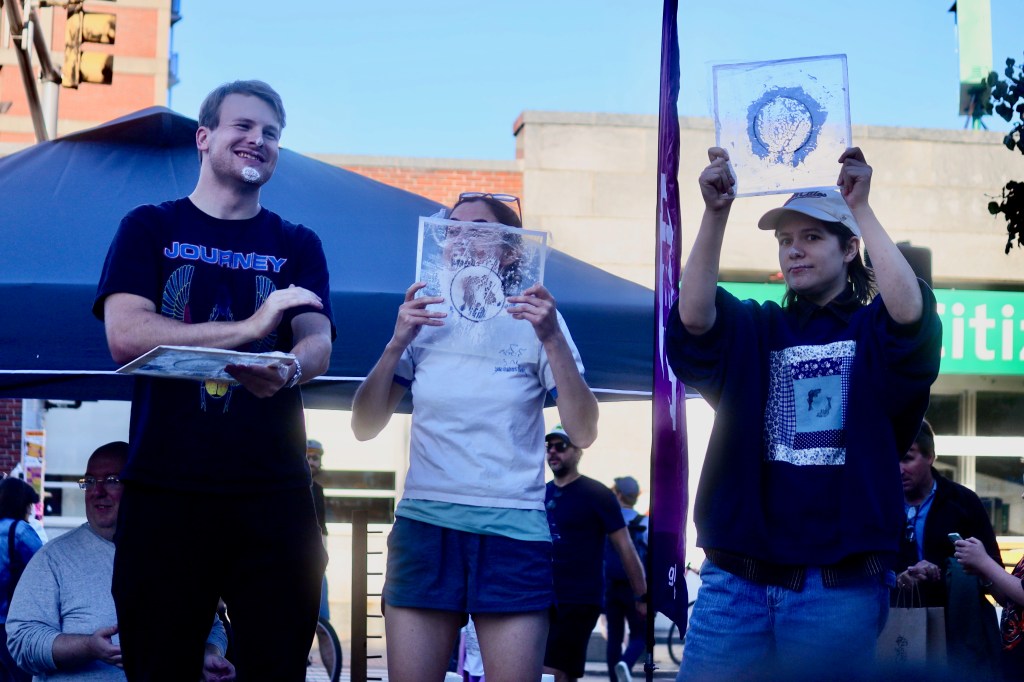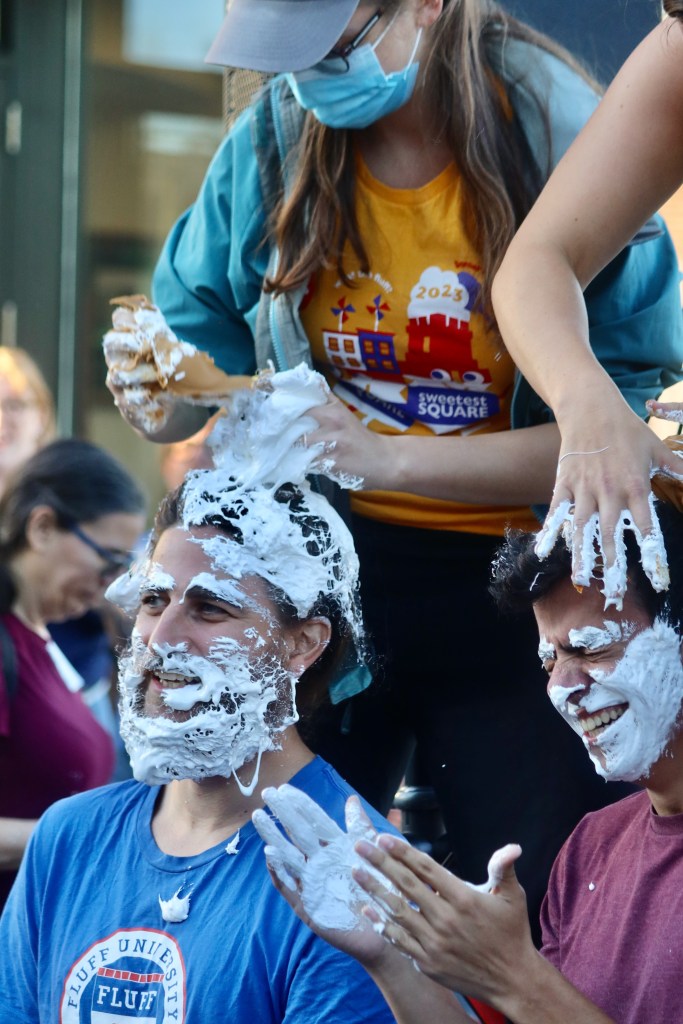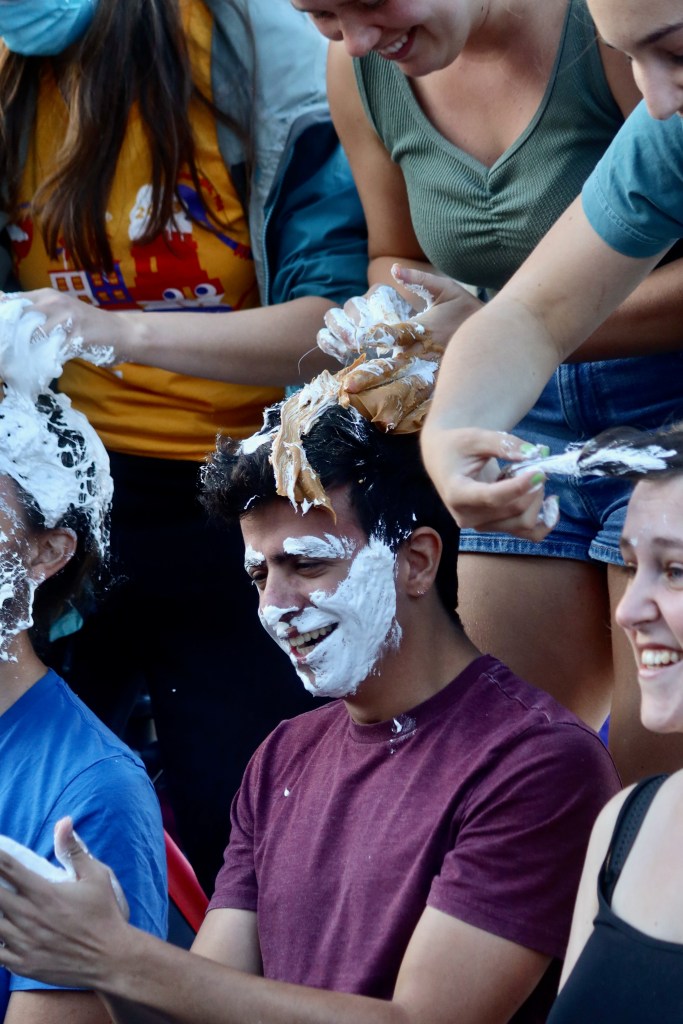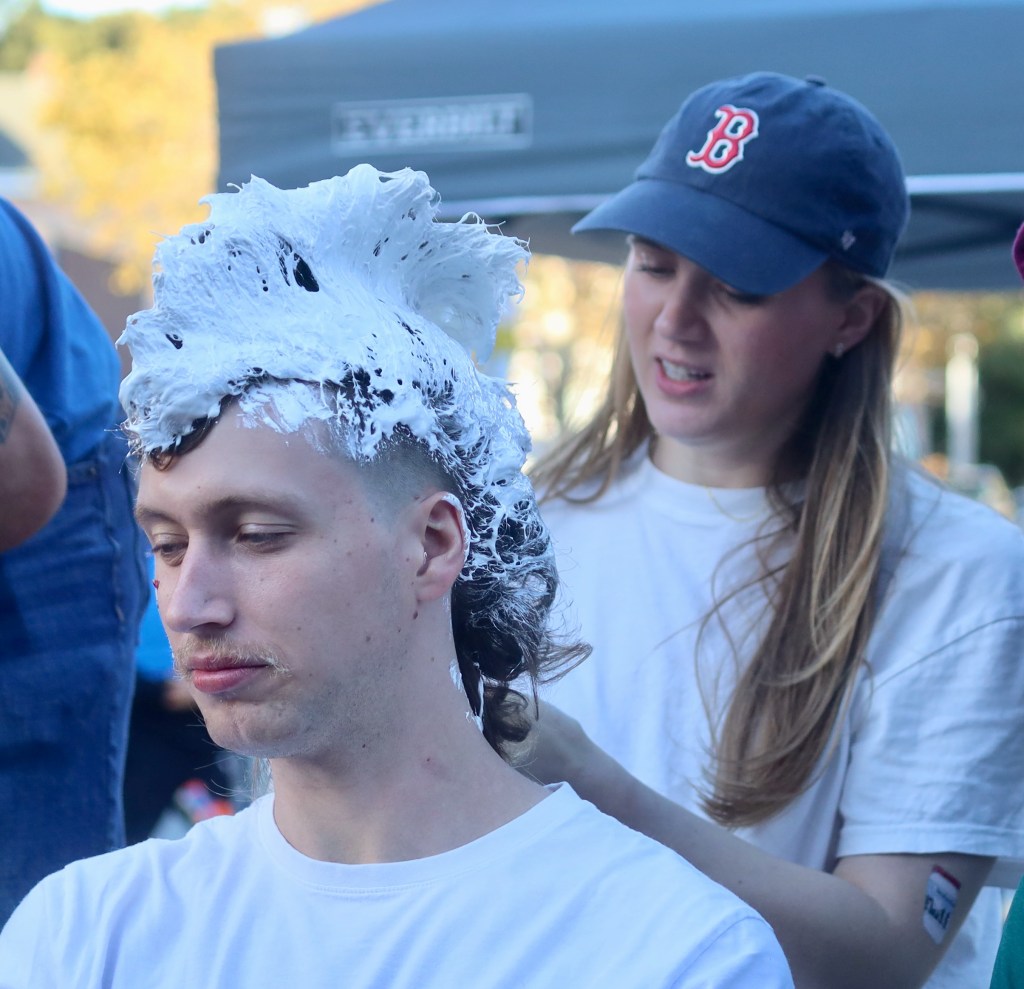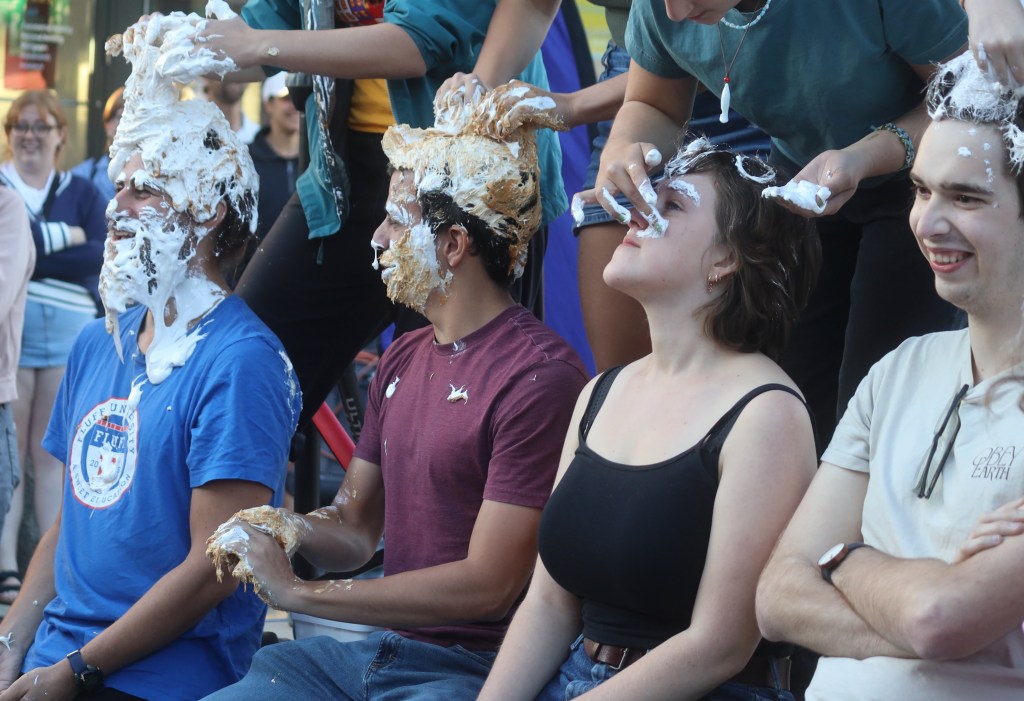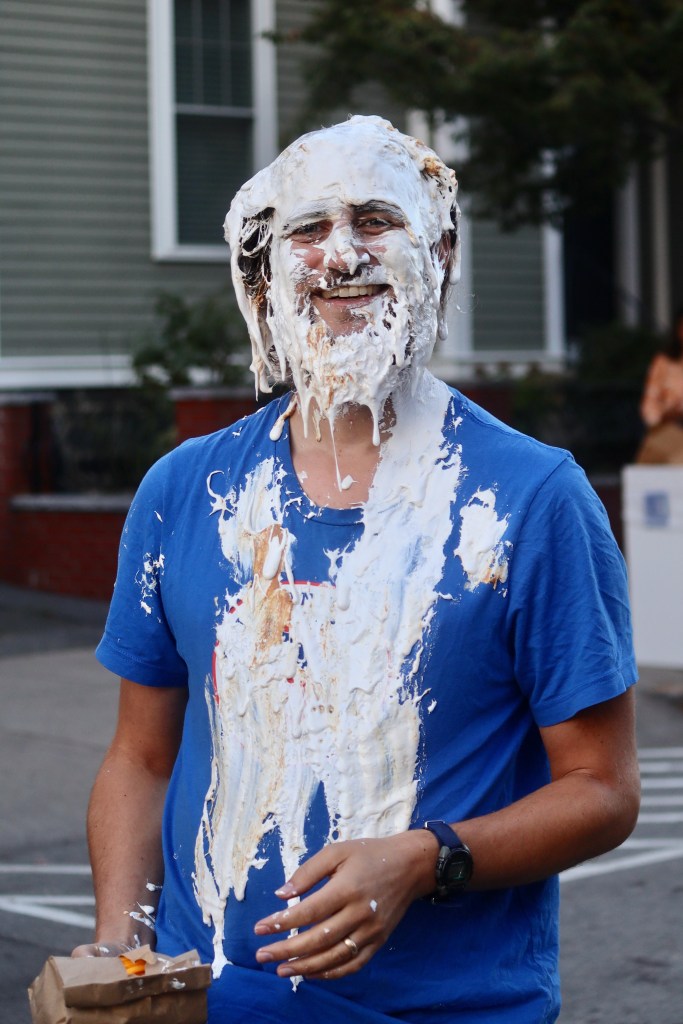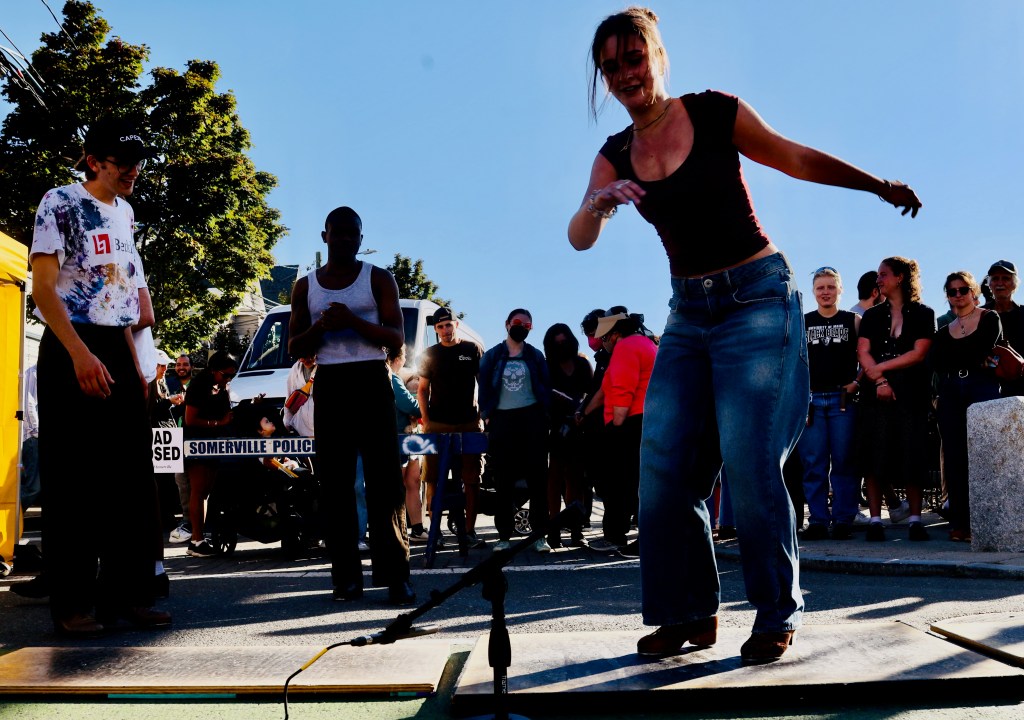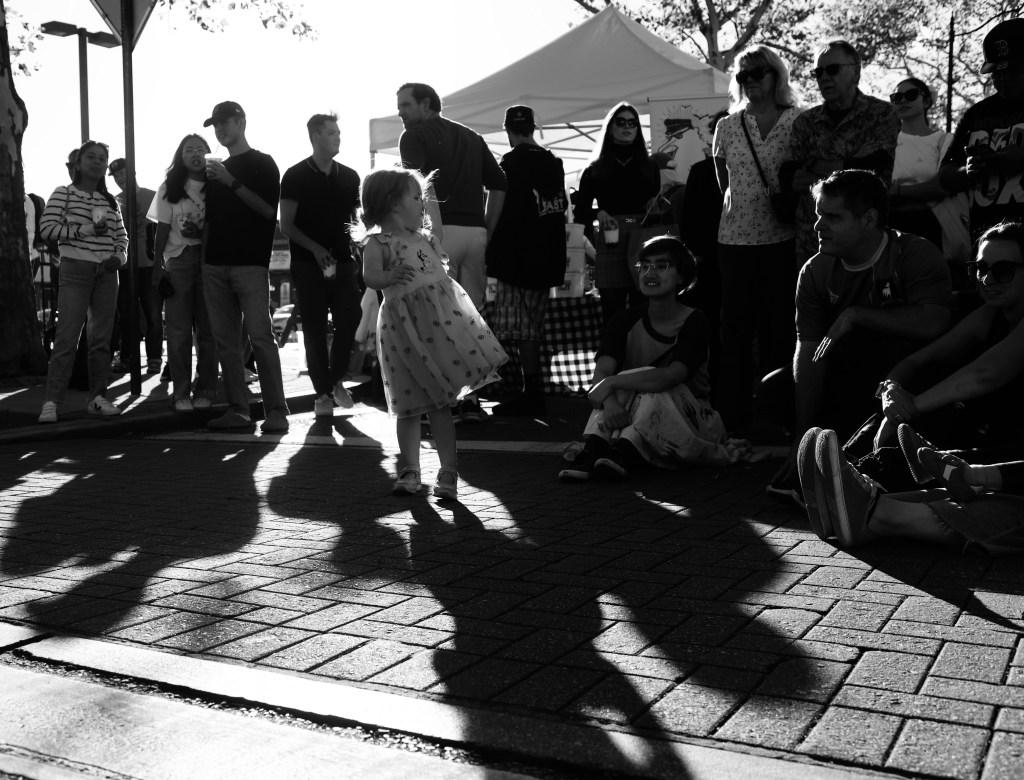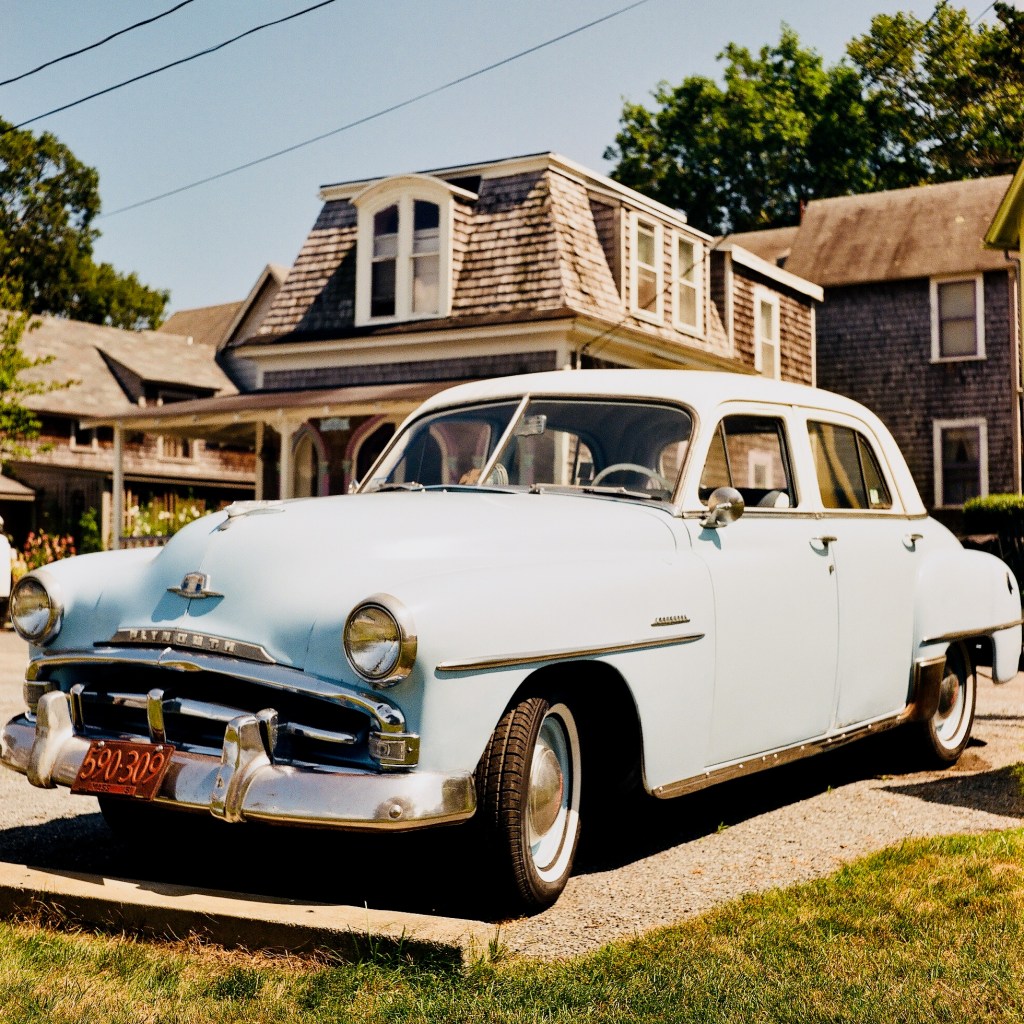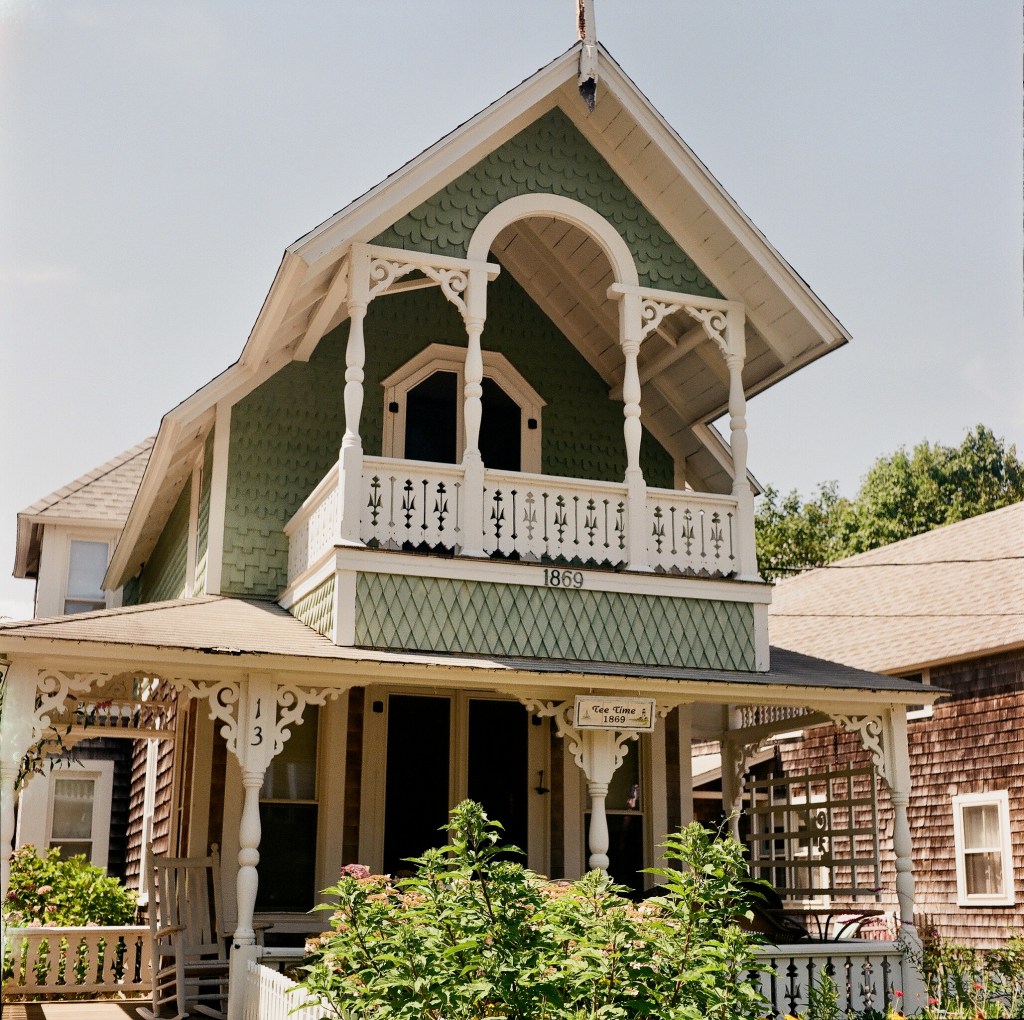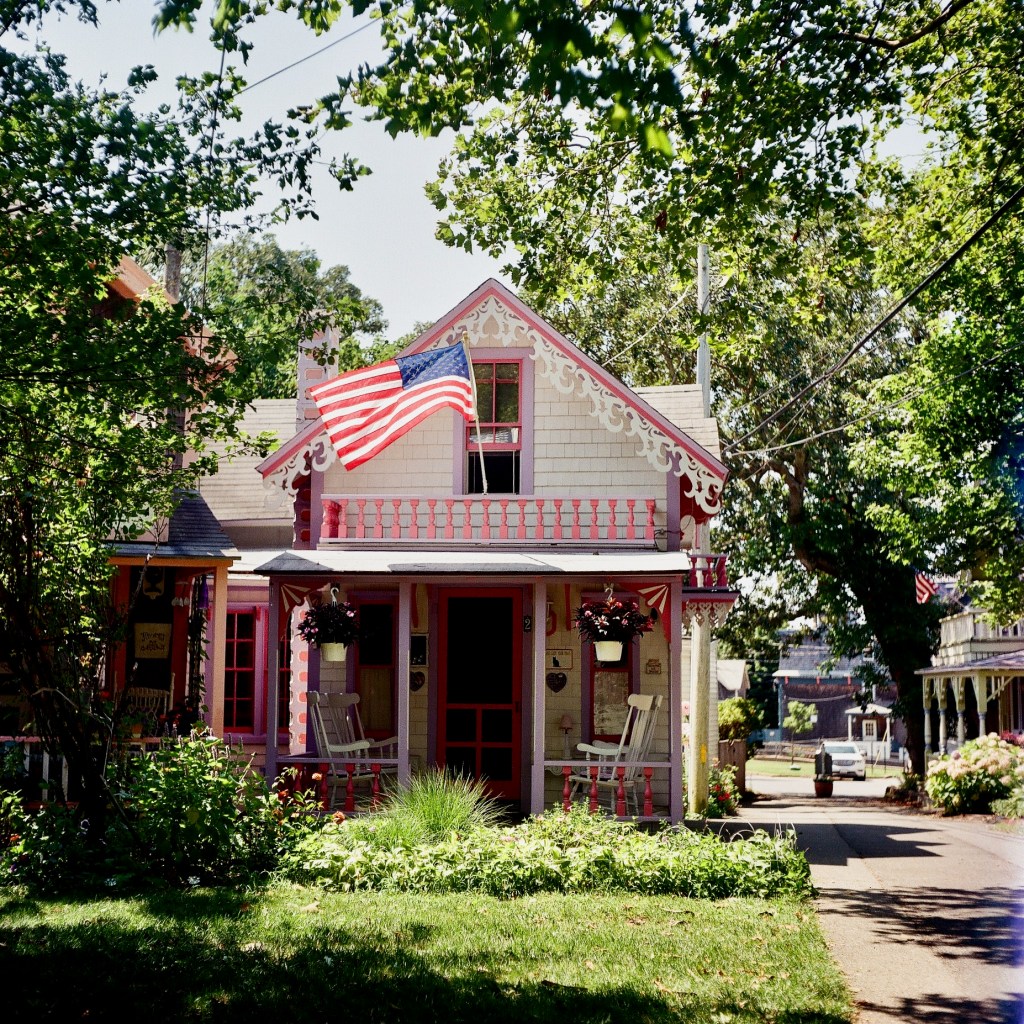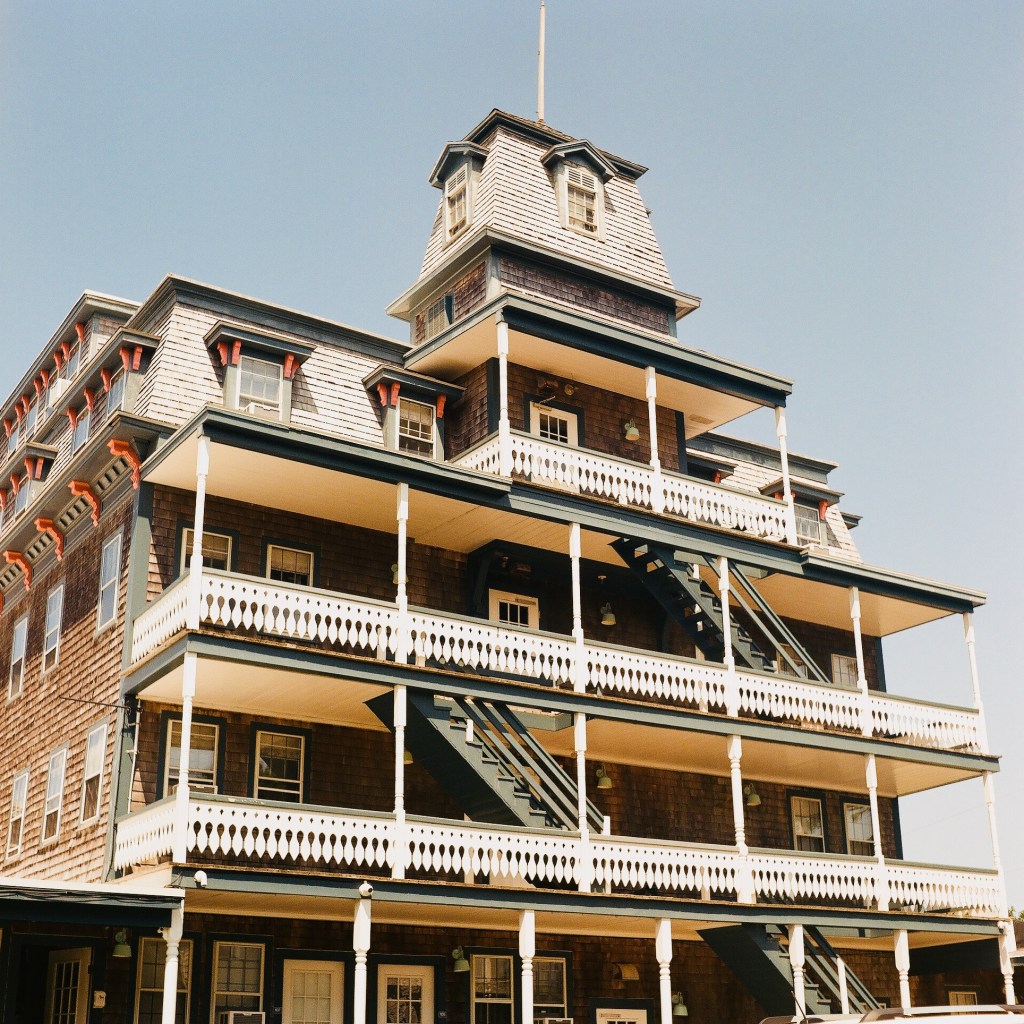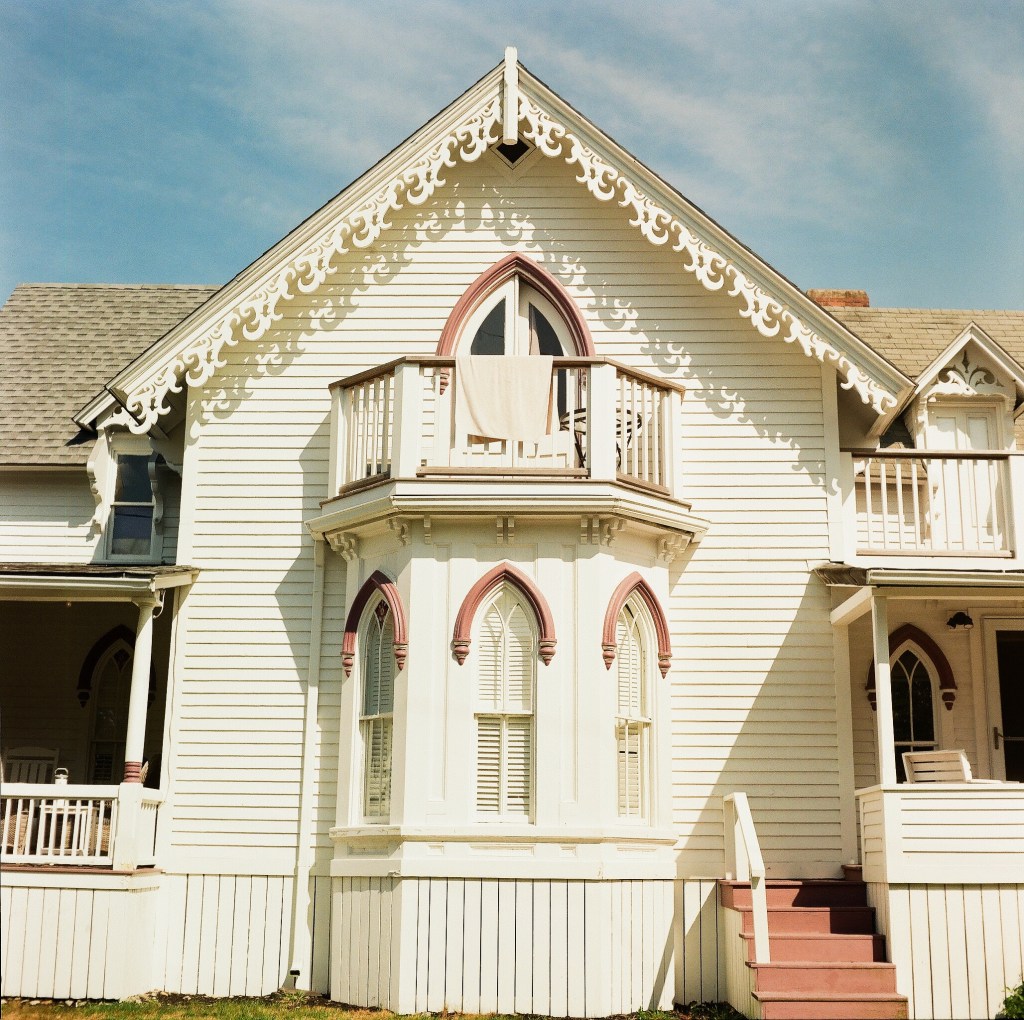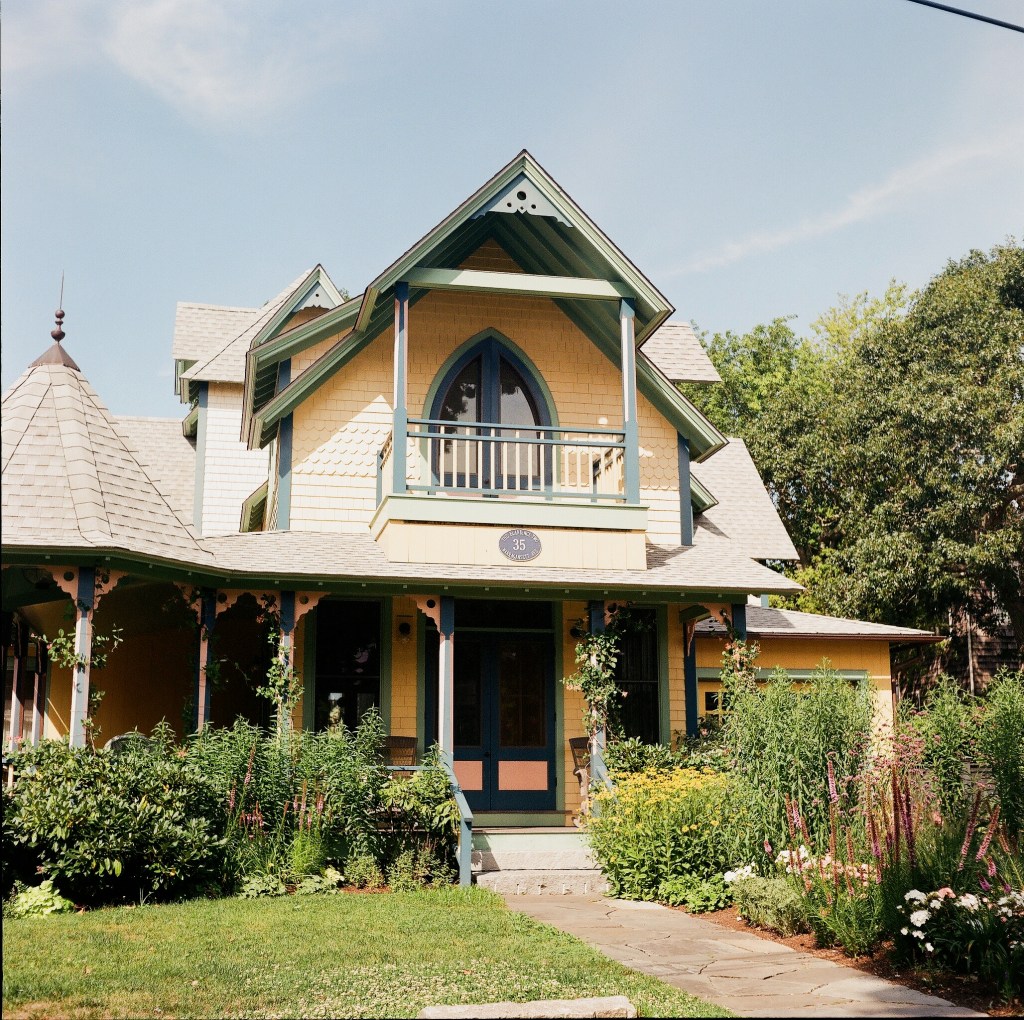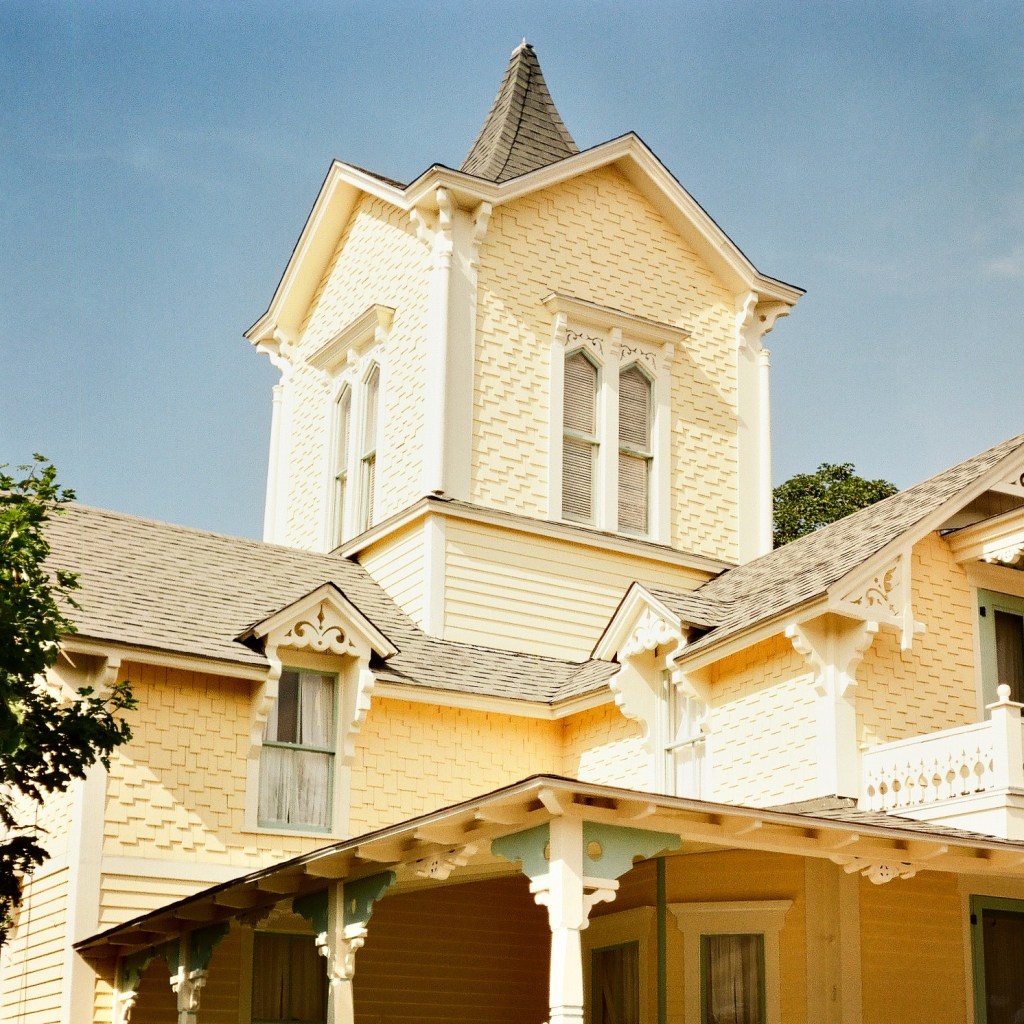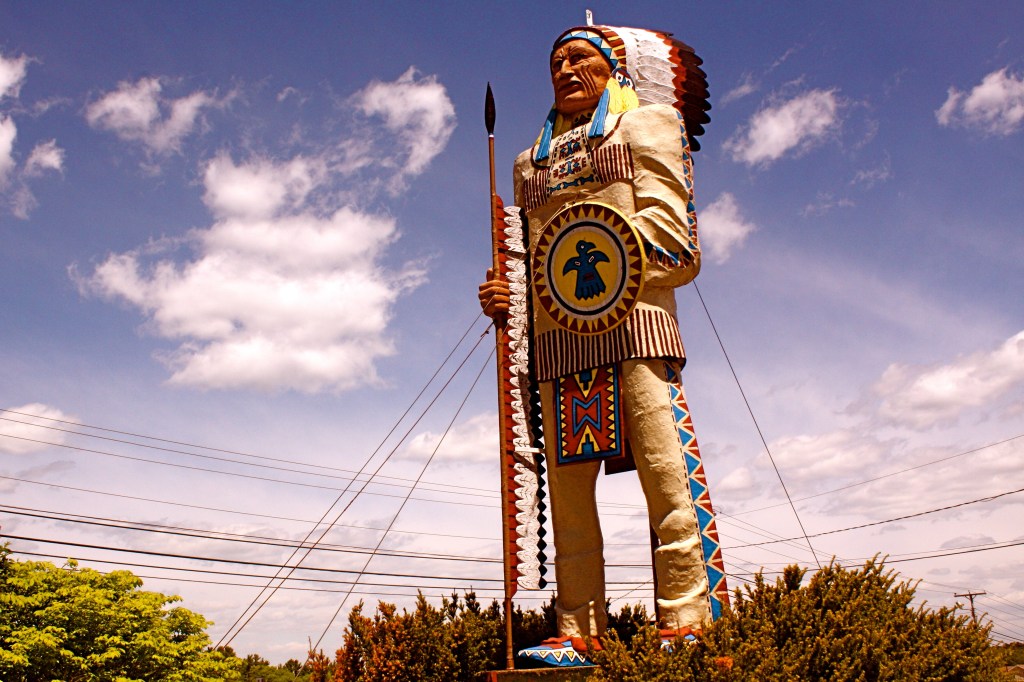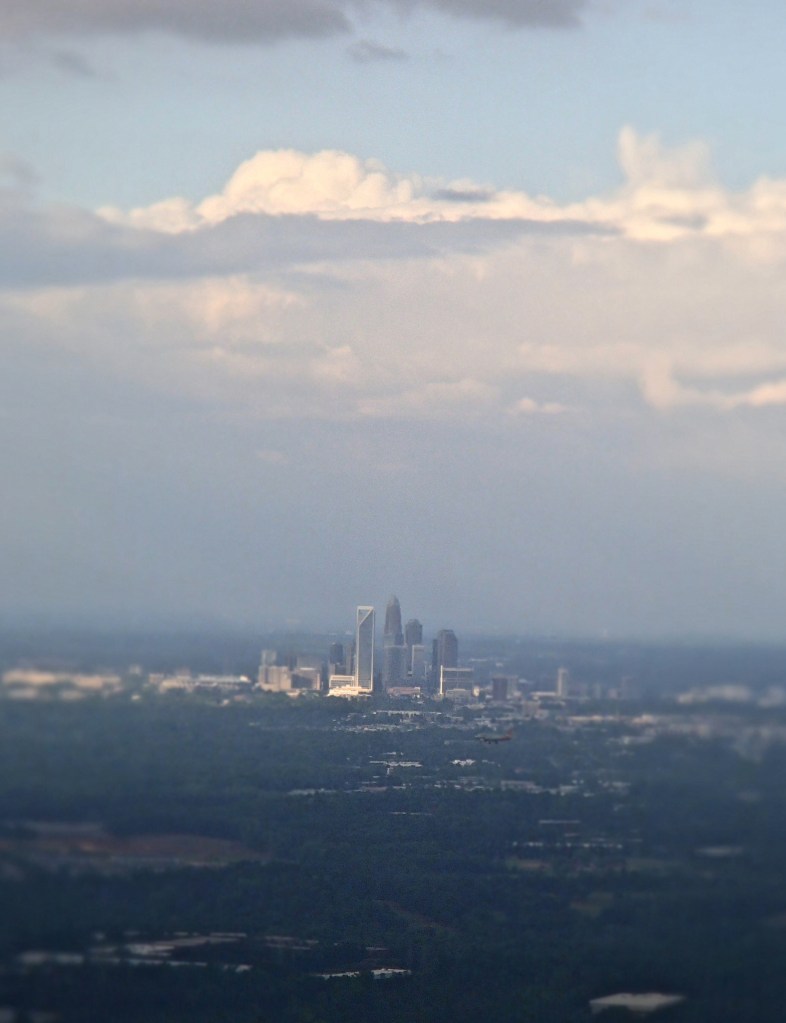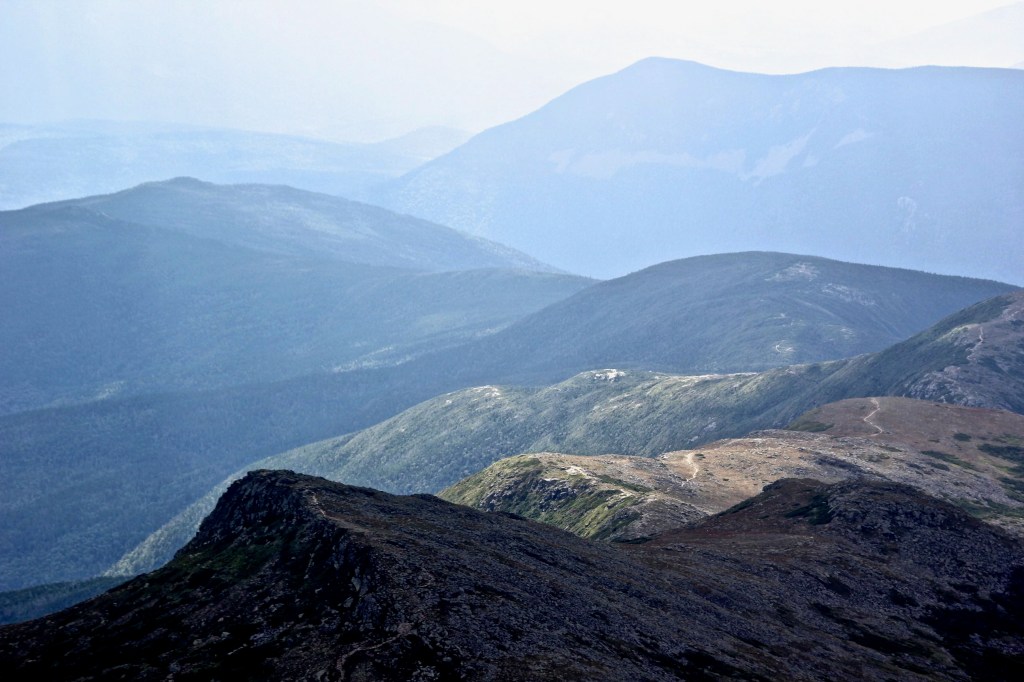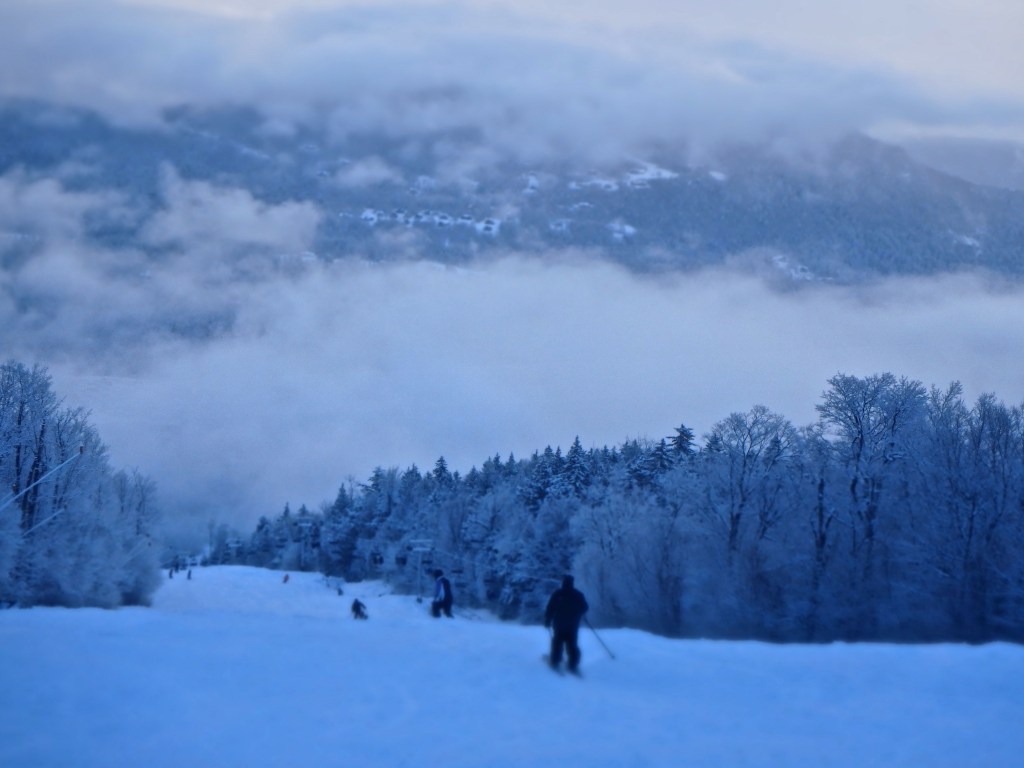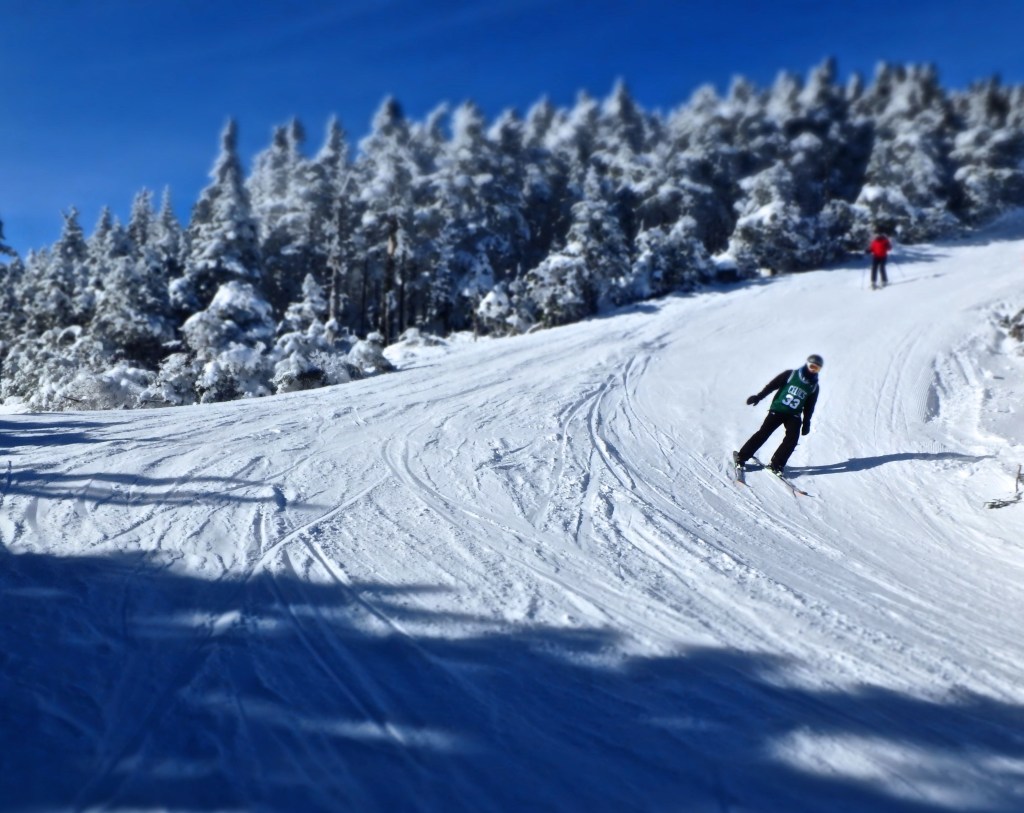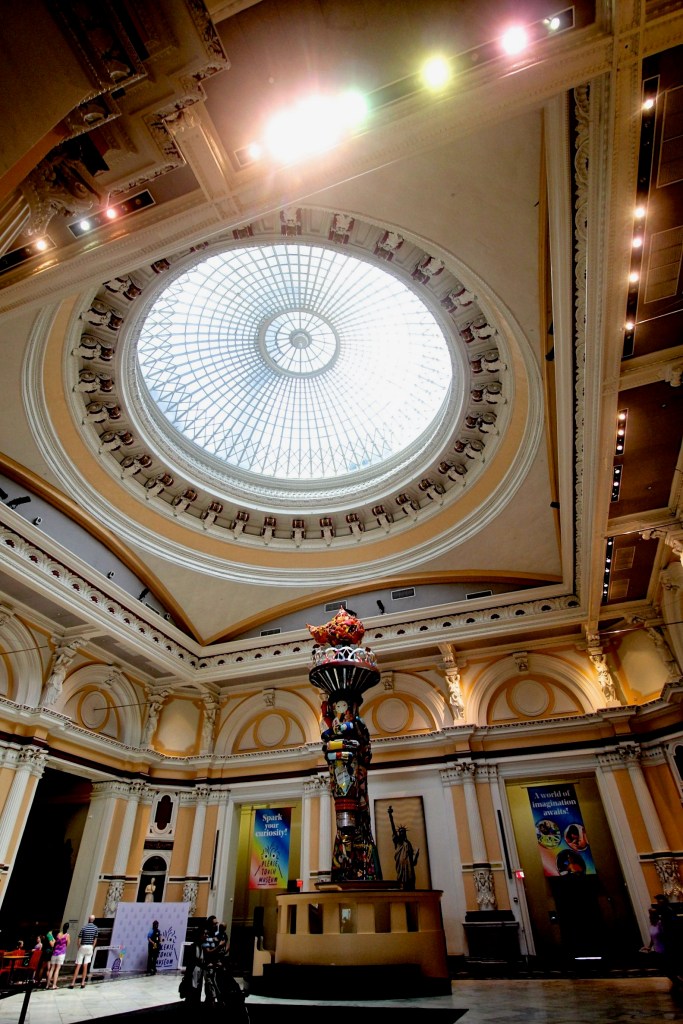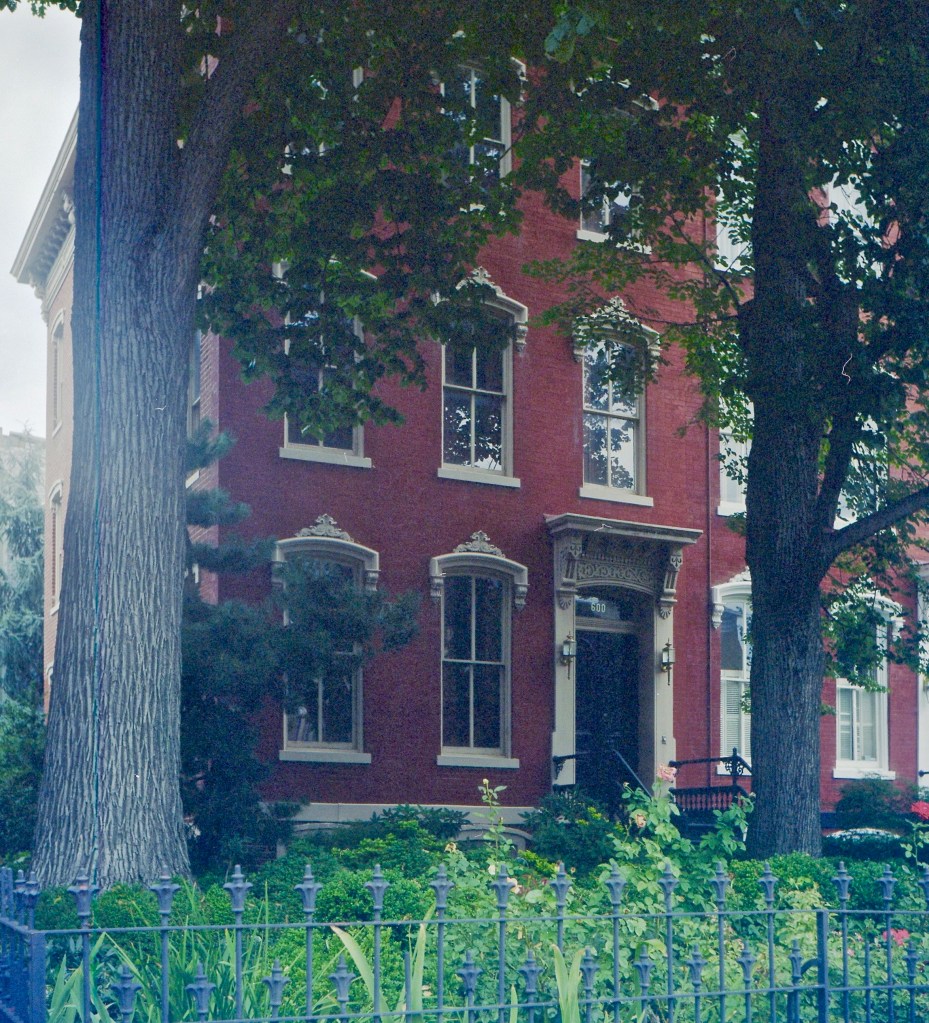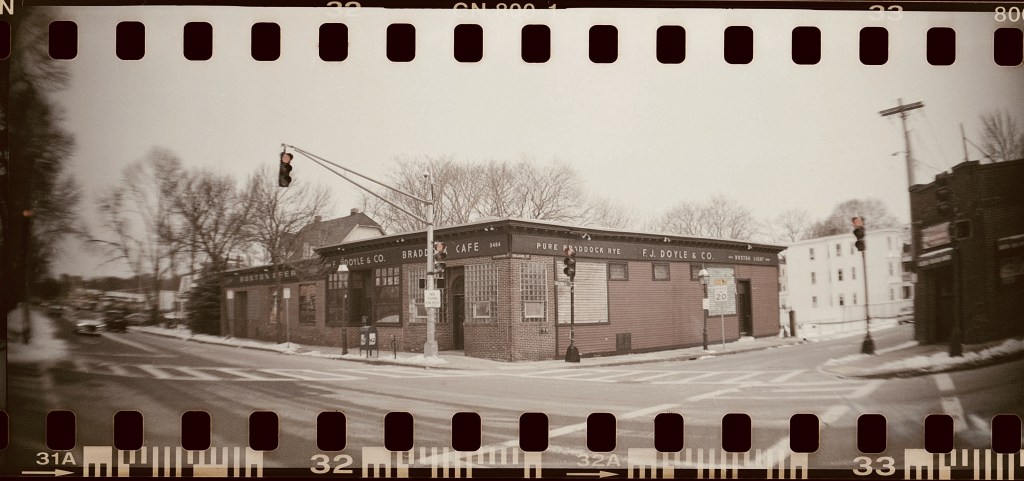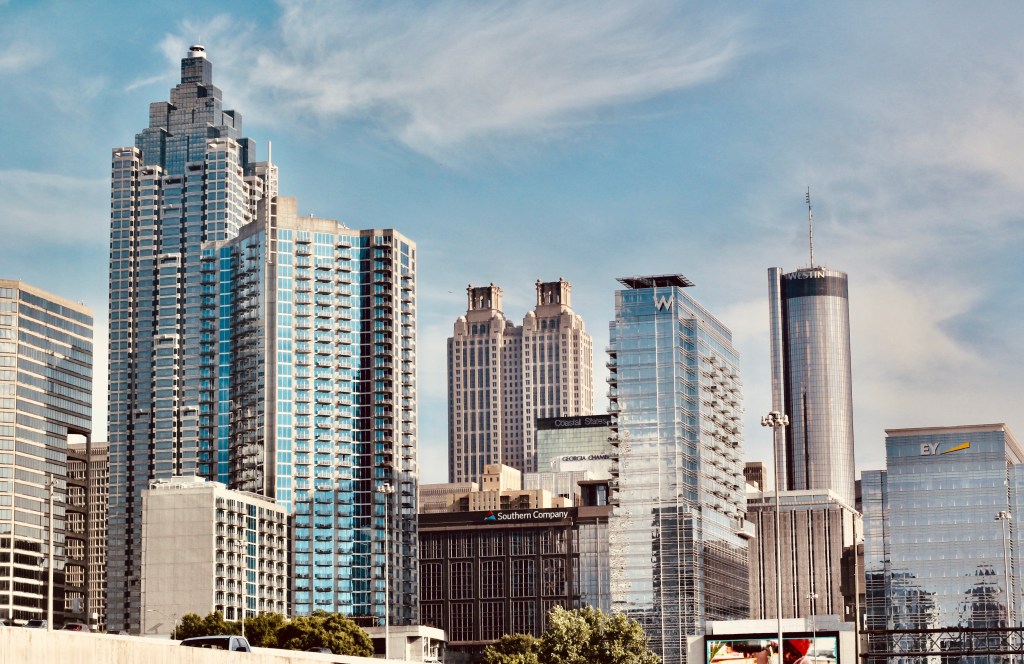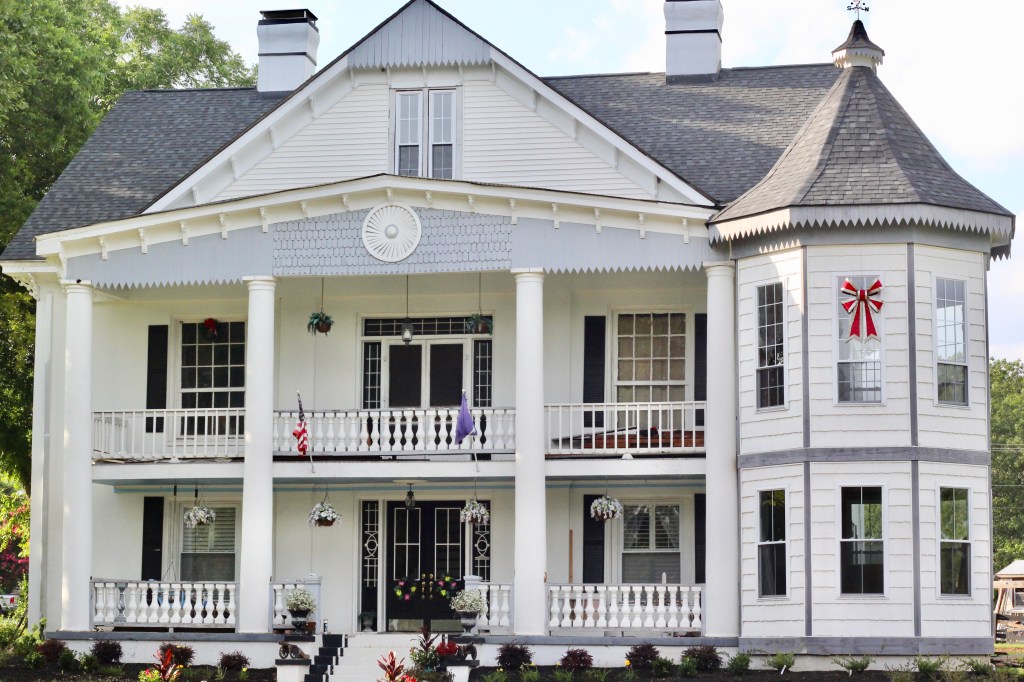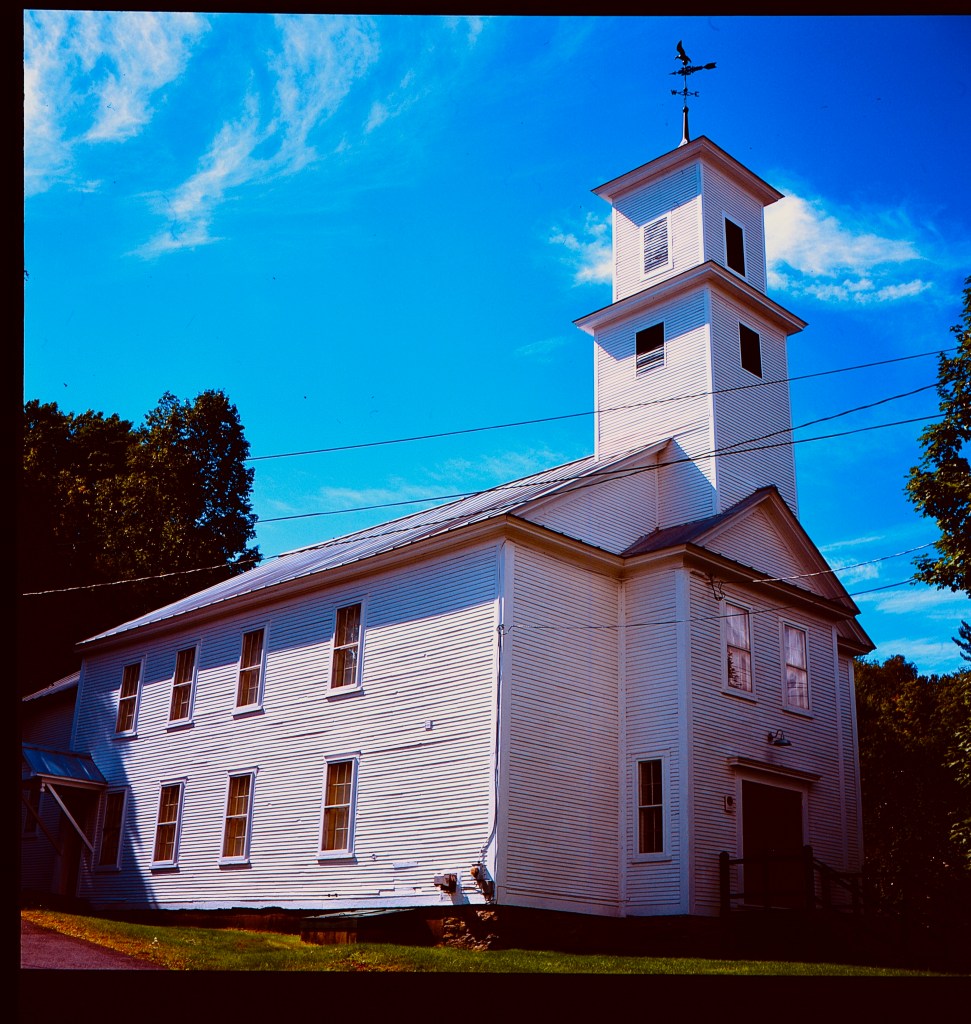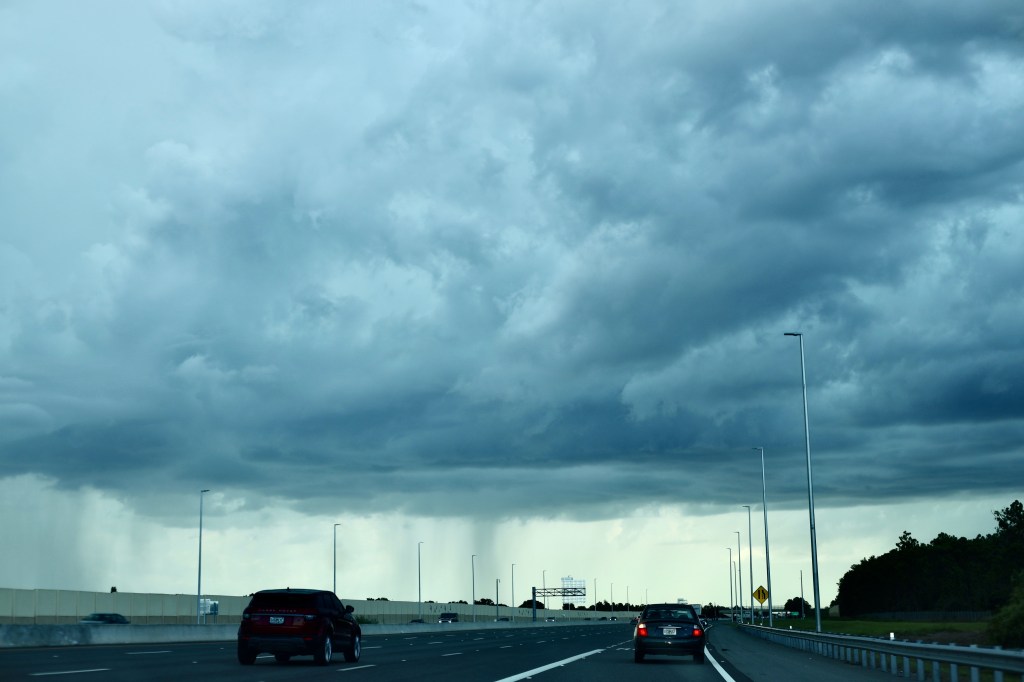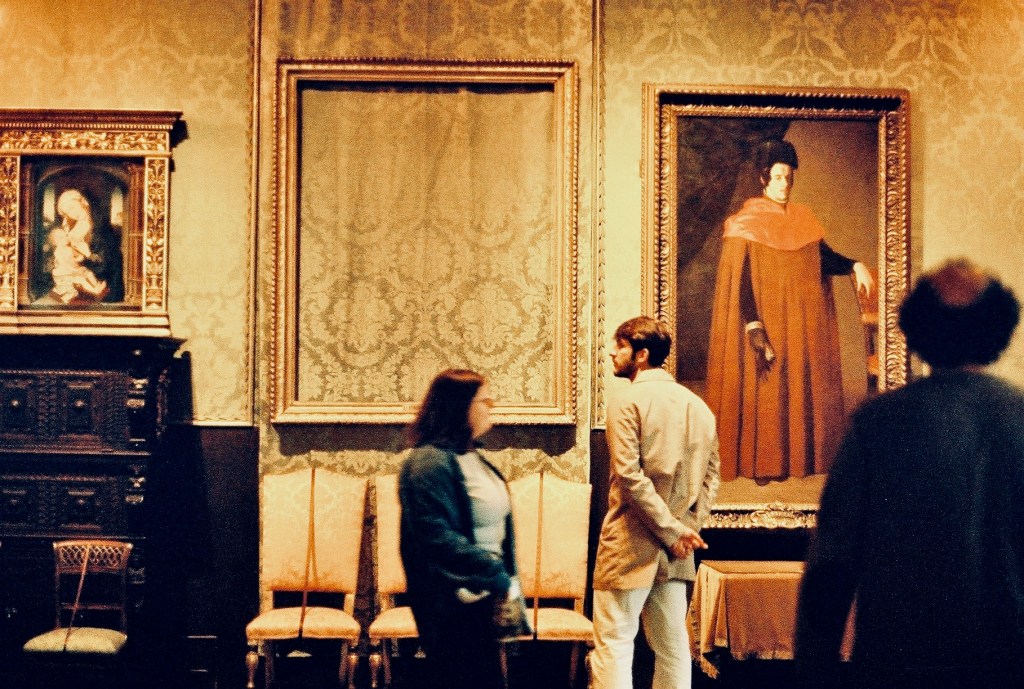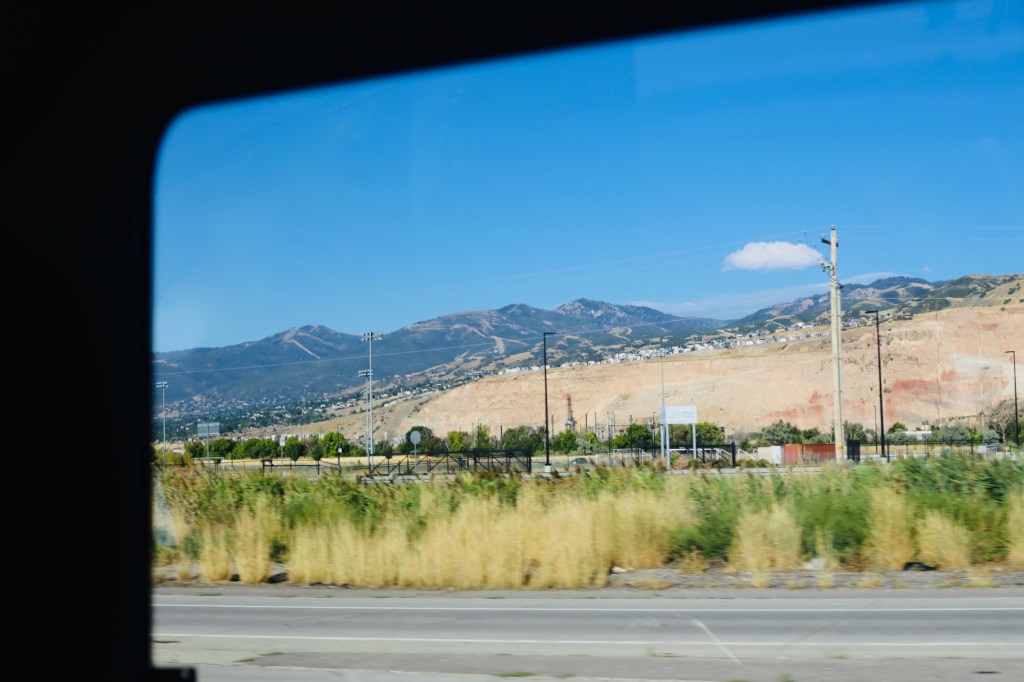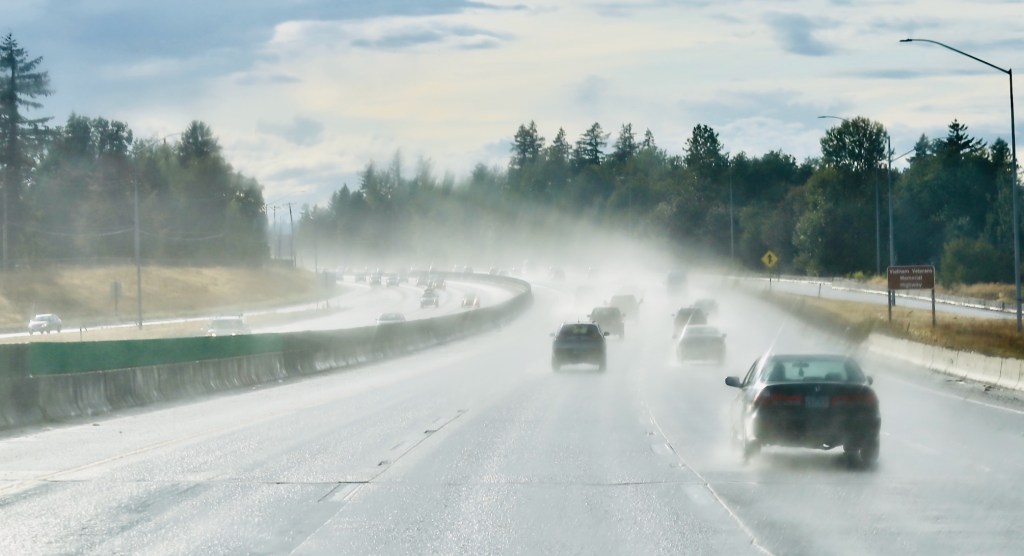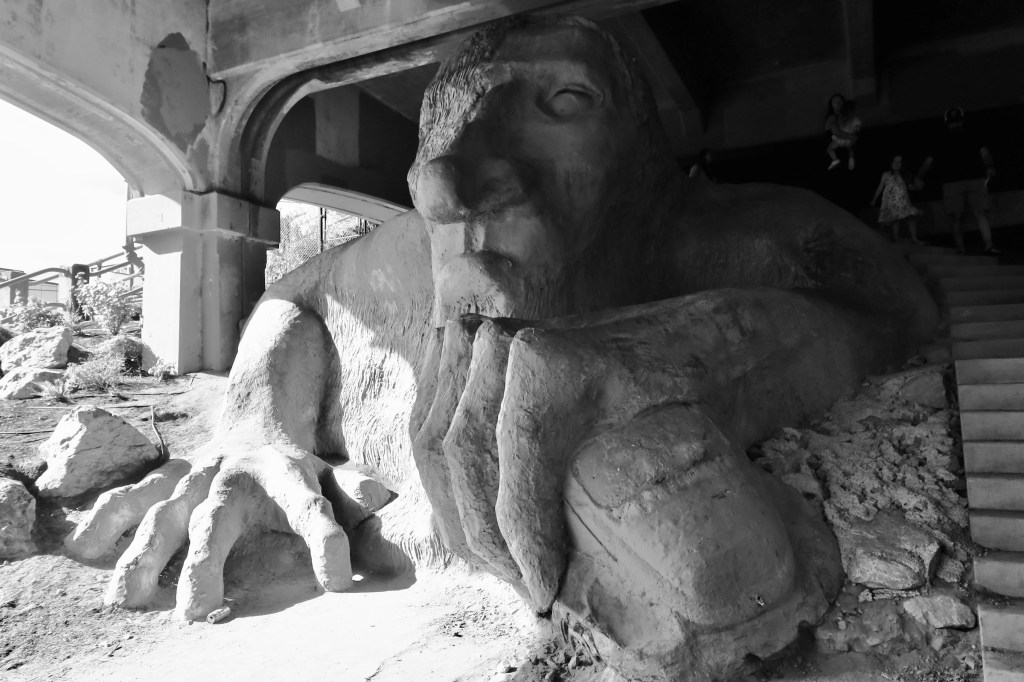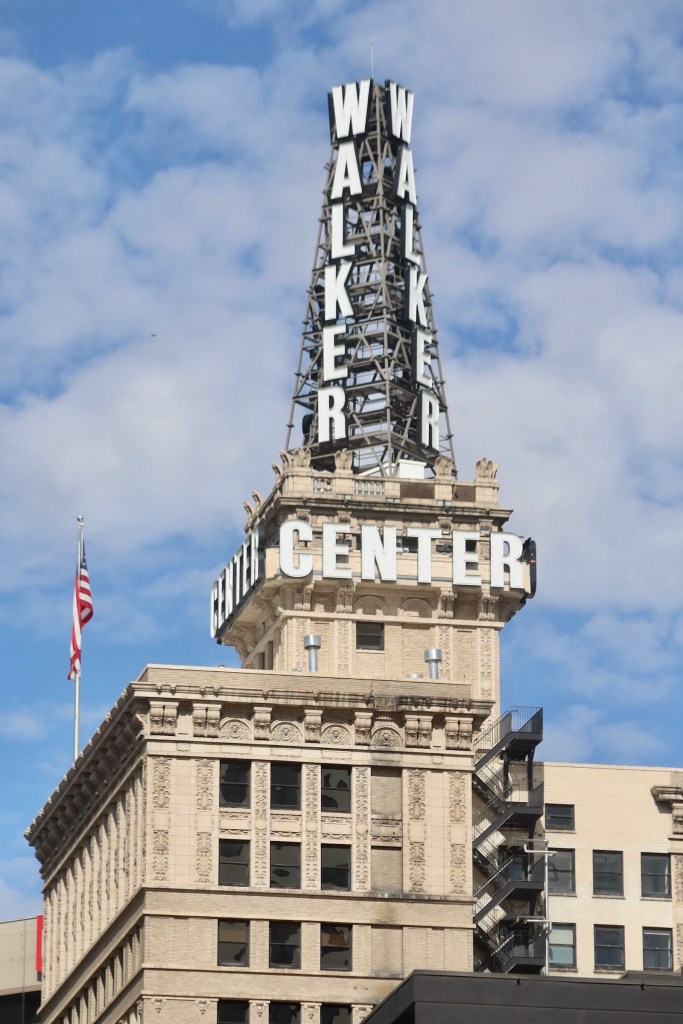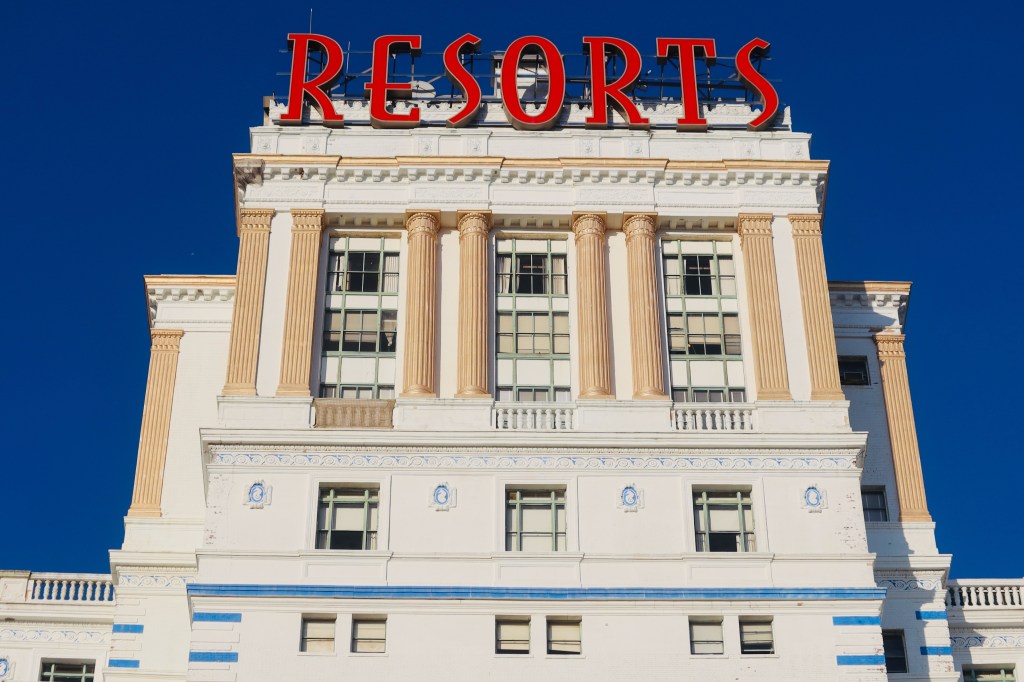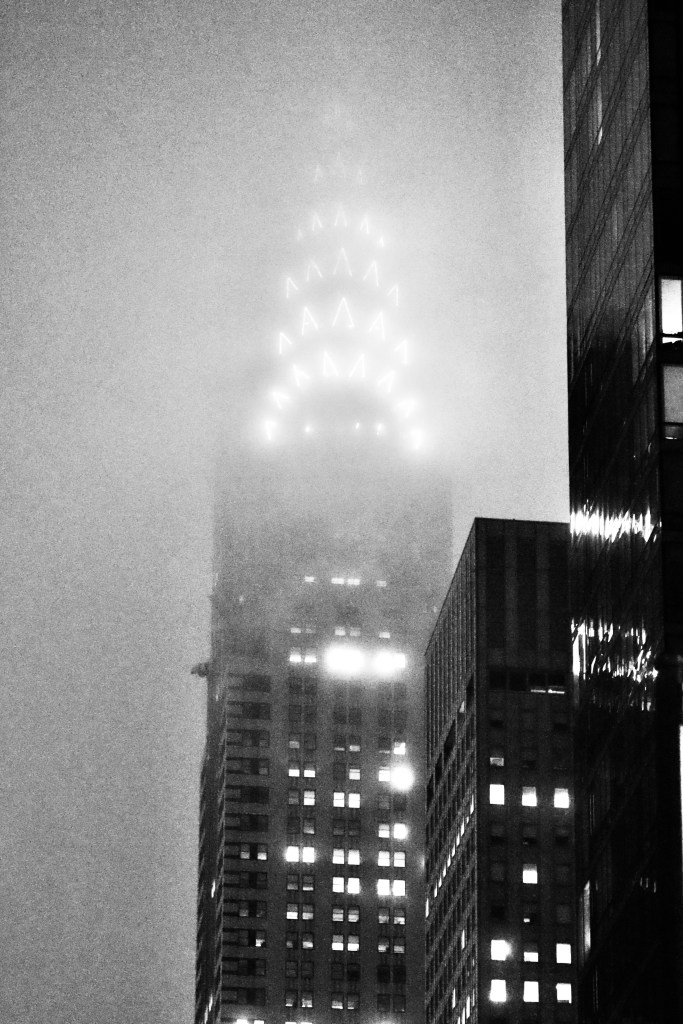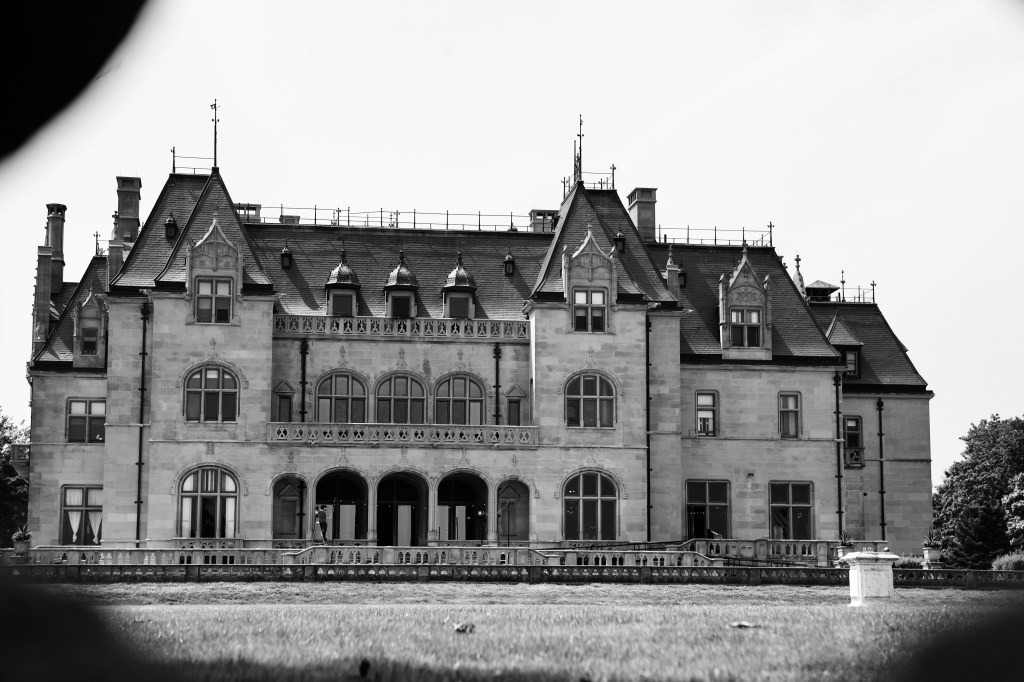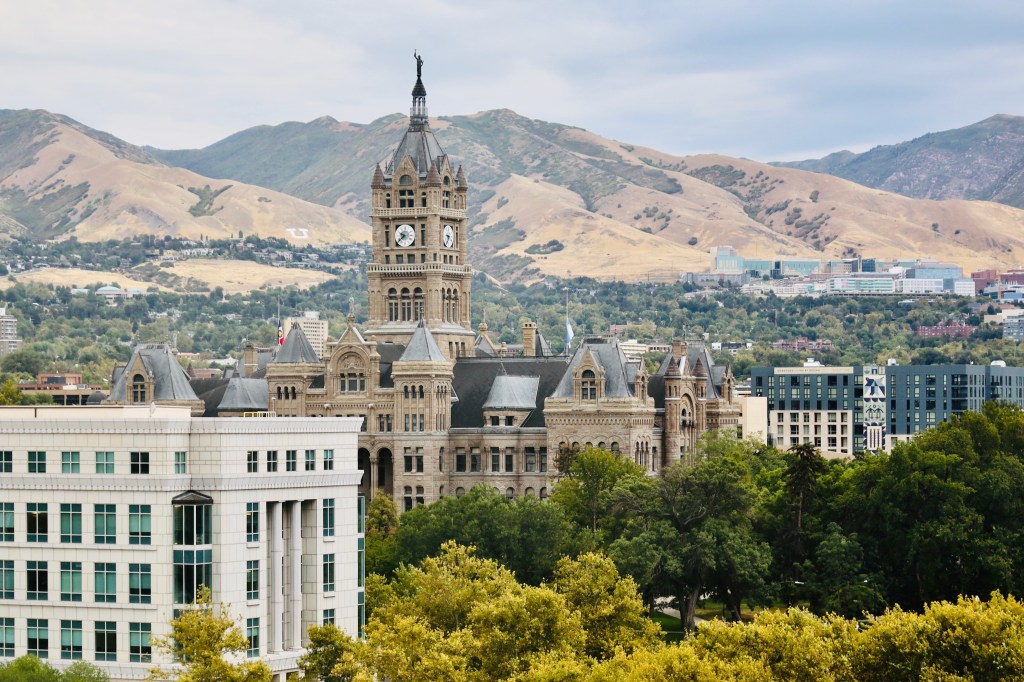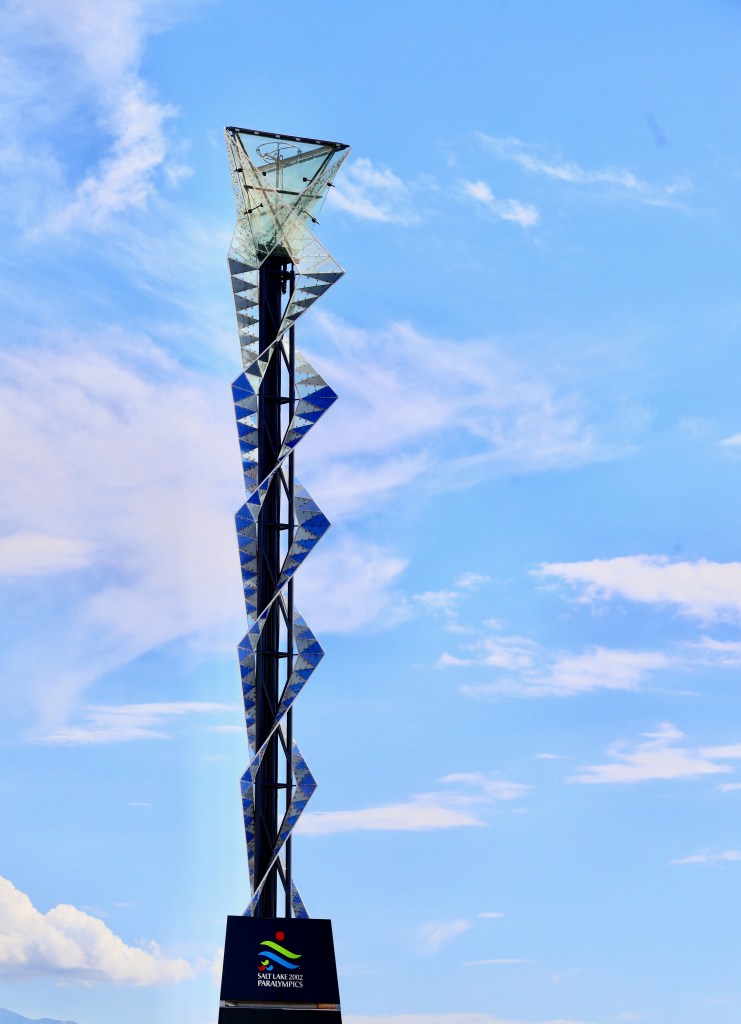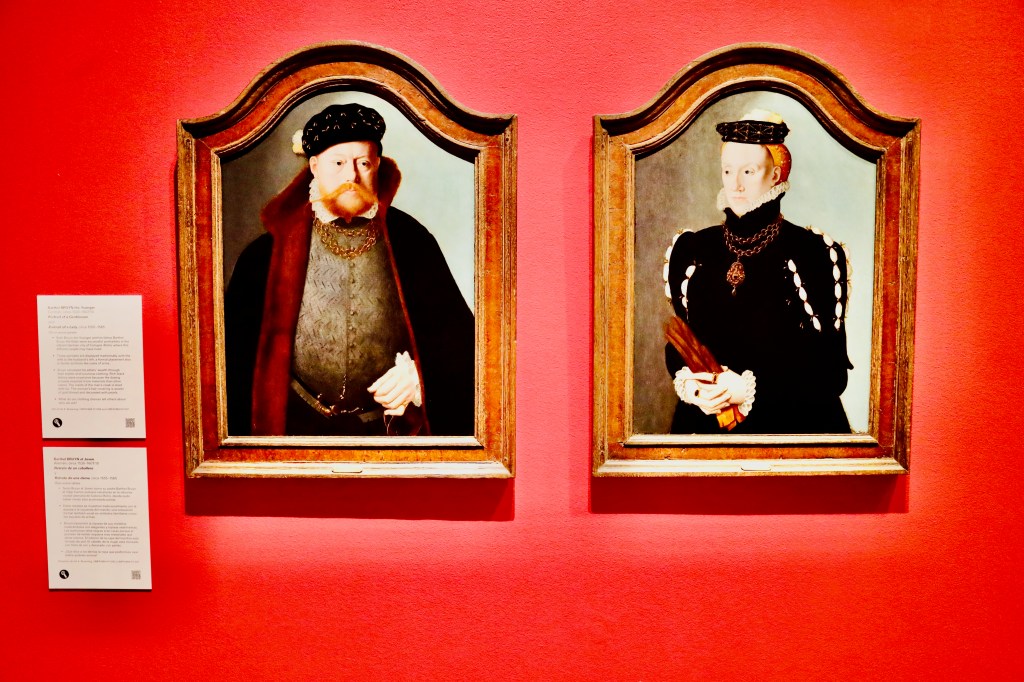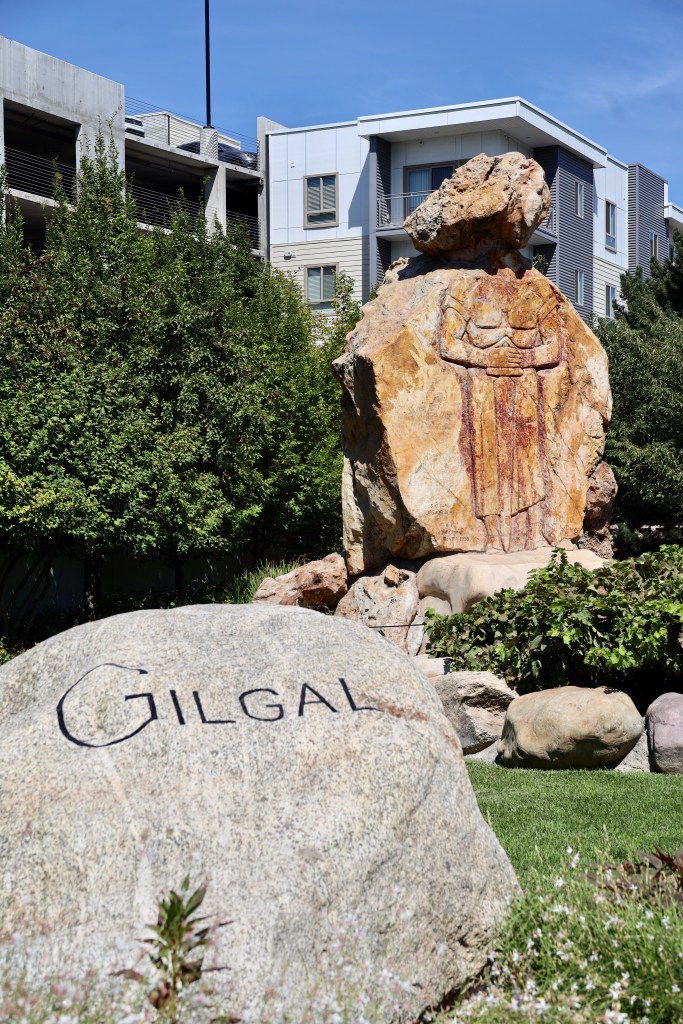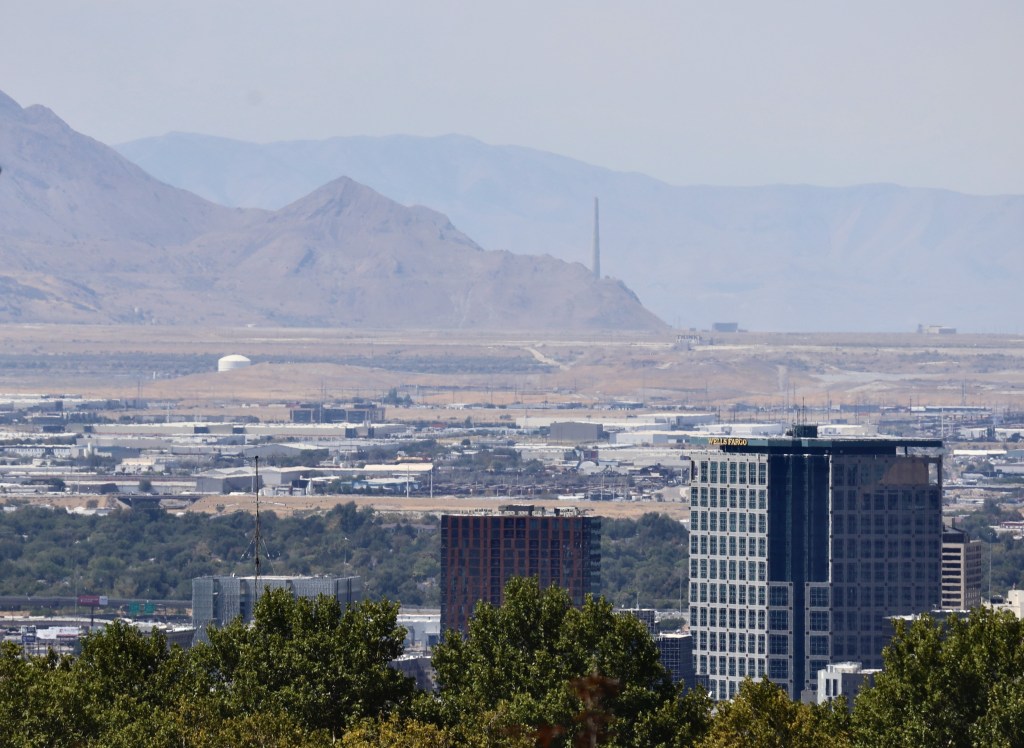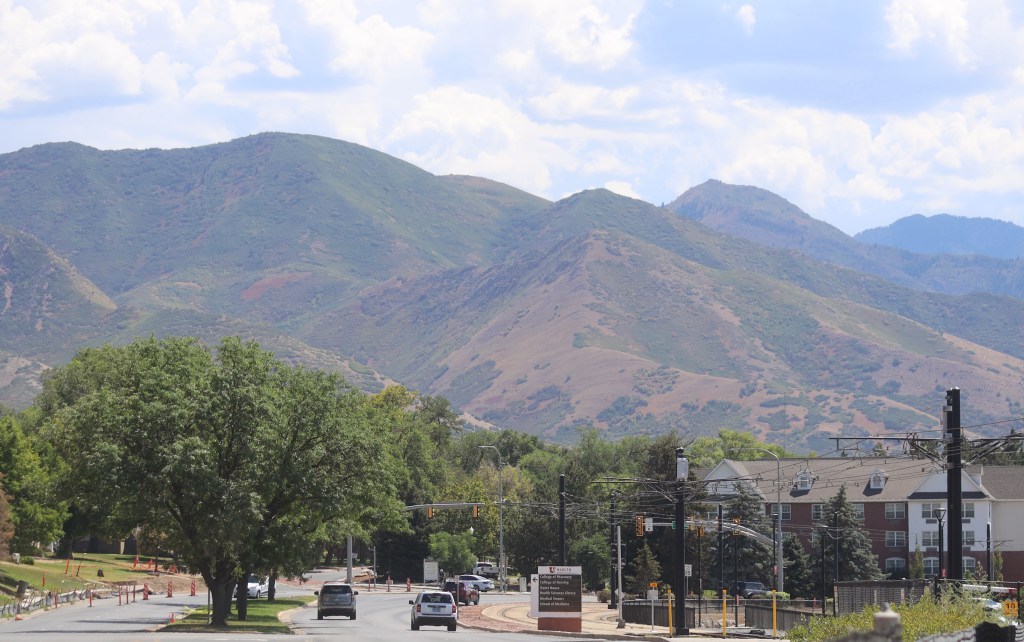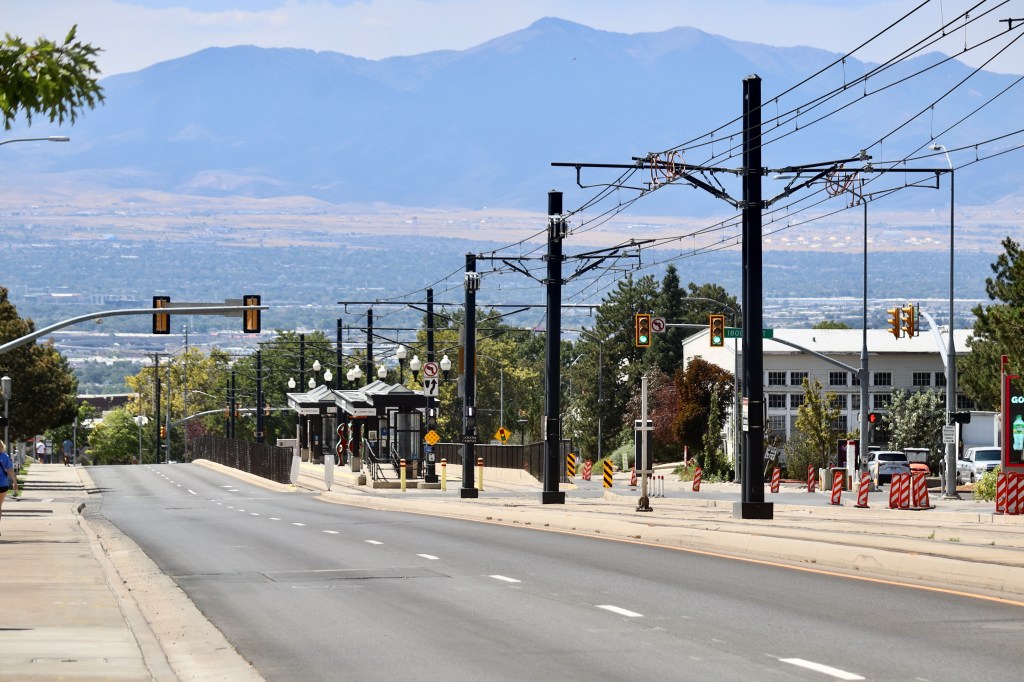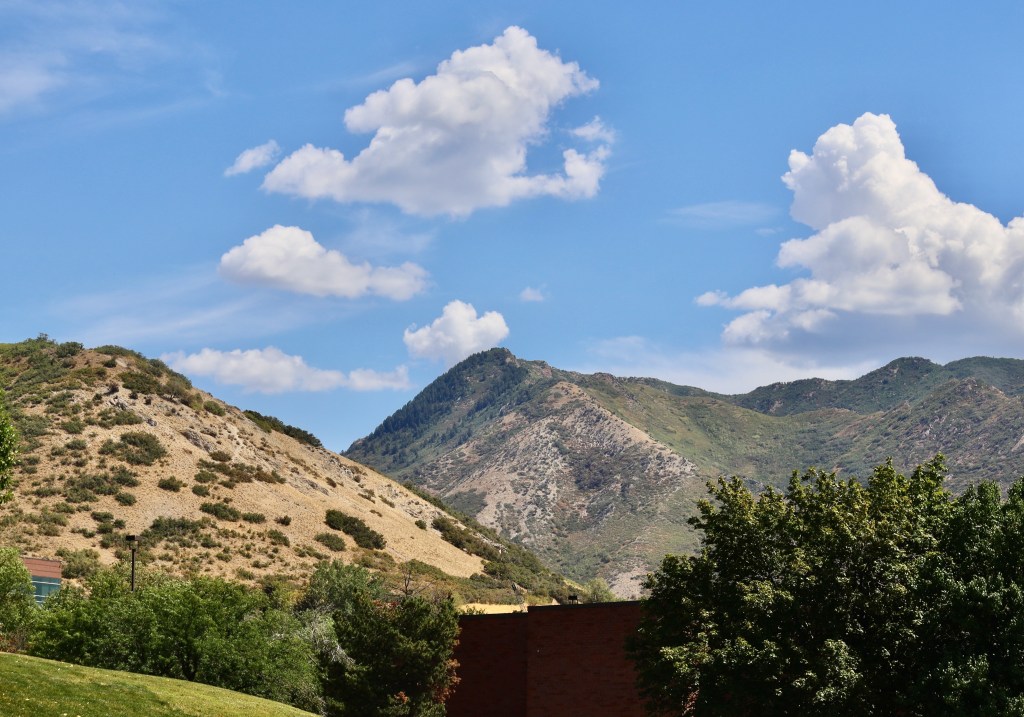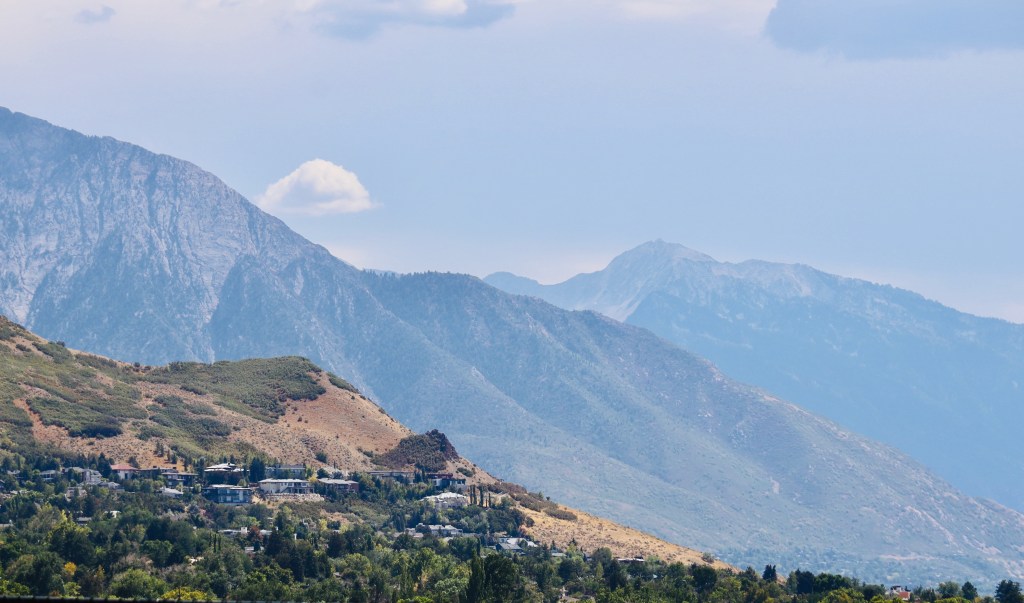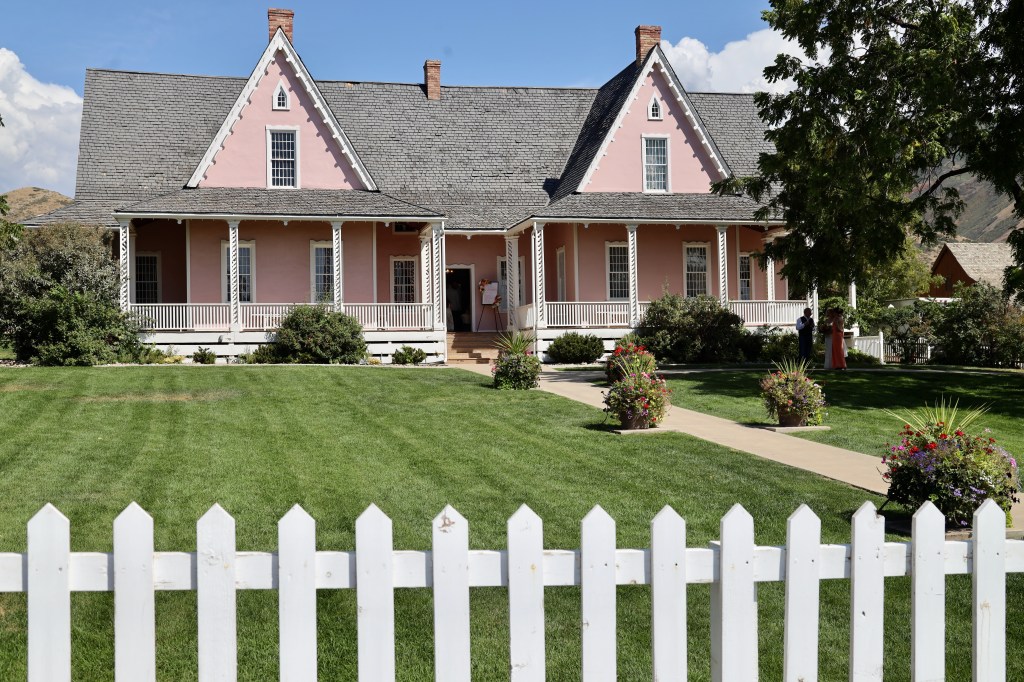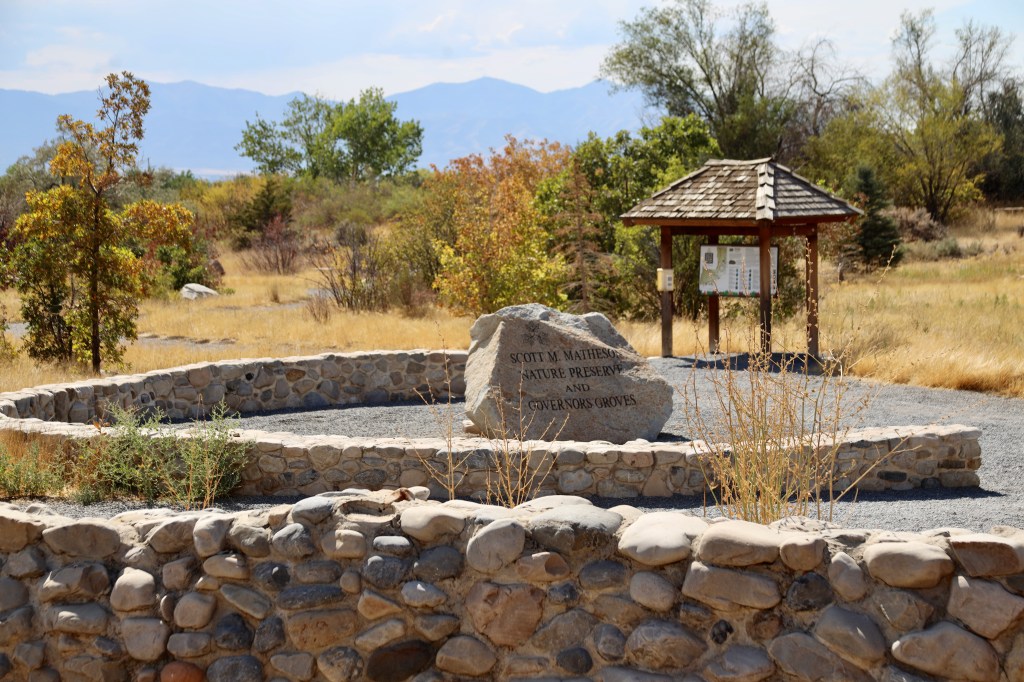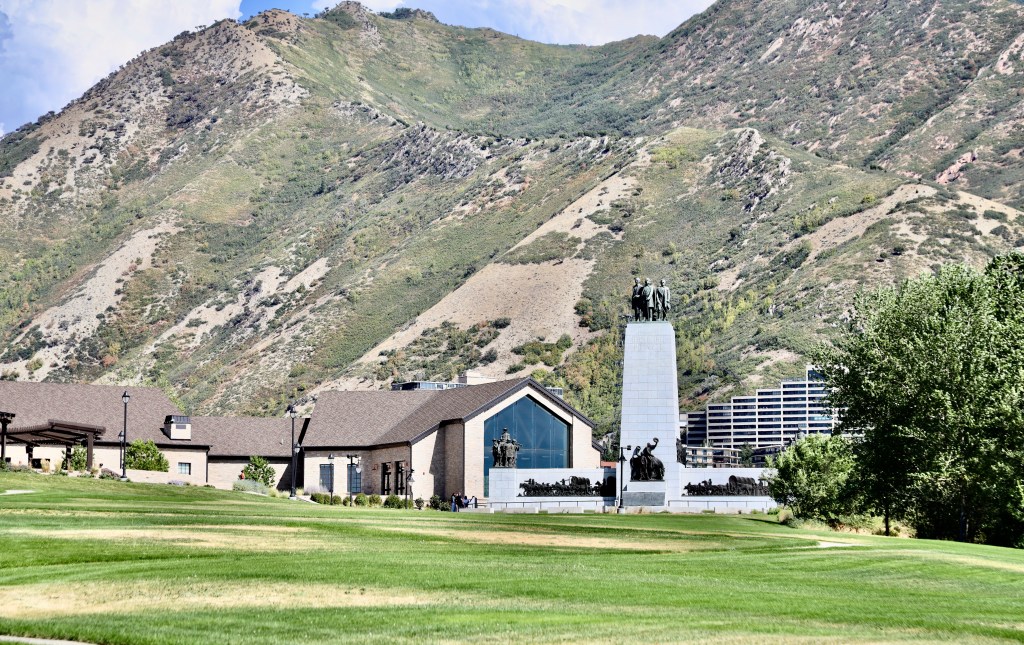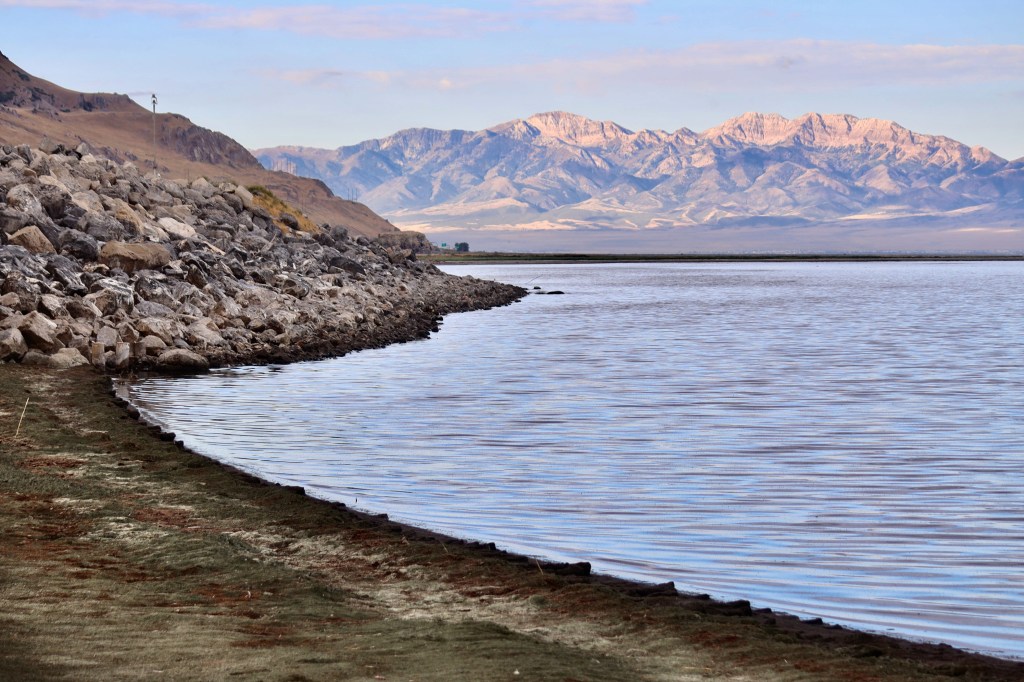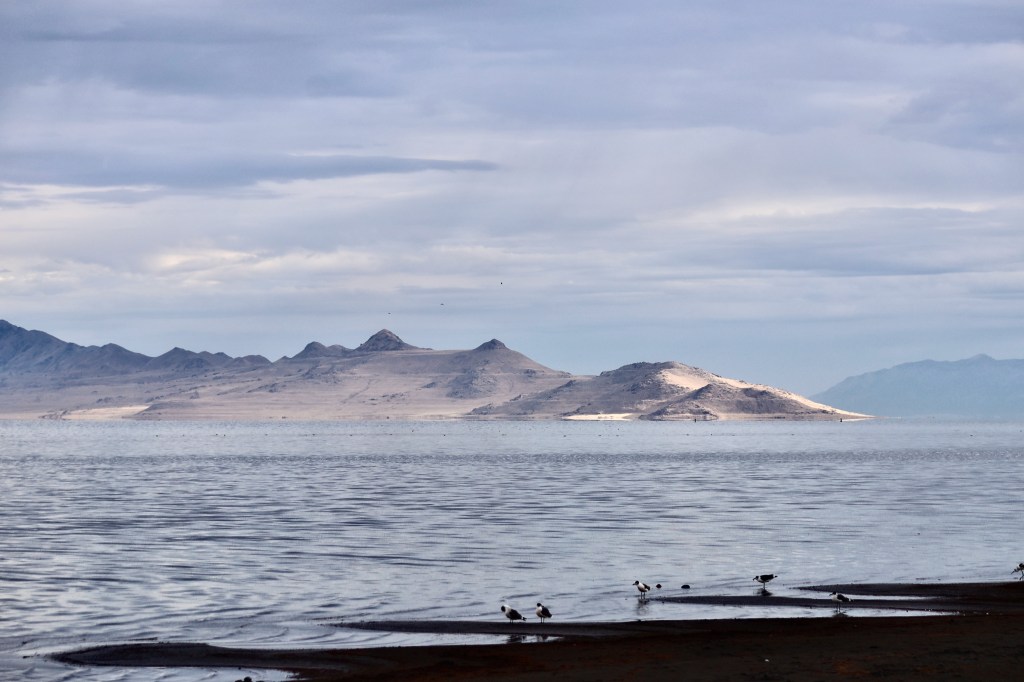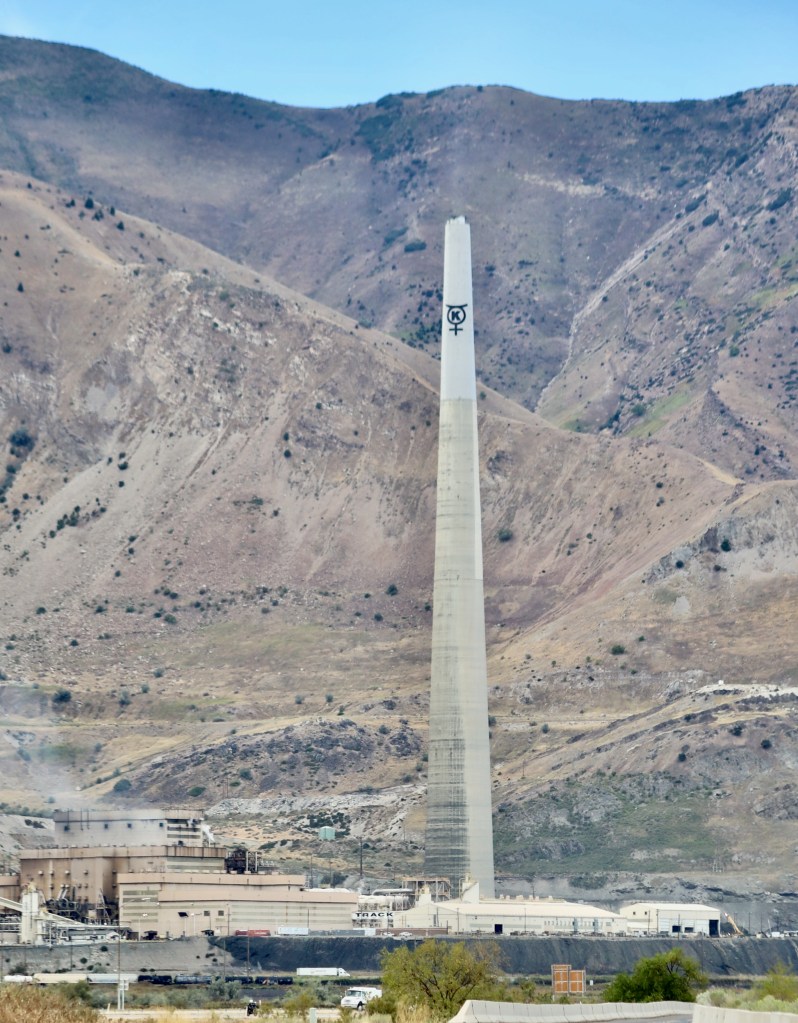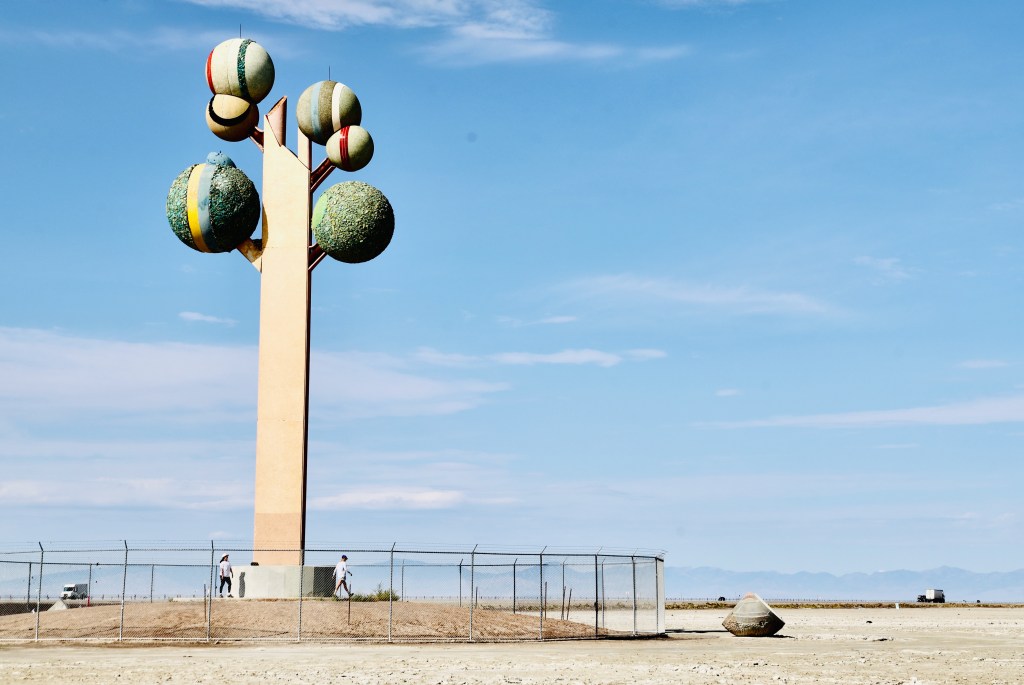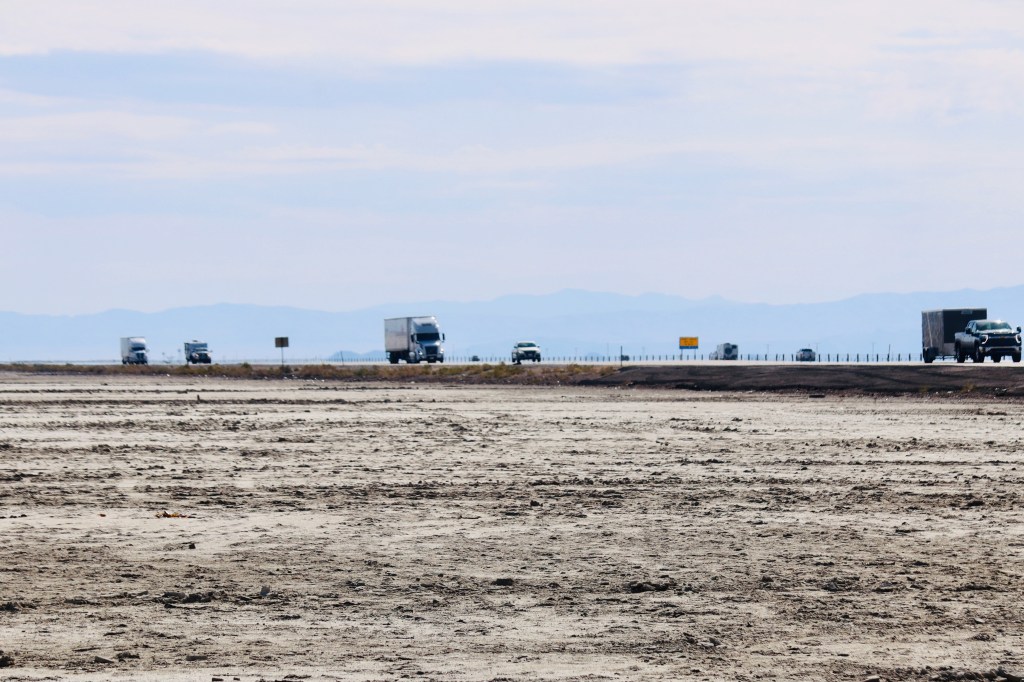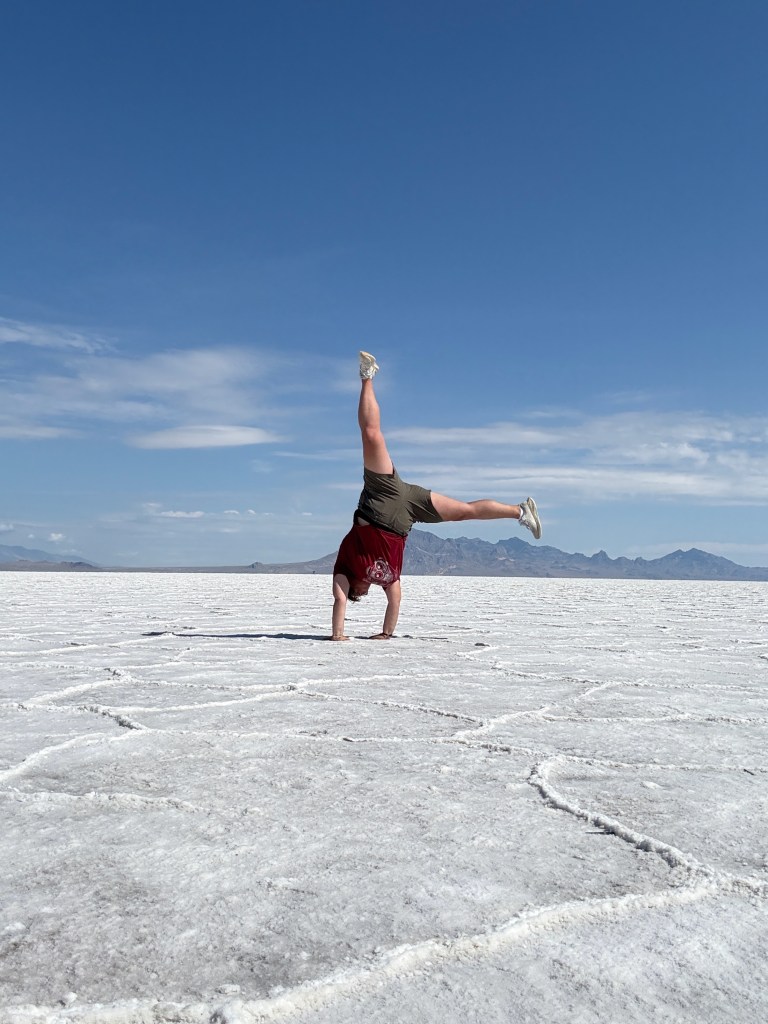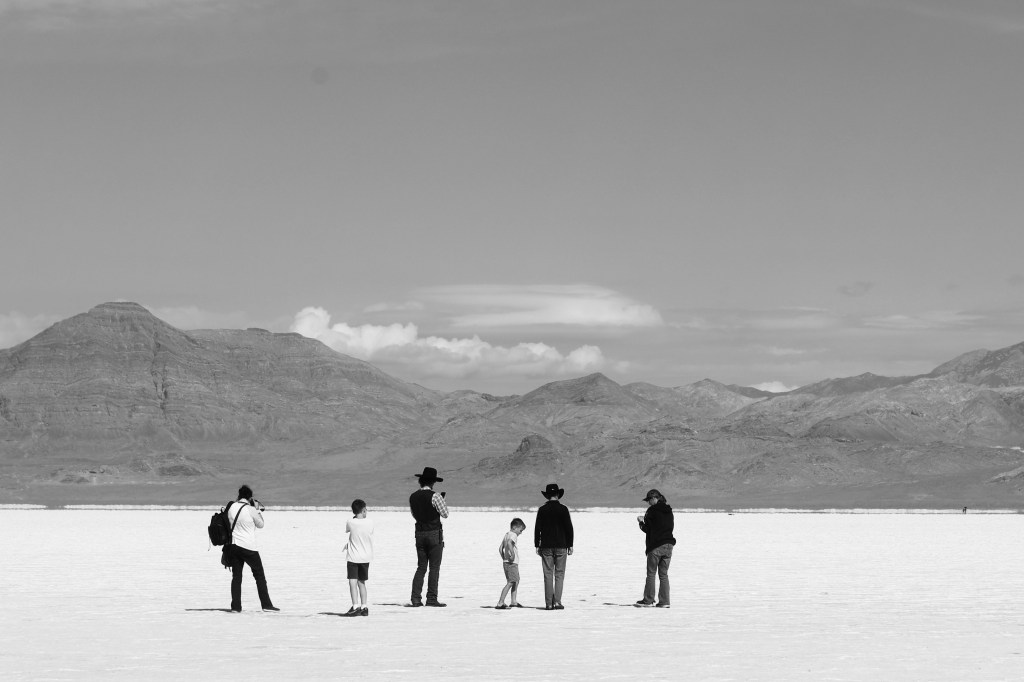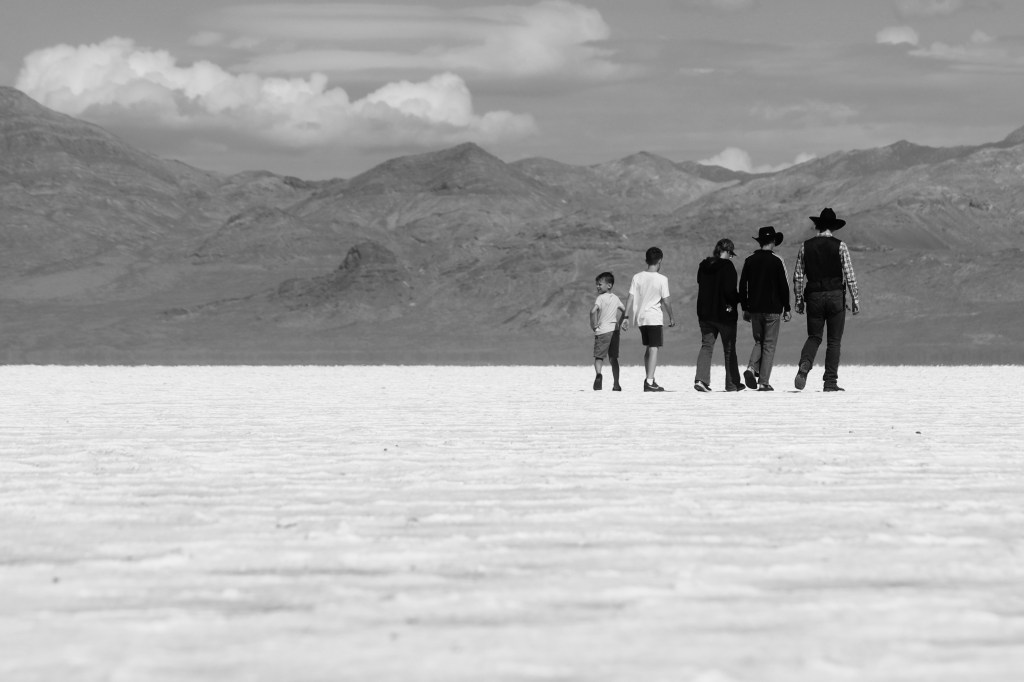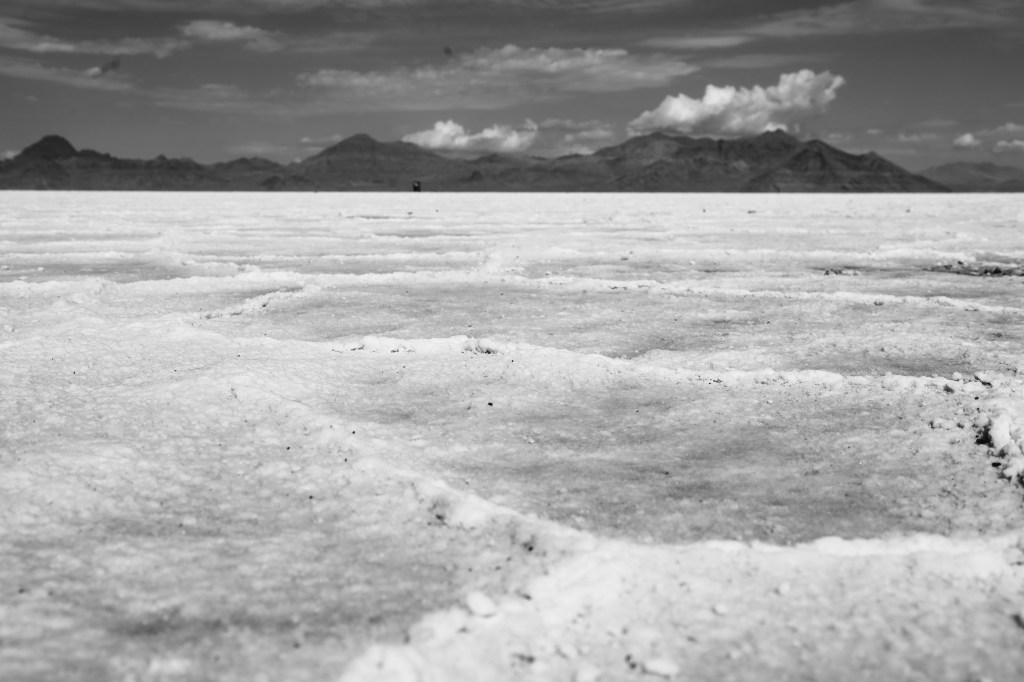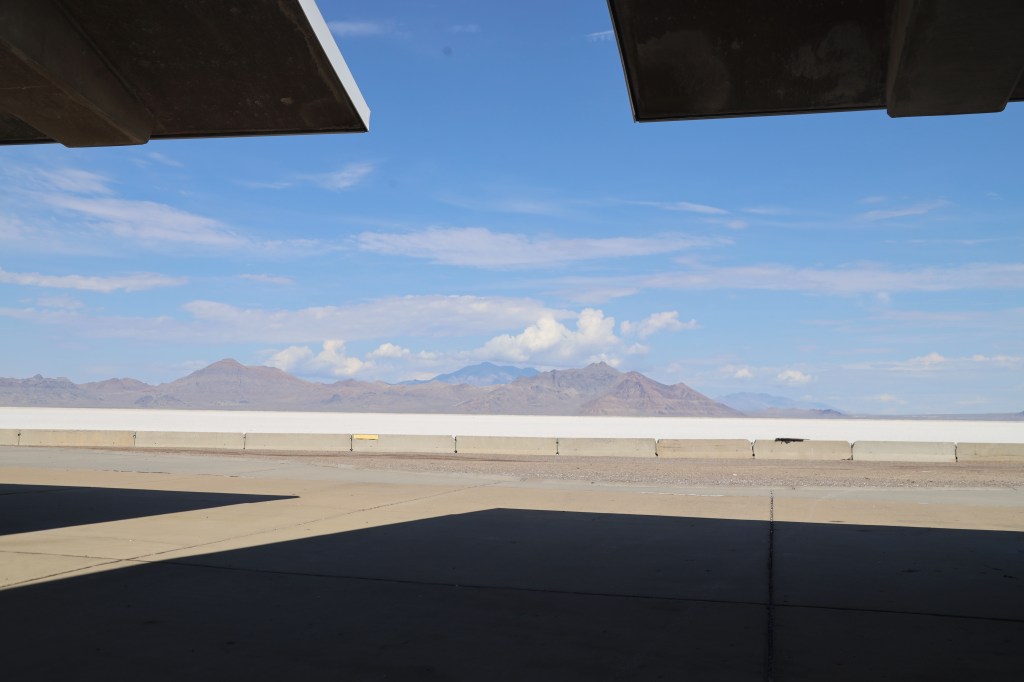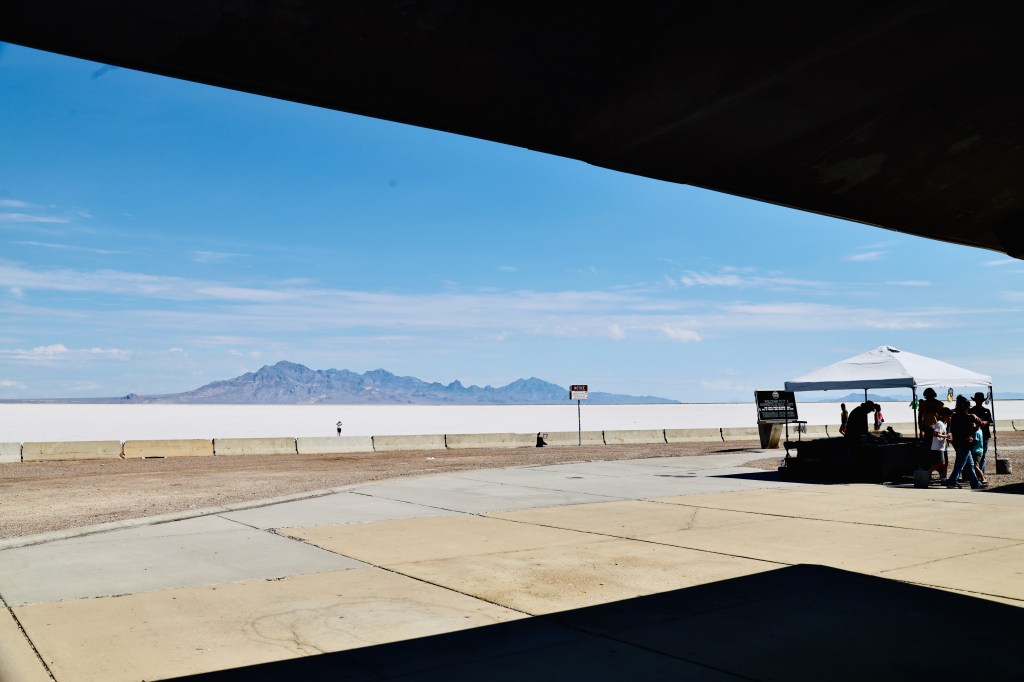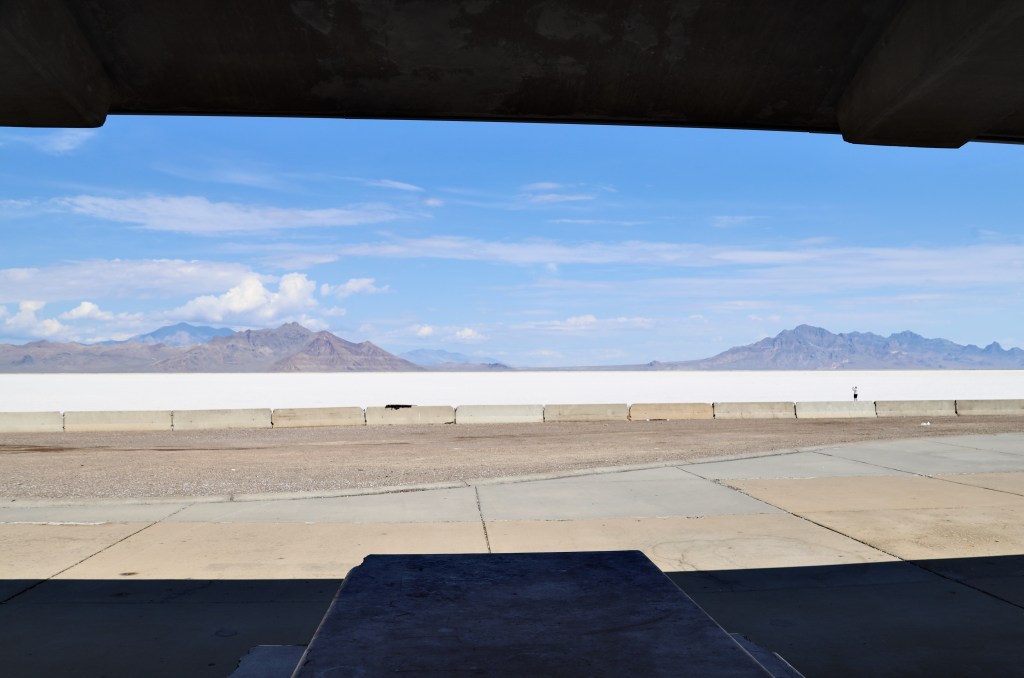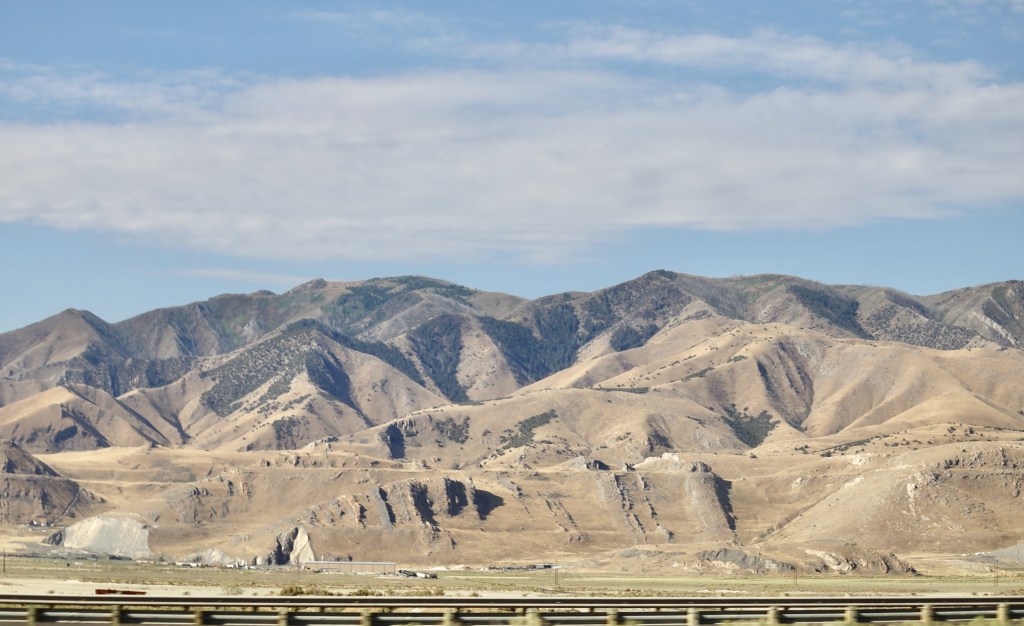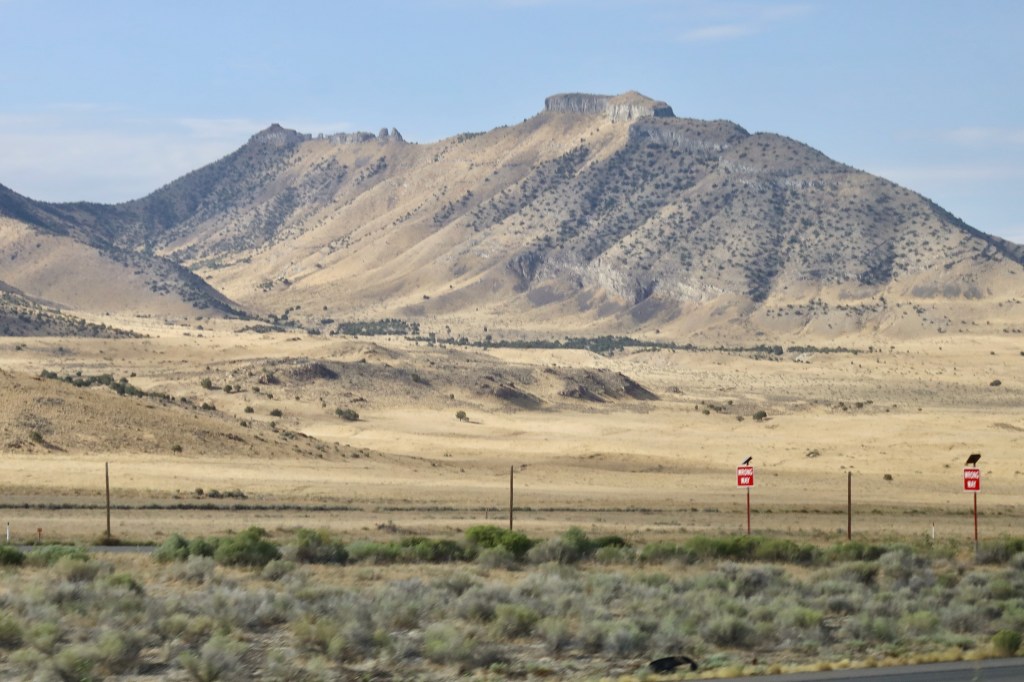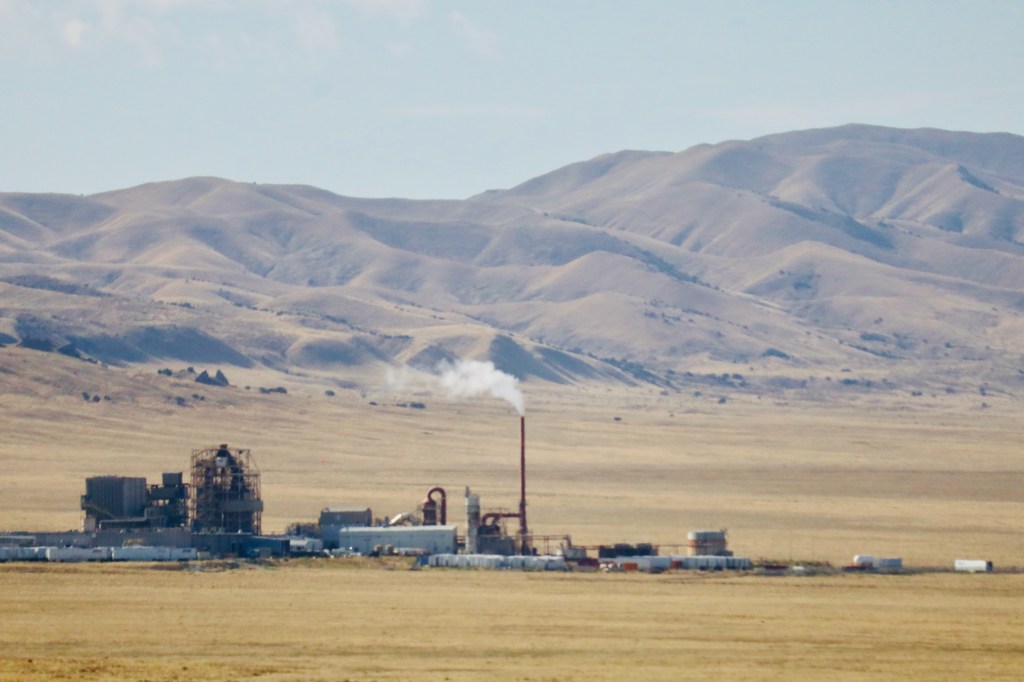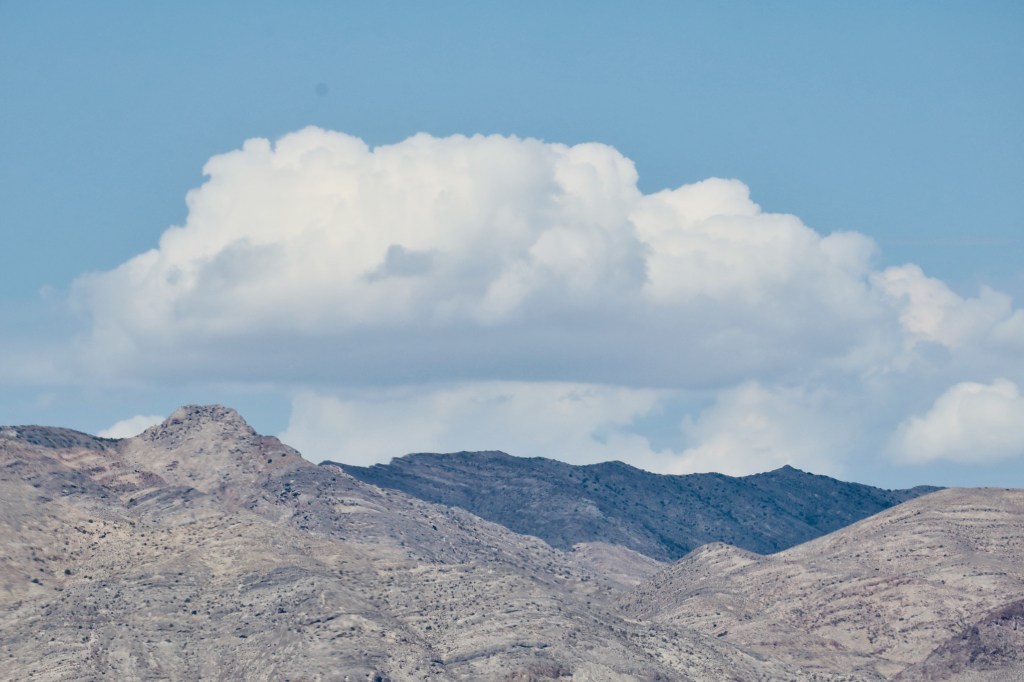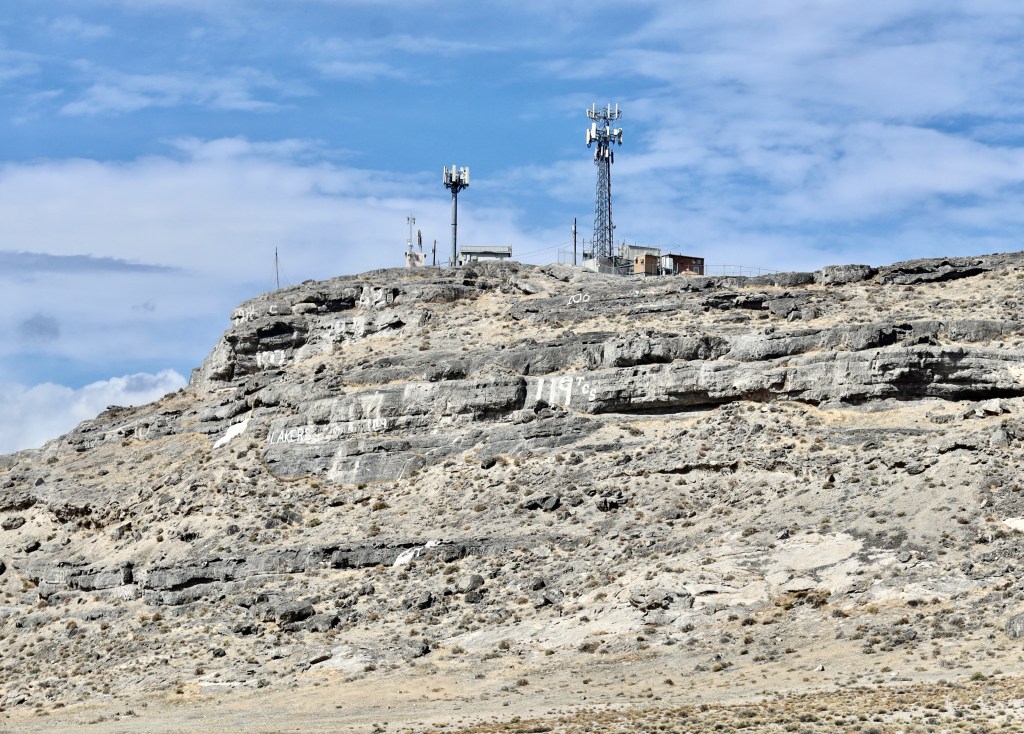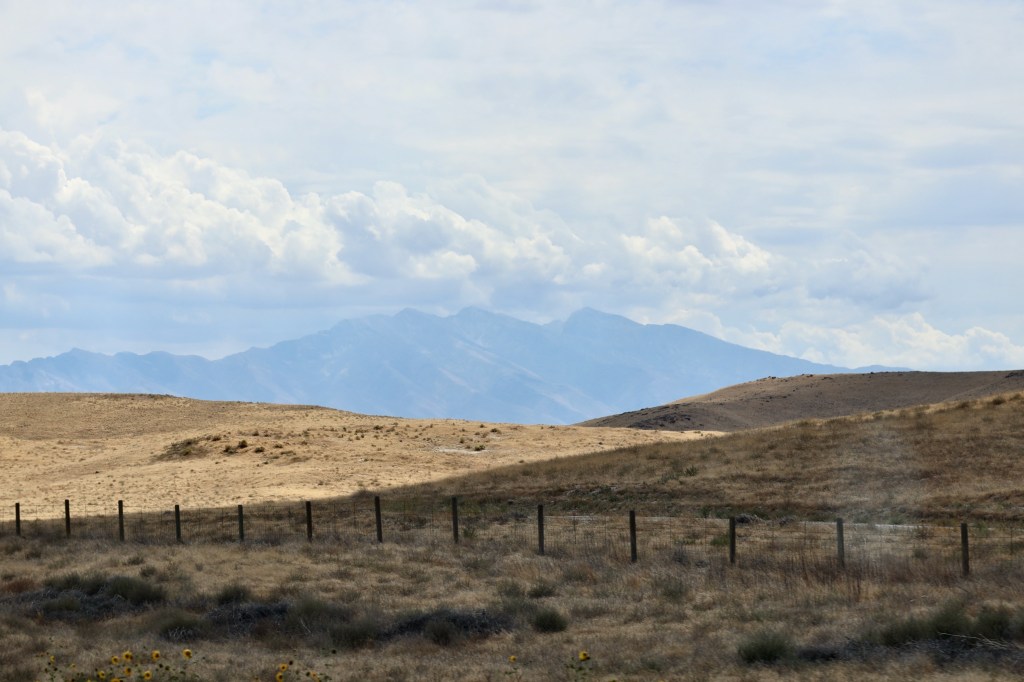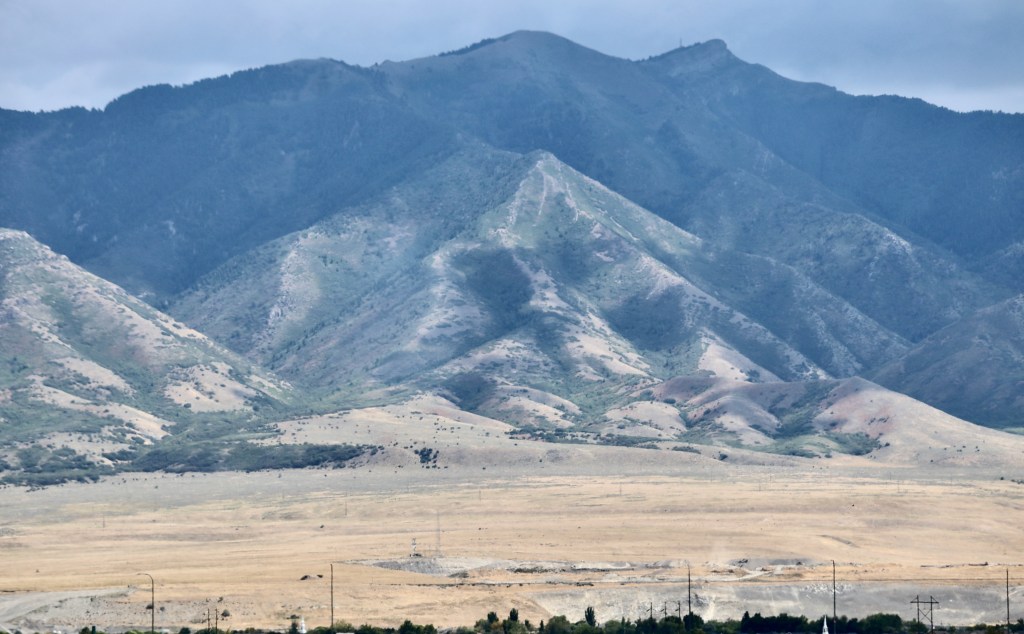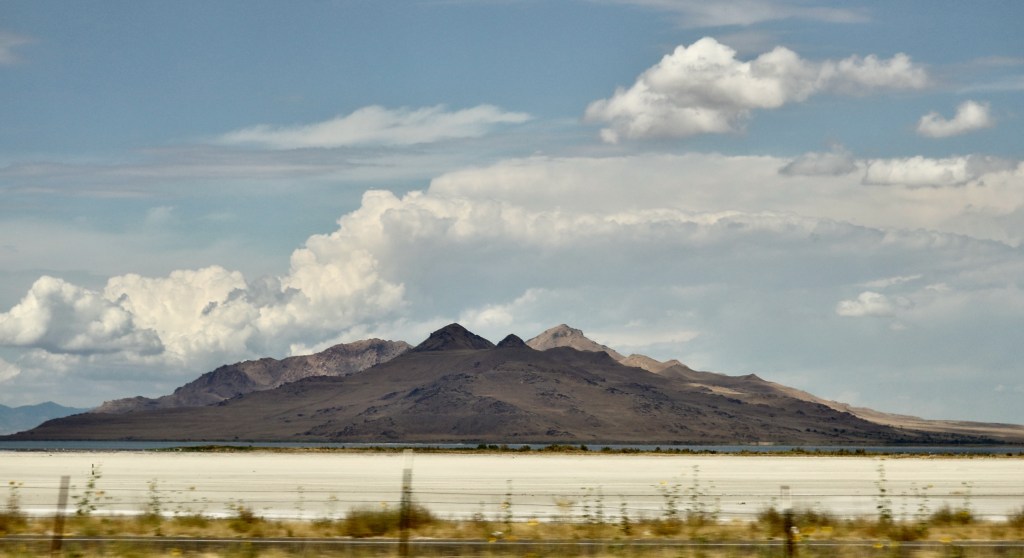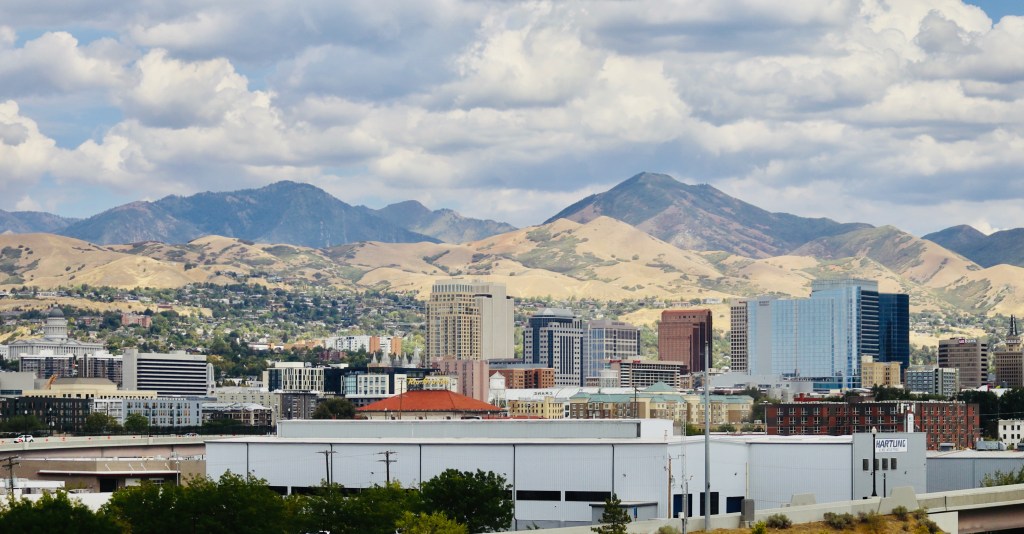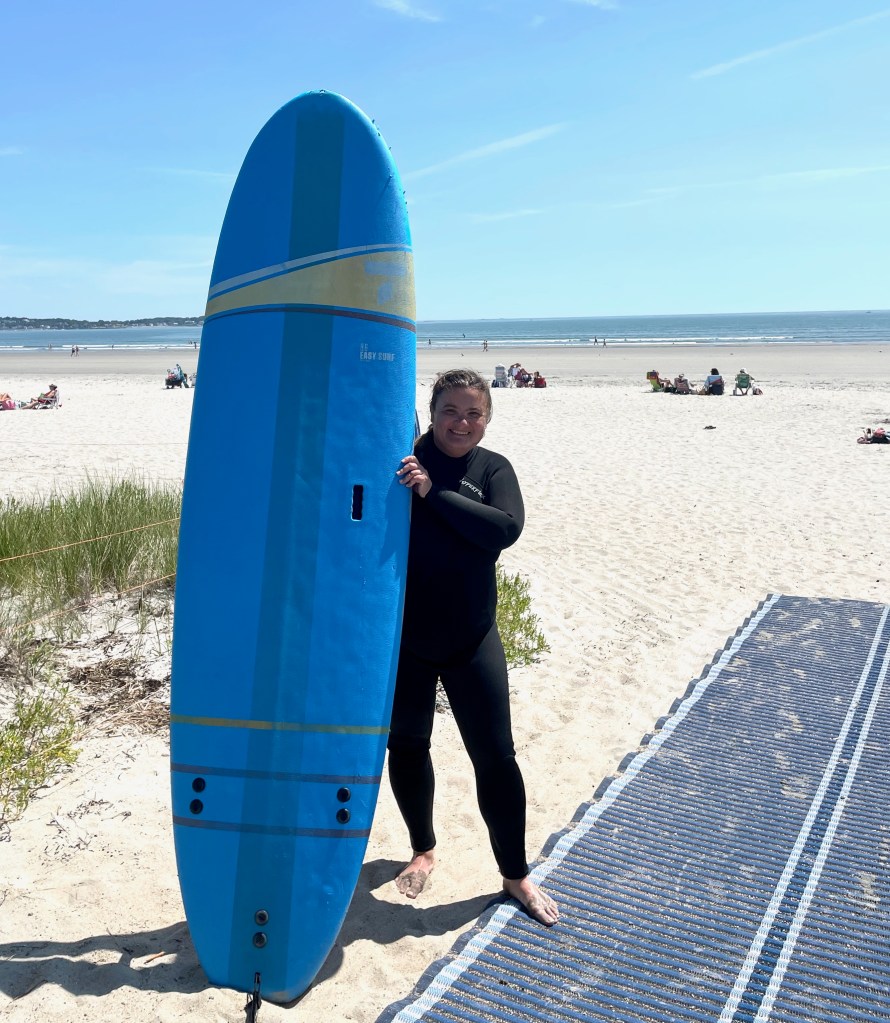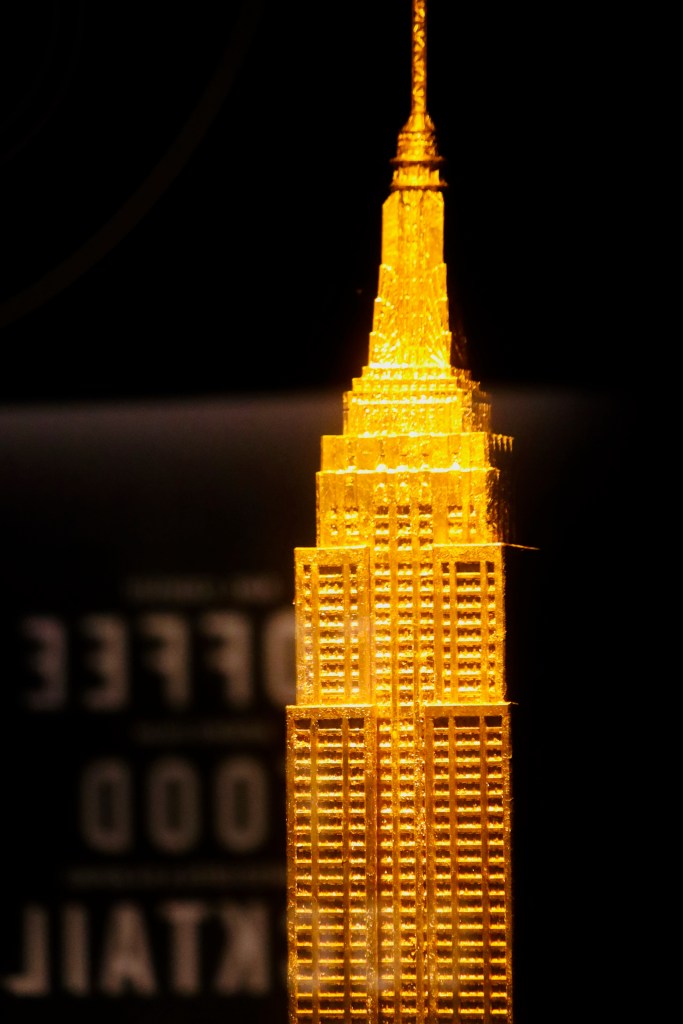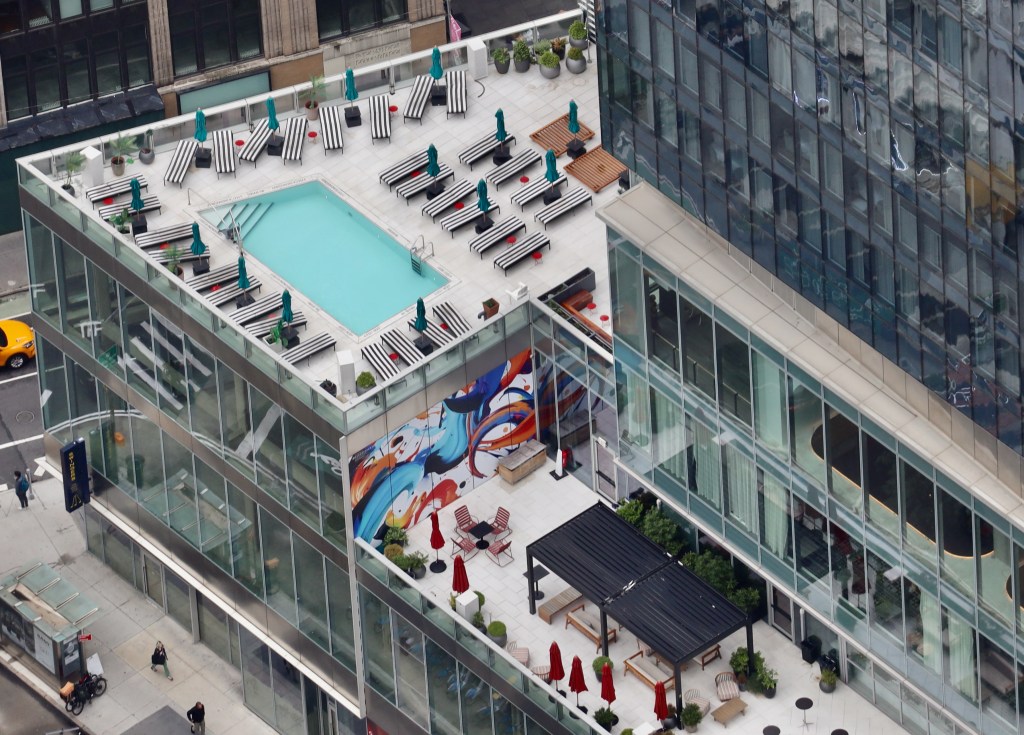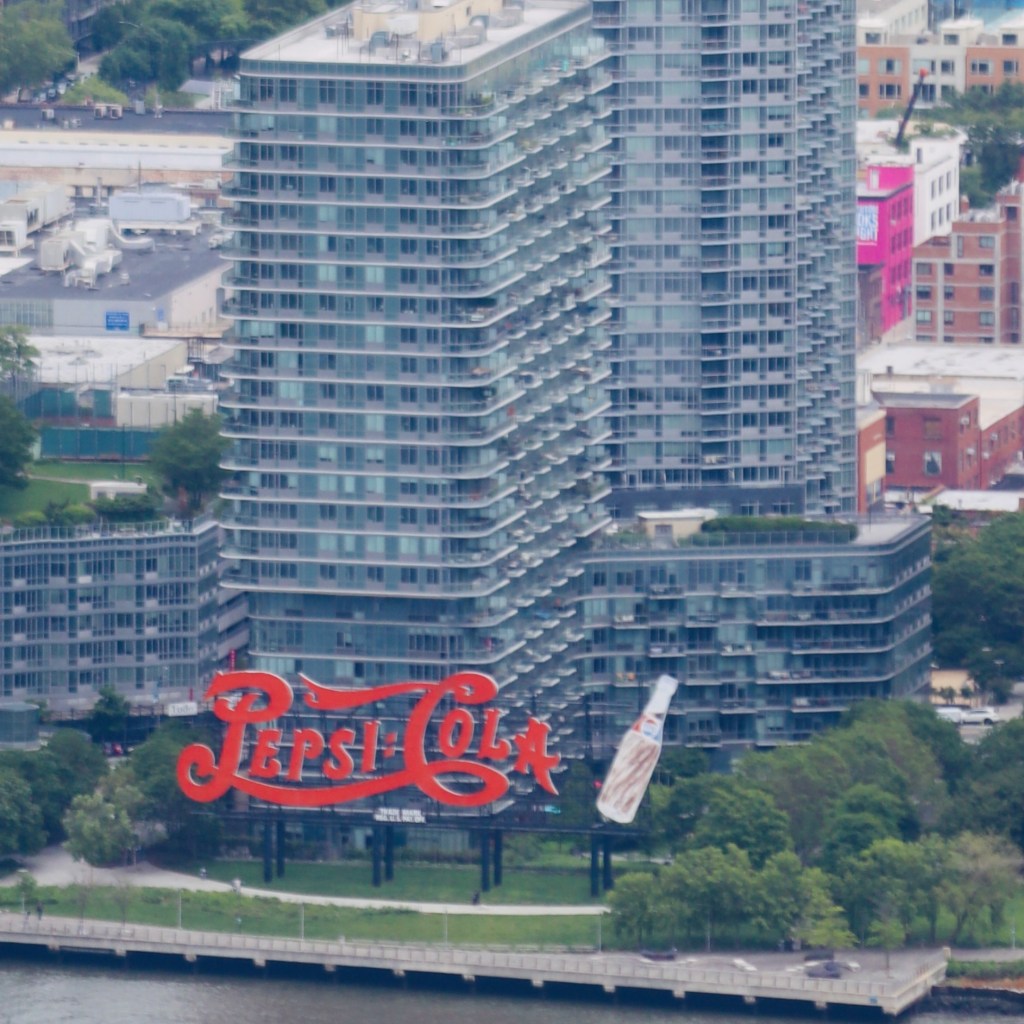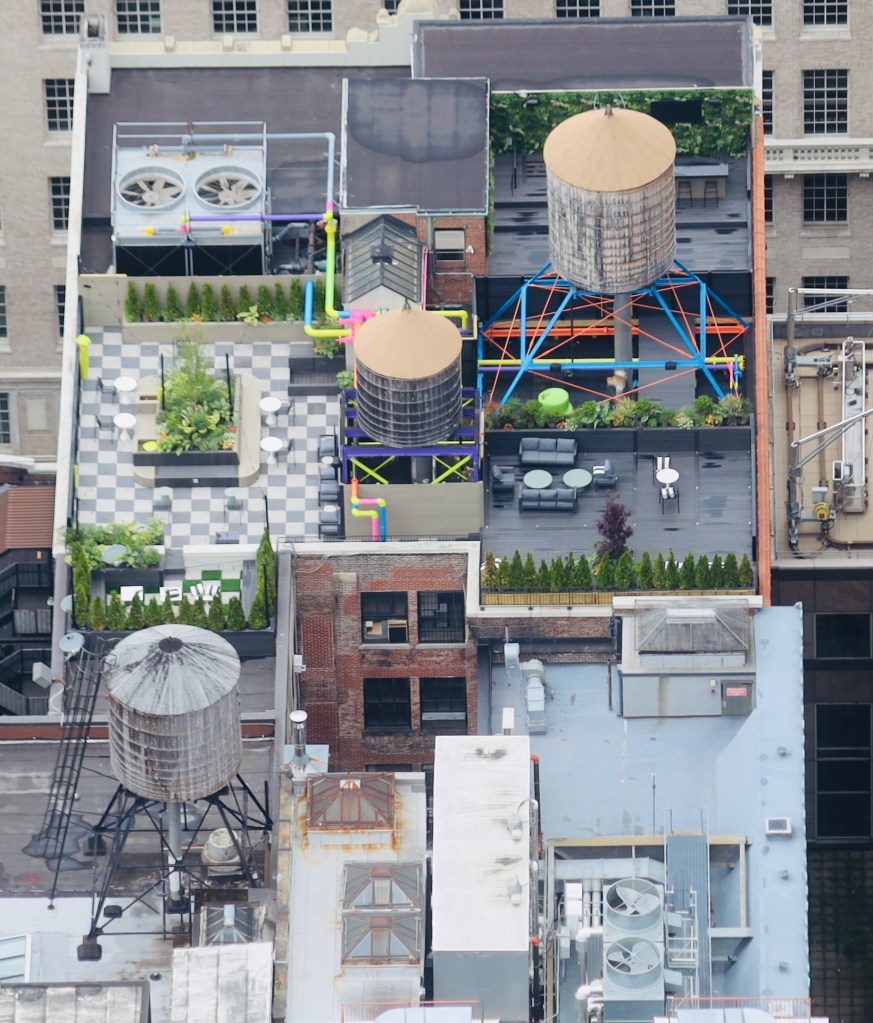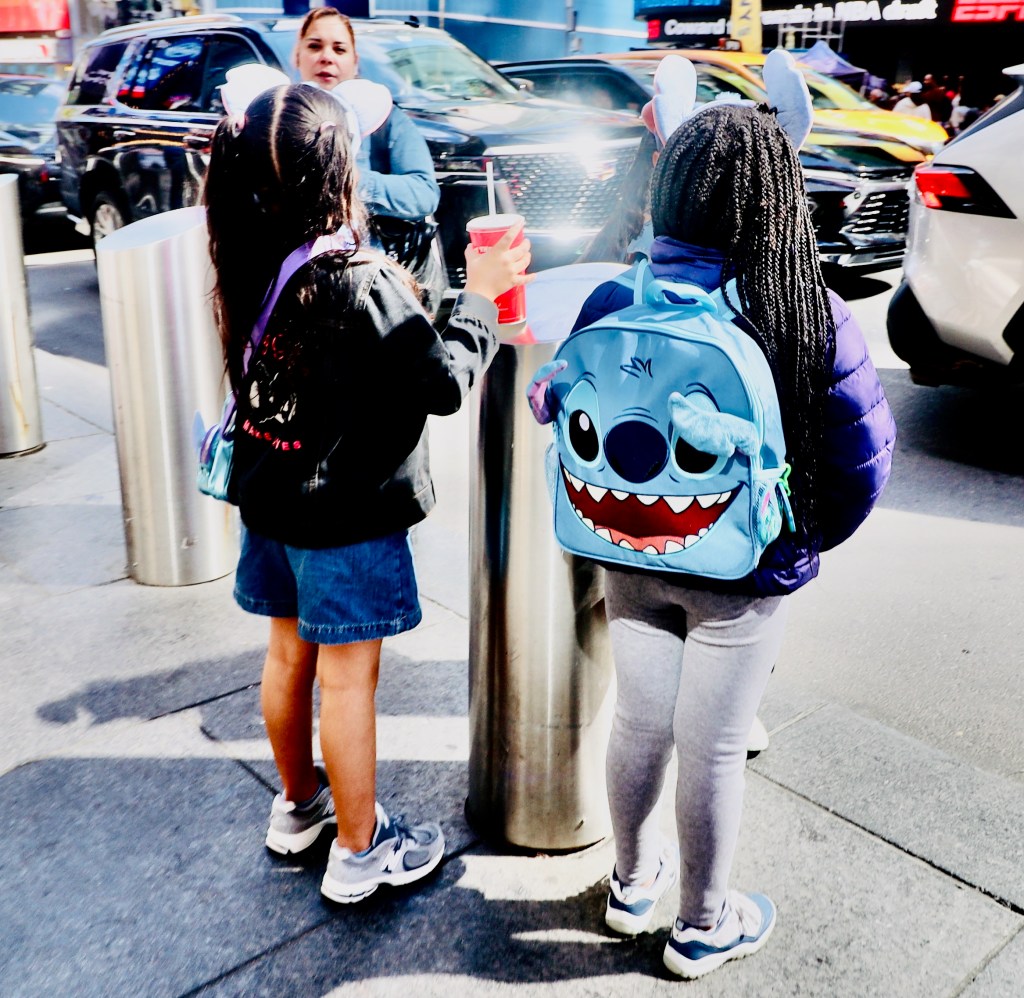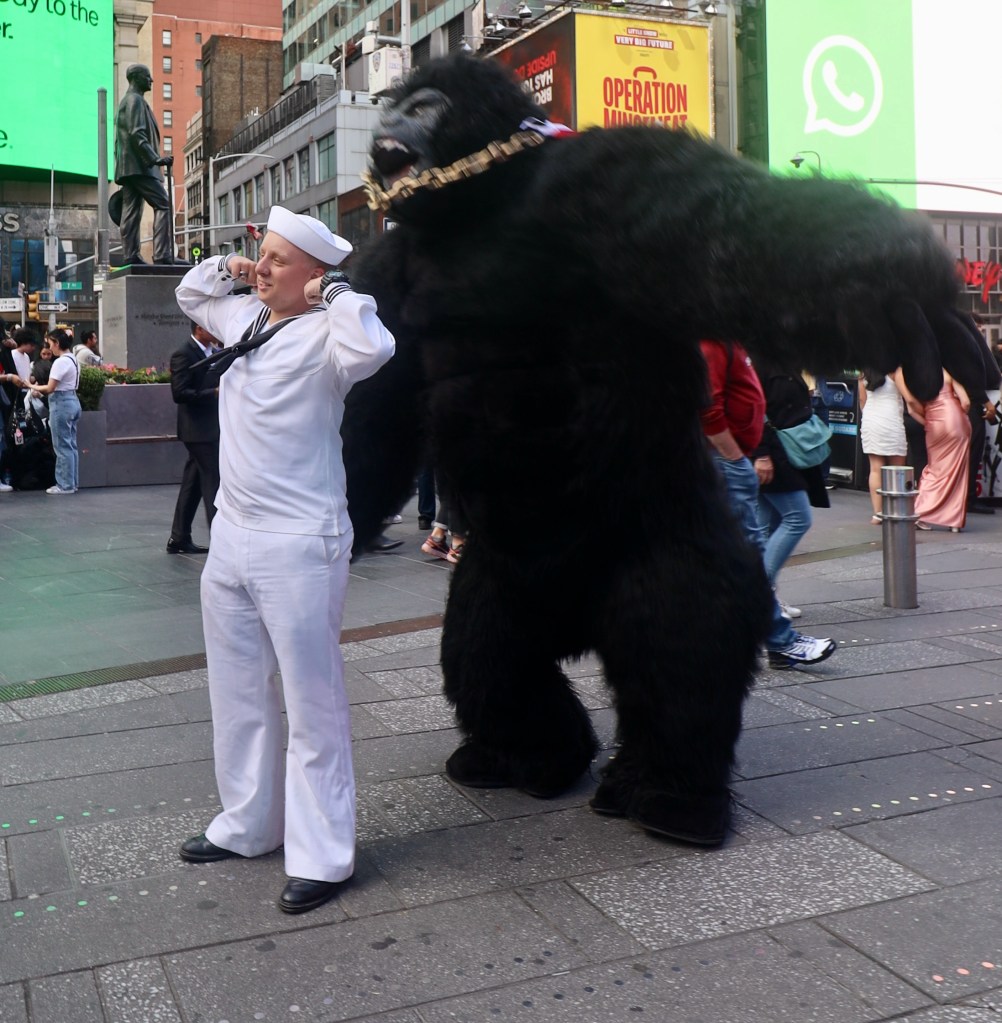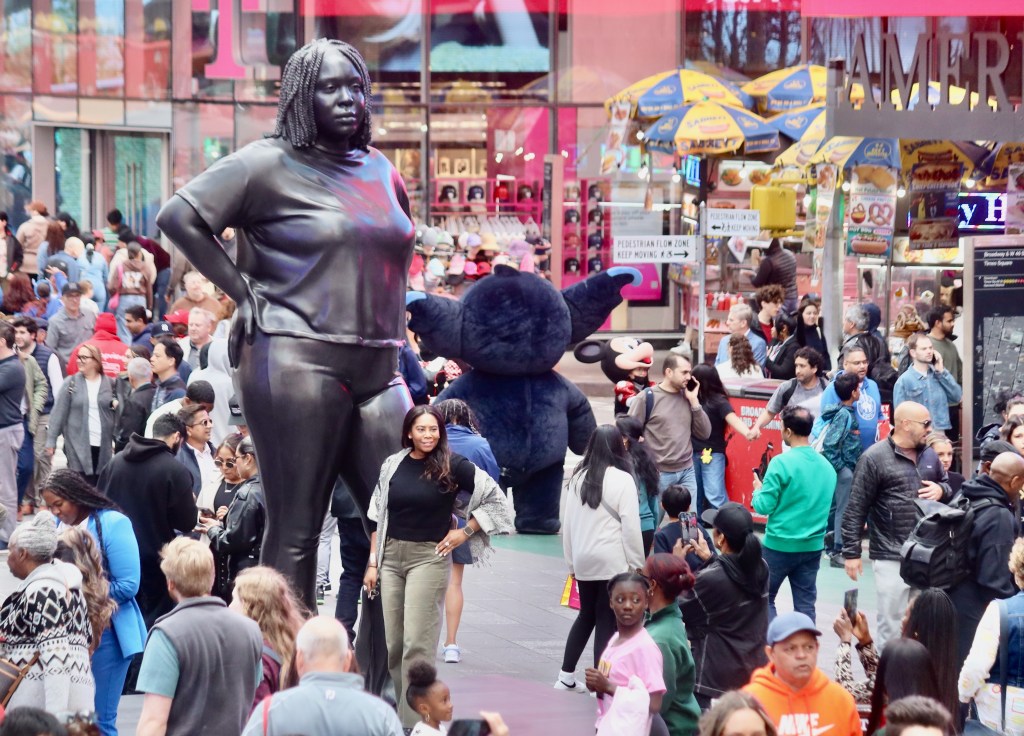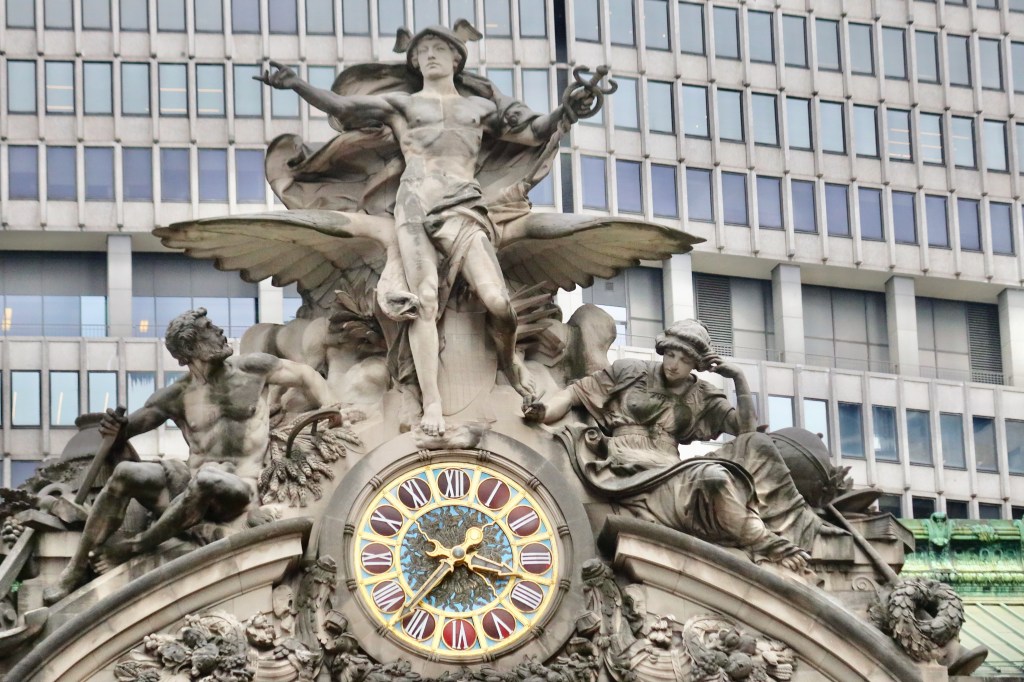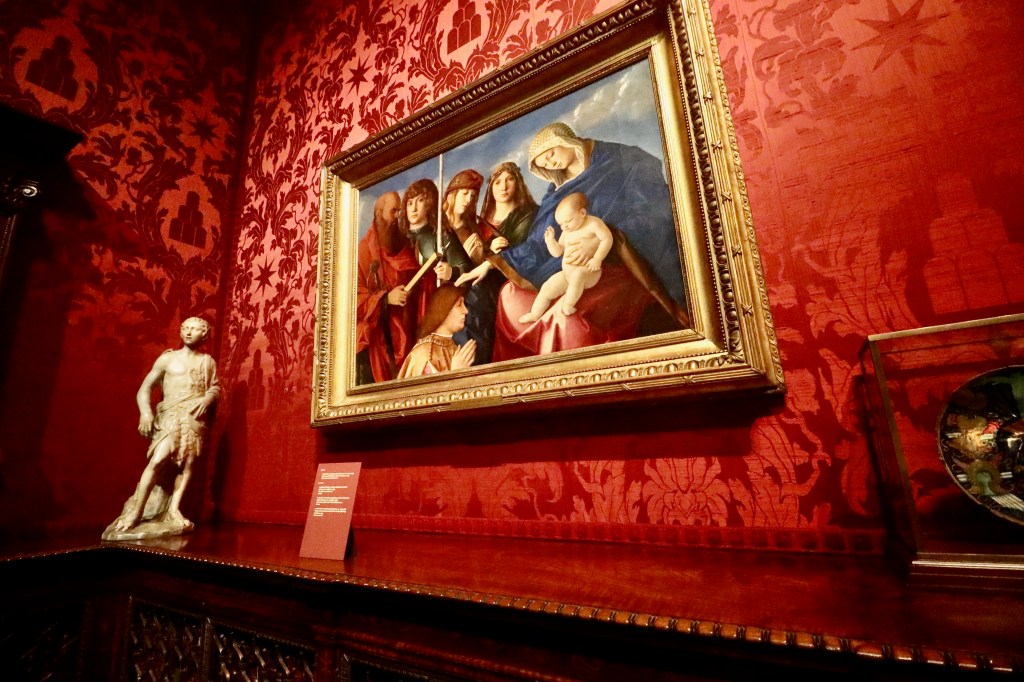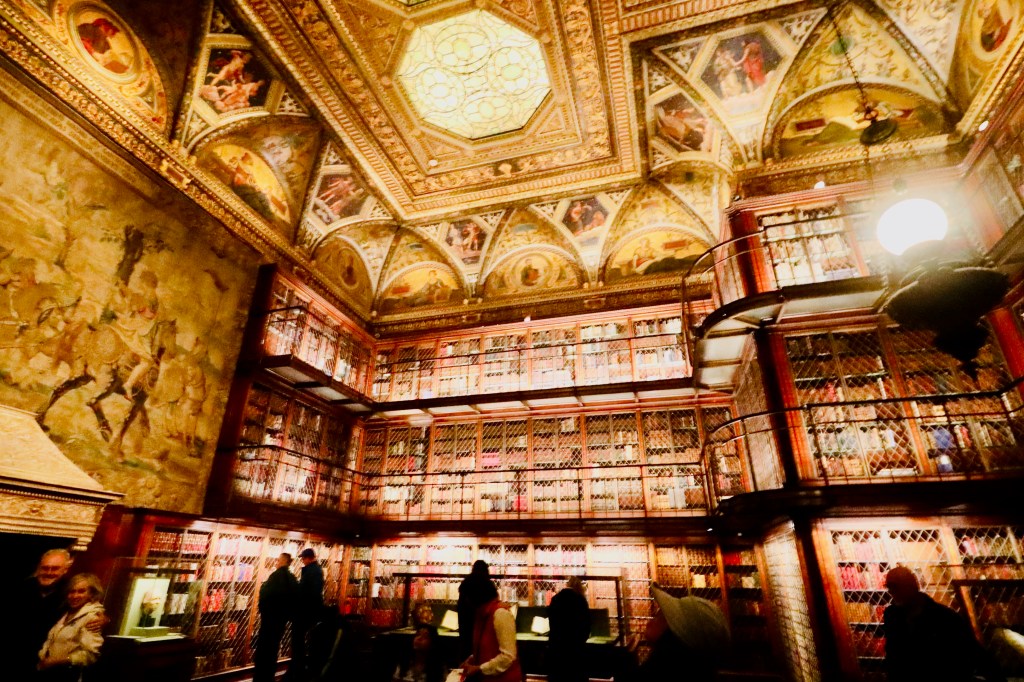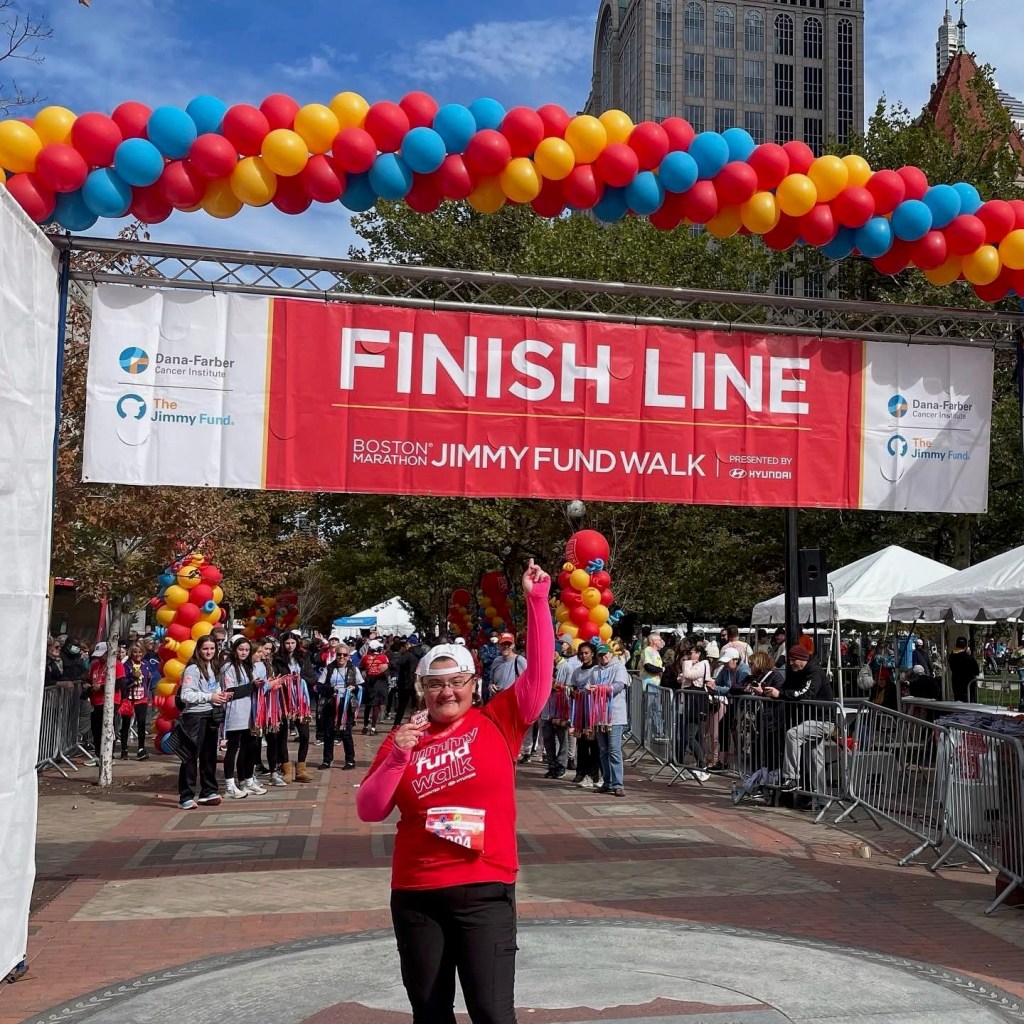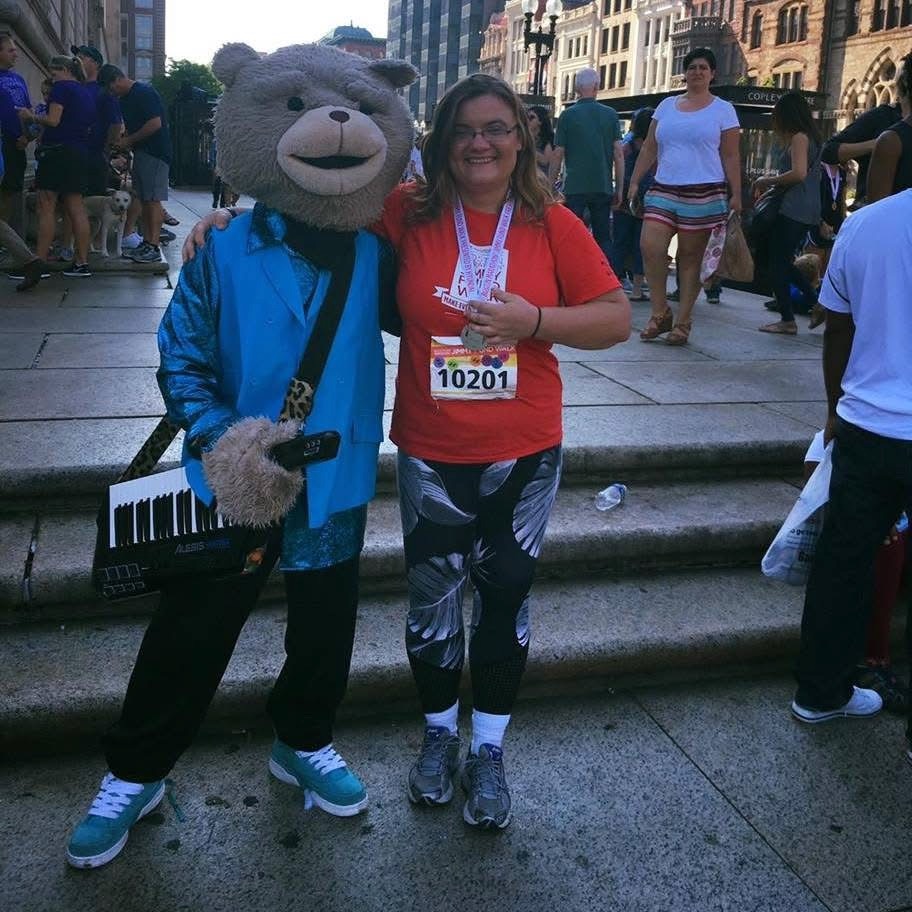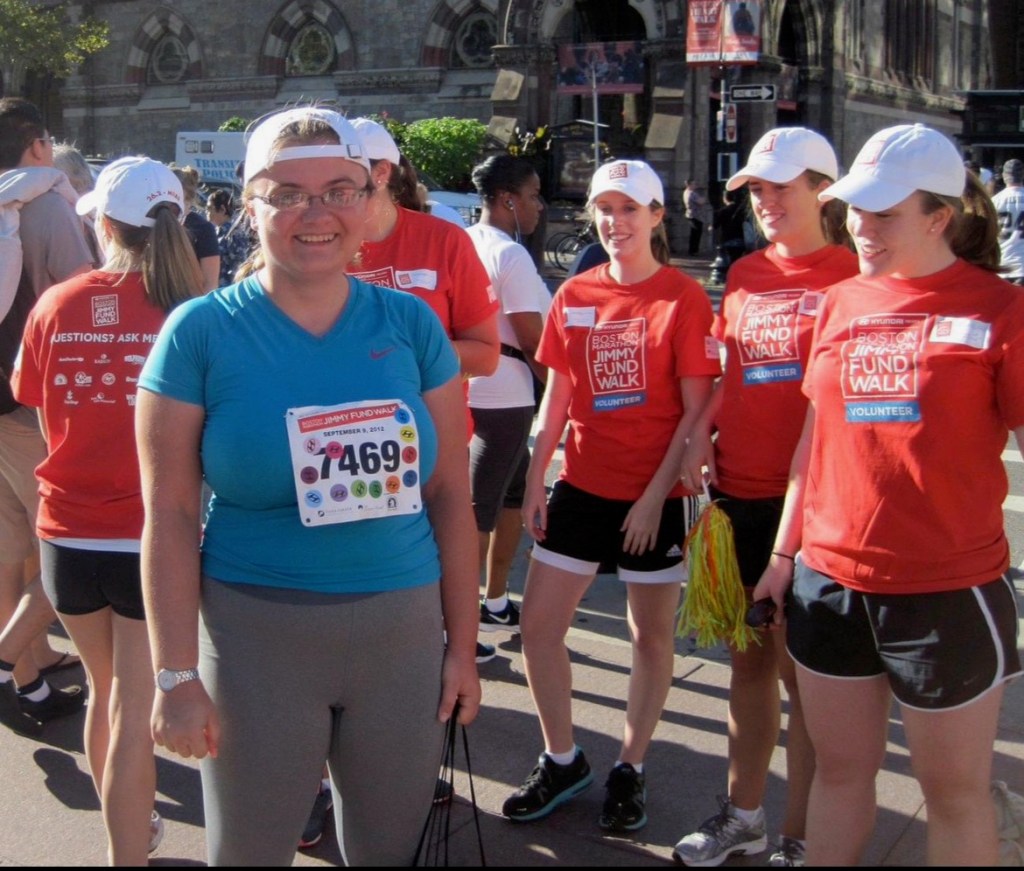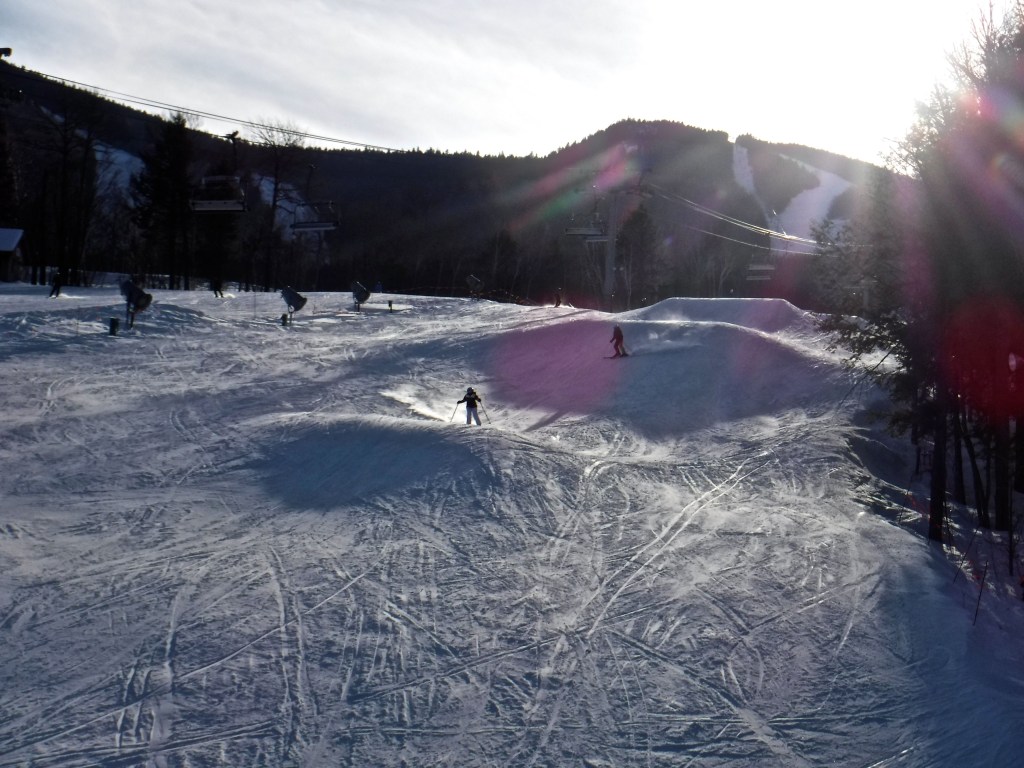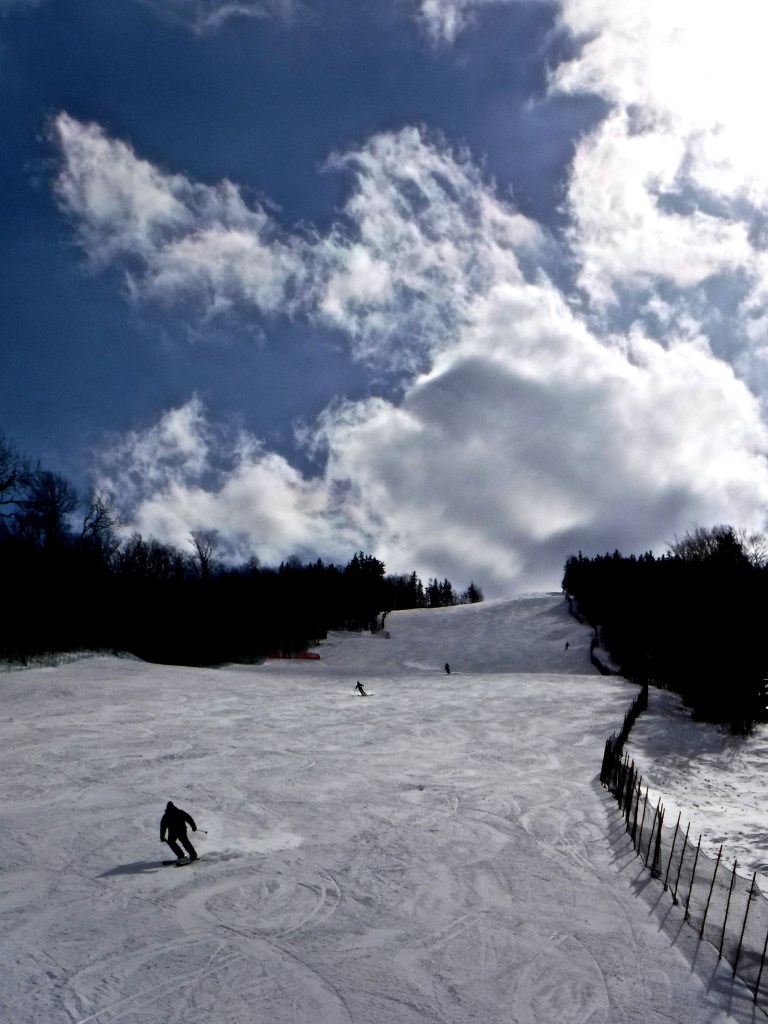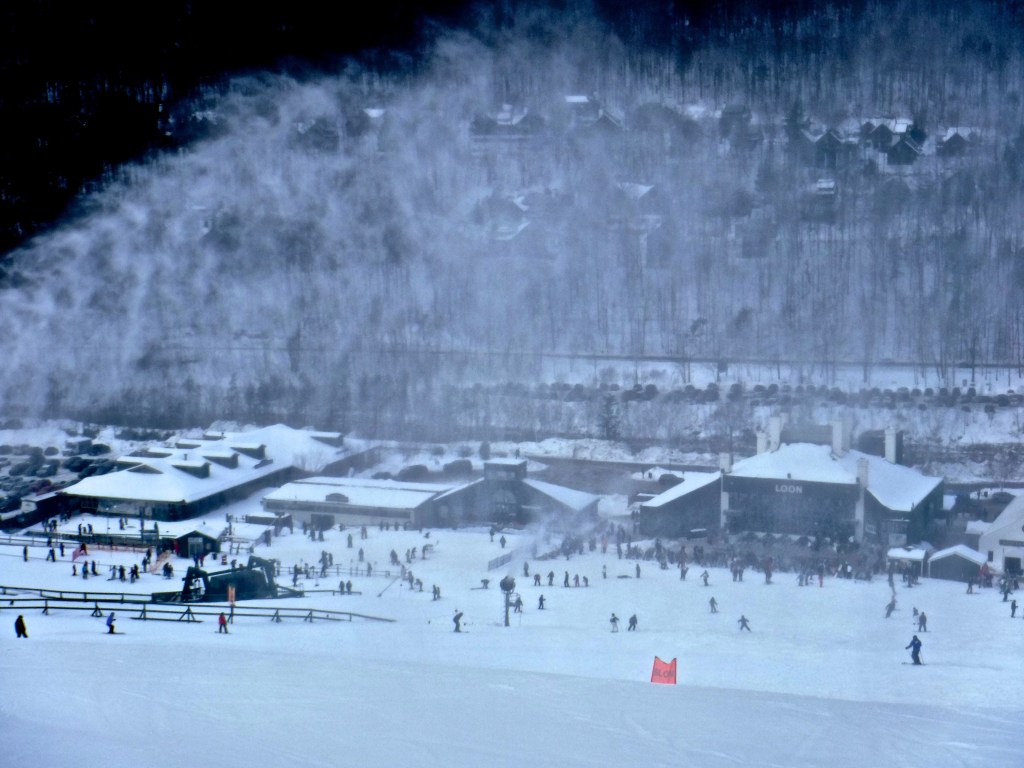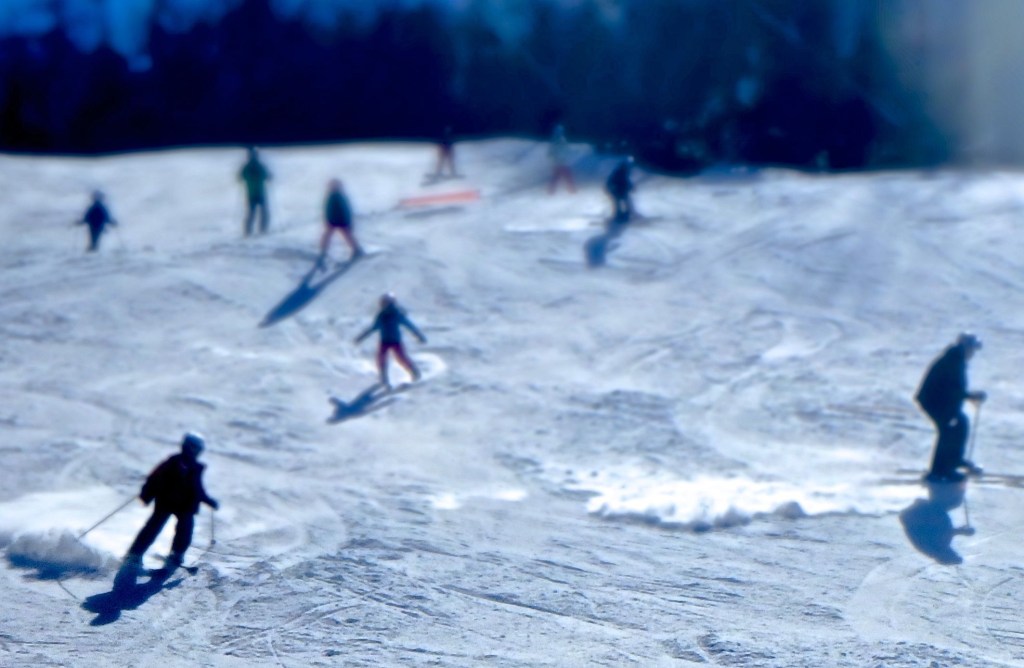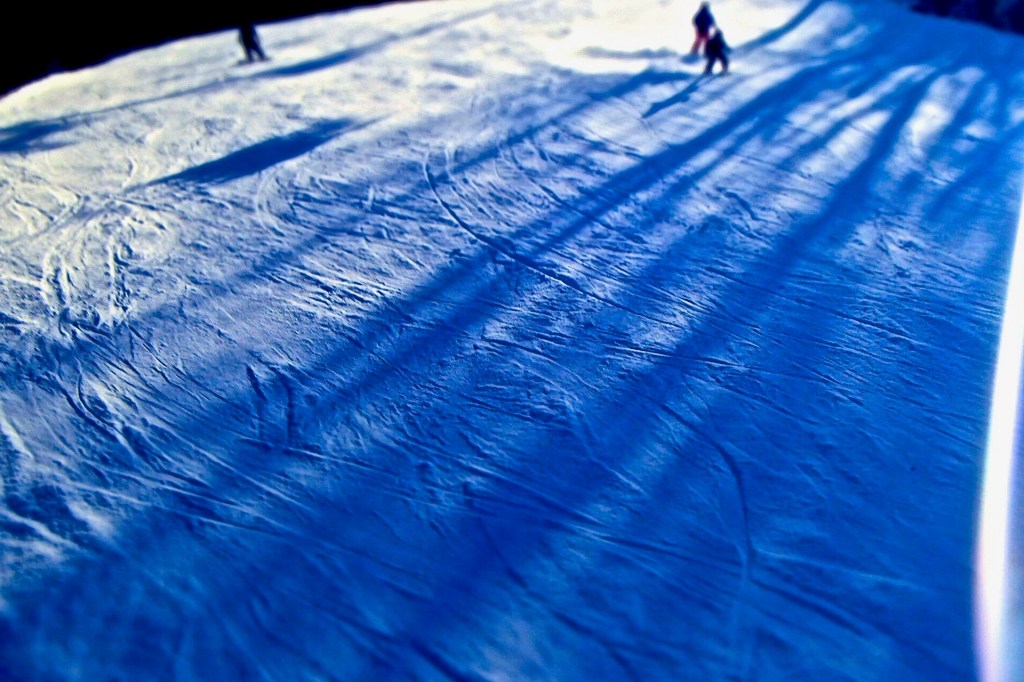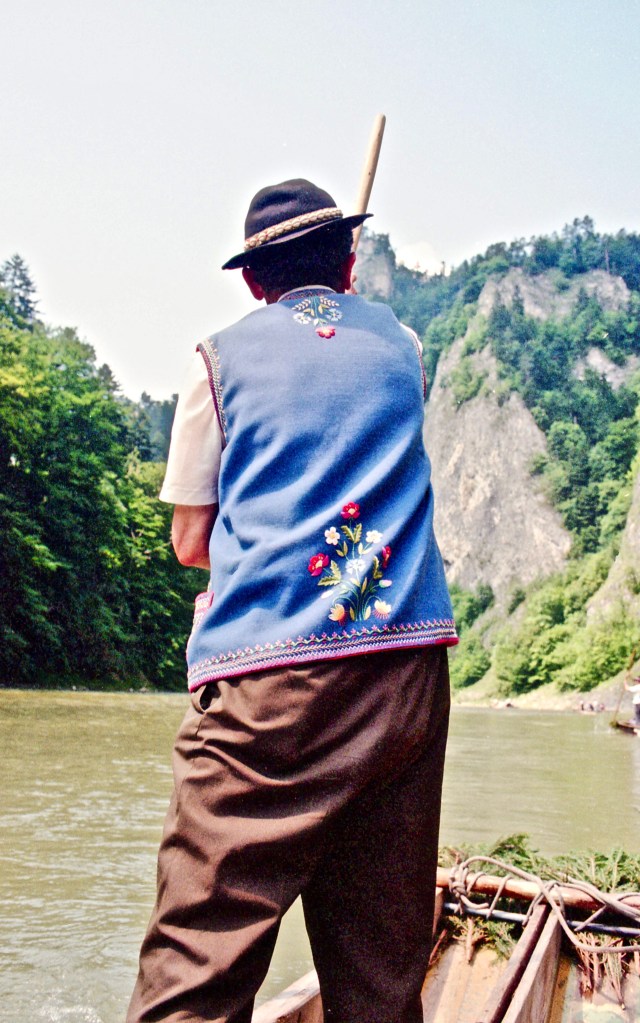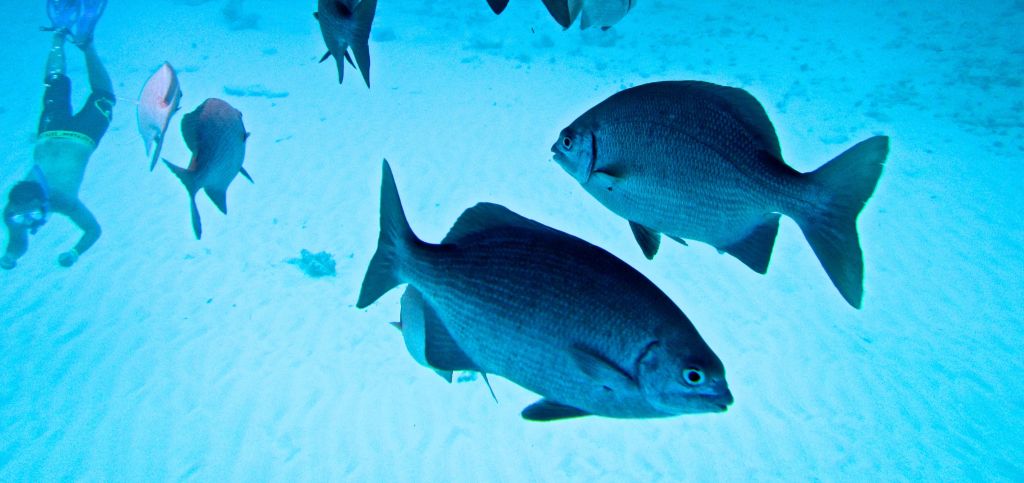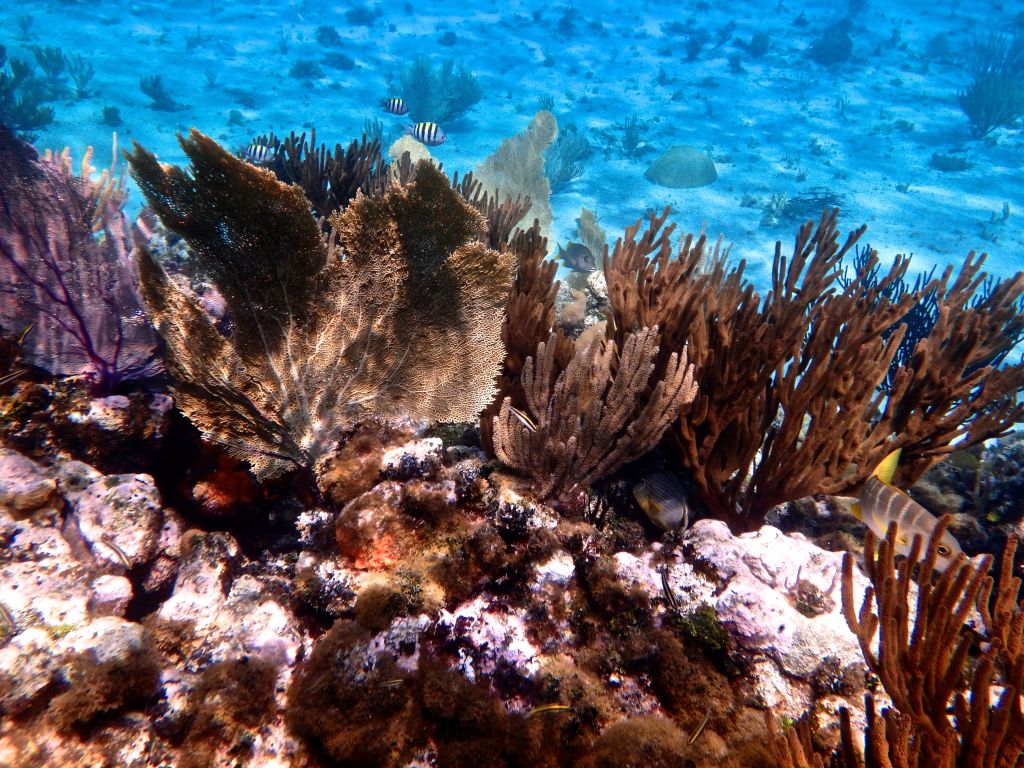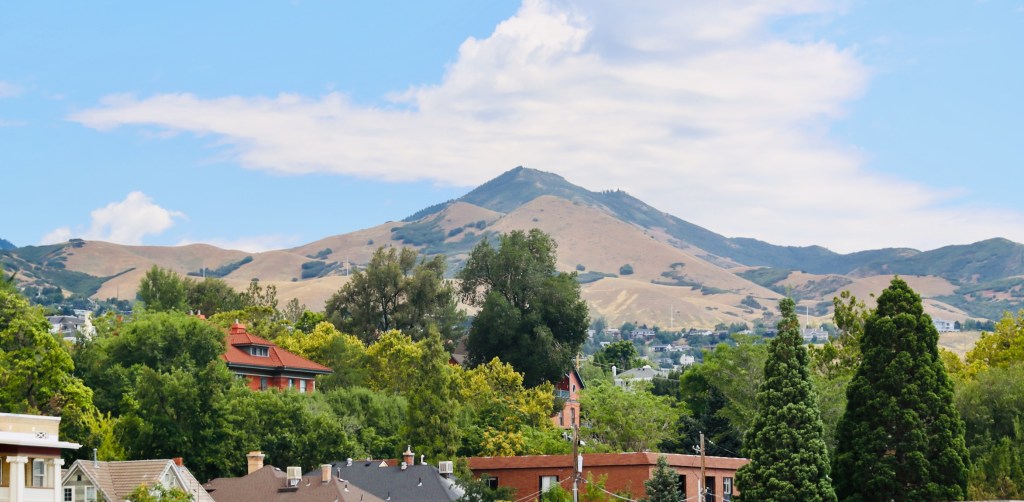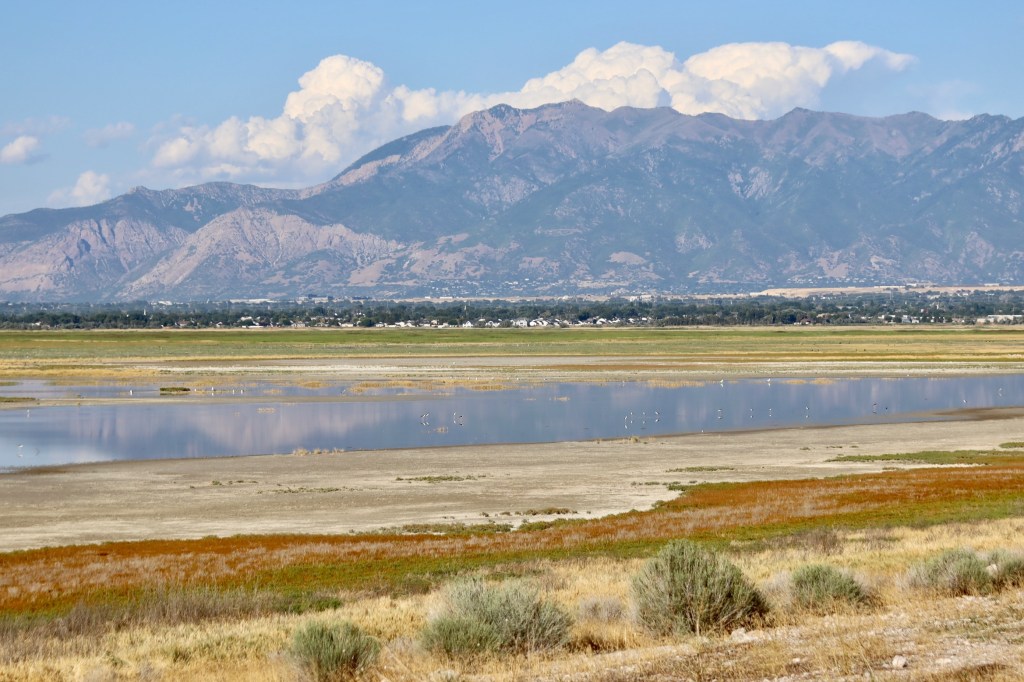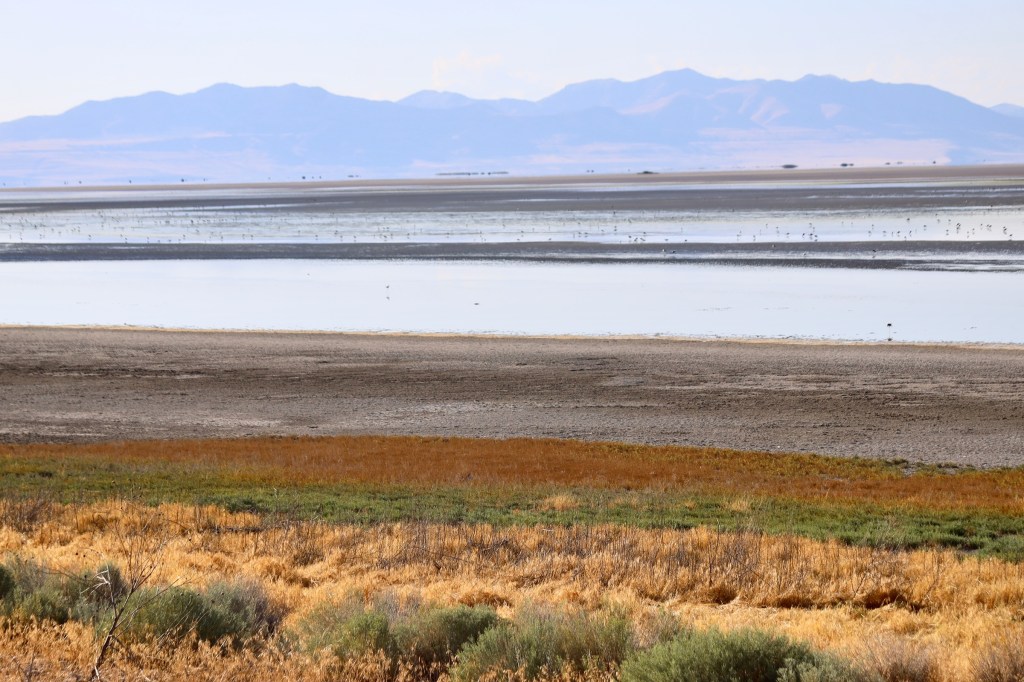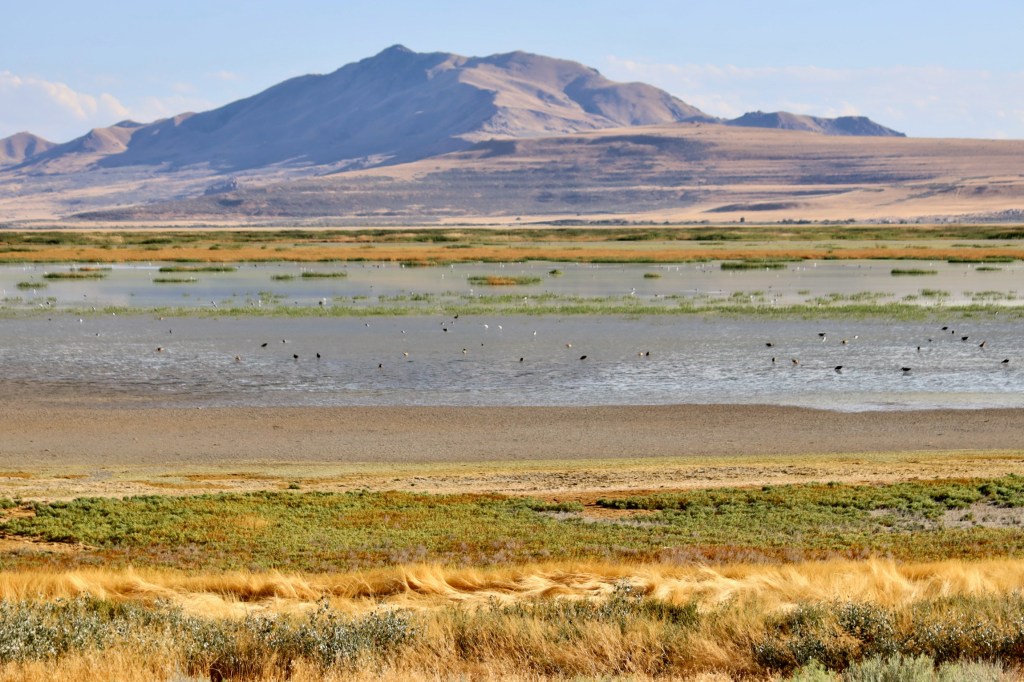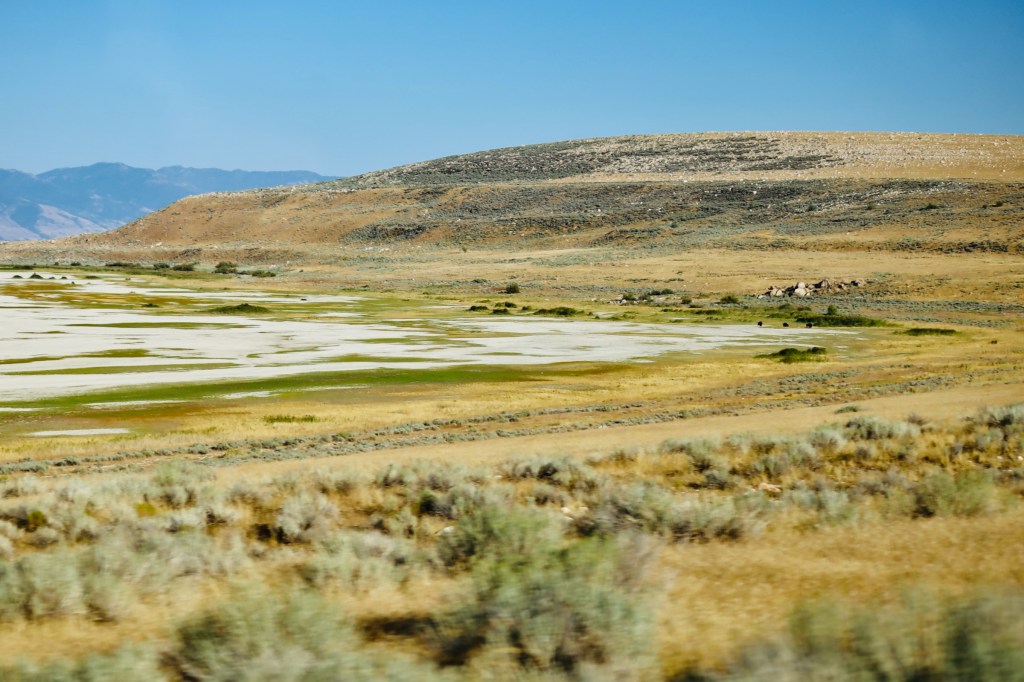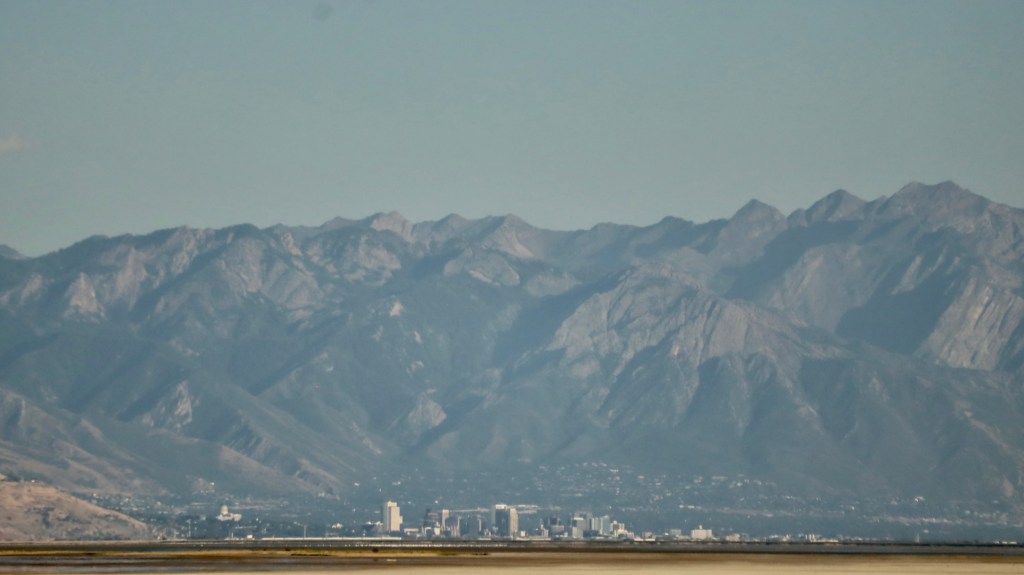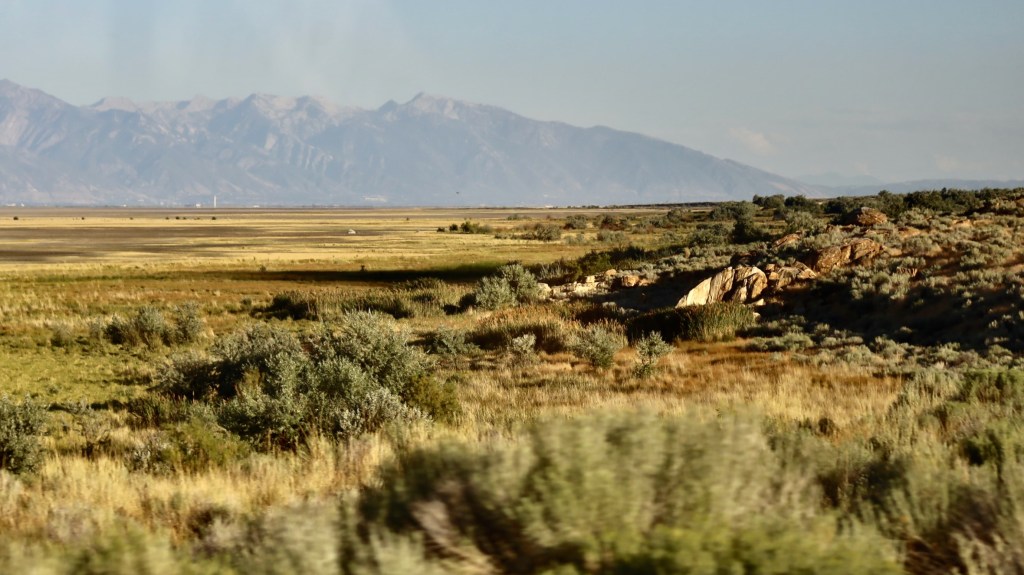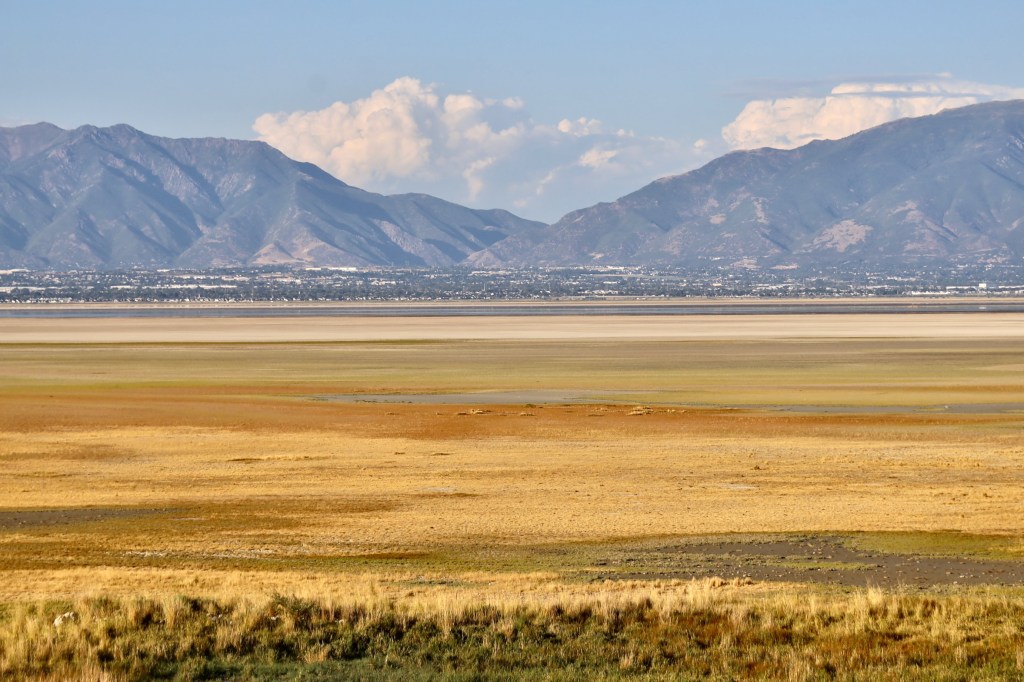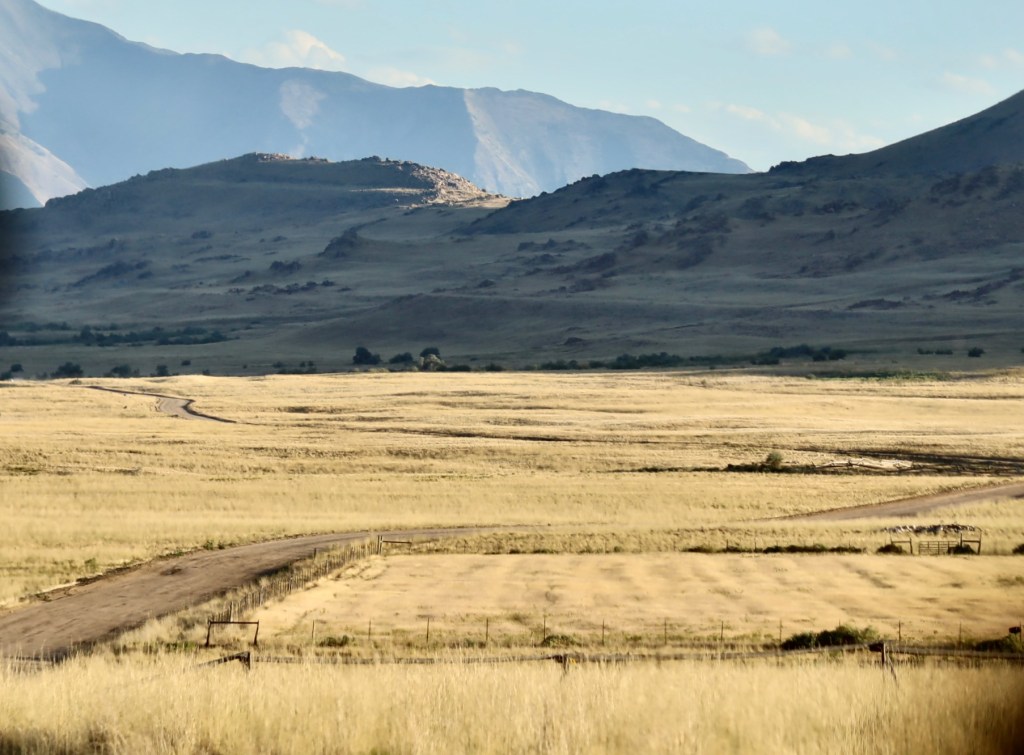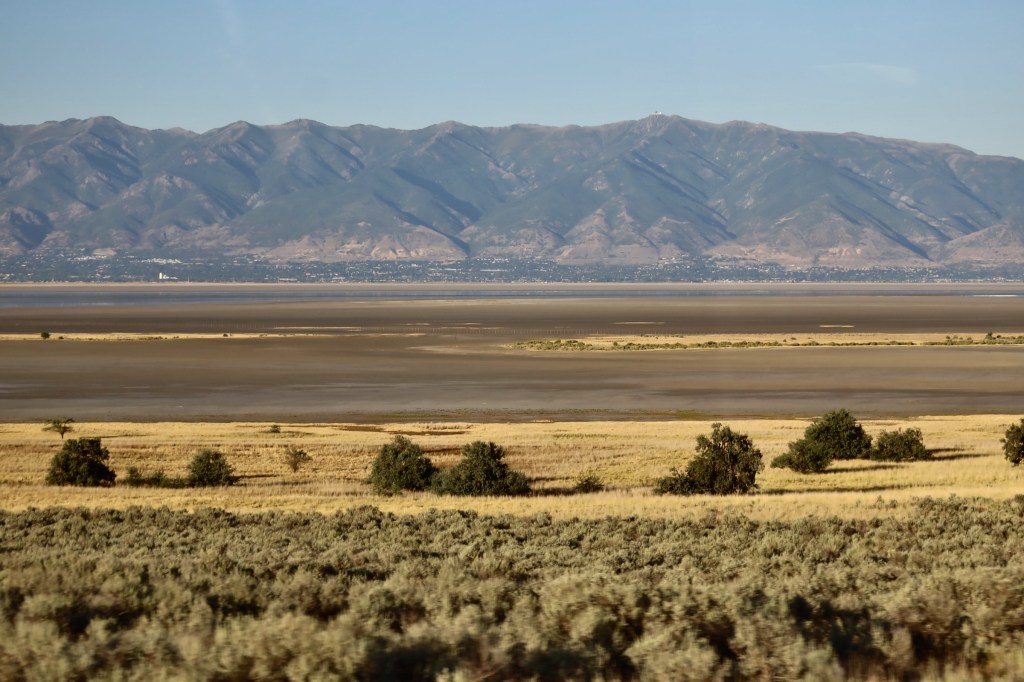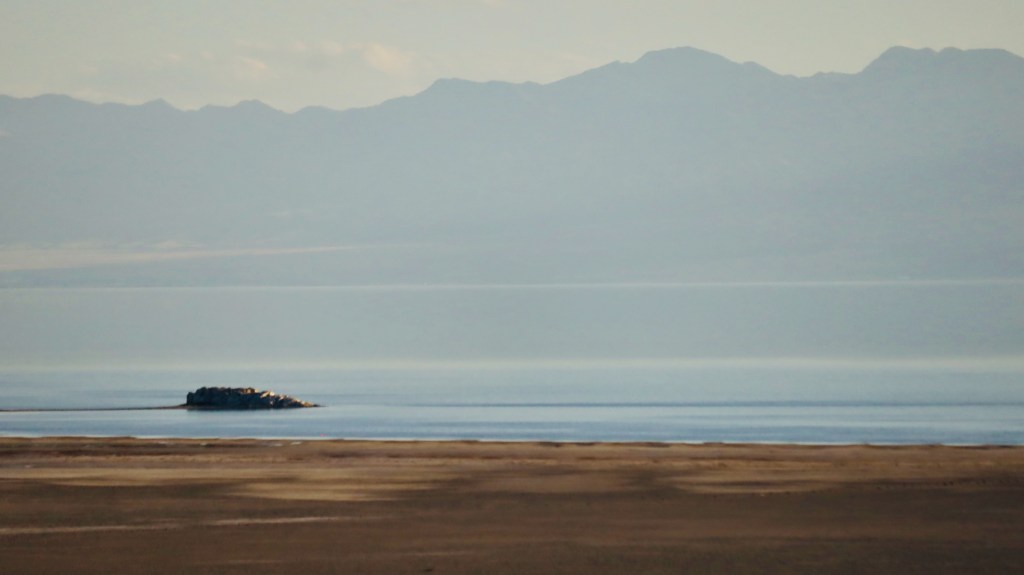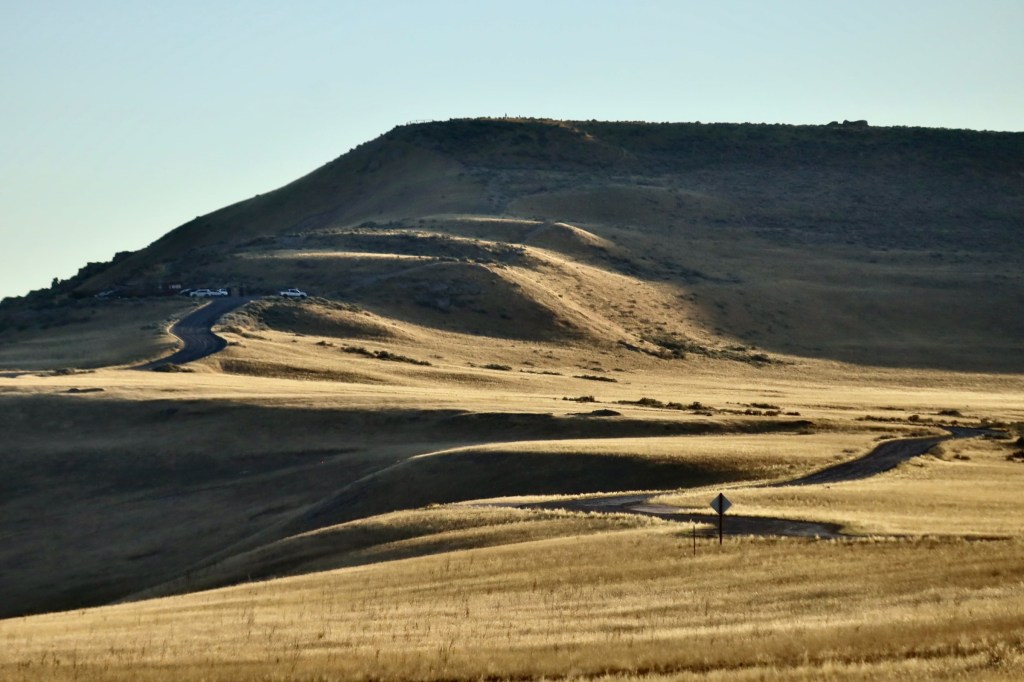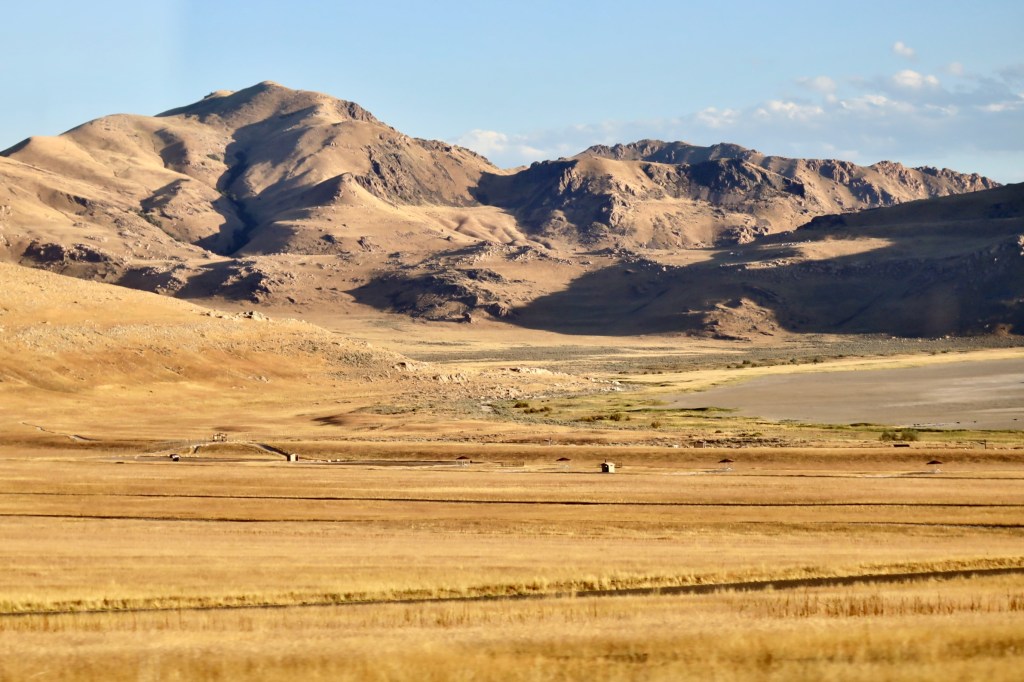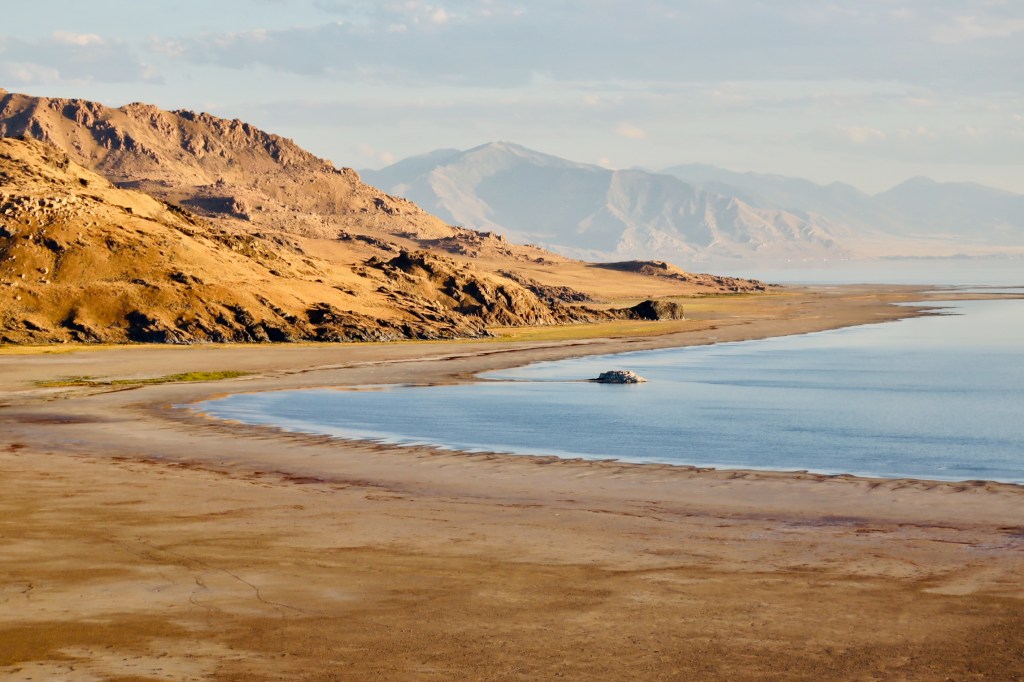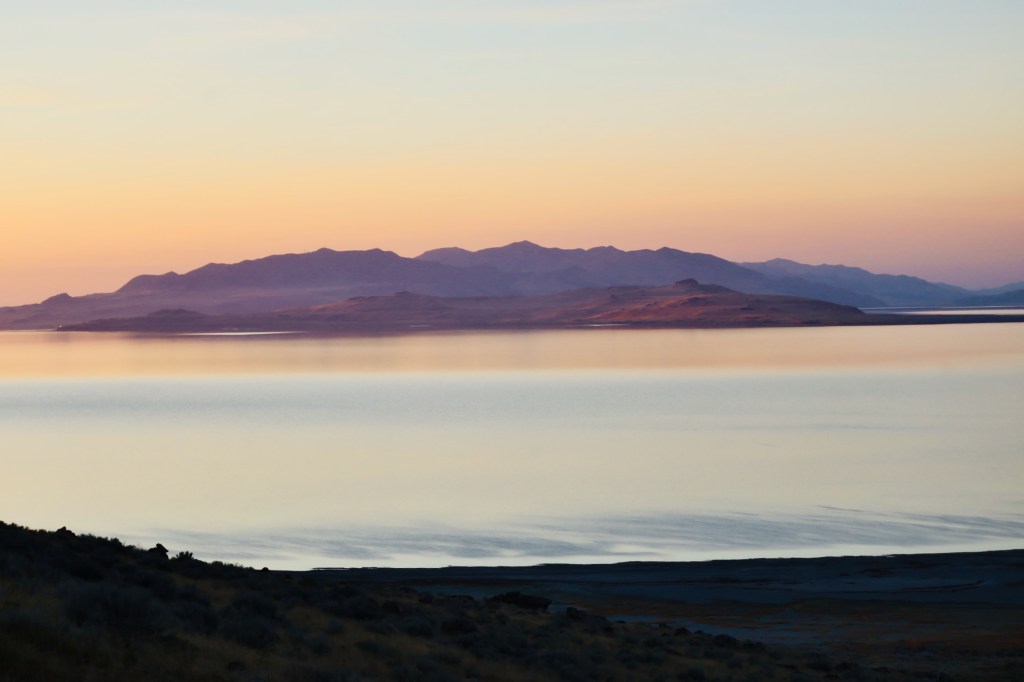Buckle in. This is going to be a long one. Thirty (who are we kidding) maybe 60 pictures for 30 years of life since I left home. If you know me, and I think you do, all 15 of you who read this thing know that I am an insistent chronicler of my life and here, here’s ALL of that. Well, not all of it. We don’t have enough time for that. NO ONE has time for that. But let’s say a bunch of pictures for a cluster of time.
In 1989, when I was 12 years old, and we had just sailed into the heart of darkness, the school I went to gave us these t-shirts that said “class of 1995.” 1995 seemed as far off as Mars. 1995. The year that would never come.
We blinked an eye and 1995 was there. These little kids were crossing a stage, receiving a high school diploma and proceeding out into the world.
I’m very prone to introspection and usually do it on this blog. I guess this is a time of introspection. When I sat down to write this all out, I thought I could just go with a laundry list of complaints. Well, I didn’t go to the undergraduate college I wanted to and wasn’t happy as a young person. I moved to DC even before college was over, thinking that was the answer to whatever was going on with me, but that didn’t work out the way I wanted it to. I tried Europe again, but that didn’t work out either. One day when I was about 30 years old, I looked around at this forgettable job I had, and I thought — how am I going to form friendships or a start a relationship? How was that going to work? Was that ever going to work, when I was in this place that made me so unhappy. In 2009, I thought — this is my chance. I need to take a huge risk. It could pay off or it wouldn’t but I had to at least try. And it paid off.
When I look back on these 30 years adult life, I can’t get over how incredibly messy it’s all been. How many seemingly insurmountable obstacles I had overcome and how many insurmountable obstacles I wasn’t able to overcome. As one of our church songs says, with our backs against the wall, you made a way. For 22 years of my adult life, I wasn’t a believer, so it was all on me. But I kept going. A way always seemed to appear.
Passing this 30 year mark makes me think about how many things I desperately wanted to work out and they just didn’t. How many times I had to just walk away from things that I had worked really hard to get. And how easy it was to just restart your life, believe it or not.
Another thing I realized as I compiled this entry is how much of this seems impossibly glamorous. I talked my way into some pretty rarified rooms, but I spent the majority of my life thinking that these rooms weren’t that rarified and I guess I had gotten into the lower part of the rarified. I had gone to the White House for work but THEY had been invited to the Christmas party at the White House. I had seen the president but they had SPOKEN to the president.
The thing I’ve learned is that people who look down on people that way are not good people. That might sound trite and naive and people might question why it took me so long to come to that realization, but come to it, I did. I’m not saying that the people I’m around now are perfect, but they’ve gone through the pain in their lives and come out on the other side better and more at peace with the world. At our recent church retreat, the light went on the dashboard of my car indicating that one of my tires was low on air. A dear church friend came over and refilled my tires with air. He’s a person who hasn’t been in any rarified rooms and it absolutely does not matter, but again, who cares? Why do we even evaluate a person’s worth based on something that is so stupid? What good is it going to do you when the air is out of your tires to hear that someone went to the White House Christmas party? Nothing exactly like that happened to me when I was in DC, but things that were pretty close to it.
I guess more than anything, when you look at this entry, you’d think from the pictures I took that it was all smooth sailing for me, but I can promise you, it really wasn’t.
On the topic of the hard times, one day in church, our pastor said that we wouldn’t be able to recognize the good times if we didn’t have the bad times and I’ve certainly had my share of those, but what I noticed, is that the bad times usually result in good times following. I didn’t like high school, but that pushed me out into the world and made me seek out bigger and better things, rather than becoming a townie still going to the same four boring bars over and over again and standing in a backyard, reliving my glory days when I ruled high school. Then again, that was never going to be my future anyway.
I thought my life would get better when I went to college. I looked around at everyone at college and I could not understand these people. Everyone was so dark and sarcastic. And everyone had to drag everyone else for the music they listened to. I still remember how a kid trashed everyone for liking Pink Floyd’s song Comfortably Numb. That was something that was pretty prevalent there.
I can’t help feeling though, some nostalgia for that time in my life. There’s this revival of 90s dorm room decor nostalgia. People are actually hiring interior decorators to decorate their kids dorm rooms now, which is… weird. Everything for the ‘gram, I guess. College kids in the 1990s, we were broke, so we just decorated the rooms with what we had. We glued pictures to the walls. We had crazy technology set ups. We worked with what we had.
Back then, people weren’t documenting things to the degree they are now. Well, ALMOST everyone wasn’t documenting things to the degree they do now. As part of working for the yearbook, we photographed the students dorm rooms. It has this time capsule kind of feel to it, rooms long gone, lives that have moved on from this moment, captured in amber forever.
1990s dorm room decor at it’s finest:
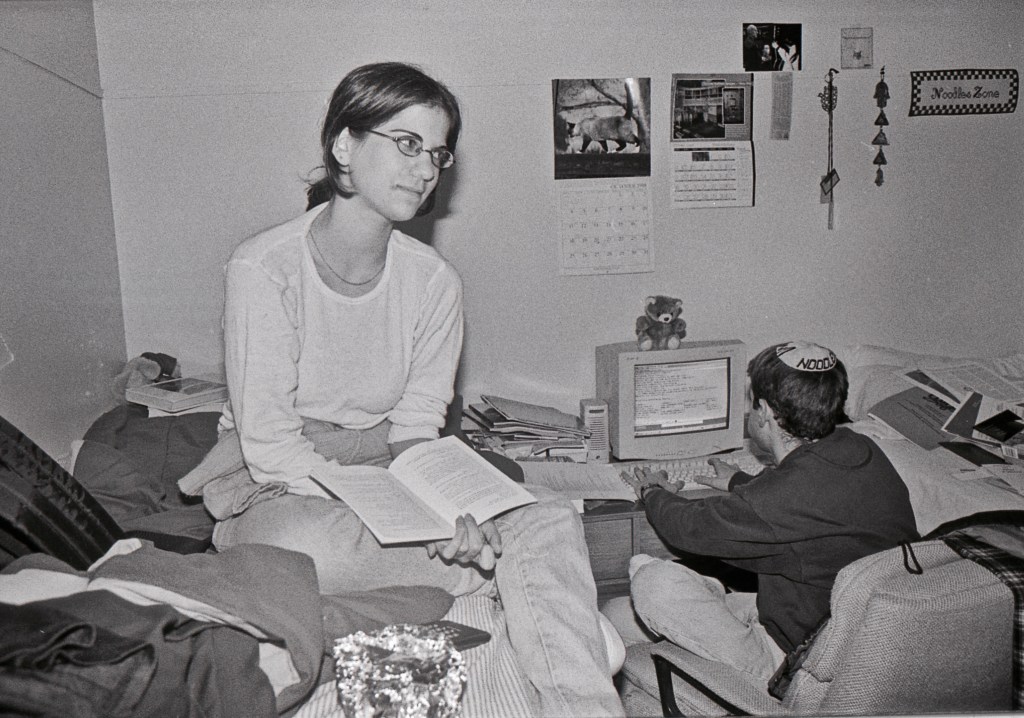

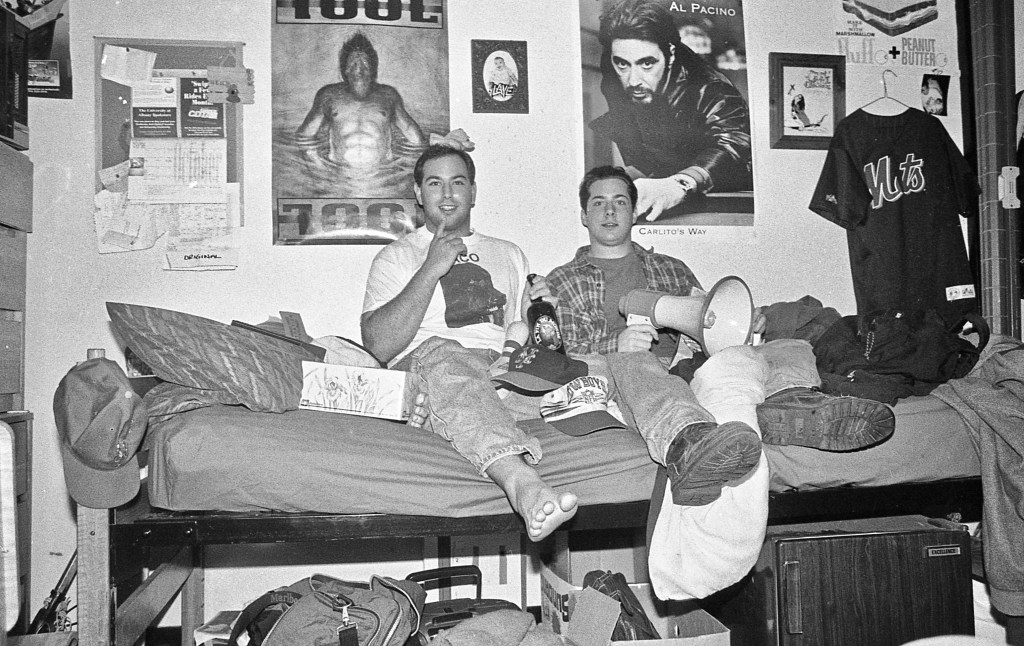

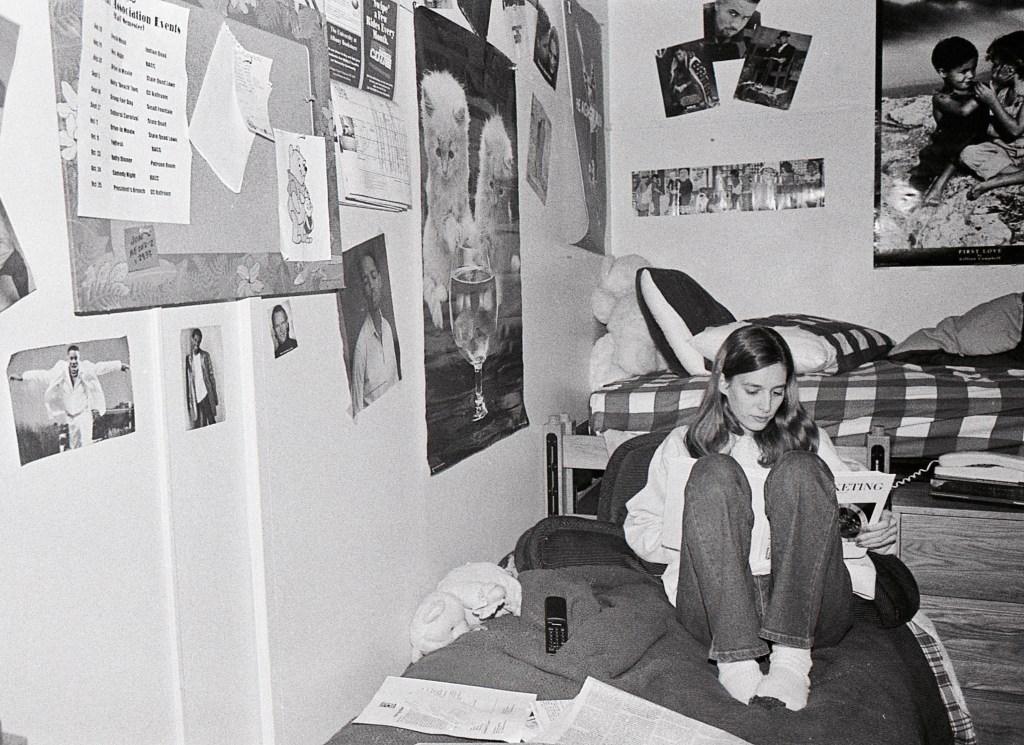

I’ve talked a lot about what a seismic shift Denmark was for me. It was great, horrible, life changing and life ruining in a way. Just like everything else in the last 30 years, I didn’t know what it all meant until much later on.
Again, going with my tendency to document absolutely everything, I photographed Albertslund, this planned community near Copenhagen. This was the view of the dorm I lived in at the time and the smokestacks of the power plant that also served as a night club:


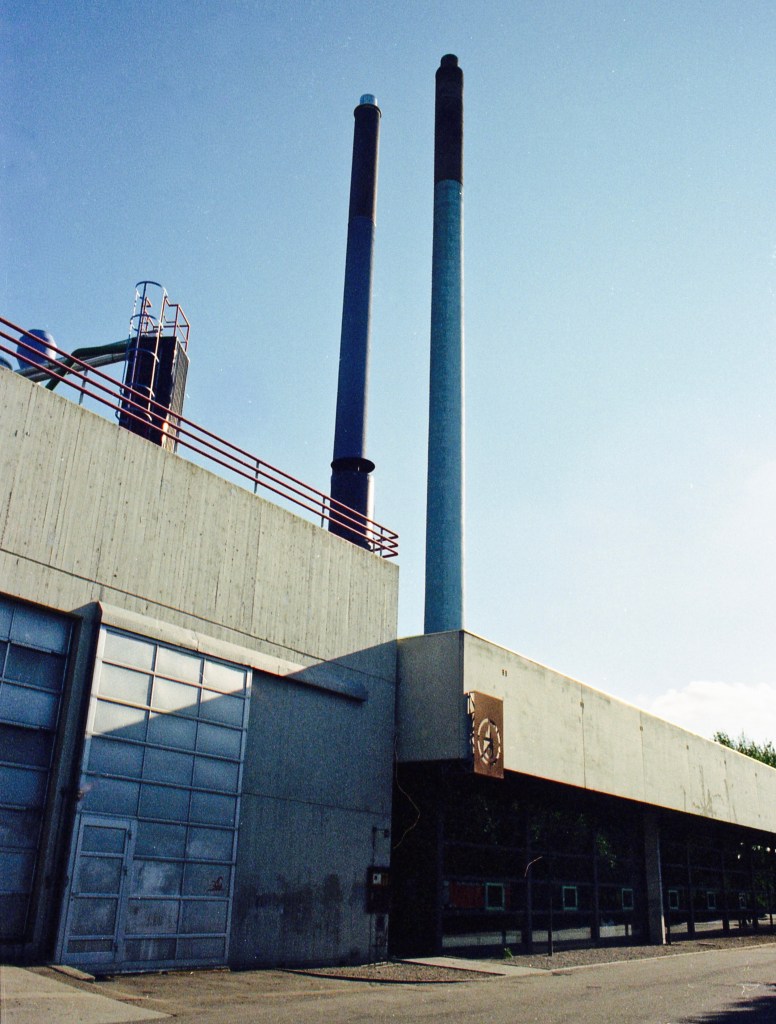
Recently as I drove up to New Hampshire with some friends for our church retreat, we started listening to music just to pass the time. I learned long ago not to play my music for people because they would tune out or not like it, so I usually refrain.
Alas while we rode to the retreat, I felt like I had found a receptive audience, so I played “You’re Not Alone” by a band named Olive. When I was in Denmark, this type of music called Trip Hop was popular. Olive is a trip hop band. I’ve listened to this song on every device I have ever had that plays music. It was the background music to the whole Denmark experience.
YouTube has a short clip of the band performing the song on the British countdown show Top of the Pops. The video hits every single 90s thing. When I watch it, every emotion from that time returns to me.
I was trying to find a really 1990s Europe photo but Denmark has looked the same since the 16th century. But then I remembered I had this photo, which I have shared up here before. This man was a tour guide who told us about socialist Copenhagen and he was a masters student at the time. You can’t deny that he looked incredibly cool. I can just imagine the guy’s life at the time, just cool AF.
This man oozes 1990s Euro cool:
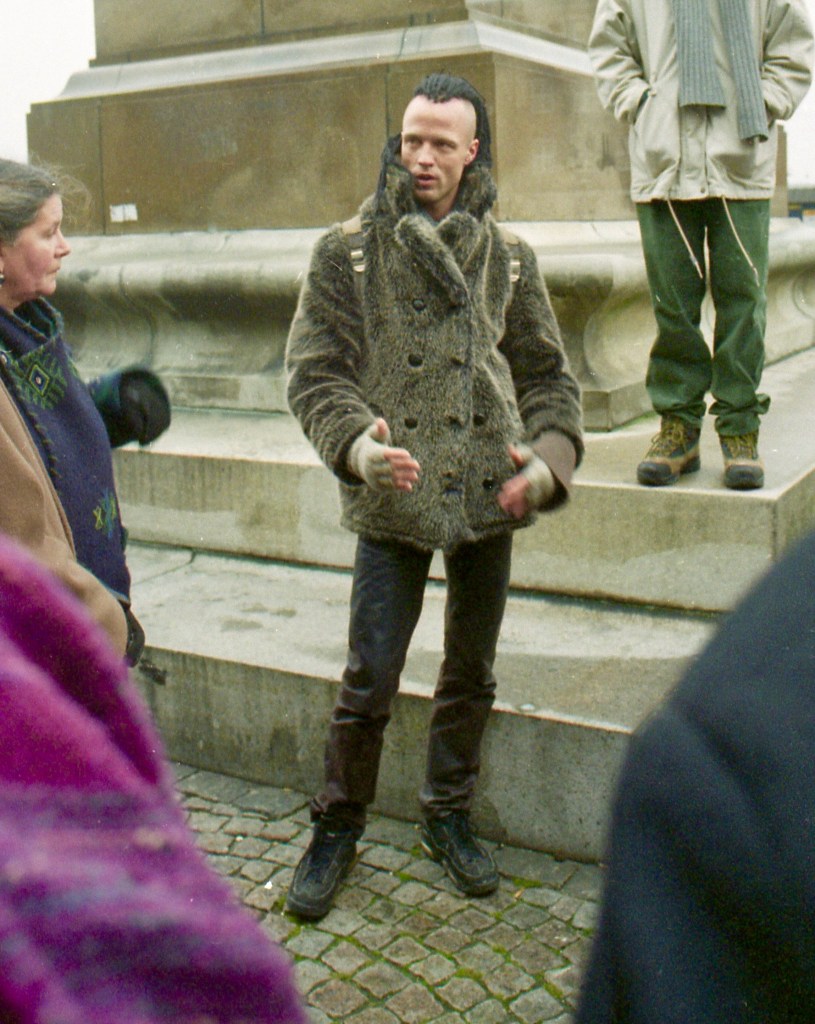
1998 was a rough year for me because I returned to the US and had a kind of reverse culture shock. And I didn’t understand why things had felt normal for a half a second and now I was back at this place I didn’t like. I know I shot some photos, but they are lost to the sands of time. I guess this started my tendency to put the camera down when I was upset.
I did pick the camera back up when what I would call the first part of the wilderness years started. I went to study in Krakow that year at the Jagiellonian University, in this language program they had, to learn Polish, because heretofore, I spoke the language like a middle schooler. I couldn’t really write in the language and couldn’t really read in it that well. It was something I felt like I should do. It would be strange if I couldn’t speak the language that my whole family spoke natively.
I took a class where we toured the city as part of a very cool art history class. The teacher was a curator at the Wawel castle, the traditional royal caste in Krakow. We continuously wandered the city and saw all the sights there but occasionally had classes up there. I remember rushing up to class there one day, looking up at Wawel, thinking how cool it was to be able to do this.
Here are some views I captured at the time:
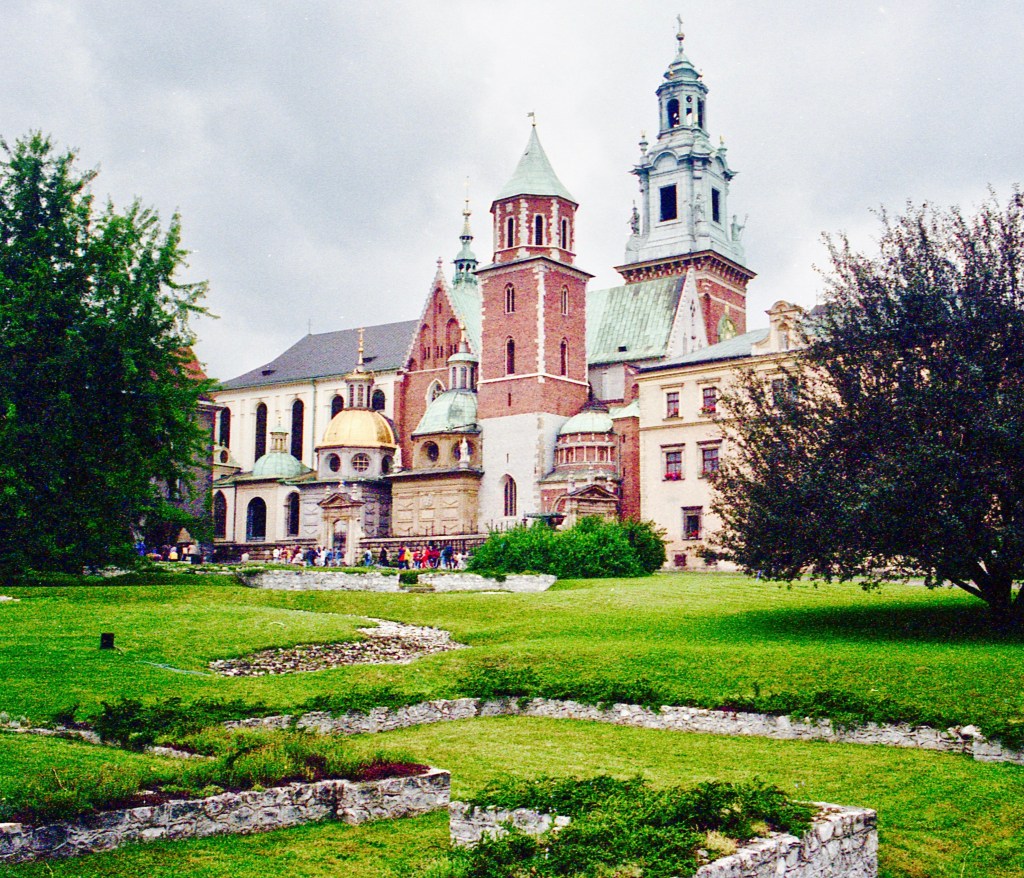

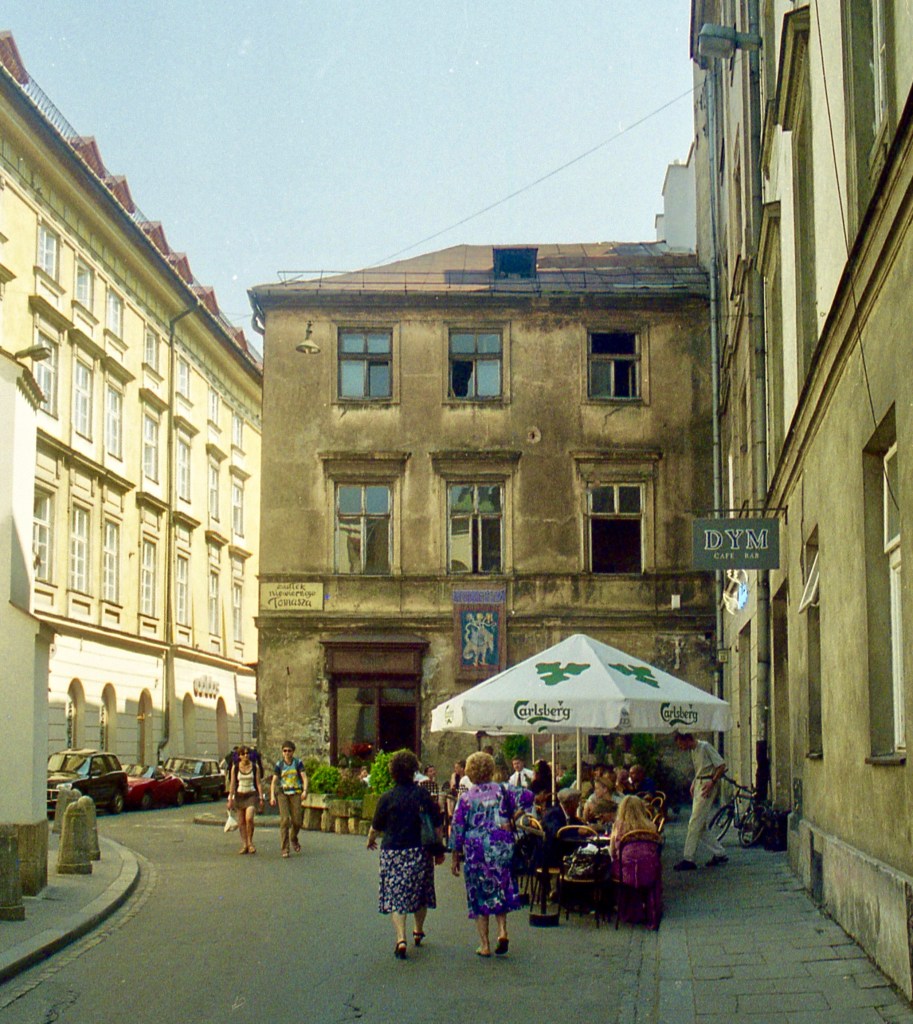


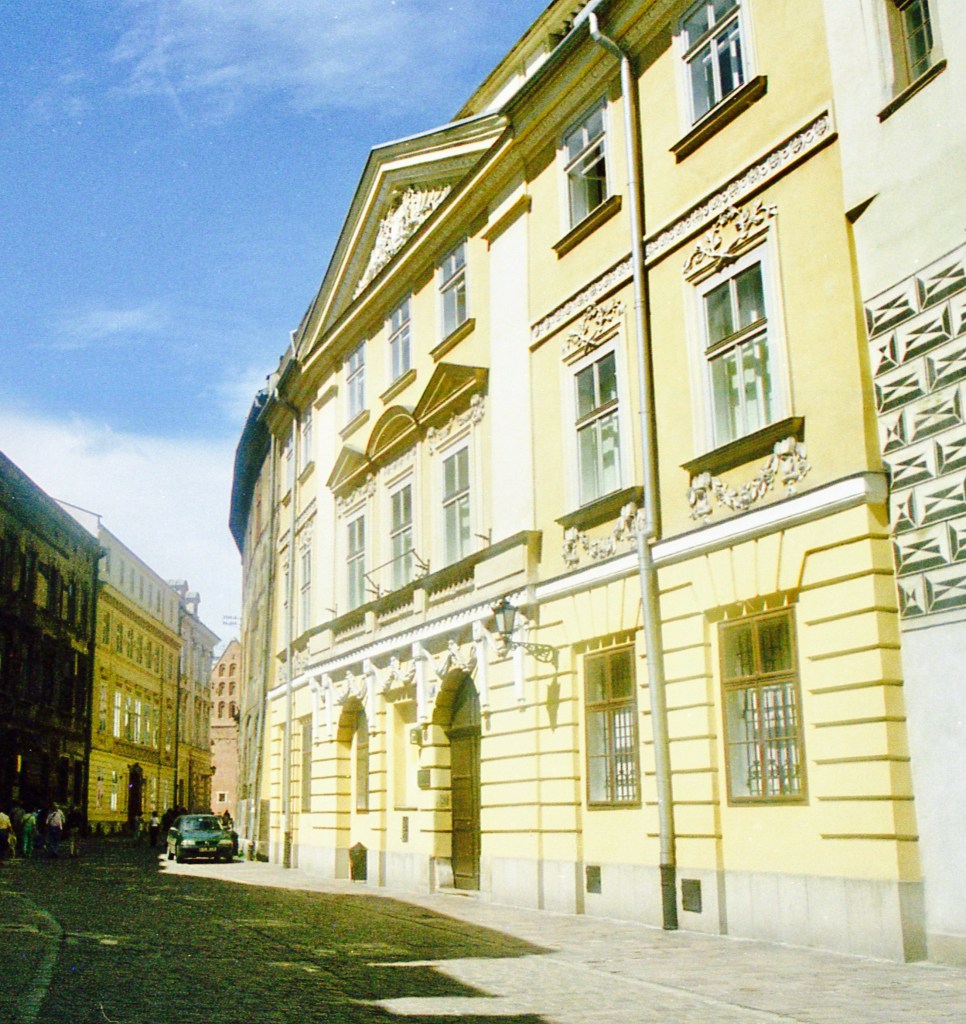
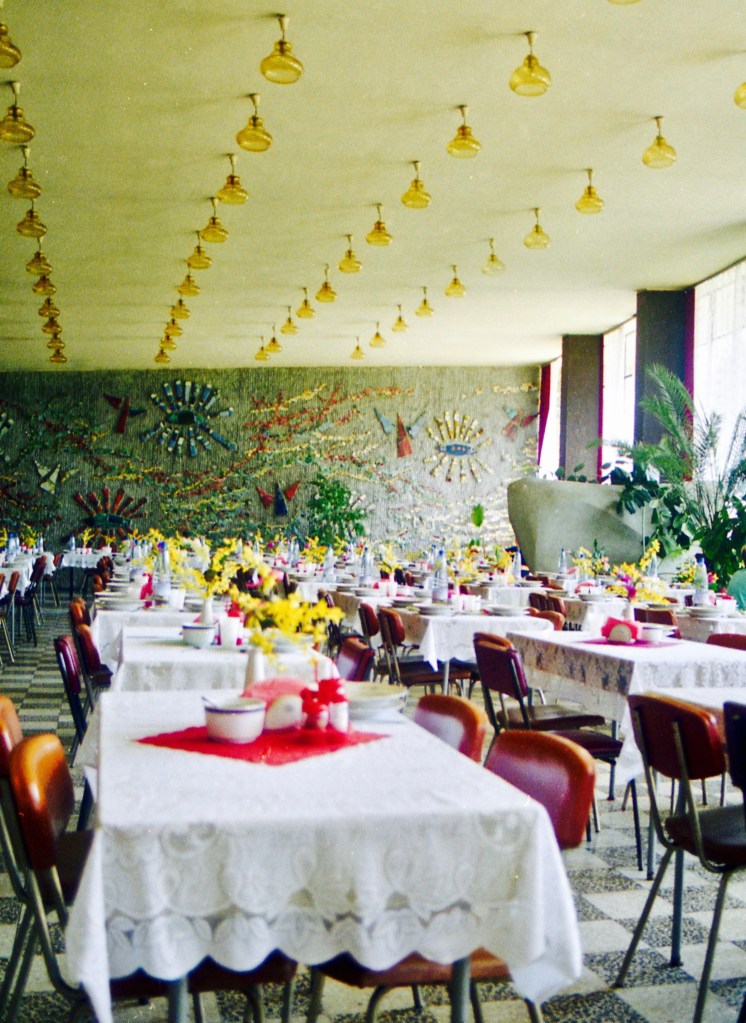


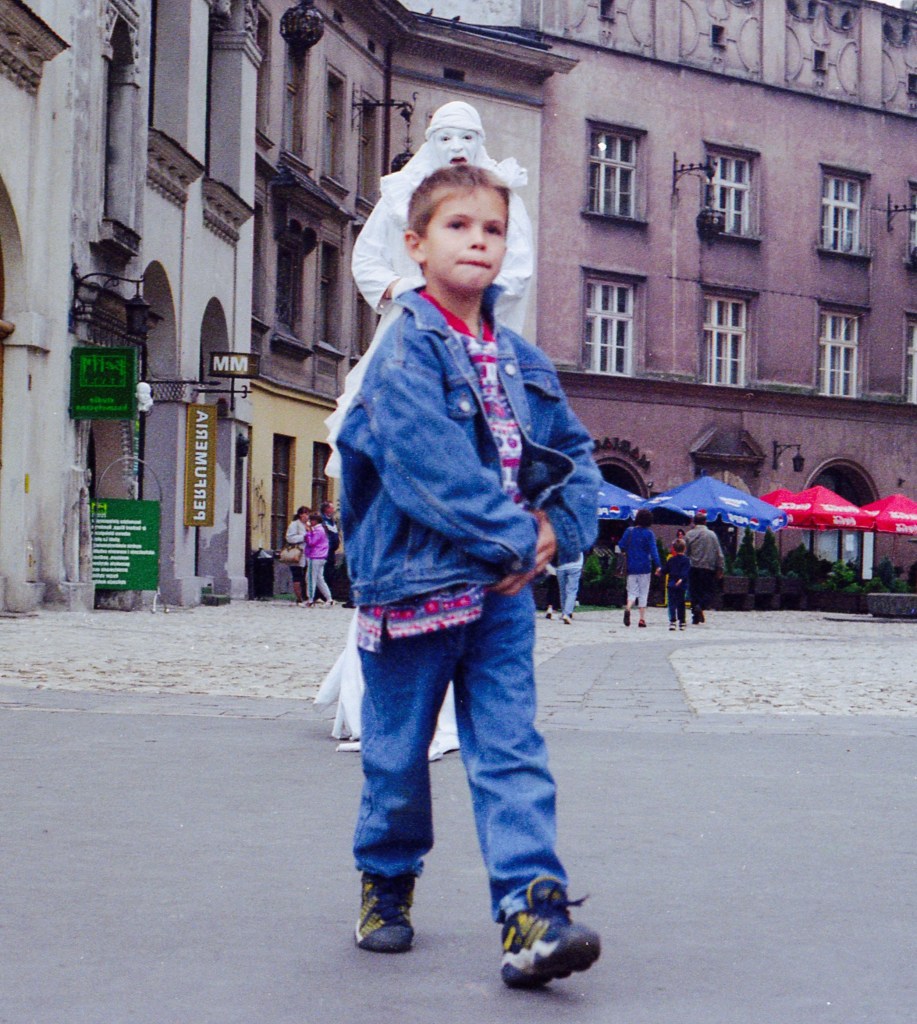
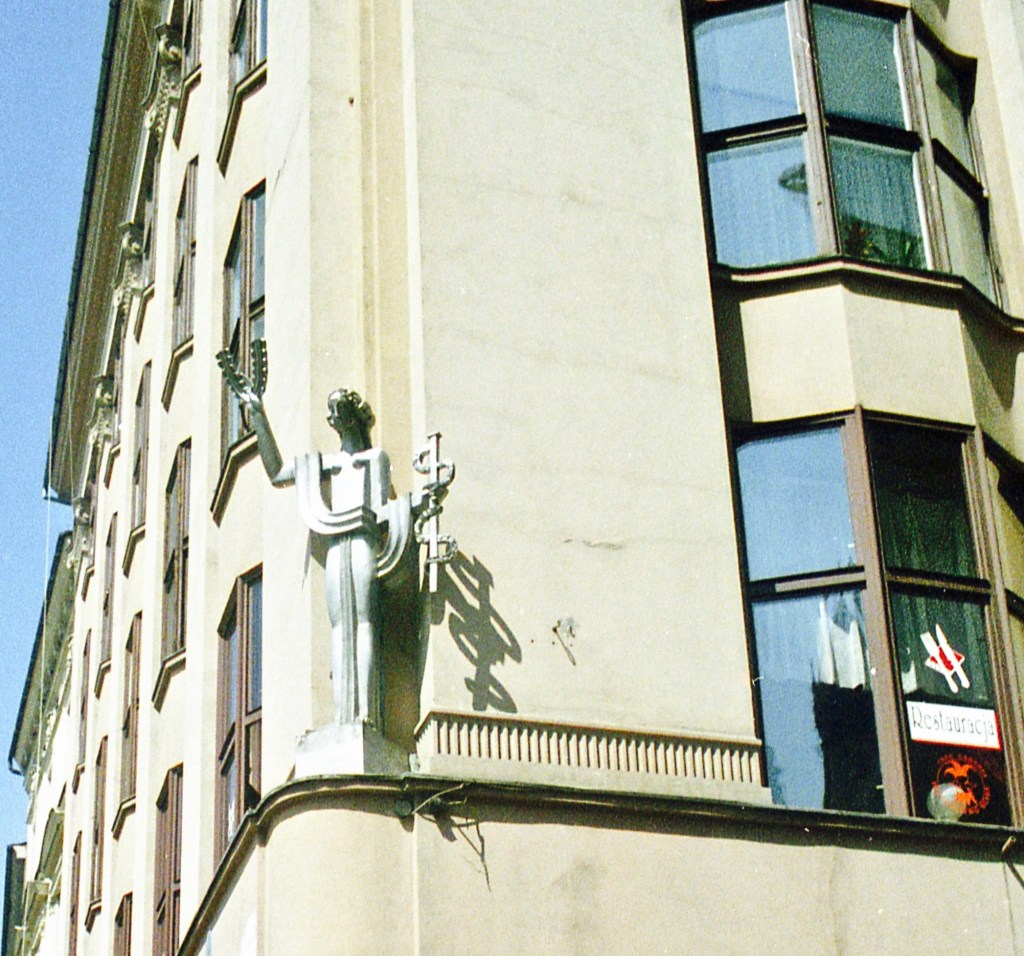
I also managed to unearth a couple of pictures from the oft mentioned wilderness years, including the esteemed Hotel Olkusz, in the jewel of Lesser Poland, the town of Olkusz:
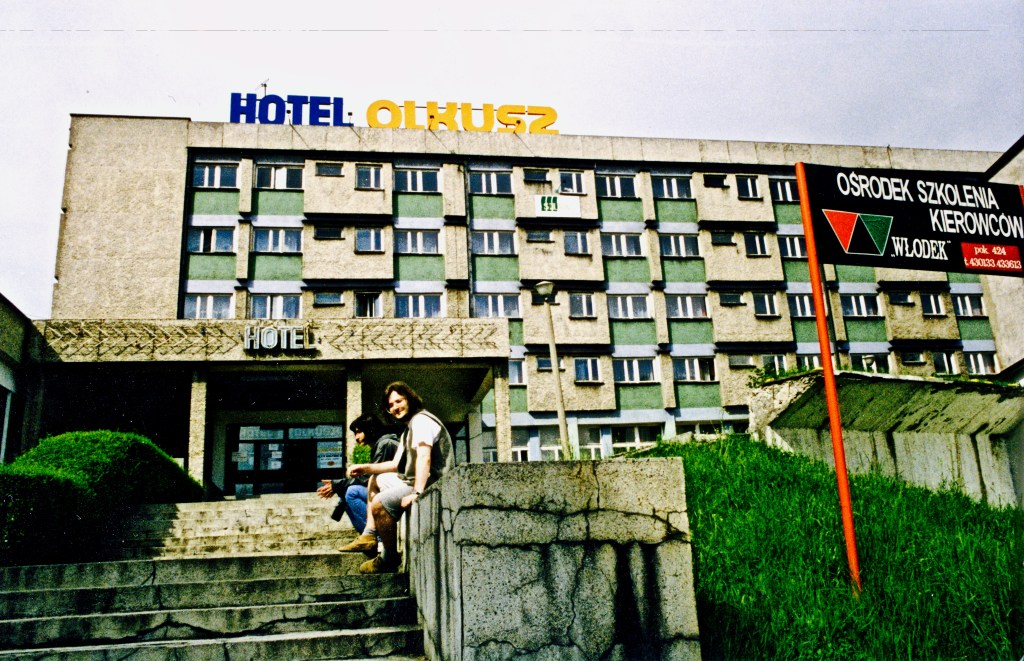


Hotel Olkusz has (or had) this kind of gritty Polish socialist architecture, as did this beauty I photographed in Kielce in Southern Poland:

The wilderness years also involved meeting this character, scoutmaster and priest Pogodny Orlik, or for those of you not fluent in Polish, the Benevolent Eagle. Yes. One of those funny Polish train encounters:

The next year was a bit better. I didn’t want to finish college. I was bored and didn’t want to study anymore. I went to talk to my college advisor and he told me get my GPA back up so I could apply to be an intern in Washington DC.
Amongst my internship class, I felt like an outsider, my sort of accustomed position. I was never “in” with anyone. There because I was good academically, but not necessarily accepted. I look back on it now and I was sort of a ridiculous person in that group but maybe we’re all ridiculous at that age. I definitely stuck out.
As far as my professional life, I loved what I was doing. I got to work in the policy office of the Voice of America with a group of people who set me up so well for professional life, people I was able to continually go back to for job recommendations and help time and time again. I also got to meet some very influential people and just see what work like that looked like from the inside.
Of course I have all of the average DC photos and over time, that evolved, but I also got some really funny ones when I was first there. Here’s a few from the institution known as Drag Brunch. Oh Drag Brunch.
Pictures:
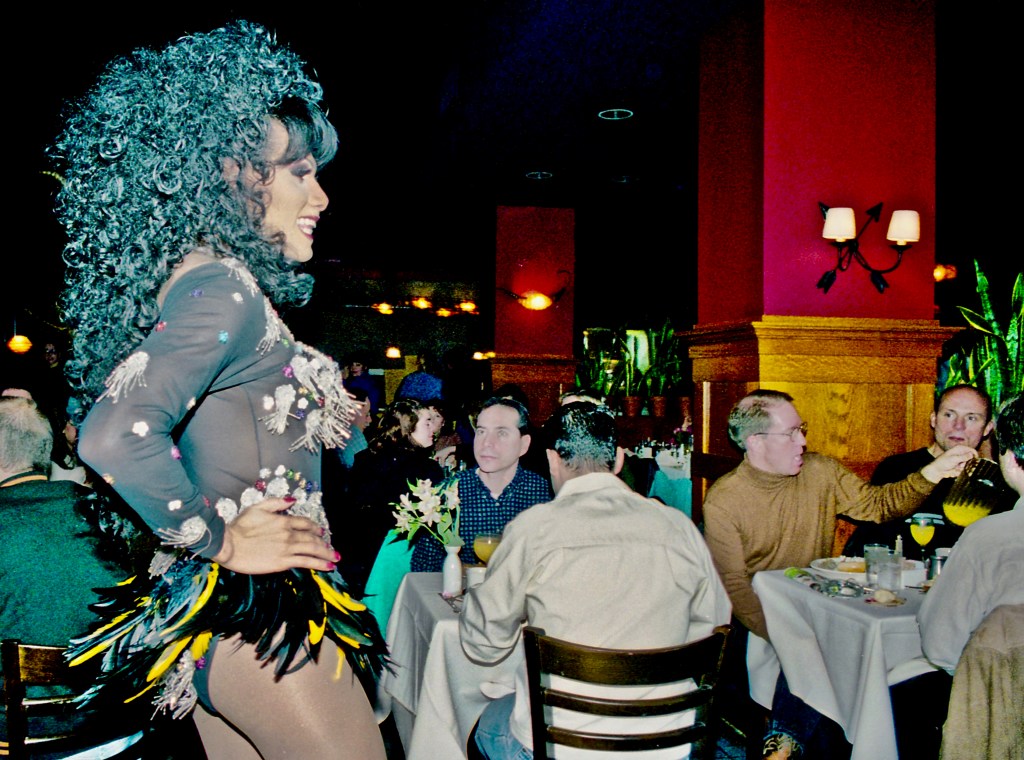
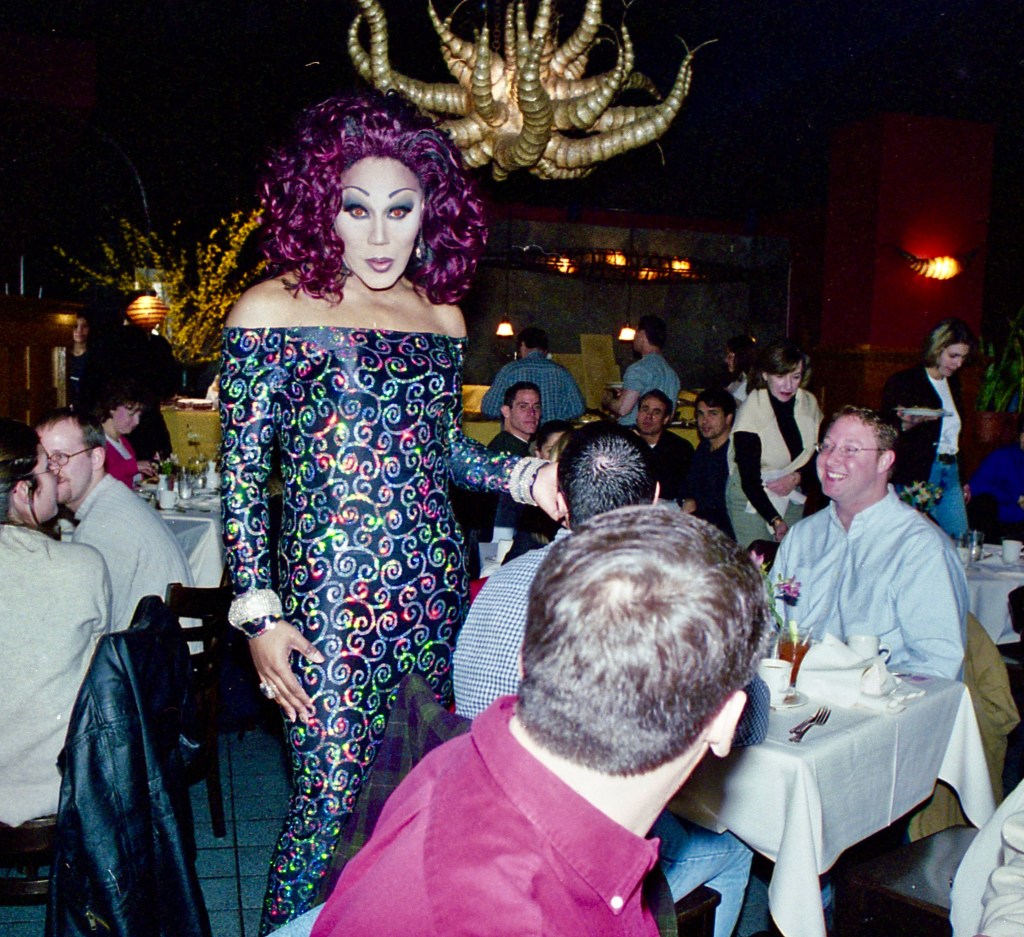
And you can’t be in DC without seeing a man dressed as cocktail sauce. Yes. I said what I said.
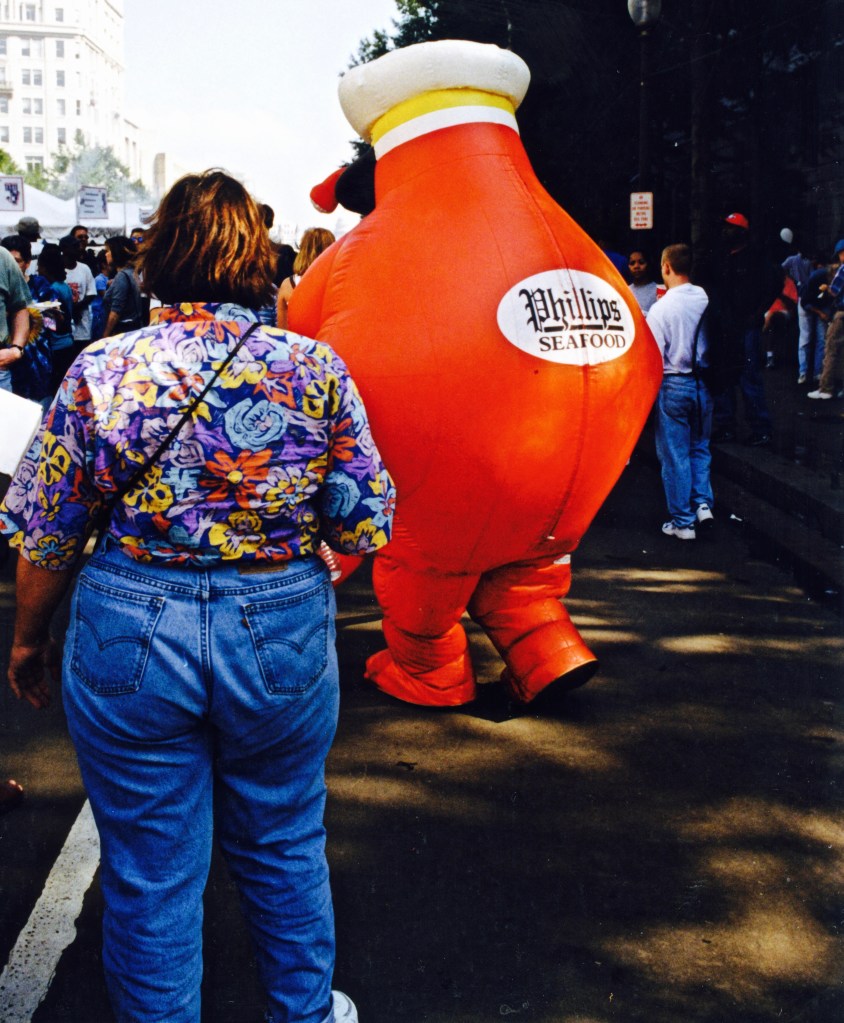
Oh and this one is a picture I took of Steve Forbes at a campaign event during one of his quixotic runs for the presidency. Honestly, I miss the days where BORING people ran for president. The event had it’s own kind of humor to it, with the Forbes family going up on this stage every hour, with Steve telling the same canned jokes and everyone getting a card with Mrs Forbes’s recipe for beef stew. Old Steve was advocating for a flat tax and all the traditional Republican platform items. A classical Republican.
Here’s Steve in all of his 2000s glory:
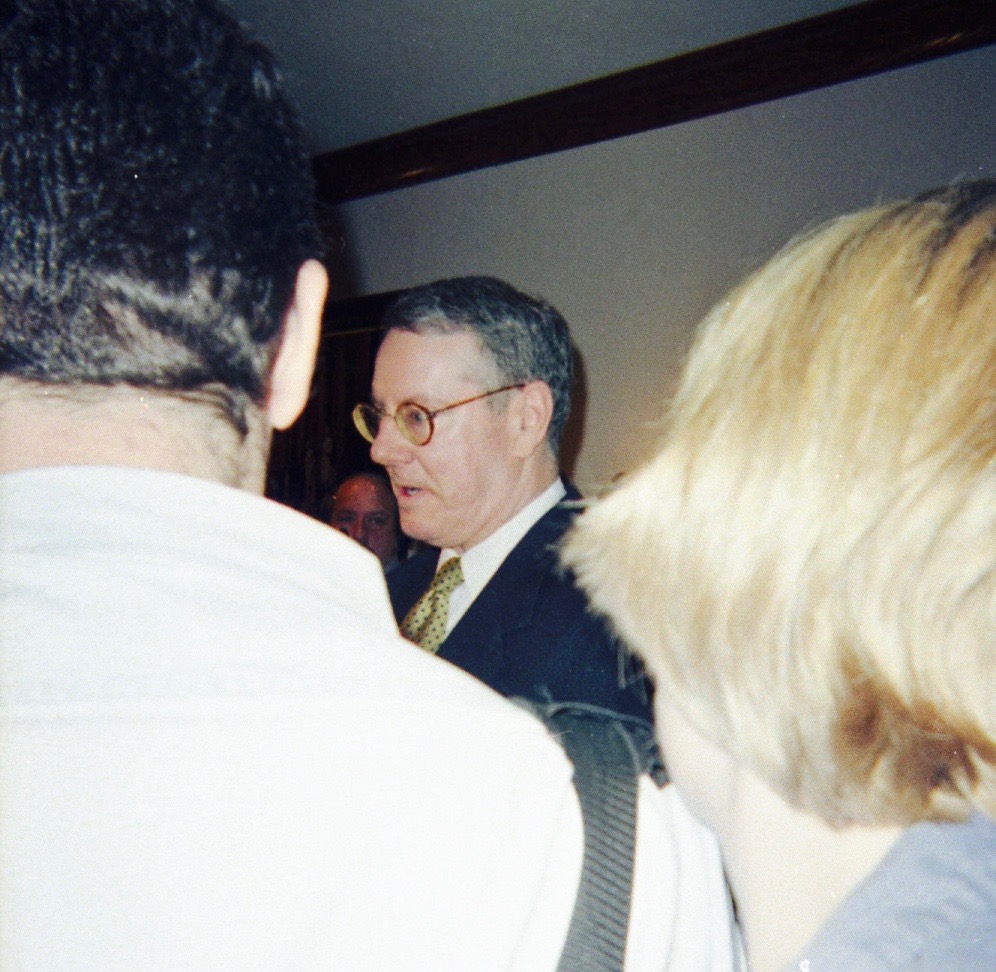
“I can’t believe that it’s you and you and your friend Steve. Doo doo doo ta doo, Steve. Doo doo ta doo too doo, Steve.” I bet that jaunty little tune was inspired by Steve Forbes. In fact, I know it was.
My real association with Washington starts in 2000. Nothing, and I mean nothing prepares you for life after college and the feeling that you’ve completed everything you have to do in your life and now, you are out into nothing. I had this feeling of total drift after college. What helped with Herman being there was that he actually understood what that all felt like, how adrift I felt.
DC was the time in my life where I really saw that the outside and the inside were not equal. My outside life was as glamorous as could possibly be. Here I was seeing every important politician in America at that time. On the outside, I was thriving. The inside though, was another story.
I felt like a building with a beautiful exterior, but a completely destroyed inside, barely holding it together. More often than not, it was me alone in Maryland avenue, with my Milano cookies, wondering where everyone was off having fun.
I think the photography I did at that time reflected that. I photographed famous politicians. I photographed all kinds of weird things. Interior. Exterior.
I’ve written about this many times on this blog, how I saw the politics show and I’ve also probably mentioned how incredibly out of place I felt in this whole thing. Recently, my dear friend Amy was asking us where we were when we were 23. She already had a family of four and was making her way in the world with that. She turned to me and I said — oh I was already on Capitol Hill, reporting. I saw the reaction of the other people in the room, like a bolt of electricity had passed through them. I followed it up immediately by saying how I’d be on C-Span all the time and how one day, I was wearing a brightly colored shirt, in this SEA of gray suits and how it looked like I was this flash of bright color. And how one time, I was at a press conference at the White House. It was a BIG DEAL and the only thing you could see on C-Span was the back of my head. Proof, I guess that I had been there.
When I did my mega scan job of my photos in 2020, I discovered this photo, that has always been one of my favorites, though I had long forgotten where it was taken. It was taken with my Lomo spy camera that I carried everywhere with me at the time. It has this jarring, sort of Mad Men-esque feel to it, like the Don Draper silhouette falling during the intro to the show:

Here are some politicos I photographed. I’ve featured these pictures up here before, but hey, who doesn’t want to flex about the time they photographed a fresh faced Jeff Flake!!!! JEFF FLAKE!!!!
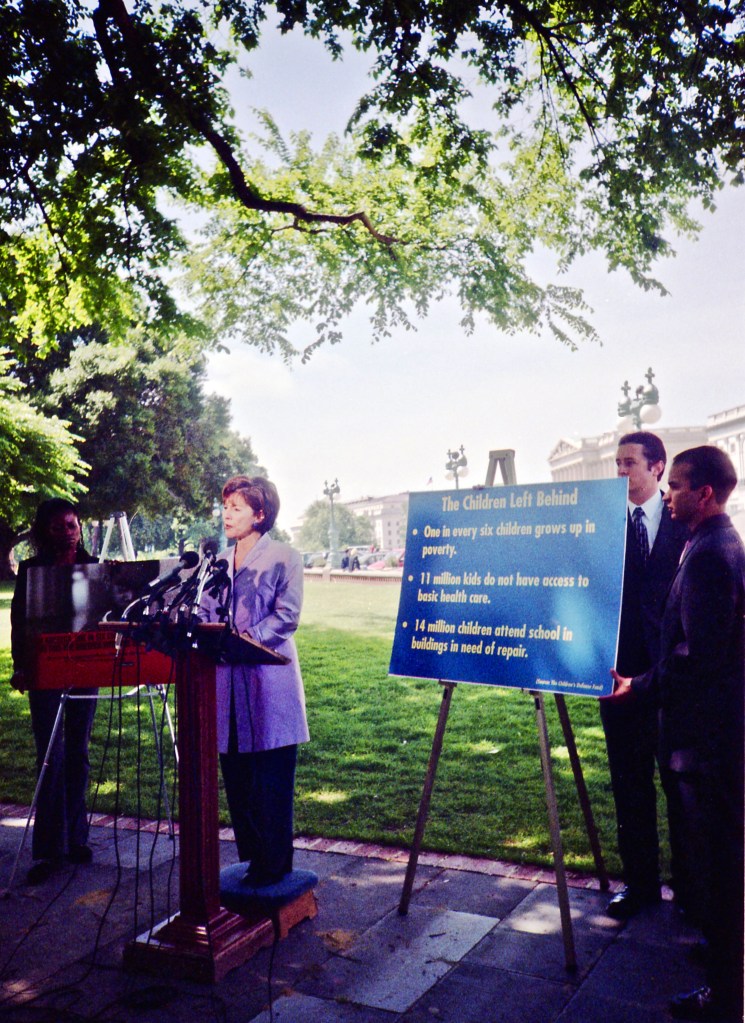


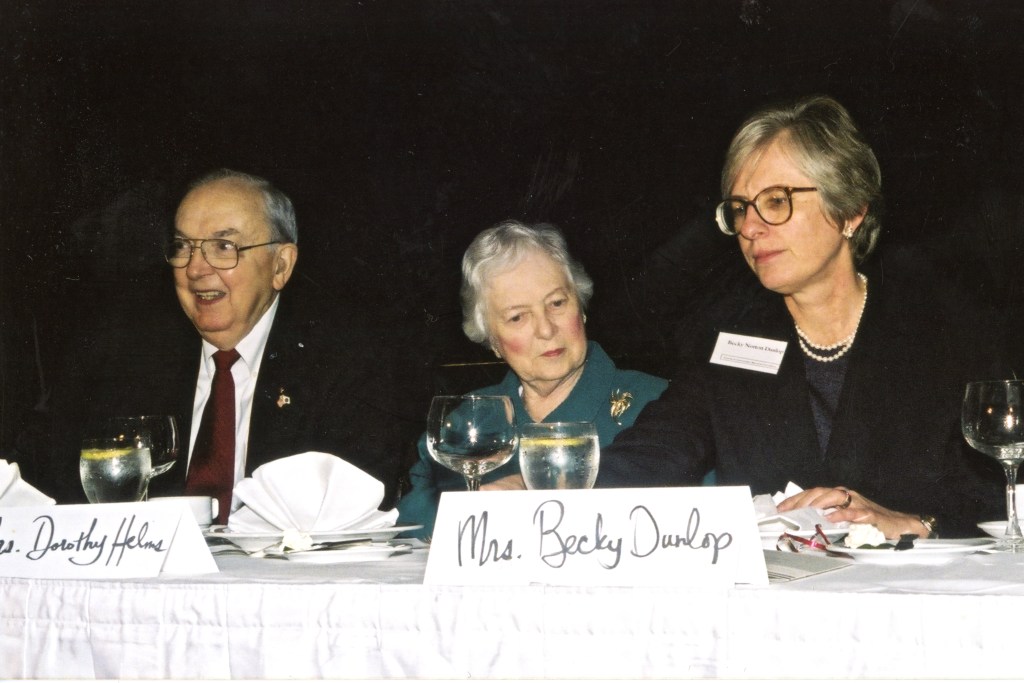
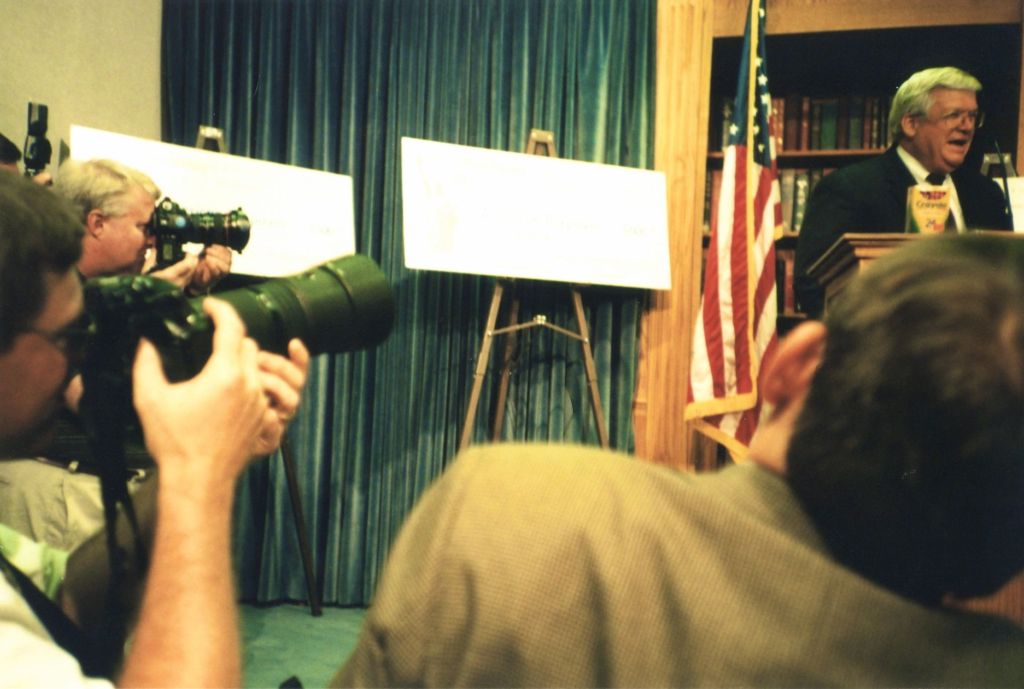
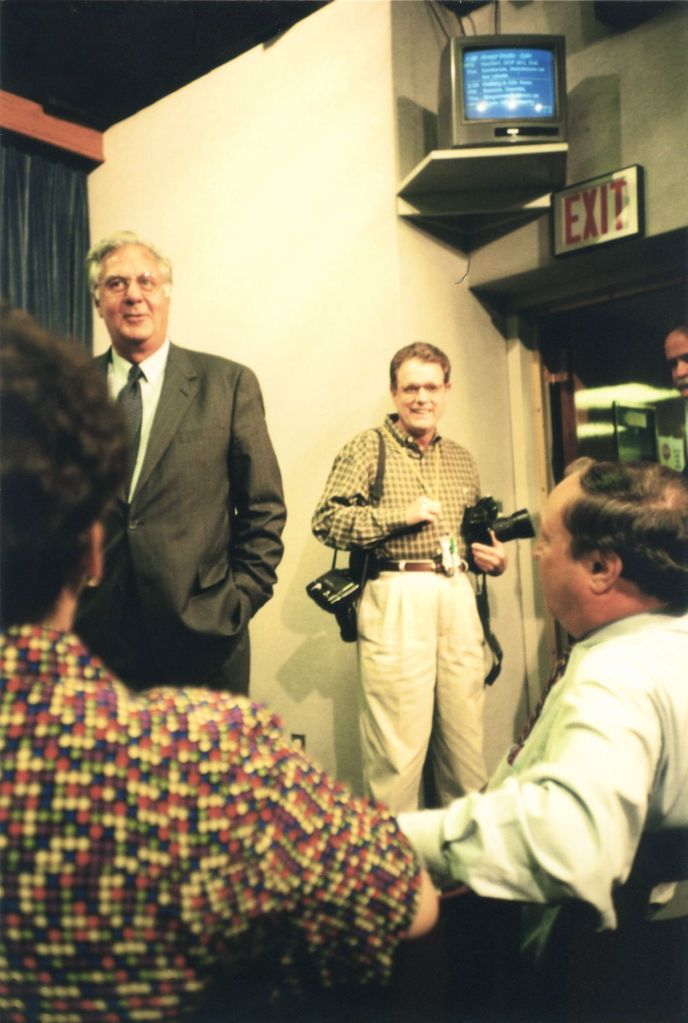

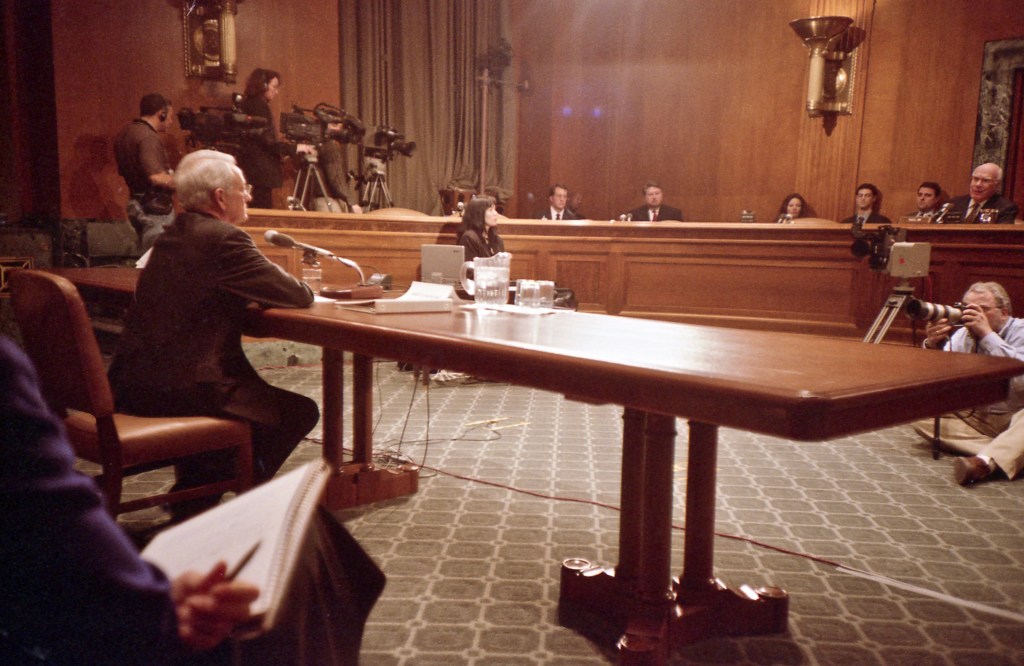

Oh and of course we cannot leave out foreign policy titan Zbigniew Brzezinski. The Zbig. The Zbig show. My graduate school professor Dr Michael Sodaro had once worked for the Zbig and said to me once that all us Polish people want to meet him. My brother in Christ, we Polish people have ZERO representation in the media. ZERO. On screen, we are portrayed as scientists or maids and occasionally criminals but nothing really in between. Our boy had the papacy for a while, but other than that????? Nothing. So when one of us becomes the national security advisor for Jimmy Carter, we are going to gloat about him. We are. And don’t try to stop us.
The Zbig, when he crossed in front of my camera. Pictures I have shared before, but fitting for this life retrospective, I guess:


The impetus to take most of these pictures was mine. I mean I got hired to photograph the Zbig, but the rest of it was kind of driven by my insistent documenting of everything around me.
I was pretty prolific in those days and in the days of film, that was kind of difficult. A lot of these pictures were shot on this super cheap Konica 100 film that I used to get in bulk for $1 a roll. Then I would go to Costco with Herman and get the photos developed for some other small amount of money.
Pretty soon after I moved to DC and got really into the photography, I looked at my photos and realized I wasn’t taking pictures of the obvious stuff anymore. I was photographing the weird stuff and I kind of liked that more. Sure the Capitol is pretty at sunset, but there were so many other things that I could photograph that were equally interesting. Were they traditionally beautiful? No. But I kind of loved them and much later on, I realized that I had this treasure trove of images from pre gentrification Capitol Hill.
I think my friends at the time could sense that I was this insistent documenter. One day a friend called me and goes — gather your cameras. They are tearing a building down across the street from my house. I mean of course. Of course I am heading right over:

I also got a picture of the newspaper boxes with the newspapers from September 11. A sad reminder of that time:

Here are a couple more pictures I particularly love, so weird and random in their subject matter. What is particularly interesting that they don’t look like they were taken in Washington. They are just random things that had caught my attention:




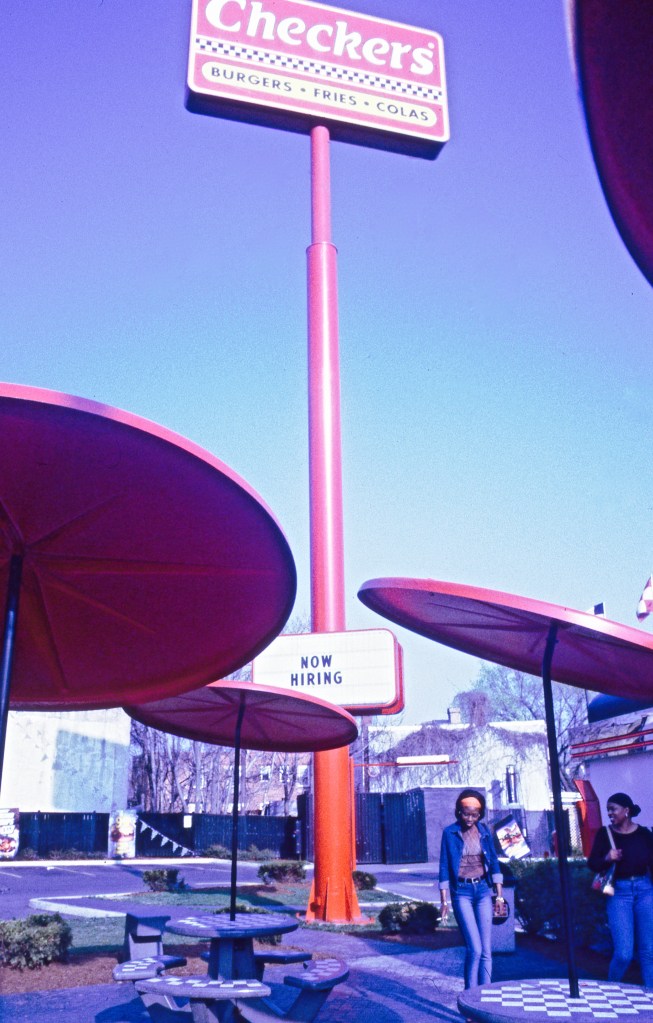

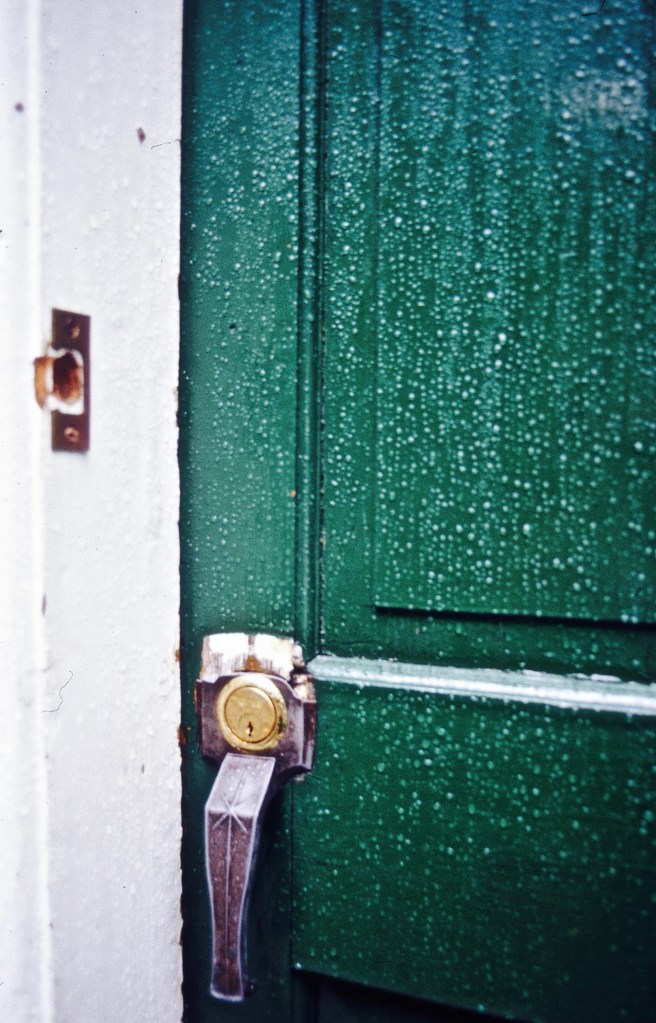

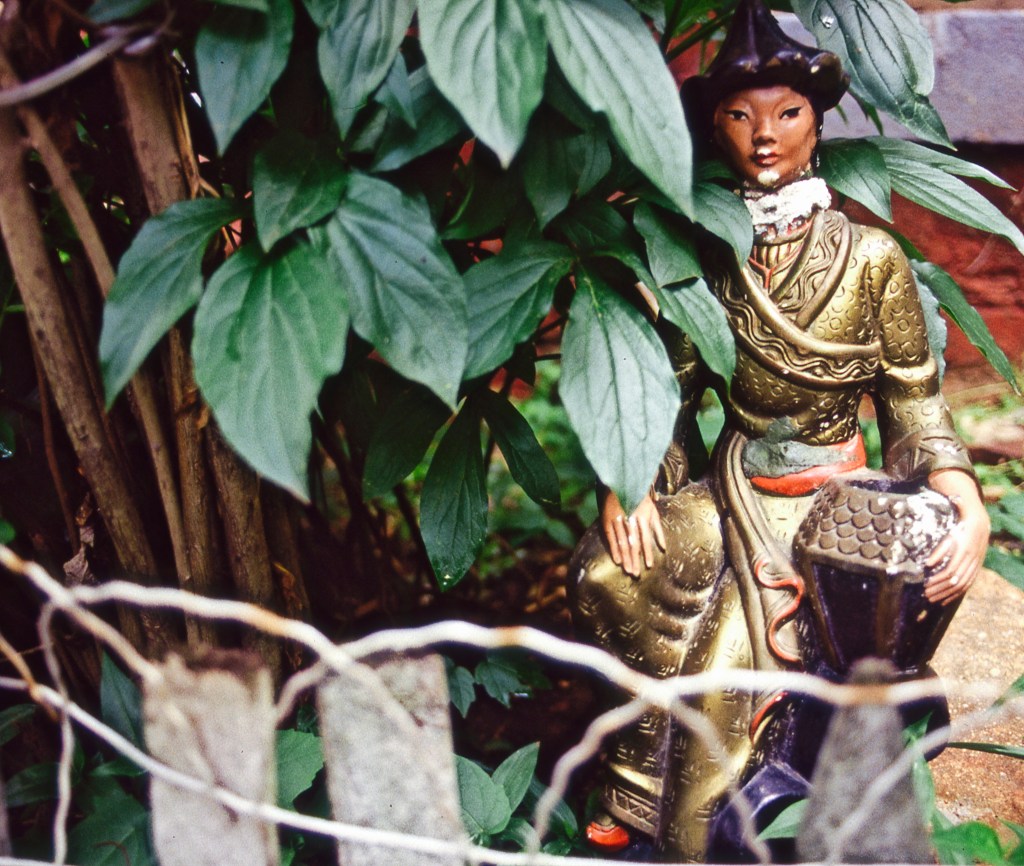
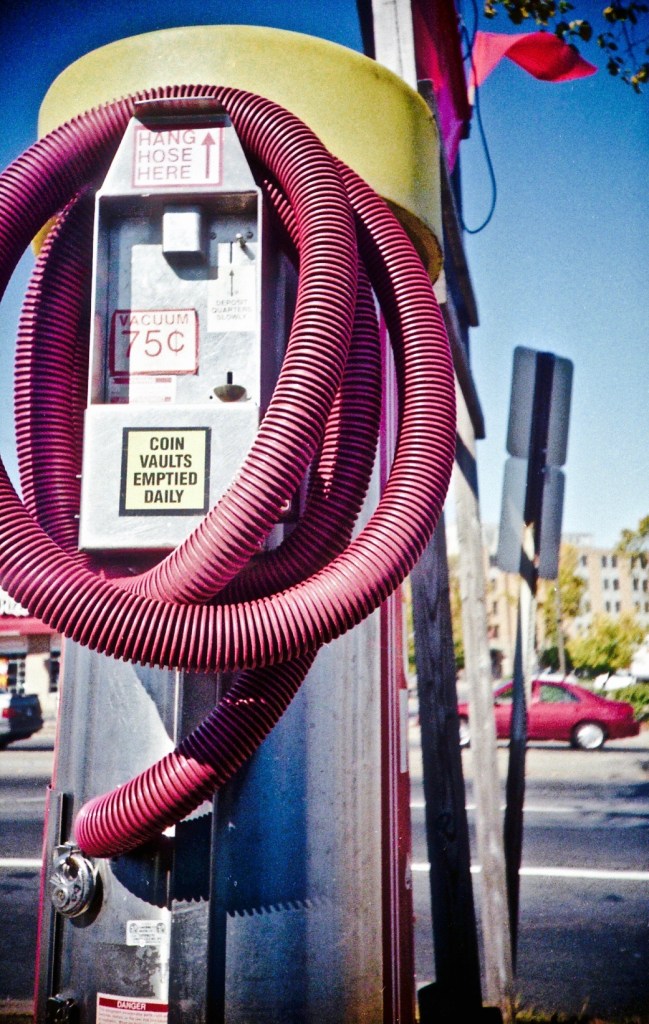
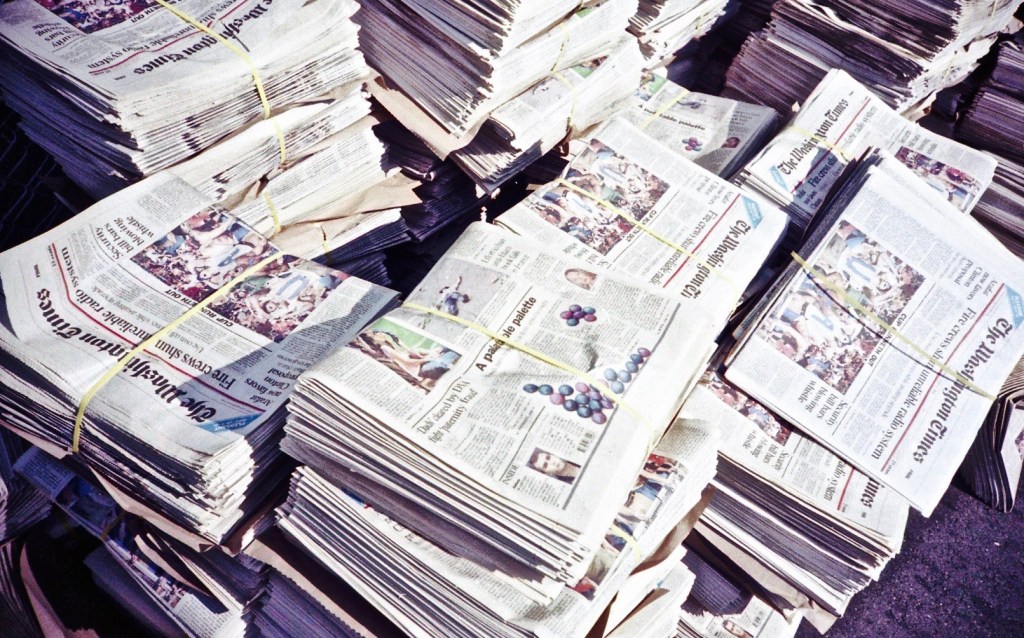
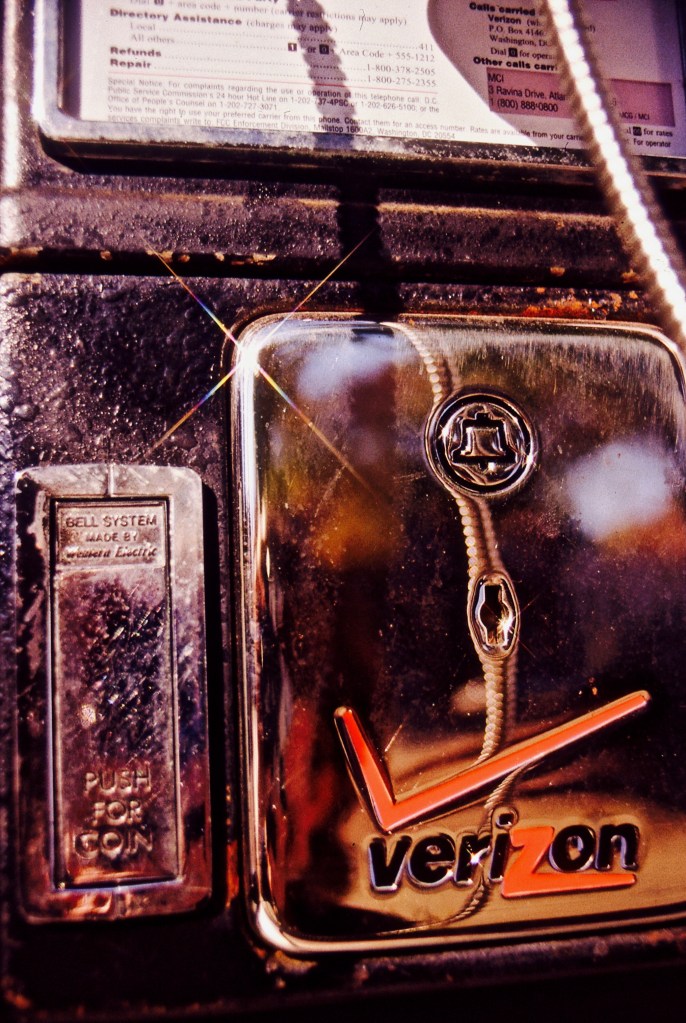




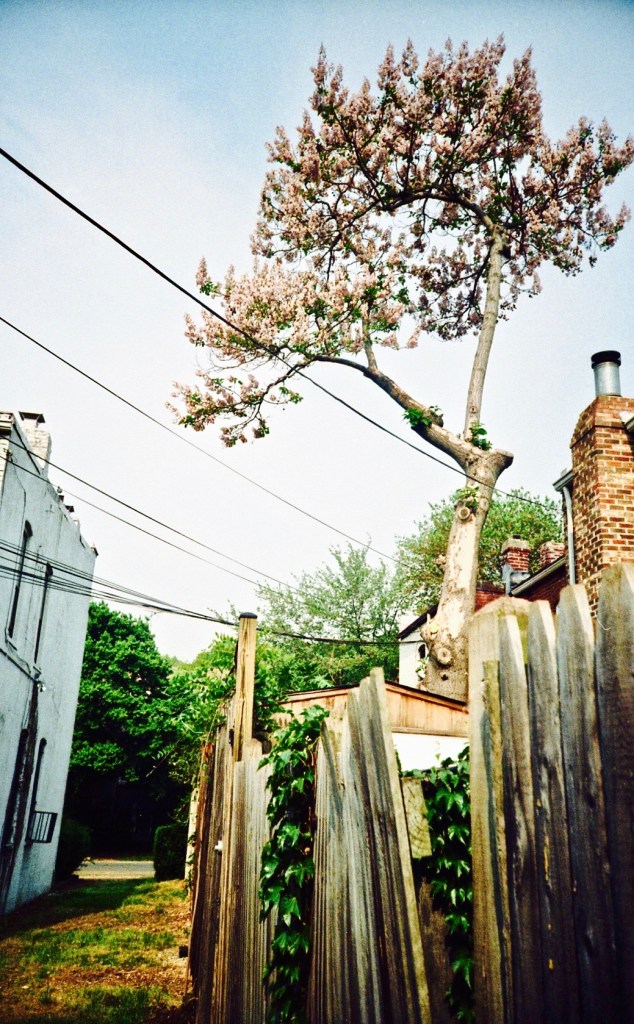

Around 2003, I put the camera down. I went from documenting every second of my life to very sporadically taking pictures in that time, maybe just a couple of times a year at best.
I had gone back to graduate school that year. My mental health had taken a dive and graduate school was supposed to solve all of that and it solved nothing. It made things worse.
Again, I cannot even express how out of place I felt in that graduate school. I looked around and saw people who had been to prestigious universities and even the Ivy League and here I was, with my little political science degree from nowhere college. I wasn’t sure how I had even gotten into this school. I think it had more to do with my political reporting experience than it did my grades in undergrad.
From the start, I was outmatched academically and socially. These people had done the big stuff. They were on the big tracks to work in the big jobs. I sat there and wished I had the confidence these people had. I spent a lot of time wondering what I was even doing there.
I don’t know why I put the camera down during those years. Maybe I thought it would be a distraction while I studied? Some part of me though was just tired of hearing the same things over and over again. Anyone can take a good picture. You want to be a successful photographer??? Shoot weddings. Your pictures don’t have people in them. And on and on and on.
I kept sort of looking for people in DC who in hindsight were free spirits, like myself. Back then, I wouldn’t have put myself into the category of a free spirit. I saw myself as super goal oriented and career oriented, but I probably gave off a free spirit vibe. As I have mentioned before, my be-sainted brother in Christ, Professor Michael J. Sodaro told me that I was too much of a free spirit to be in that graduate program. “We train bureaucrats here, not poets,” Dr Sodaro said to me at the time. I wish I had believed him at the time.
Truthfully, I kept thinking — I mean you talk about work and school during work and school time, but you are just yourself outside of school, right? You are yourself as a human outside of all of that. You have hobbies, you have weird special interests. You aren’t a political science textbook outside of work. But most of them were. The outside went right to the core. At the time I thought there was something wrong with me but I now realize that those people defined themselves by their jobs and this feeling of power that Washington DC gives people. Suddenly, these people that we had just seen on television was right in front of us and that goes to your head pretty quickly. At least it went to my head for a while. And it also went to the heads of my peers.
I do have a couple of photos from 2003 from when I went to Denmark to see Thomas and Allan but nothing much else.
Denmark in 2003, or maybe 1603:


Like I said, I had put the camera down during this time period. There are scant photos of that time in my life, my room in that little house I shared with the cats on Foxhall road in Georgetown. No documentation of my bedroom or the living room that I spent the majority of my time studying in.
That year, I took a class with Peter Reddaway, a world renowned expert on the history of the downfall of the Soviet Union. That sounds like a lot of fun. No it really doesn’t and it wasn’t. I remember spending hours reading a paper on the differences between Sovietology and regional studies. I also had to write a paper comparing and contrasting the different planned economy to capitalist economy transformation programs that were employed after the fall of the Soviet Union. Those were the days, as Archie Bunker would have said. Needless to say, photography was about the furthest thing from my mind then.
I really did feel like in that time in my life, everything had gotten away from who I really was. I was trying to be something else, but it didn’t really feel right. Again, I had put the camera down, because my life was endless rounds of reading, writing, sitting at this weird little job I had at the time, sleep, aimless TV watching and going to Five Guys with Herman. There wasn’t a ton to look at or do, no interesting places to go, no time out in the world. Everything felt so sterile and boring. I remember having to tell myself all the time — you are in graduate school now. Ok, you are doing this now. It really felt like it didn’t fit though.
I did get the chance to study at the College of Europe as a summer study abroad. Because of my rapidly deteriorating mental state, the significance of getting to study in this place was completely lost on me. We were a cohort of maybe ten people who got to study there. There was a class the year before and the year after and then they just got rid of the program. So we were part of this tiny sliver of Americans that had ever even studied at this college, which was basically a training ground for EU bureaucrats. Eurocrats, if you will.
Now I didn’t really realize this at the time. At the time, I thought that I had just kind of applied and gotten in because they had to fill spots and hey, there I was to fill said spot. In no way was this remarkable to me or did it even merit a reaction. I was a seat filler. Nothing more, nothing less.
What’s interesting about these photos is that I had forgotten about them and they kind didn’t see the light of day until I scanned them during the pandemic. Brugge was really beautiful. I had completely forgotten that we had this final dinner for the program that was apparently very fancy:
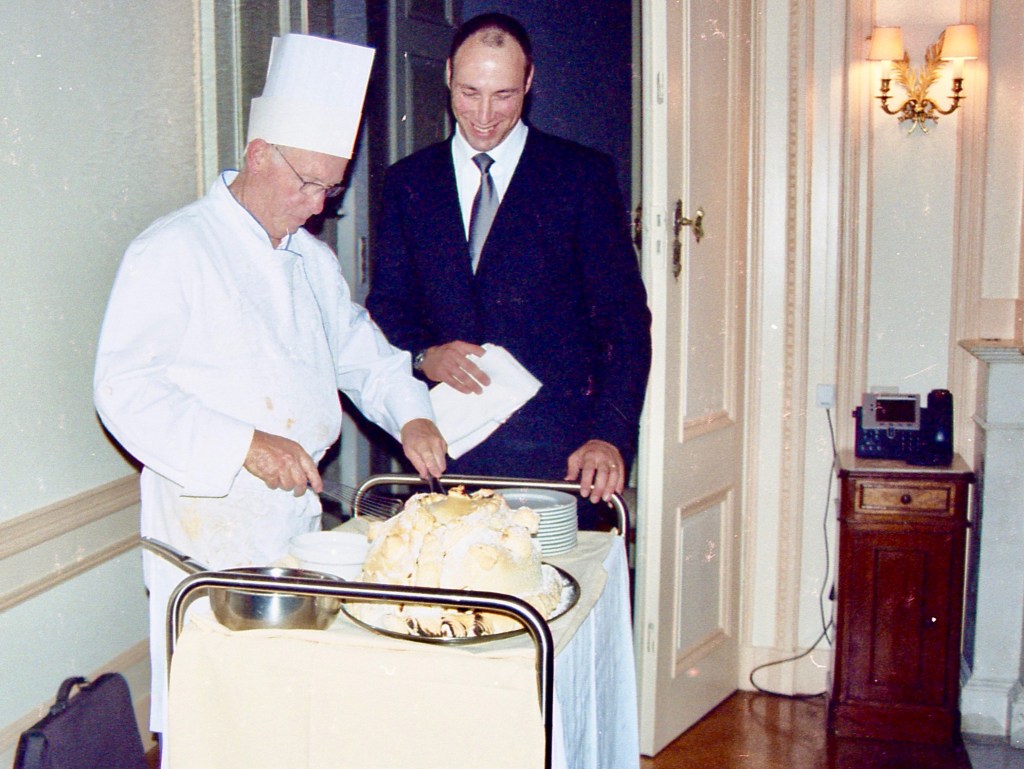
A couple of Brugge views:

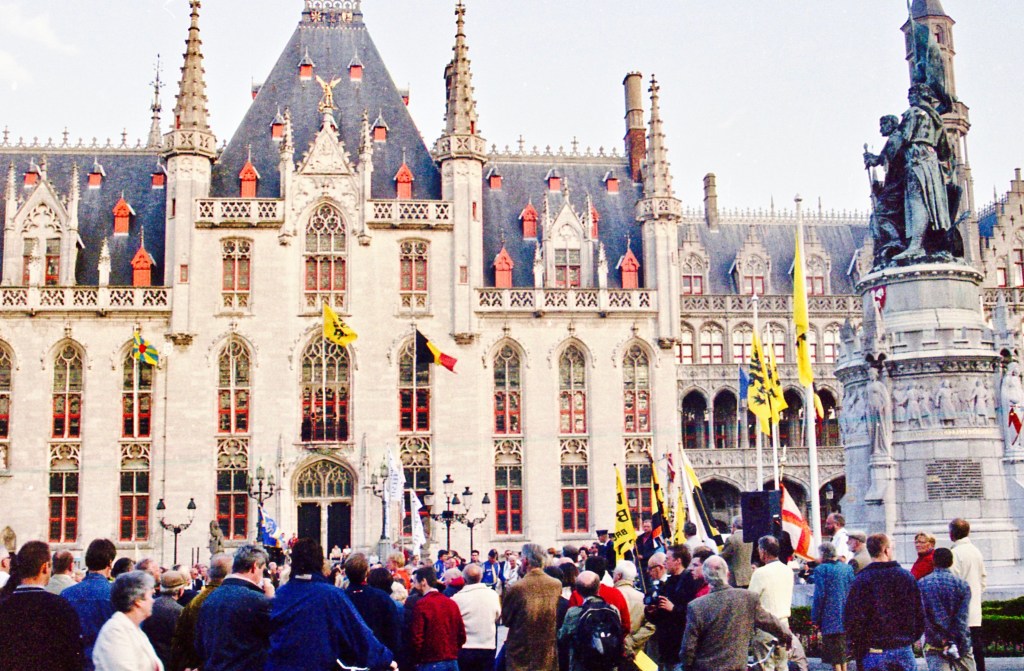
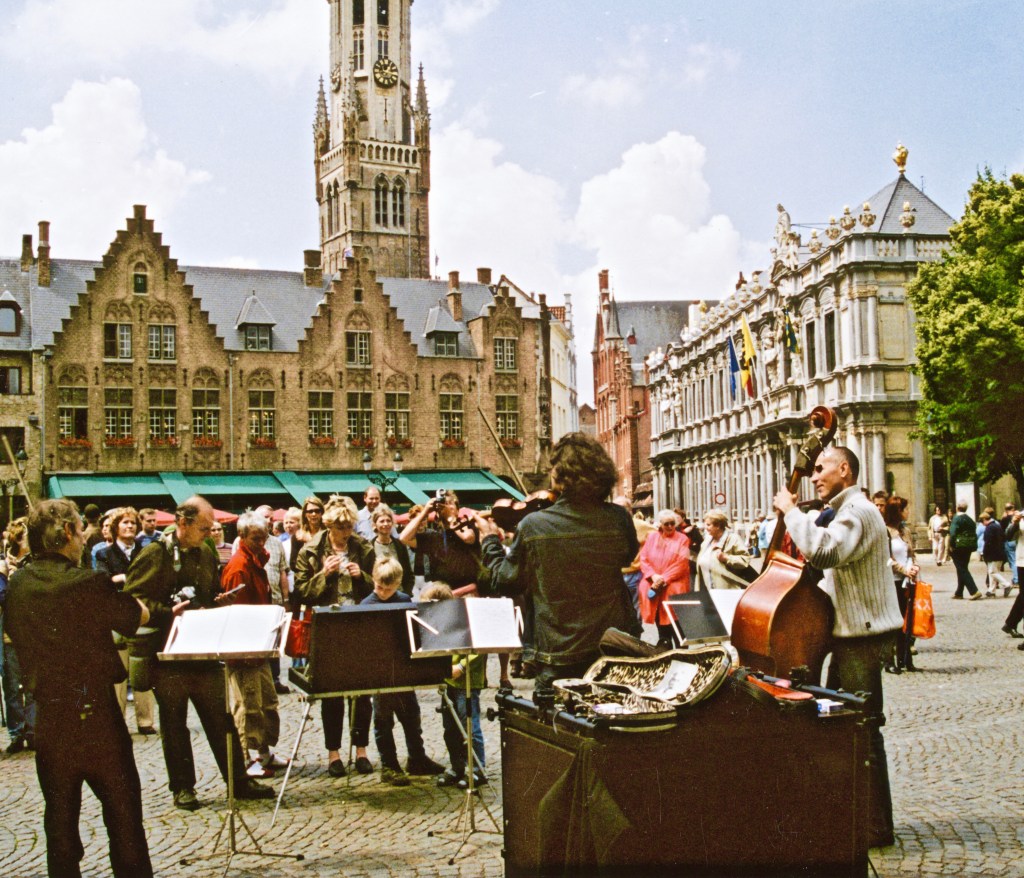
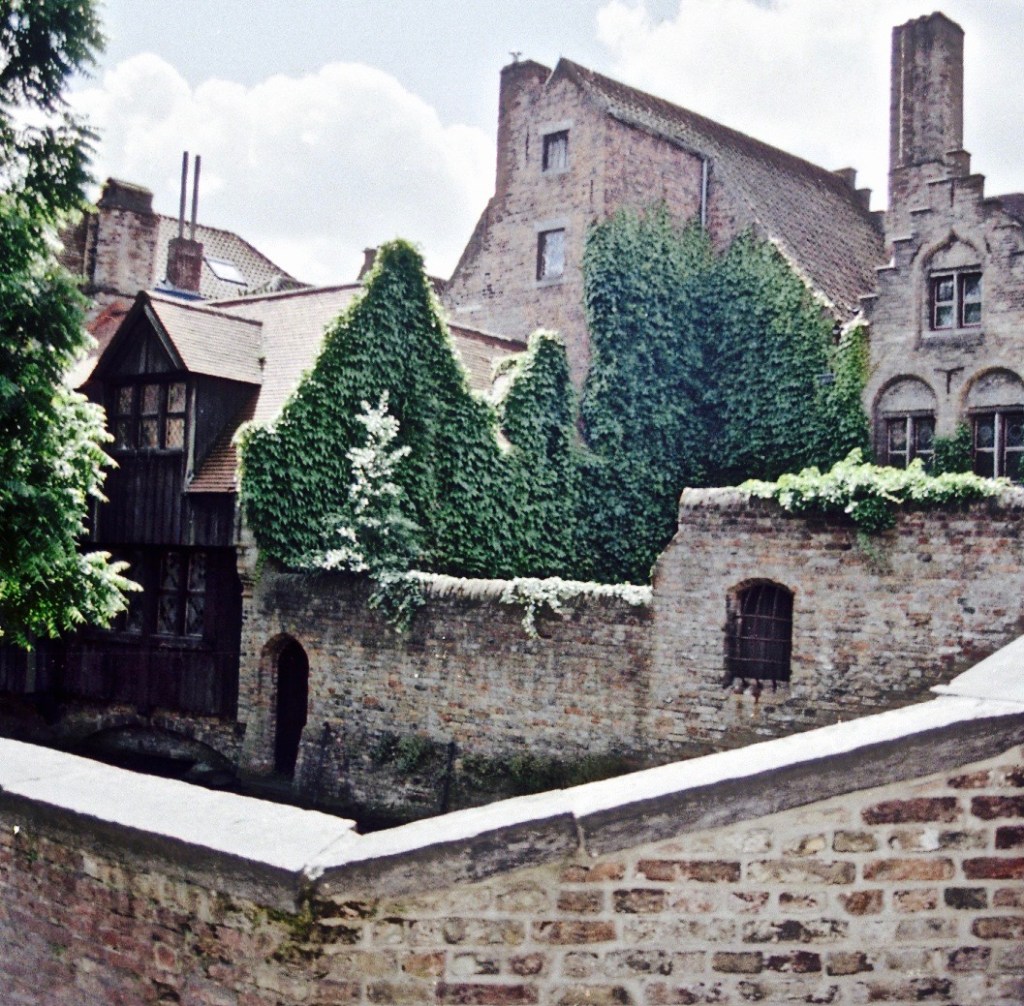

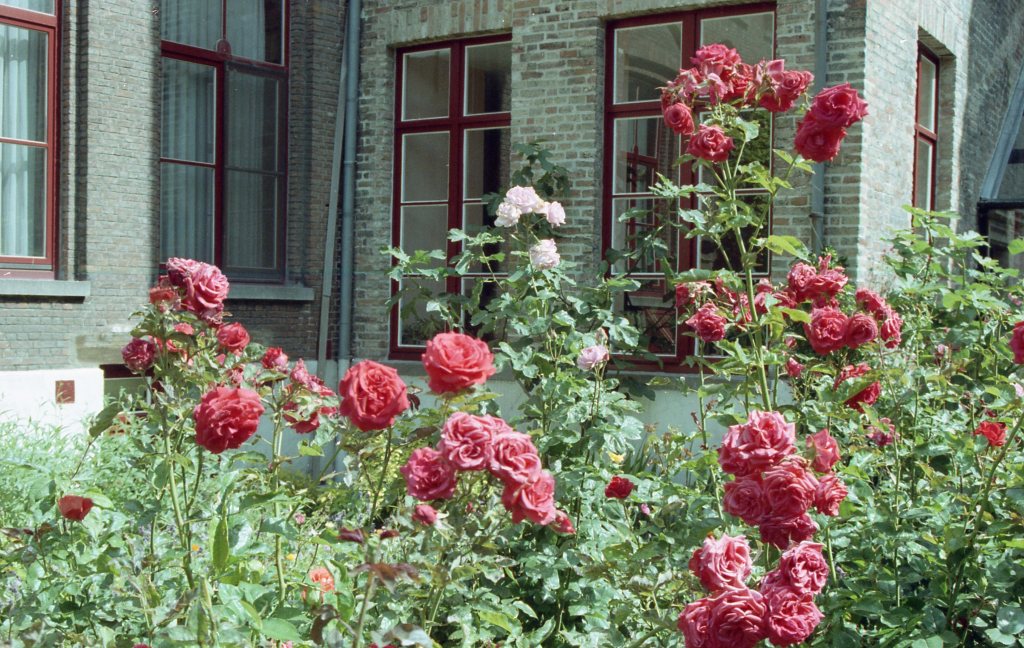
Of course we did the compulsory trip to Brussels to see how Euracracy up close. Here’s a picture I found of the European Parliament I rediscovered during the great scan project of 2020:

One discovery I made during the pandemic was that my beloved Lubitel had a roll of film in it, that had at that point been in there for 16 years. I knew what the pictures were of, of a day on Foxhall road in Georgetown, where I lived when I was in graduate school, on a snowy day. I remember the day I took the pictures, that I was home, doing some school work. I saw my downstairs roommate while I was out taking the pictures. Crazily, I remember thinking that I wouldn’t look develop the pictures from the camera for a long time. I didn’t realize I would be living in another city, doing another job, living another life by the time I developed the pictures.
Pictures that sat in my Lubitel for 16 years:

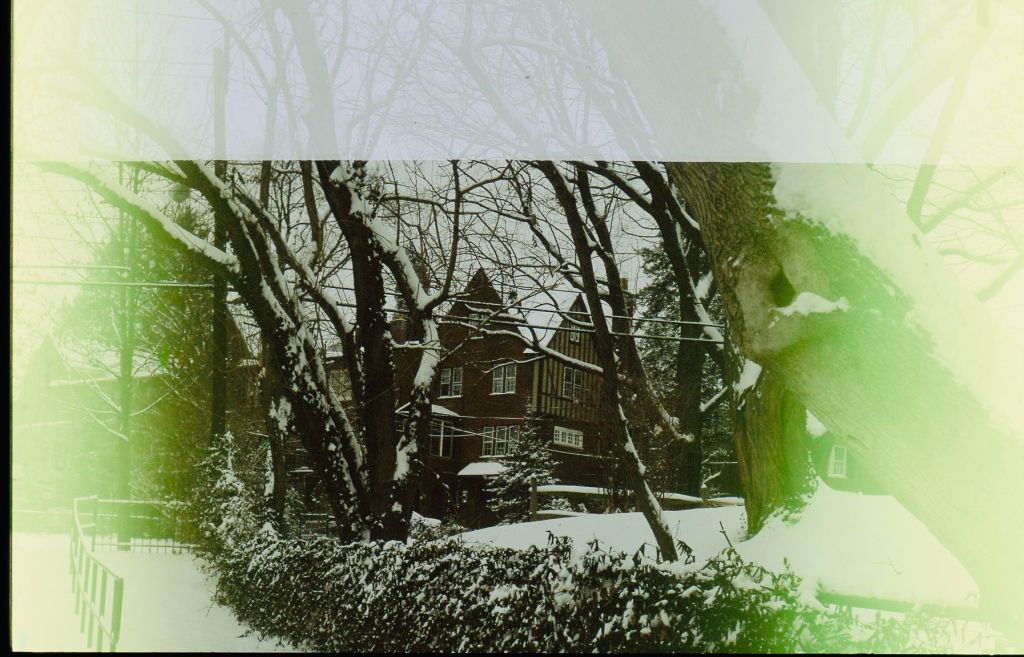


2005 was the first I guess watershed year. I finished graduate school. And my dad lost his job in 2005. I started the long road to fixing my mental health.
I cannot express what a huge blow it was to all of us that my father had lost his job. It was completely, completely shocking. But what happened as a result, the changes it brought to us and the extreme improvement and change it brought to our lives, I cannot even express.
Because of my dad losing his job, I moved home for a bit to help out. Before that, I went to a language course in Montreal, to learn French.
I loved studying French. I sat in the classroom, just absorbing what I was learning. That was really special. I learned so much in that month and the school was exactly like the one I would end up working in for almost seven years. I should have taken it as a sign then that I should be a language teacher, but with my dad losing his job, other more pressing matters needed to be dealt with first.
Again, this was a time when I wasn’t documenting my daily life. I really wasn’t quite there yet to pick up the camera yet. I took pictures when I would travel, but even then, not a whole lot. Maybe I just wasn’t ready yet to dive back into the photography. There wasn’t even really a whole lot to photograph around me anyway.
I met two great friends during the program. One is an absolutely brilliant doctor now and the other was a simple farm boy from a shire. I was pretty high on myself and my fancy pants degree in International Relations. The farm boy tells me one day that it seems really strange that I dress like an art student and not some boring DC bureaucrat. Fair enough.
So the pictures from that year are from Montreal. Kind of the highlight, I guess:
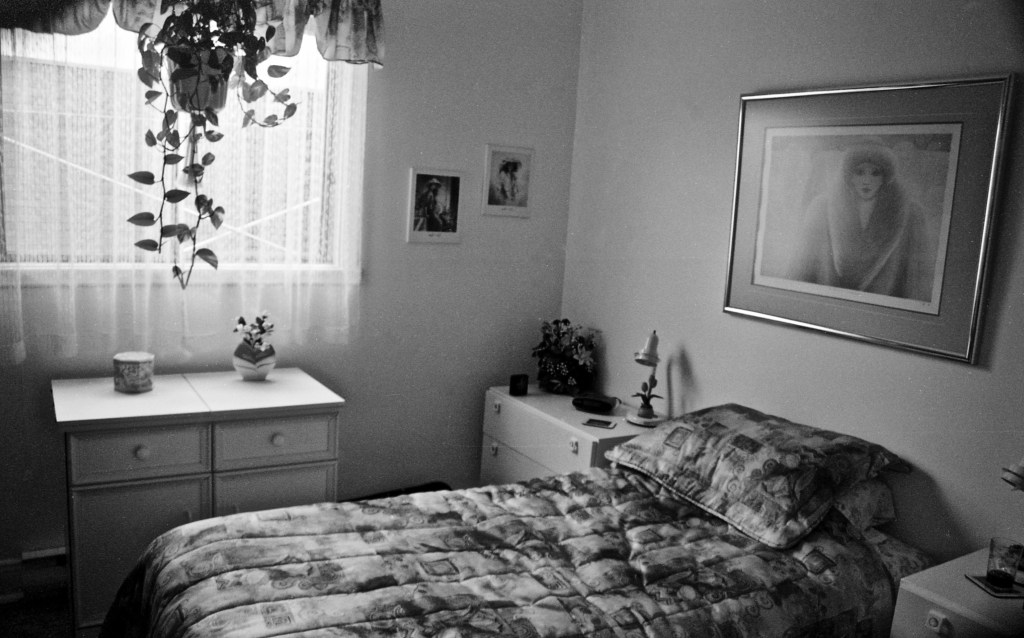

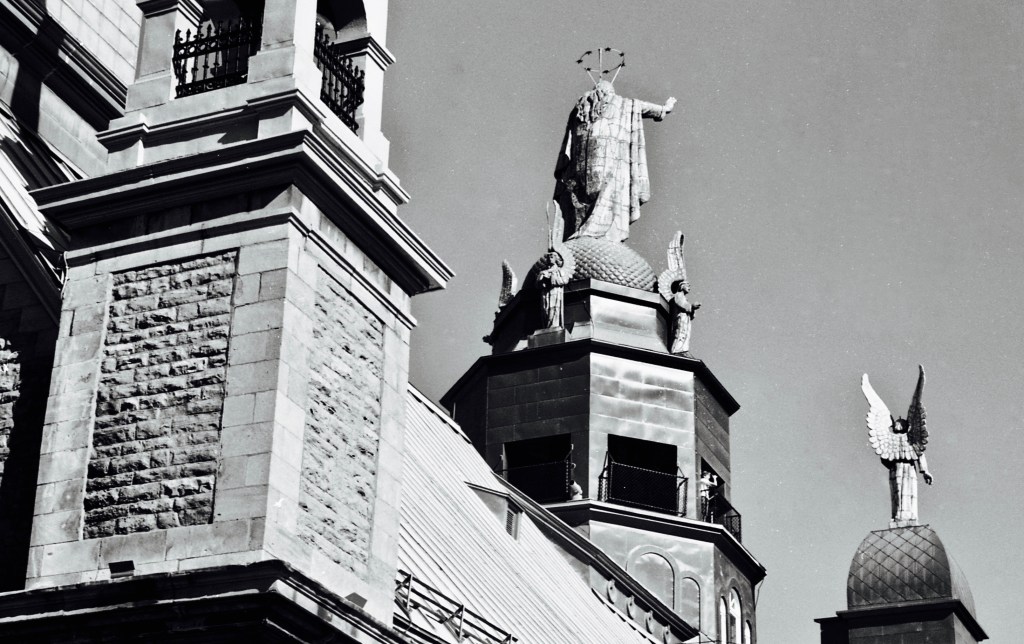



I guess 2006 and 2007 were kind of rebuilding years for me. They were these weird in between years where nothing much happened and I guess that was ok. Enough things for the time being.
In those years, I mainly took pictures when I traveled. I didn’t have a digital camera of any kind yet. I was using the film camera but really sporadically. I went on a trip to Belgium and Germany. Belgium wasn’t that much fun but Germany was a ton of fun.
Pictures from Germany that have never really seen the light of day. UNTIL NOW!!!!!!!
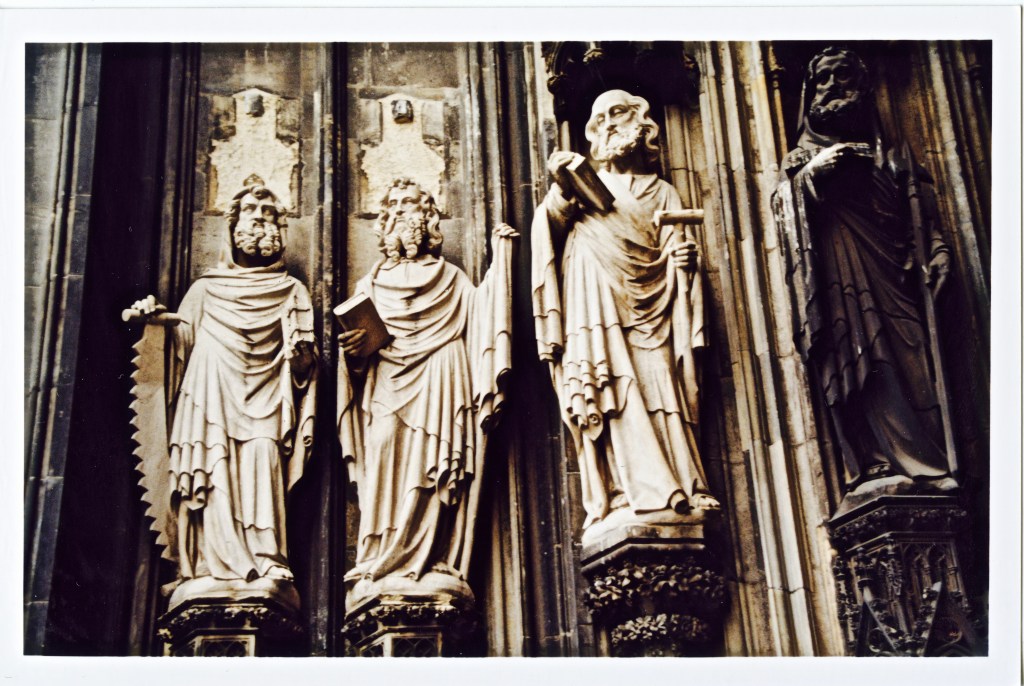



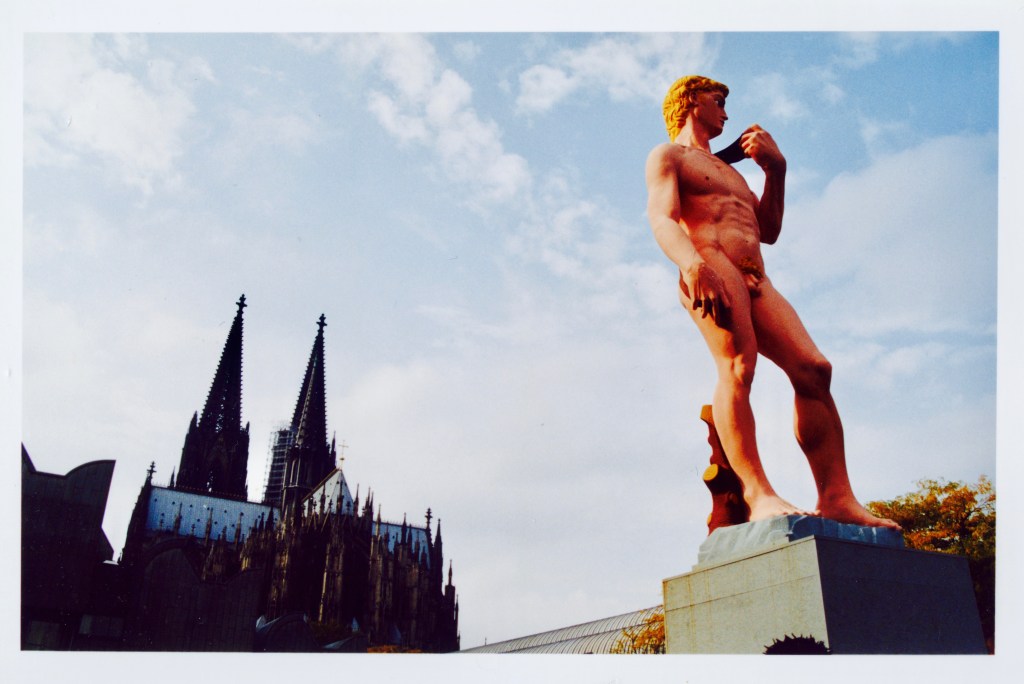

I also got a little writing job in 2006, in New York. I think after all the turmoil of the past few years, all the things that had happened, it was ok to be in a nice, low stress situation. I wrote about private equity, learned a lot about finance and generally tried figure out what was next and what my future held. It would be a while until I figured that out.
The job was fortuitously located in the Graybar building in New York, an underrated gem of a building connected to Grand Central Station. I have a real soft spot for the Graybar building, still. In the years that have passed and it’s been almost 20 years since then, I have passed by the Graybar building multiple times since I left that job and I always think about what has happened since I worked in the building, all that has come and gone in the intervening years. I’ve even walked by there with Arturo and his lovely wife Juliana and it’s absolutely insane to me that I was walking in the same place in 2006 and in 2020, I would be walking by there with a guy I had taught almost a decade earlier. The job was nice too, a soft place to land, and in New York, these are hard to come by.
A couple of months after I got the job, my dad had gotten a new job in Massachusetts and my parents were moving there. Interestingly, I didn’t think this was a big deal. It didn’t feel like a transition or anything that would turn out to be significant in the long run. We had moved around so much, even before I was a teenager that another move was something we had gotten used to. Another place, where we’d be visitors, gently tolerated but never really a part of things in a new place.
What also struck me around that time was that after 24 years in New York, a big moving truck came to pack up my parents house carefully to their new house in Massachusetts was that no one was there to say goodbye to us. They still lived in Westchester, a place I had left twelve years prior. I had gone to elementary school, high school and college in New York and yet there were no roots. This didn’t really hit me until much later on. One day somehow randomly I thought about what would happen if I had to leave Boston, how many people I’d have to say goodbye to and how this just seemed like an absolute impossibility. That was how much things would change after we came to Massachusetts.
Somehow though during that period, the Graybar building did prove a very fortuitous place to work to be able to take pictures and I got quite a few good ones of Grand Central Station:
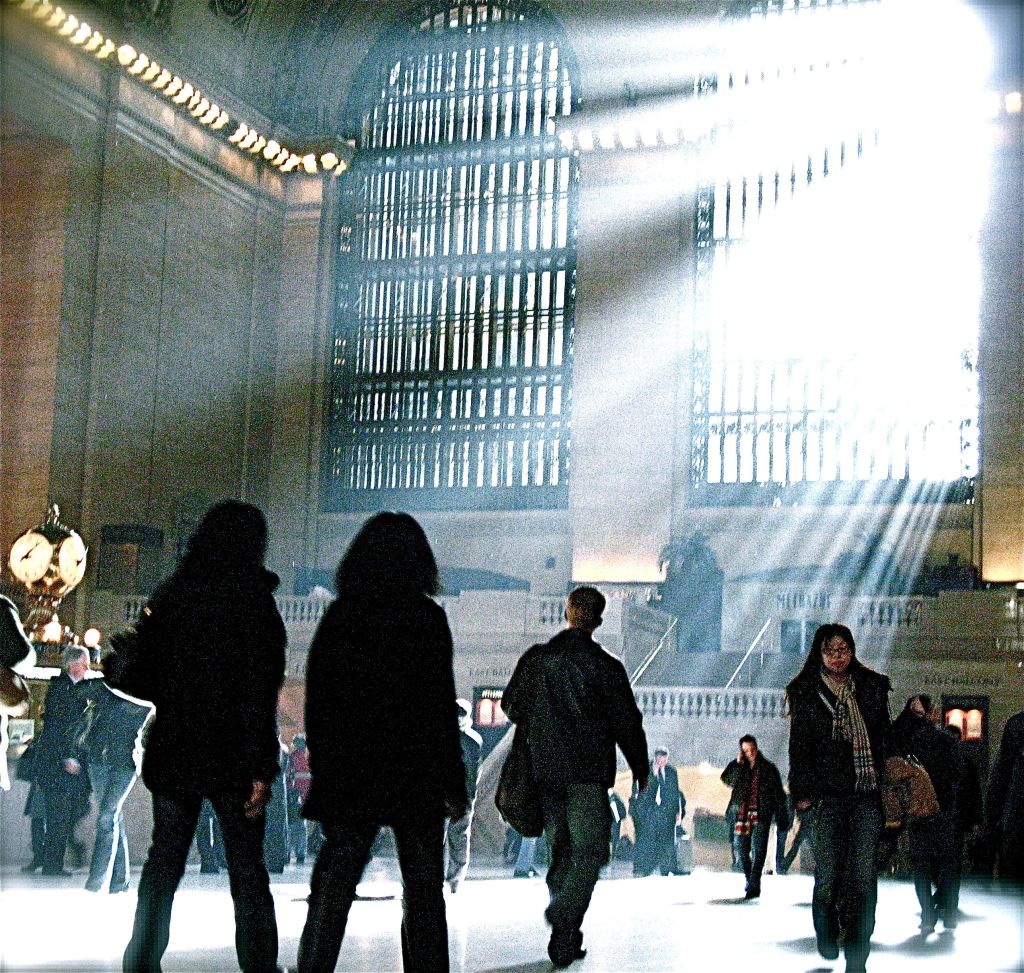

In late 2007, I made the fateful decision to move to Sweden. In retrospect, I really don’t know what to say about this time in my life. The country was cold and dark and the job I got, equally cold and dark. I thought at the time that it would launch me into life, that my life would just magically start finally.
I don’t know if I really regret the whole experience. I could sit here and trash the people I met and the experience I had there, but I’m not going to do that.
I guess it all shapes us along the way, even the bad stuff. What I did learn is that lightning never really strikes twice and that you can’t just put the same elements into a container, shake it around and expect the same results. Life just doesn’t work that way.
There’s no two ways about it that when it didn’t all work out over there, magically, I was devastated. But there was also a part of me that knew one day, the whole thing wasn’t going to matter at all and other than a line on my resume and pictures I took almost two decades ago on a long lost digital camera, it really didn’t end up mattering at all. And for what it’s worth, I retain one very funny friendship with this character named Jouko from Finland and another woman I met there. She visited Boston in 2013 and told me, straight up that she thought the whole thing that happened to me there was really wrong and messed up. At the time, it felt good to hear that, because I felt like it was all my fault. That was another life lesson. Sometimes you fail people. Sometimes people fail you.
One tiny little bright spot in all of this was one night when we were all sent to dinner with these doctors that had come from all over Europe for some big meeting. There was a huge age difference between me and these guys. We spent a couple of nights going to these dinners and I nicknamed this contingent “the minks” after the episode of Golden Girls when they get the minks, but they won’t breed because they are too old. These minks were old and wise and fun to hang out with.
One mink in particular brought to mind a wise old bearded Viking. We sat across from each other in this van on the way to the dinner and I was trying to identify him. He was too pale to be Danish, too well dressed to be Norwegian and too happy to be Swedish. I figured Icelandic, but I wasn’t sure. The mink sat across from me, silent but looking eager to talk. He told me to guess where he was from, on account of the fact that he had to learn all the Scandinavian languages growing up. I correctly guessed Iceland.
We then proceeded to have a completely hilarious conversation, which started with me loudly proclaiming that I loved Iceland and I had only spent an hour in the airport. The earned a laugh from the mink. He asked me if there was a particular shop in the airport that had tickled my fancy. Iceland was just becoming a tourist destination and I think Icelandair had just set up a transfer point through their country to the rest of Europe.
Once we finished giggling, the mink let me in on the Icelandic secret. You see Iceland will make it as cheap as possible to visit their country and then when you get there, they are going to take all of your money. ALL OF YOUR MONEY. He said this in this funny, conspiratorial way that made me believe this came up at the annual all Iceland town hall meeting, where 300,000 people gathered to share secrets and plot their path to world domination. WORLD DOMINATION. And for what it’s worth, the mink was proven correct fifteen years later, when I spent a couple of days wandering the island, with money being syphoned out of my pockets at a rather alarming rate.
It’s been so long since that experience that it’s an anecdote now. I don’t remember everything exactly how it happened, all the slights, all the bad things. It was an episode in my life that more than anything taught me a lot of valuable lessons.
More than anything, more than anything, I learned that when I thought things were really over, they weren’t. This is a shot I took directly after finding out that the whole Stockholm experience was ending. I remember exactly how I felt when I took this picture, really upset and hopeless. I look at this picture now and realize how wrong those feelings were and still are. Life doesn’t work out the way you want, you fail people, people fail you but really, it’s never really over. It’s over when you stop trying. It’s over when you wall yourself off, but life has a way of renewing things and creeping in, creating new pathways for you.
I wish I could say that to the person who took this photo:

Stockholm, for what it’s worth, is a beautiful city and I would have had a vastly different experience being there if I had been able to find some kind of community. People talk about how Swedes are very arms length with people and this was the experience that I had. Then again, I had no real idea what you needed to build community. I really had no idea how you did that.
I also realized that I wanted to make a career change while trying to start a life in another country. That really turned out to be much too difficult.
But like I said, Stockholm is a beautiful city and I do have visions of one day going there again to experience it as a completely different person than I was when I first lived there:


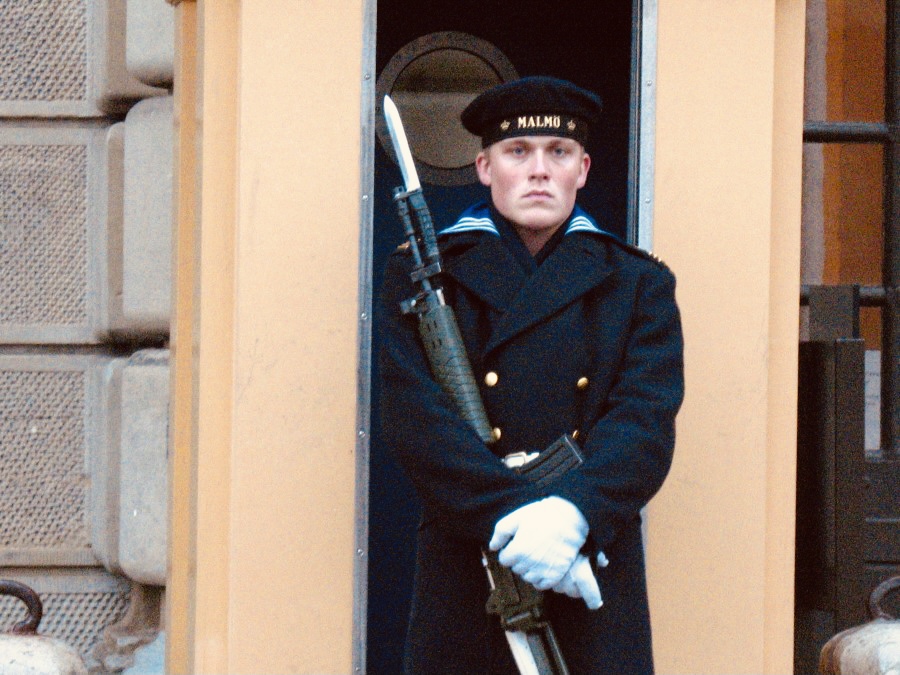
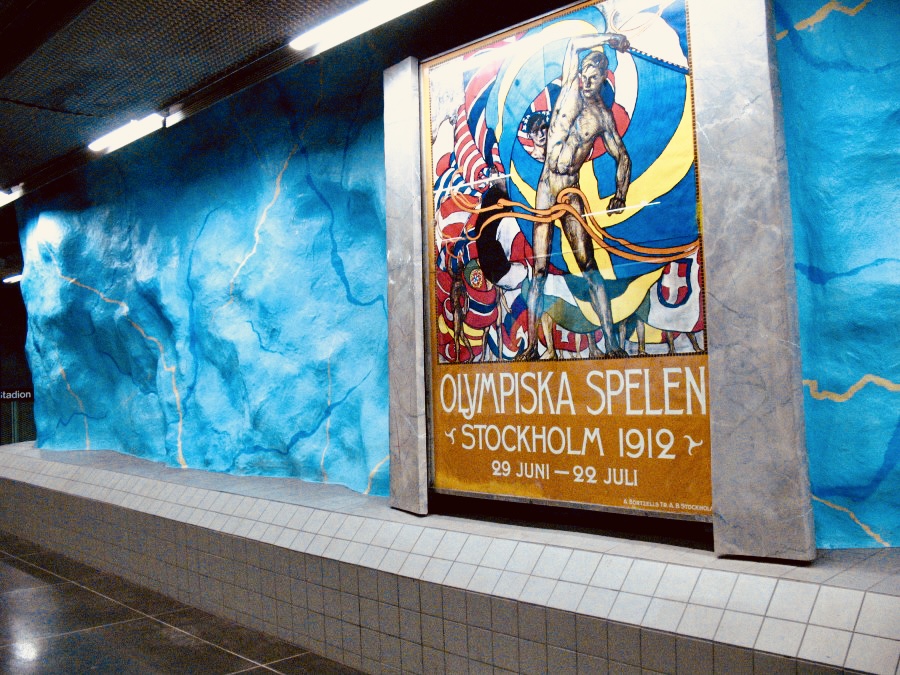
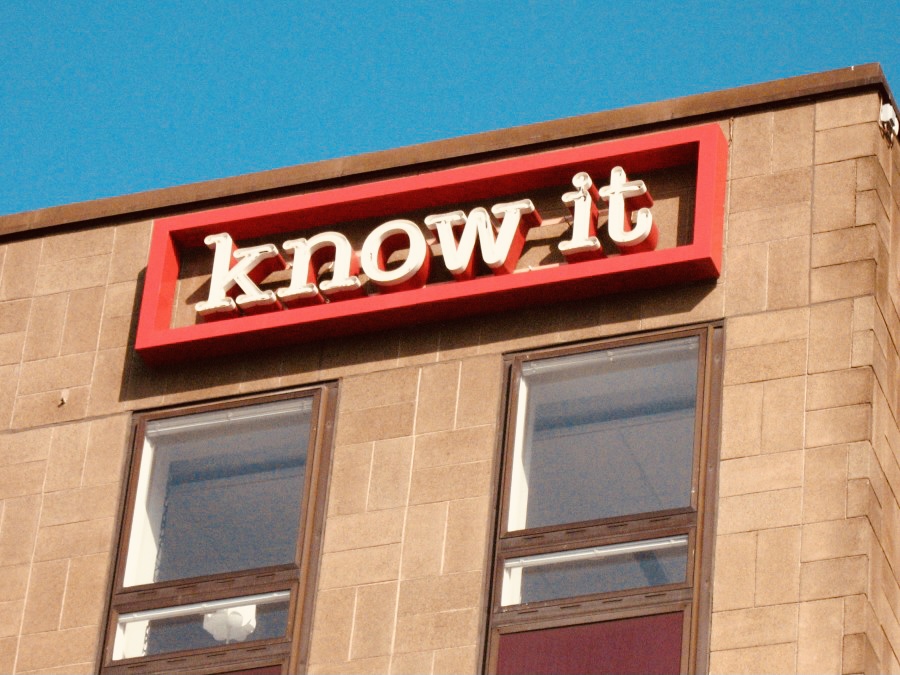
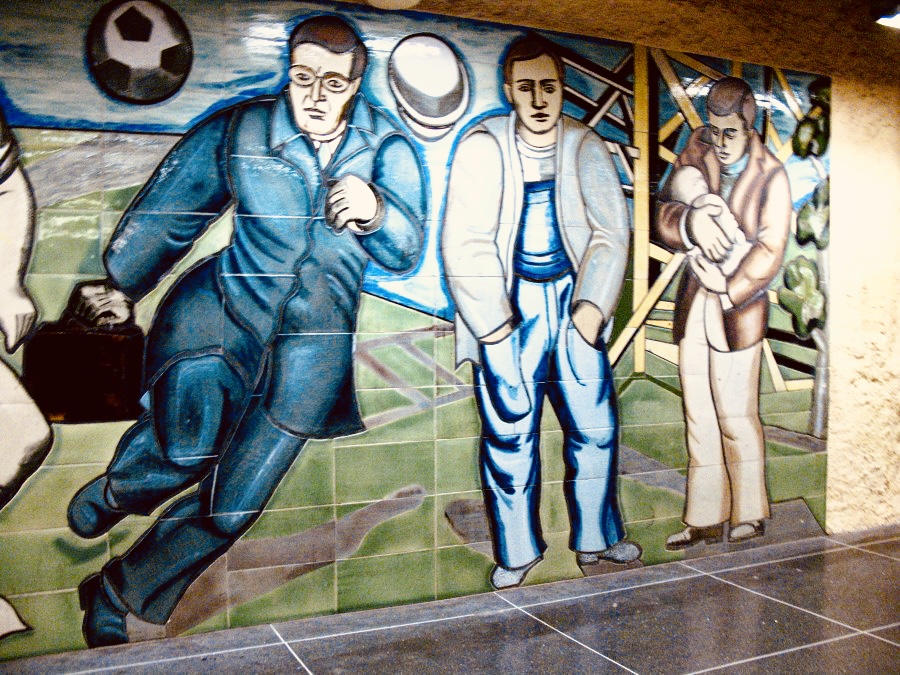

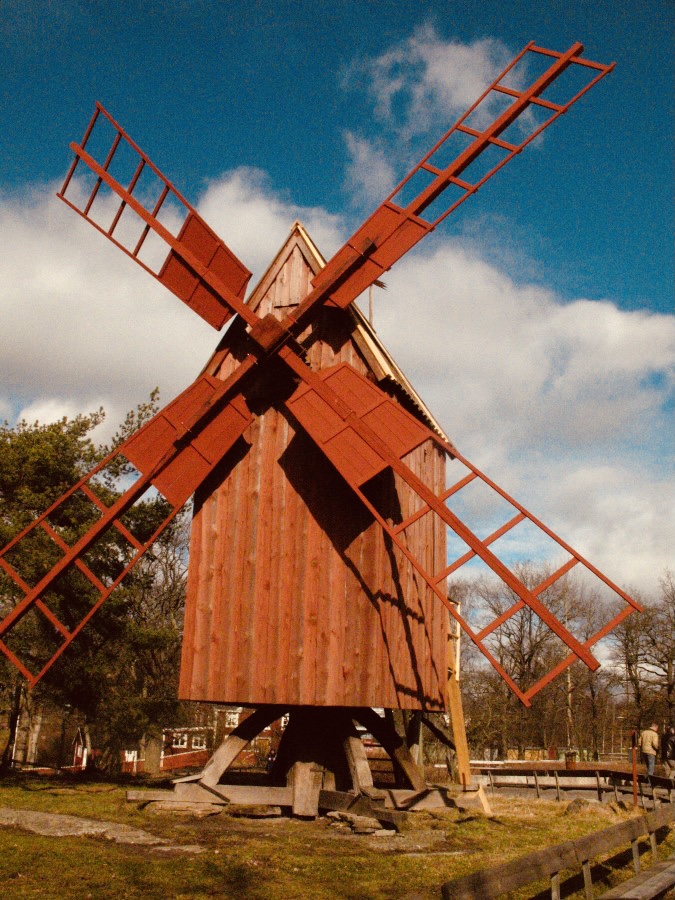
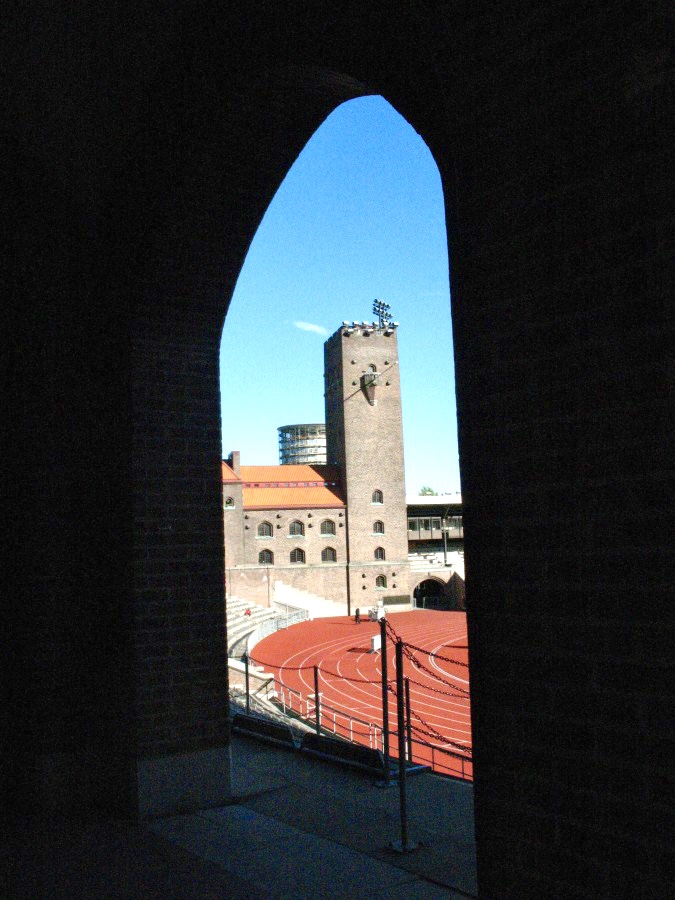

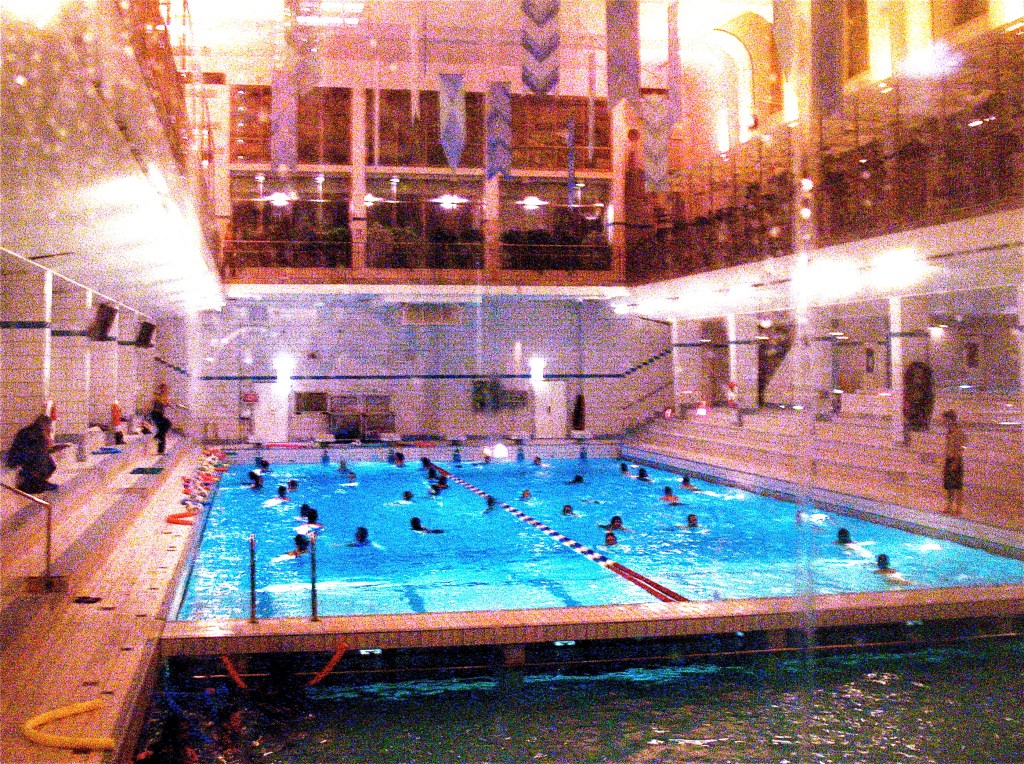
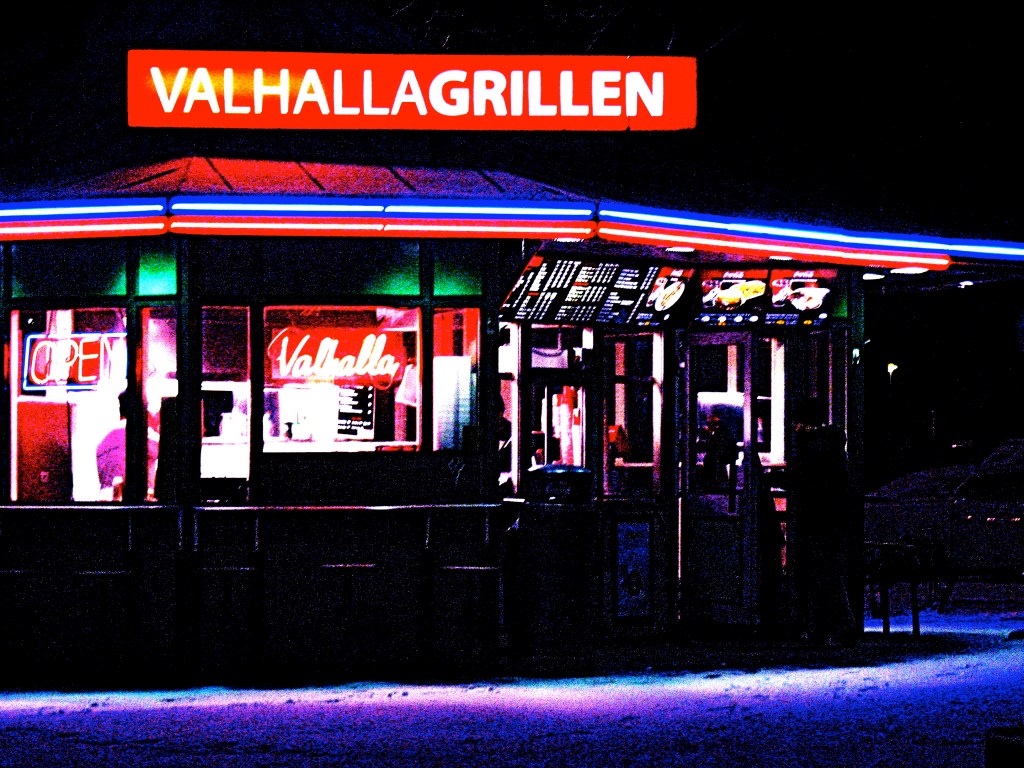
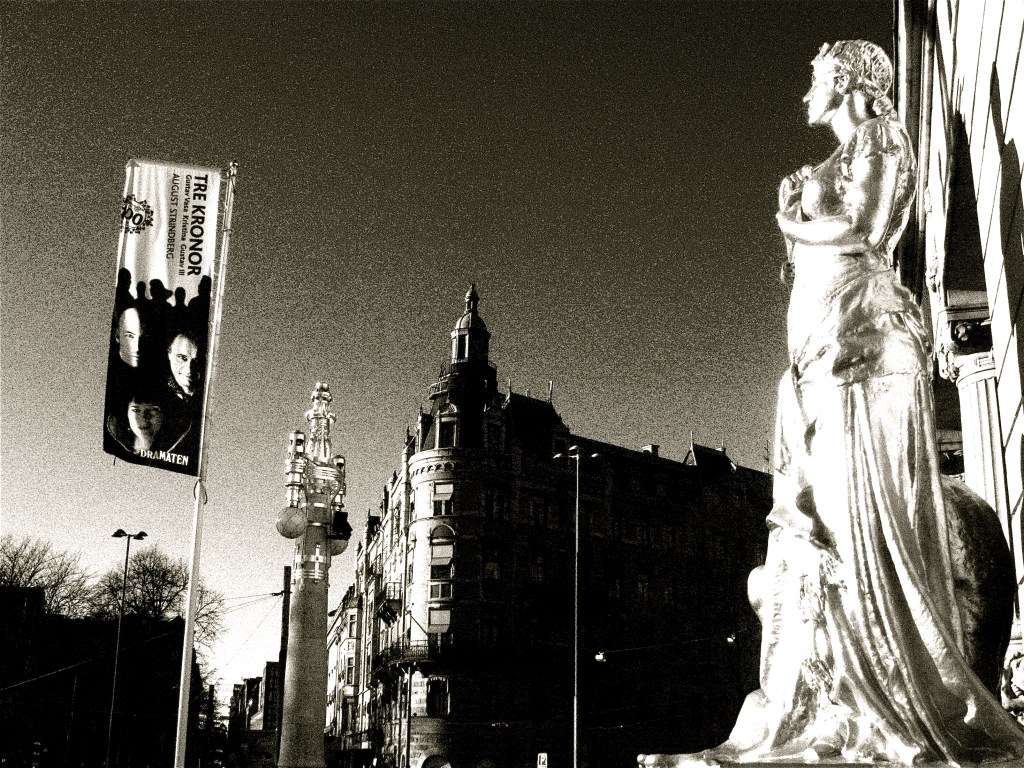

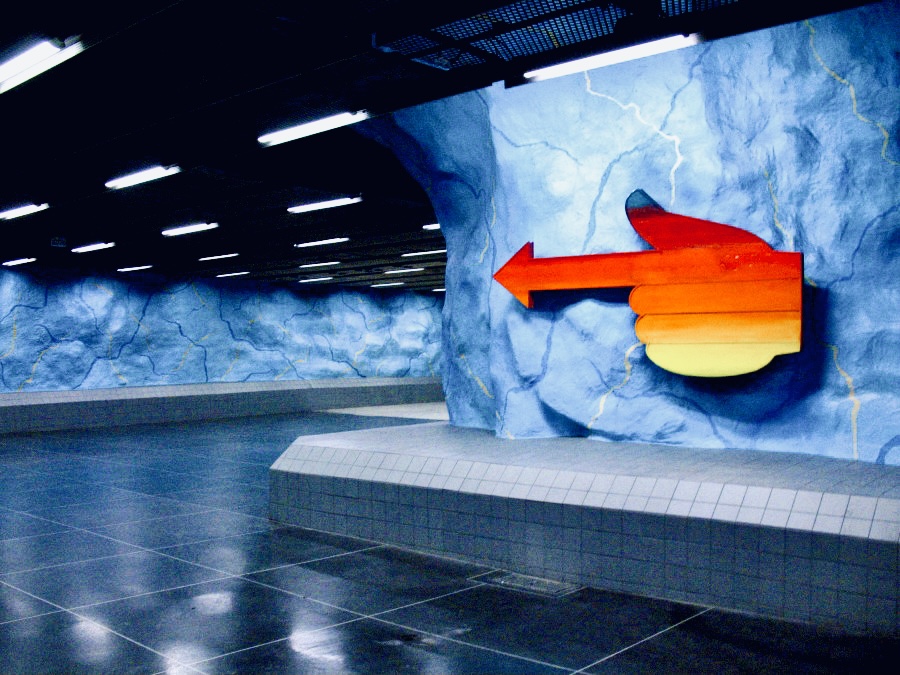
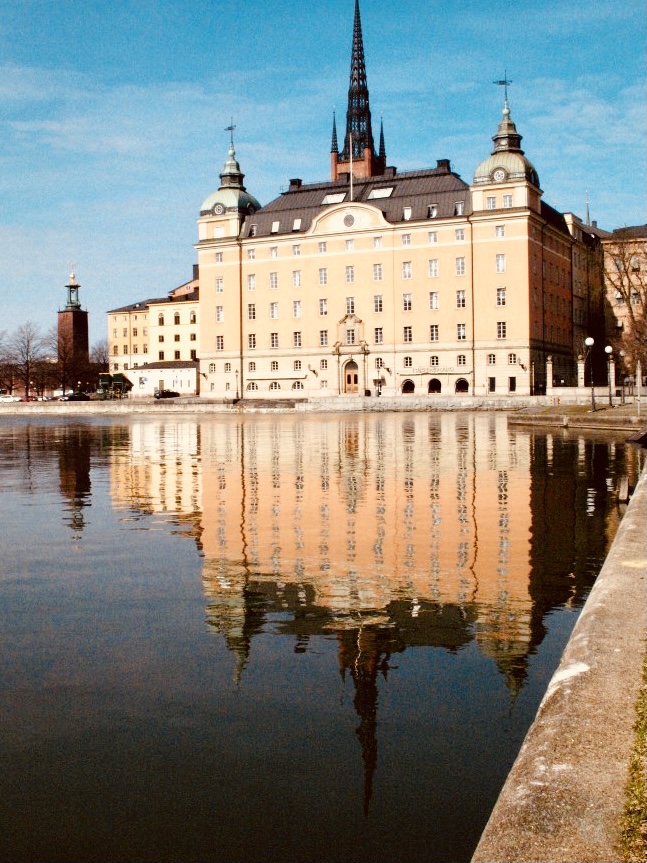
Oh and I also forgot to include this Teutonic looking fellow:

A dear friend came to visit me when I was in Sweden and we took a train to Oslo, just to check out the vibes there. And it was vibes:

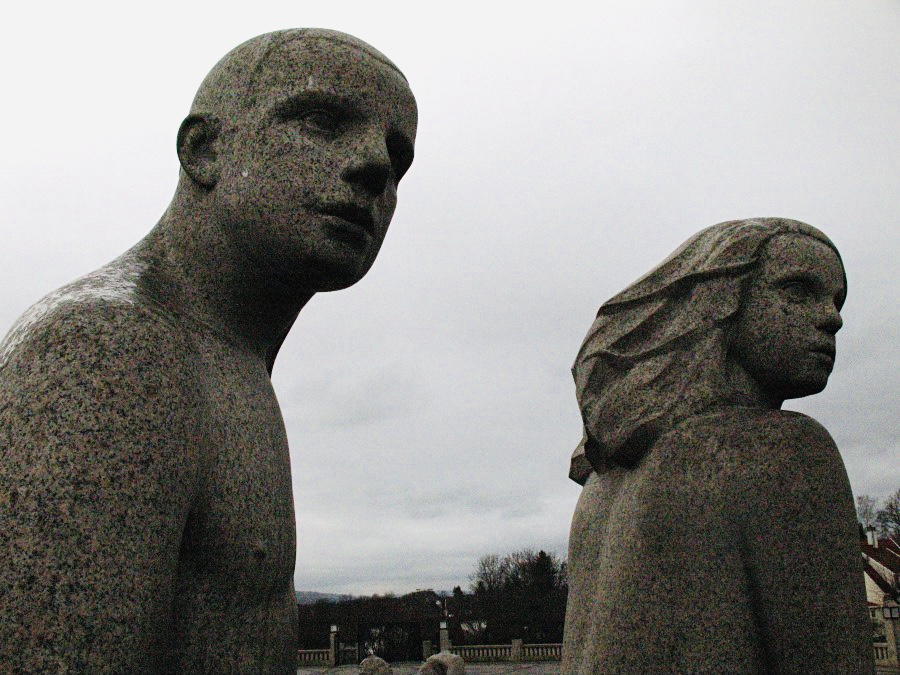


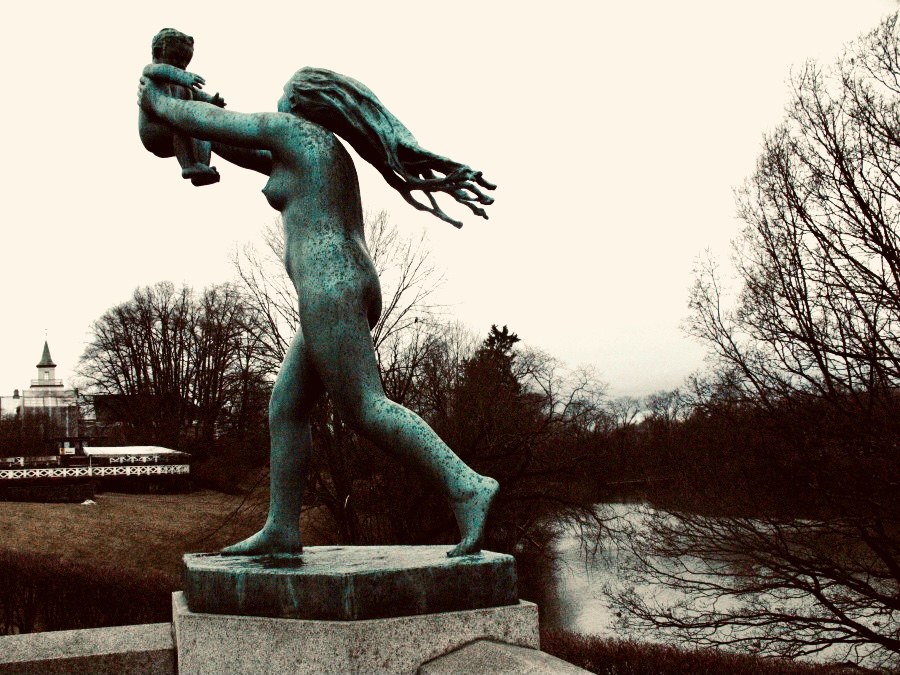

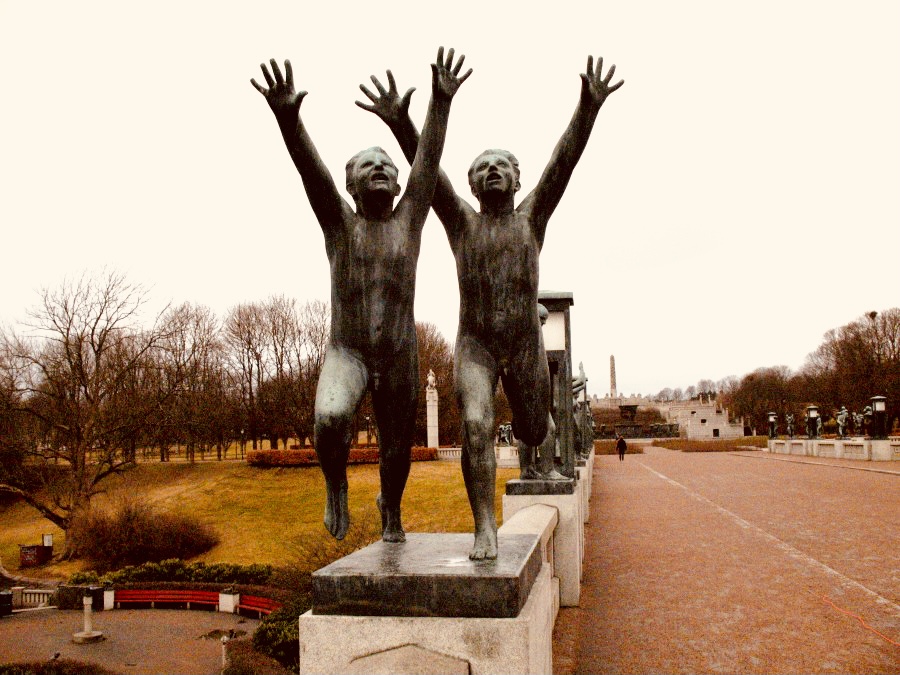

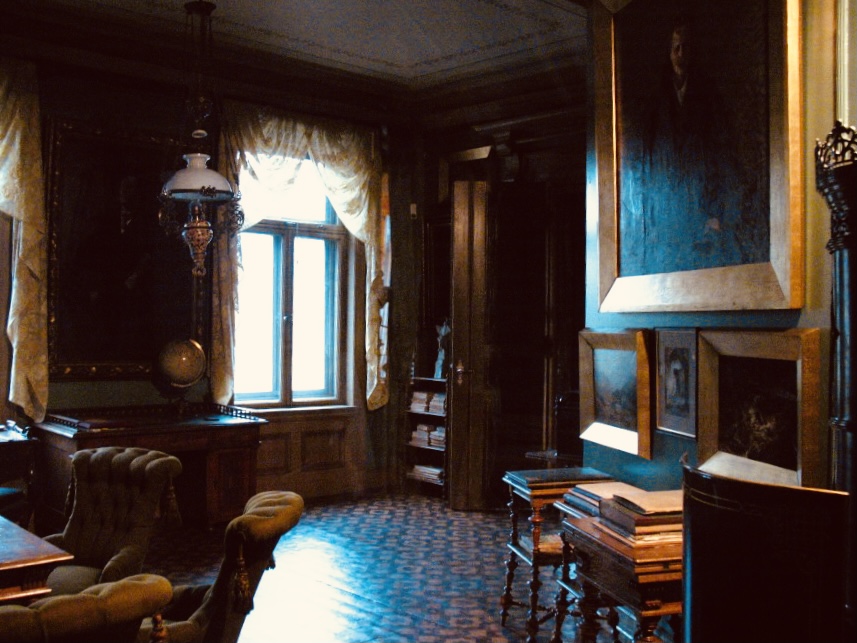
By the time I got back to America, I had already decided to quit journalism but I wasn’t exactly sure how that was going to look, what exactly was next.
I took a job at this journalism sweatshop in New York in a building where people had sewn hats, probably a sweatshop of its own. I think a lot about how I had zero interest in living in New York as an adult. It’s all steel and concrete and coldness. Everyone thinks that New York is the center of the world and yeah, that’s true to a degree but there’s also a huge world around it.
The time in New York was meant as a pass through, not a destination. I didn’t see myself there. I didn’t see building a life for myself there. I didn’t know what the next stretch was going to look like, but I knew what I didn’t want it to look like.
I was tired of reporting about things I didn’t care about. I was also tired of people talking to me in this solid stream of jargon. I don’t want to have a conversation with a Bloomberg terminal. I wanted to talk about normal things. I really hate it when people insist on just a stream of unending jargon.
The weirdest thing about that job was the big deal they made about the fact that I was a photographer. It was just ridiculous. It was brought up all the time, like as if it was some big deal. A human has a hobby. Calm down. I also had this same blog at the time and that was a big deal too for some reason, even though most people never would have been able to find it, it was in a very different format and I didn’t write a whole lot on it, not like now at least. Despite having gone through a hiring process, having already been a journalist for a while and having some accomplishments in the field, my writing ability was called into question, including hearing one day that my writing was more appropriate for a blog than for a real publication. I never really understood why having a hobby was such a problem.
At the time, I thought I didn’t fit the mold that they really wanted. I mean I’ve been called sensitive, artistic, etc. Now I realize how completely wrong and just foolish those people were. “I see a person doing something artistic, so they gotta do an artistic job.” WOW. What a startling insight.
I think how I felt at the time was really reflected in the pictures I took at the time. The colors were dark, the subjects were rough. I remember taking those pictures and thinking they were great but then much later on, seeing how dark and depressing the subject matter really was.
That job ended in March of 2009. I wrote a long time ago on this blog about how that happened, so it’s already been covered. The one thing though that stuck in my mind was how the person in charge there, a person who probably saw herself as being insightful and wise, said that I would be a success at any artistic pursuit. I mean the fact that I took pictures was so bothersome to them to provoke such a reaction. Honestly, it didn’t really matter. The day I walked out of there was the last time I ever did a media job of any kind and I don’t miss it at all.
Here’s a picture I took on the day the job I had ended:

Generally, the pictures I took at that time were dark. Dark in subject matter, dark in processing and dark in tone. By then I had a digital SLR and a smaller mini camera that I took with me to work every day. Not surprisingly, during the time when I was working at what turned out to be my last job in media, I shot a lot of pictures of New York. Now though when I look back on it, they do reflect the disillusionment I was feeling at the time with everything. At least the camera was still there for me:
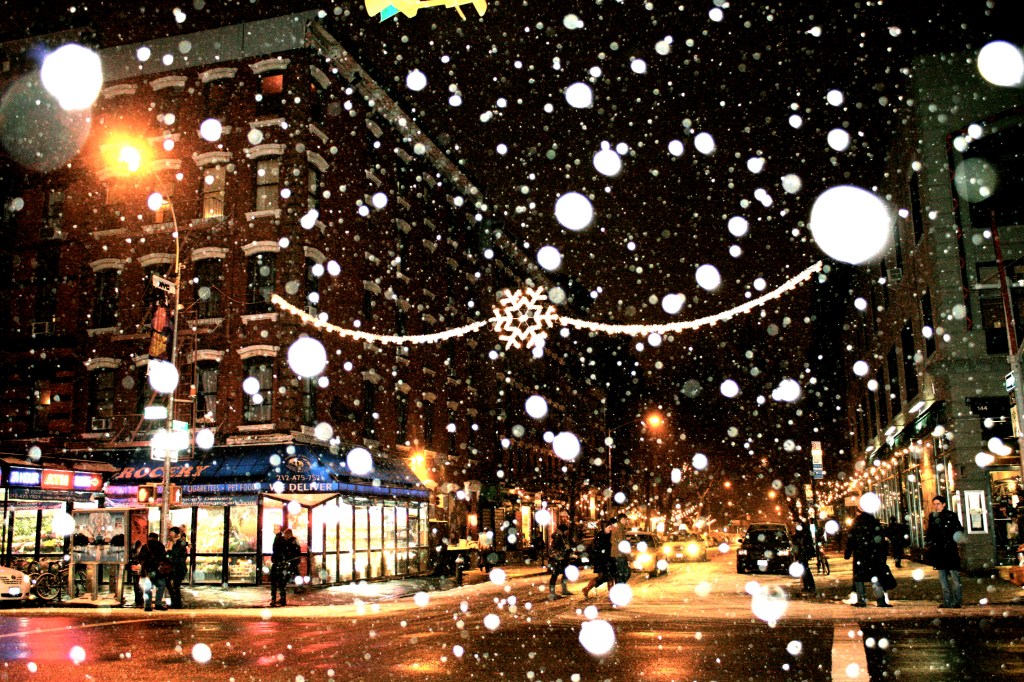
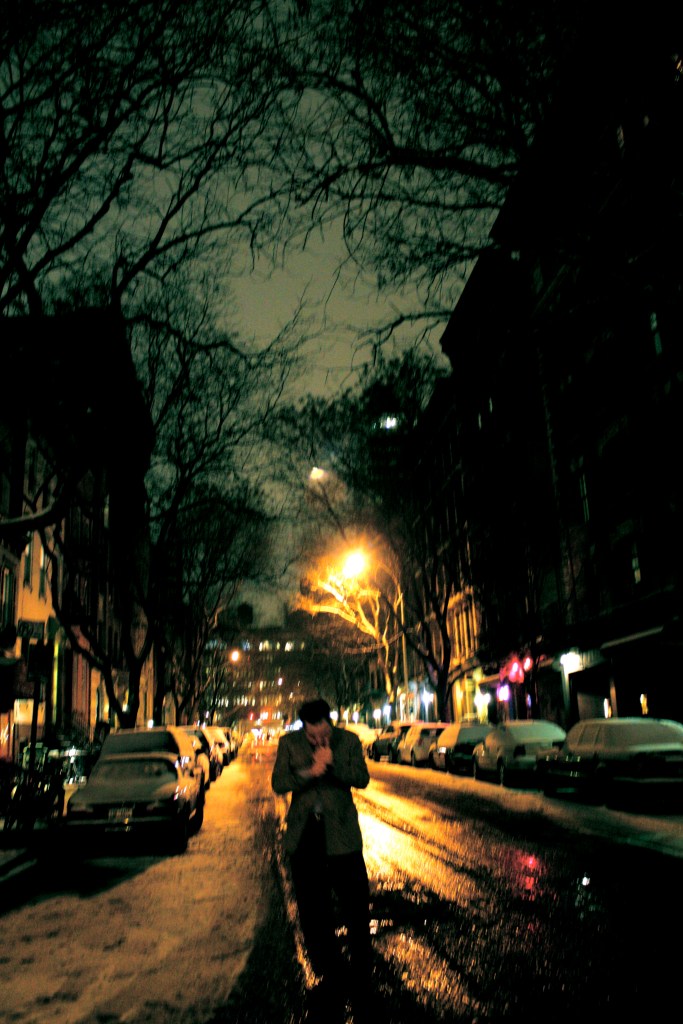

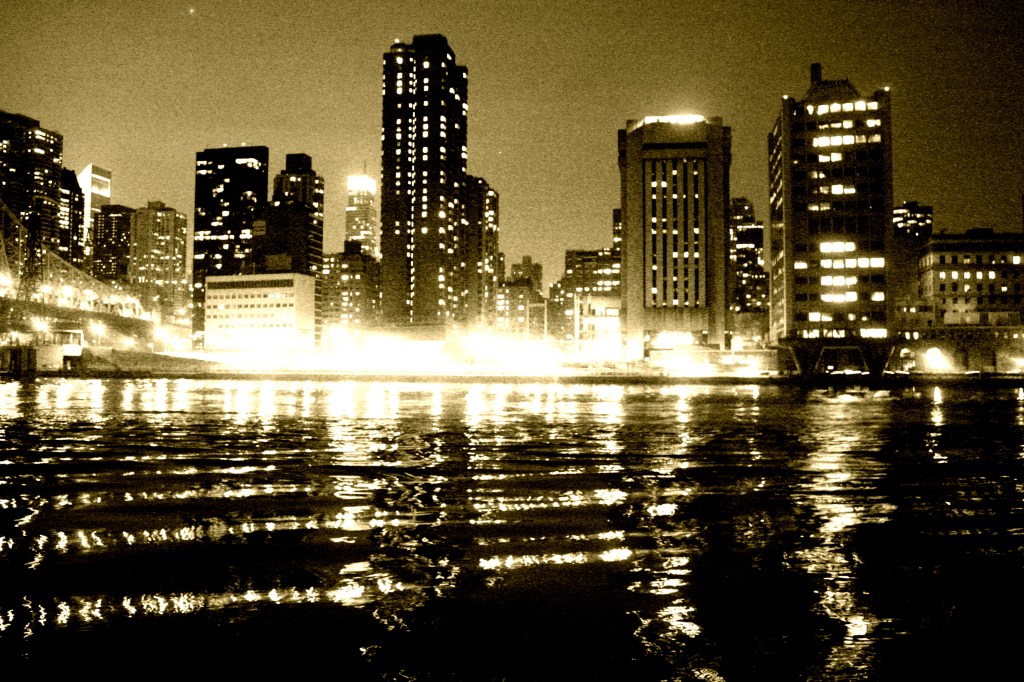


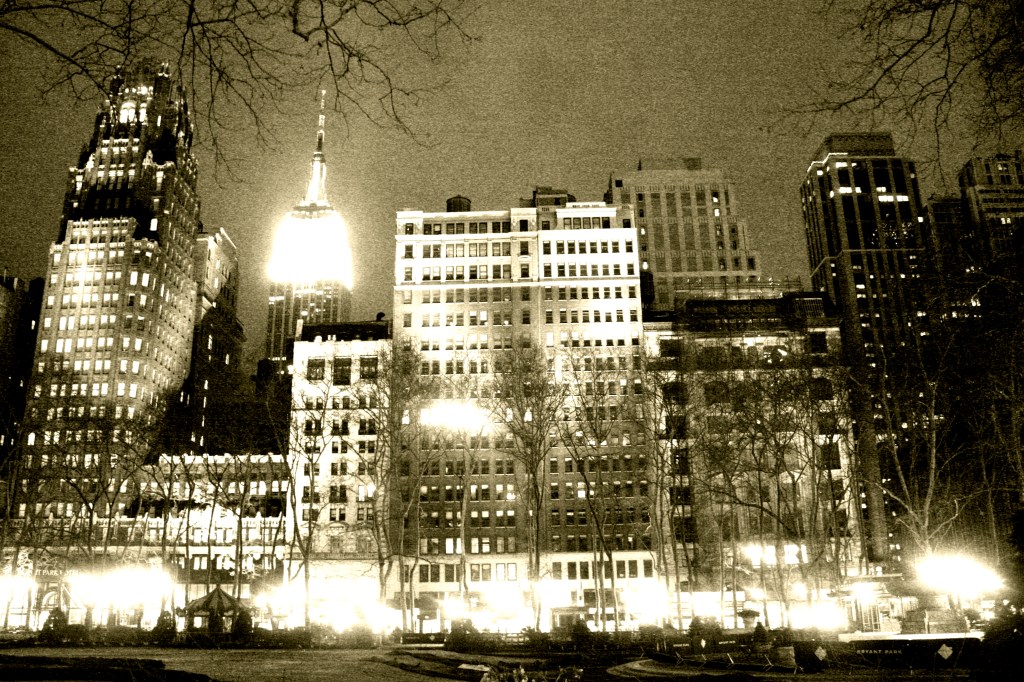

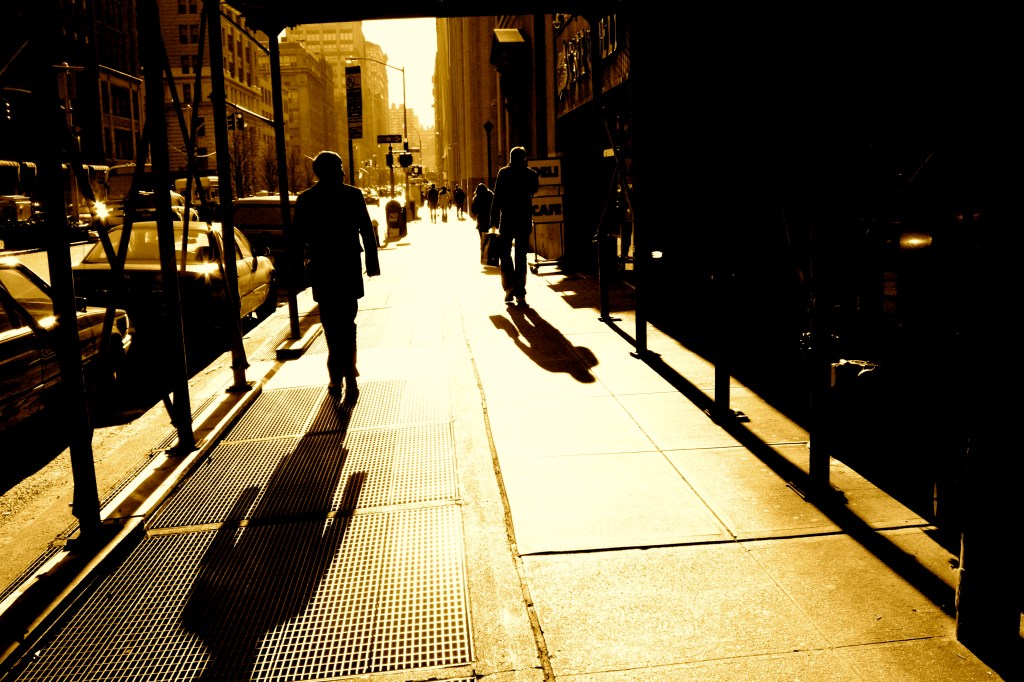
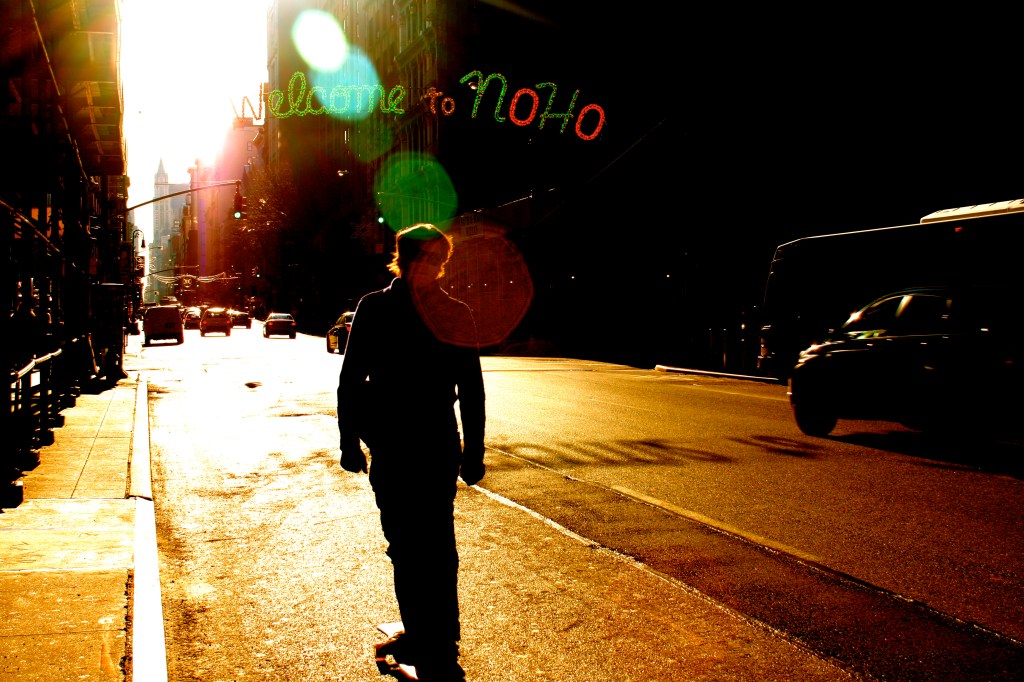
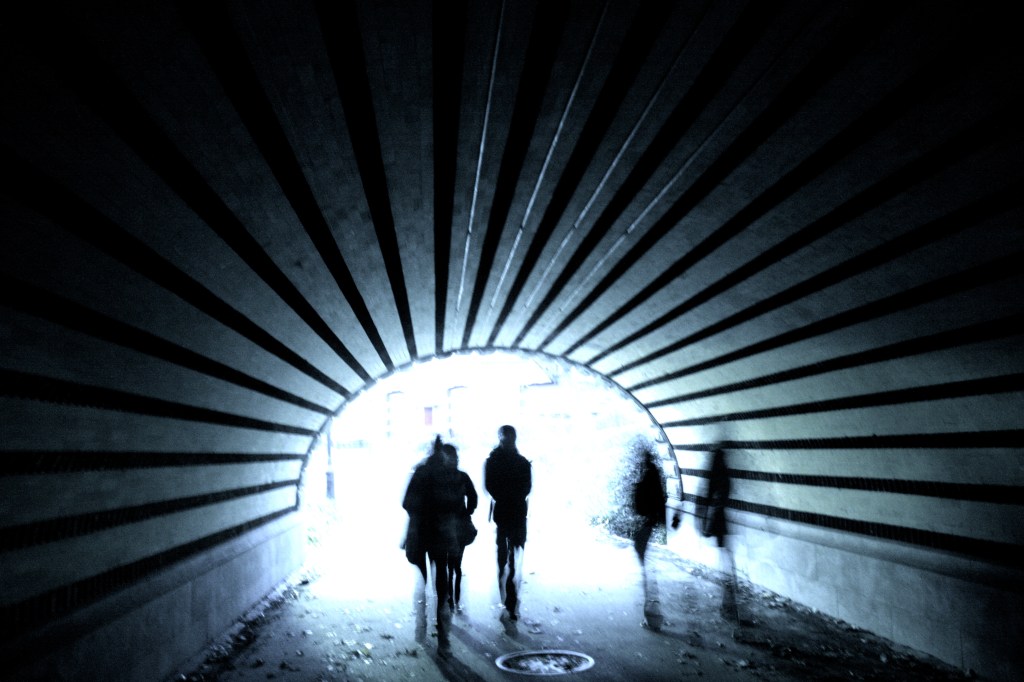


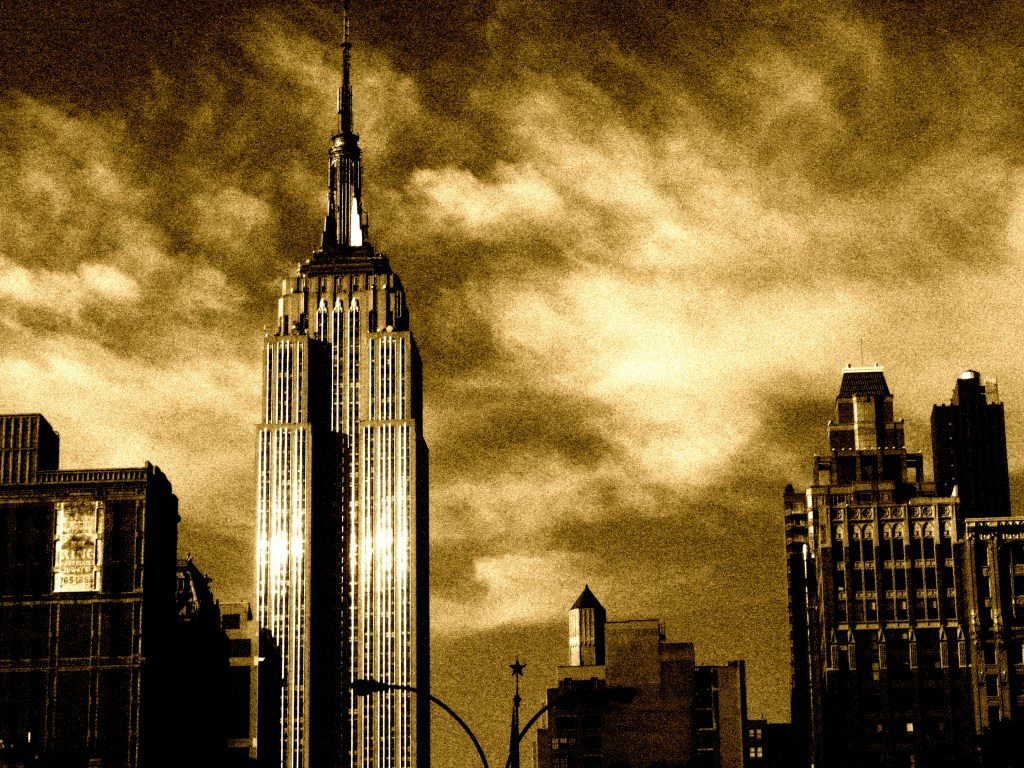
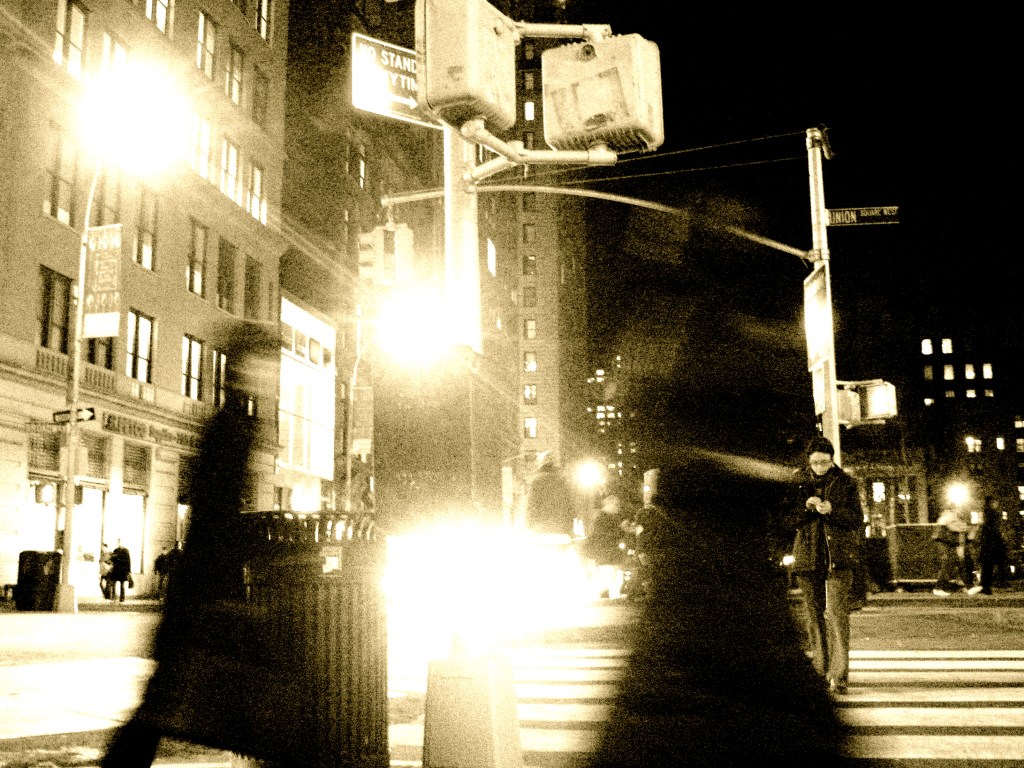
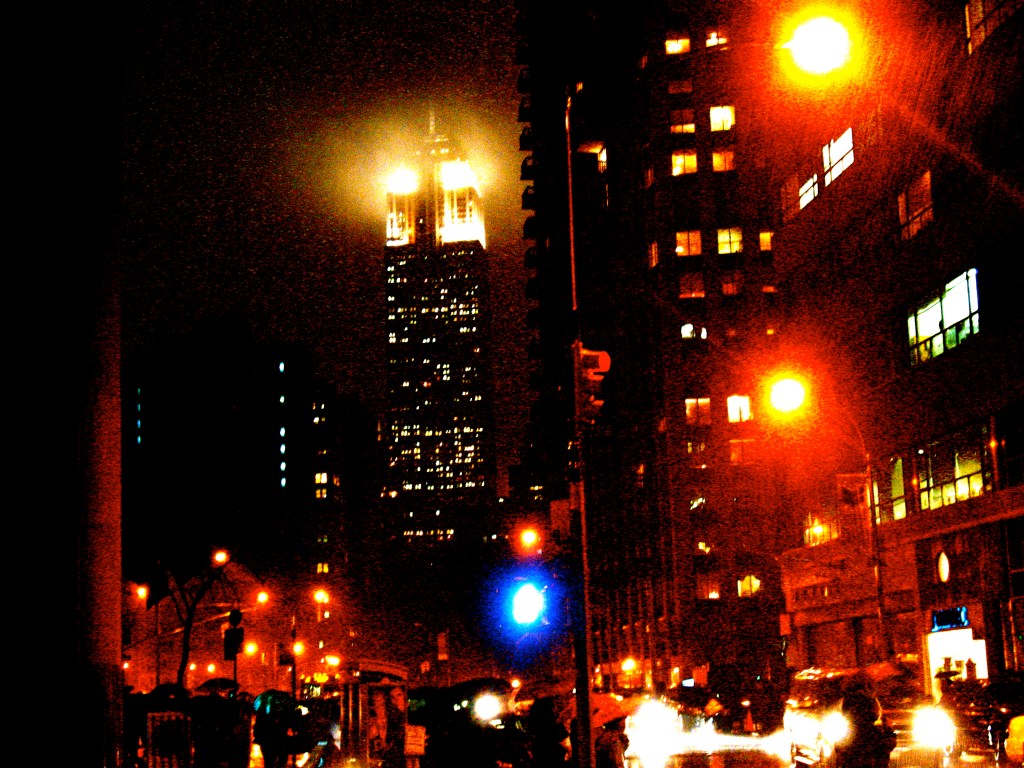

Again, while I was living this, it felt like I was going through hell but now, I cannot reconcile this time in my life with what has come to pass since. I went from being so exhausted from that job that I could barely open an eye on the weekend to getting up at 4am to go skiing only about four years later. That fact alone, that I was in a job that was so psychologically tiring that I couldn’t open an eye on the weekend, made me think that I had to make a change. How was I going to build friendships or a community or anything beyond that if I stayed in an environment like that?
That summer, I took a government sponsored sabbatical. It was the Great Recession and the Obama unemployment was good. I really did not know what was next. I spend the summer getting new pictures into my portfolio after acquiring a Canon Digital SLR. I was off and running with a new camera. Again, I felt like I was drifting badly at that time and I didn’t know why this had happened until much later on. Now I call it my summer of soft serve, Cuban sandwiches and stealing wifi from my neighbor at the time.
I’ve had a few of these wilderness kind of times in my life, where I was wandering and maybe lost but also maybe not lost. I remember the night they announced that Michael Jackson had died and I was down in Times Square for some reason, really late, just wandering around. People were trying to sell tickets to his memorial service, which was super weird, but be that as it may. More often than not, I would sit in my living room, with my computer angled perfectly to get my neighbor’s wifi and I would sit there and edit pictures. I also used to download shows from the iTunes Store. It was messy and weird but I also kind of needed it.
That summer. That summer that ended up changing everything. And yes, that is Victoria Beckham:

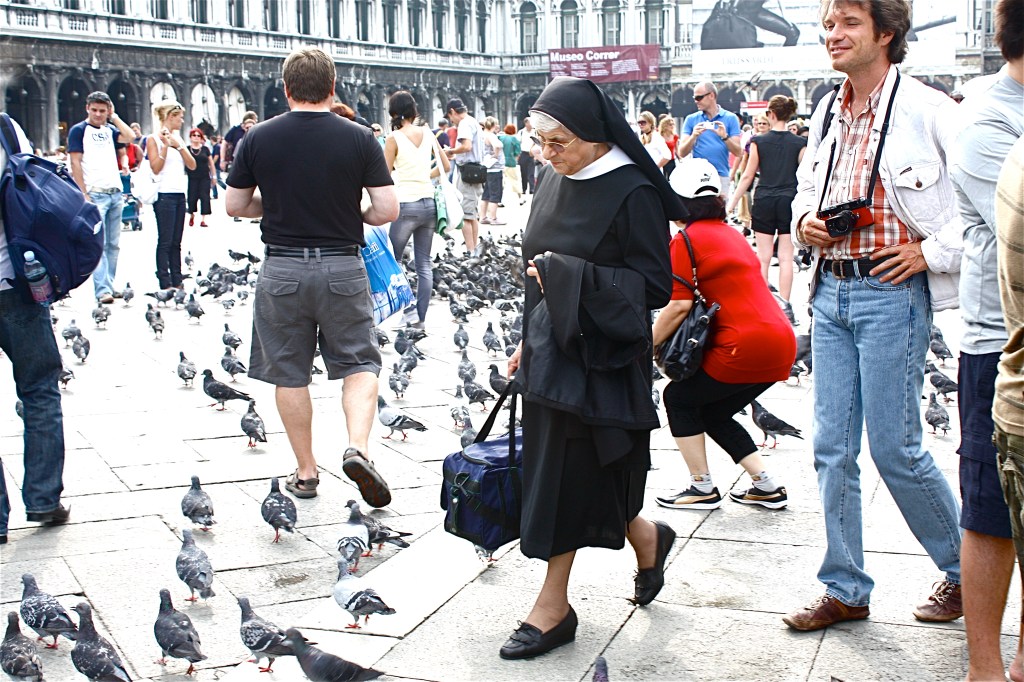





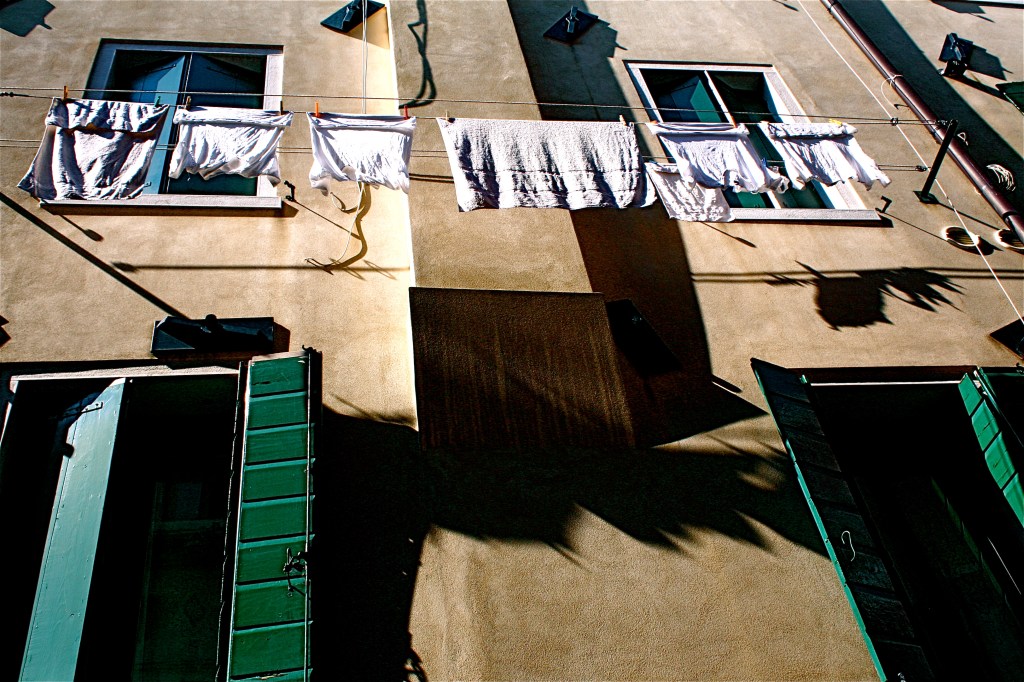
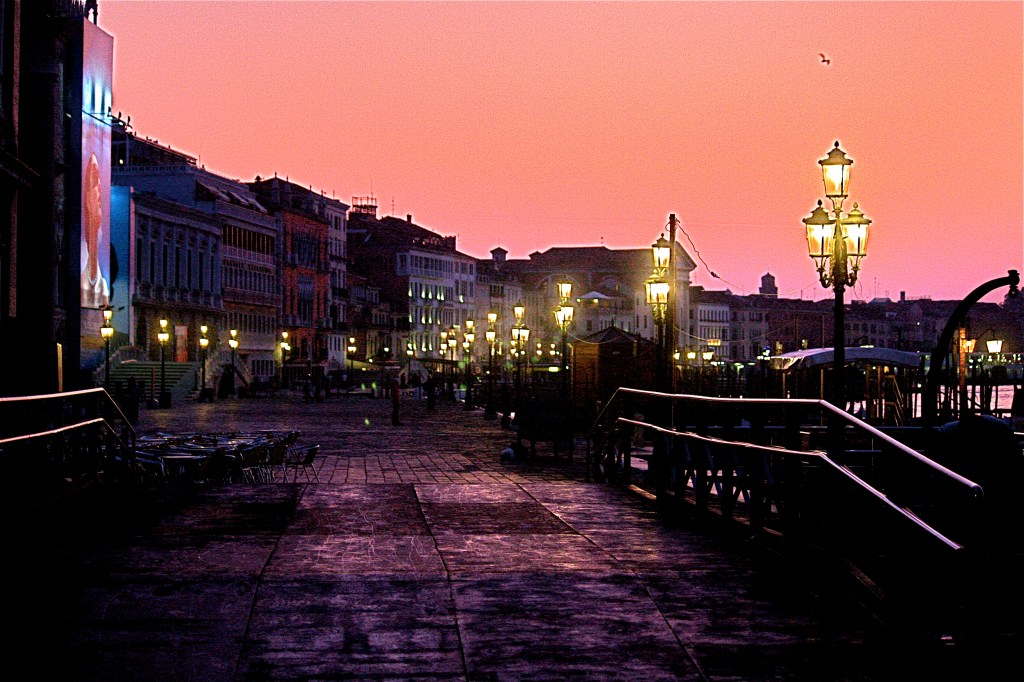




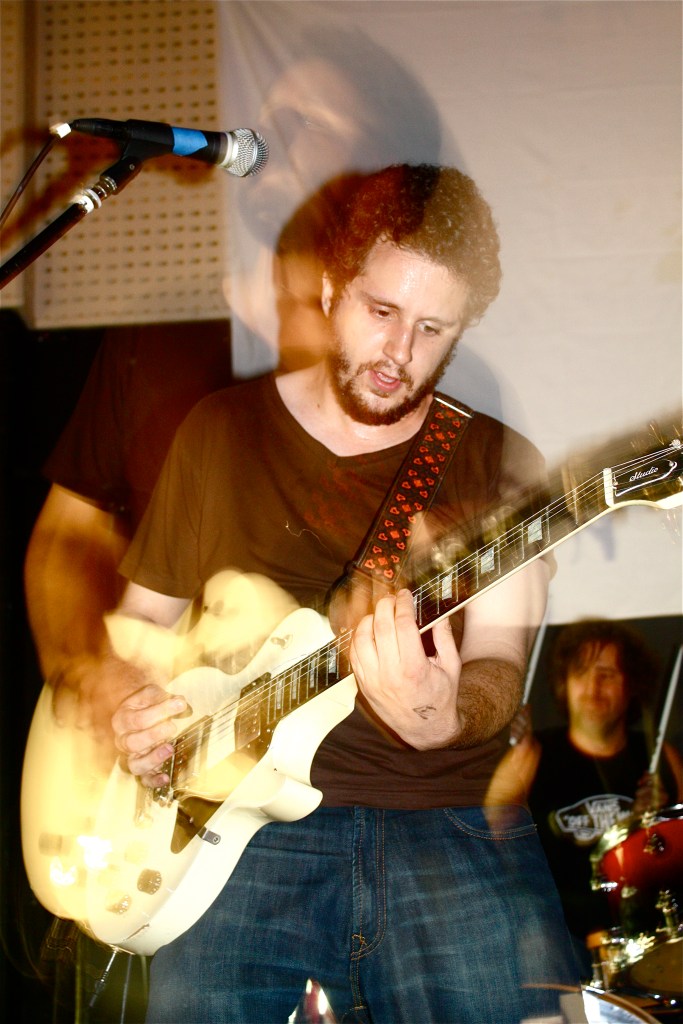
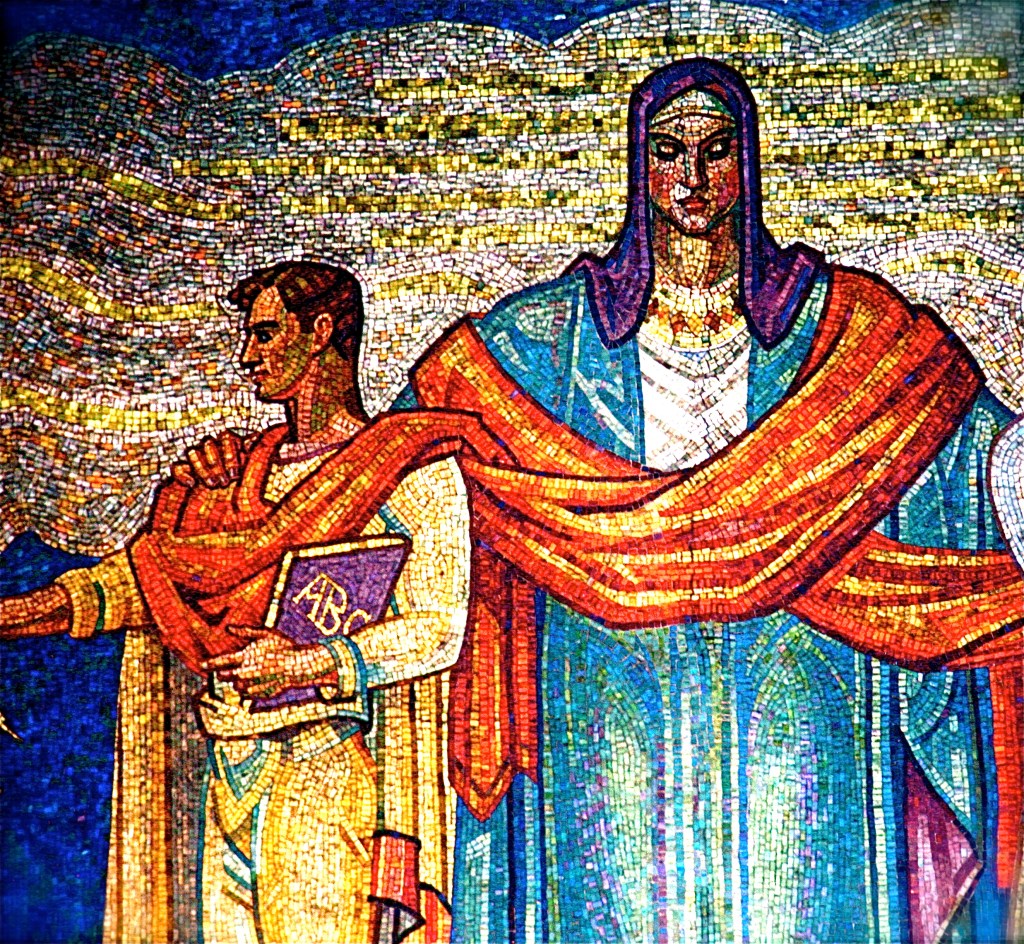

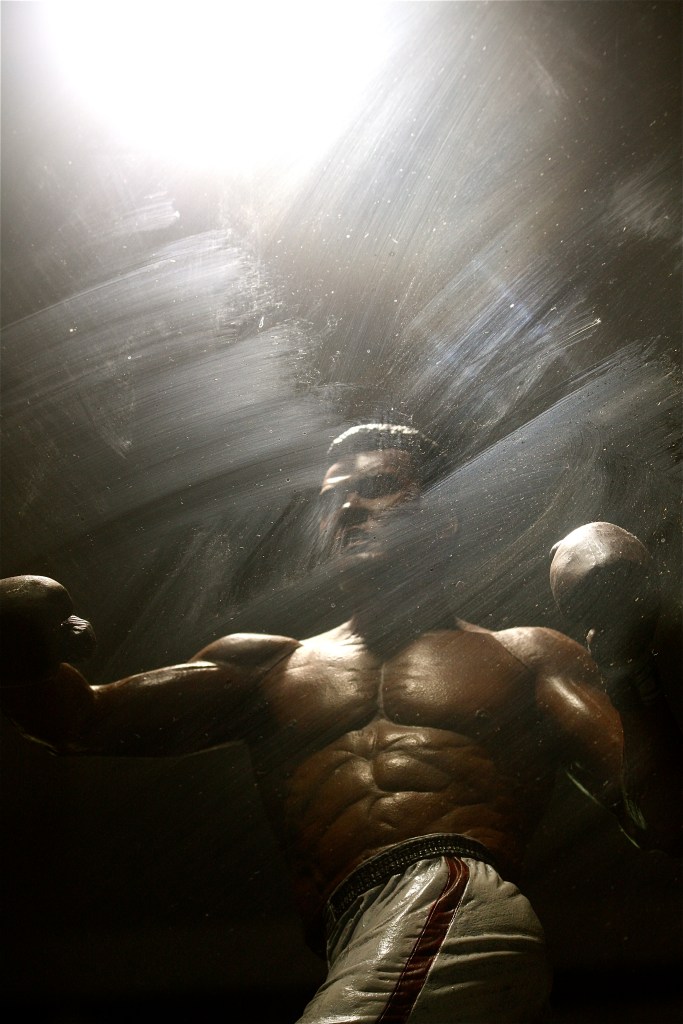




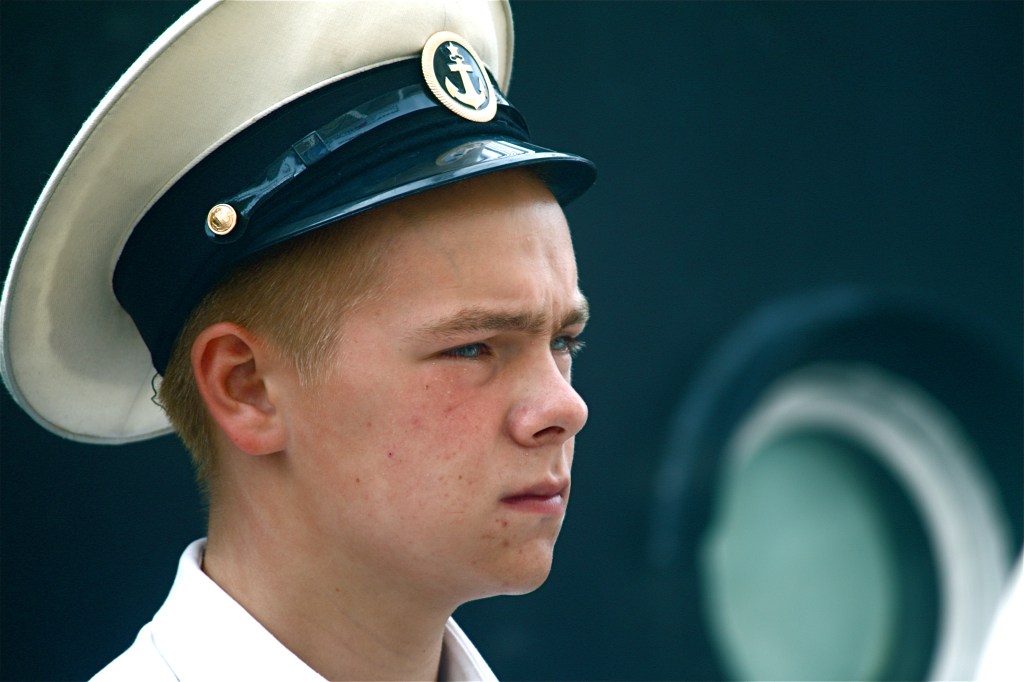

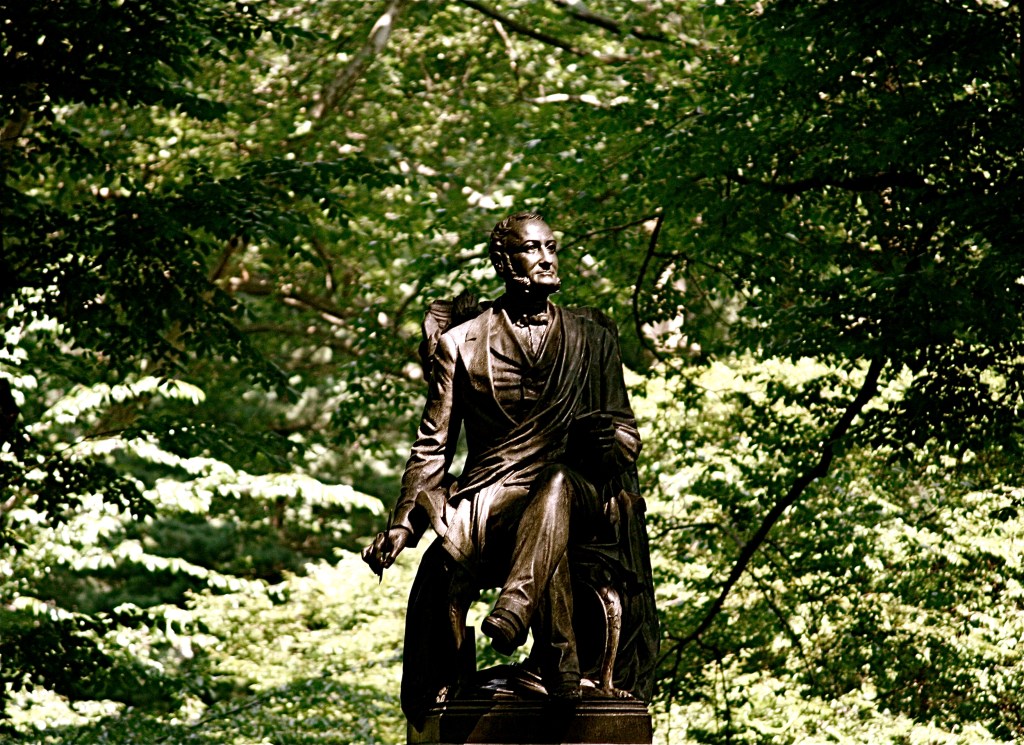

Most importantly though, I was back taking pictures again, come what may. That was a good feeling. Pictures and come what may. Were people going to see or like what I had photographed? Didn’t matter. All that mattered was that I was taking pictures again and that I was happy doing it.
That fall, we took a family vacation to Italy, featured in the pictures above. Then I had to decide what I was going to do. I was 32 years old and as I had felt since I was 18 years old, I was hopelessly over the hill. 32. It was over. I would make an attempt. It probably wasn’t going to work but I was going to try.
Every time I walk over to 59 Temple place in Boston, I remember that walk over to Boston Academy of English to check out this class for this little certificate I had to get called TEFL, Teaching English as a Foreign Language. I didn’t feel hopeless. I felt nothing. I had no idea what was going to happen and that was good. For the first time in my life, I had absolutely no expectations.
I remember sitting in the lobby of the school. I already knew the place was a total mess, but it was glorious mess. It was like a disorganized restaurant with sarcastic waitstaff, where you get the best burger you have ever eaten in your life. The walls in the school were these outdated primary colors. It was dusty and completely disorganized. But I had said to myself after all of this tumult, all of this instability, that if I found a place I liked, I would just stay there. It was time to settle down. It was time to put roots down somewhere. And somehow, this seemed like the right place.
What’s also kind of funny about all of this was that the entry to the Orange Line is right below where the school was and specifically to go to Forest Hills. Also, one of my classmates was from Boston and was always talking about an area called “Jamaica Plain” or “JP.” I had no idea where this even was and no orientation of Boston. Fast forward almost 20 years and I now live in Jamaica Plain. I think about this whenever I go by that area.
I really did not know what I was getting myself into. But my classmates in the TEFL class were really nice and very different from the people I had known before. The school was a disaster, but it was also a community. I had spent so many years in these offices where people barely acknowledged Thanksgiving or Halloween and it was just another day in the office. Maybe people dressed up but more often than not, it was a date on the calendar and nothing more. Suddenly, people celebrated this and it was really fun to be around for that.
For me, working in an office was so dry, so profoundly boring that when I got to this place where I didn’t need to do that anymore, it was like freedom. Office life is so monotonous. It’s a nice day. To the office with you!!!! It’s a holiday. Well, too bad. You are going to be staring at a screen all day. I remember when I worked in that media job in New York, that I would stare at a screen all day and then stare at a different screen when I got home. Teaching was wild from the beginning, but it felt like I did something all day. That felt really good.
Was I a natural at teaching?? Absolutely not. Anyone who knows me or has met me in the past decade and a half will be surprised to read this, but I don’t actually consider myself to be a people person. I’m an extroverted introvert. I get energized from being around people, but I really need my personal time. I need my creativity time, my time to learn new things and to just reset myself. Teaching really strengthened my people skills and that was something I really had to grow into.
I’m also one of these people for whom things that are really difficult for other people, those things are easy for me, but the things that come really easily to other people can be nearly impossible for me to understand. Don’t get me started on anything that involves lefts or rights. I also get really laser focused on things I like to do and I can’t really understand why people don’t do this or why they struggle to understand things. I don’t think I am a natural teacher. I think it was something I really had to grow into but that process of growing into becoming a teacher actually showed me how to be a good teacher. I saw my own progress into the job. This is really starting to sound like a term paper or some kind of weird reflection assignment that an undergraduate would have to write. Oh well.
I wasn’t really sure what was going to happen in the TEFL class. All knew is that I was happy going there every day. I loved my classmates and the things we were learning.
Then we had the day when we actually stepped into the classroom for the first time. What was that even going to be? I had no idea, but as soon as I stood up in front of everyone, I knew I was in the right place. I knew that this was what I was meant to do. I could be my own strange self in front of these people and that I could just be myself and people liked that. I could be funny in front of these people. All the things that came after, it was all filled in later. I knew I wanted to be there and everything else would just fall into line.
In a way, I felt like I was one of those people who has a ton of higher education who quits to open a bakery. I always joke that the Boston trajectory, real, is from Harvard to working at Bain & Co or one of the other horsemen of the apocalypse and then you know, opening a bakery. This is real. Look it up. My trajectory was Washington journalism to international relations graduate school to bonkers ESL school where you had to provide your own copier paper. That trajectory. The later years, that I spent working in that school, for a long time, I felt like were just a situation comedy where this straight laced person steps into this goofy environment where everything is upside down, where the patients are running the asylum and goes — this is home. You are home now.
Anyway, we covered a lot of ground here. Sit down and process your emotions after all of this. Part 2 is in the hopper. I promise. We covered a lot of ground. And in part 2, it really gets interesting. And good. And at times terrible. But also good.
